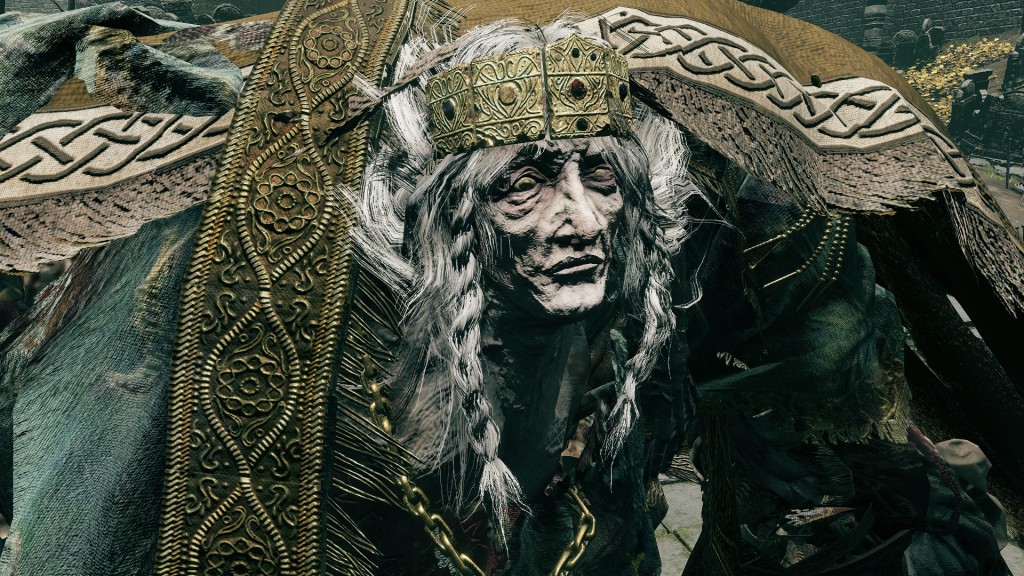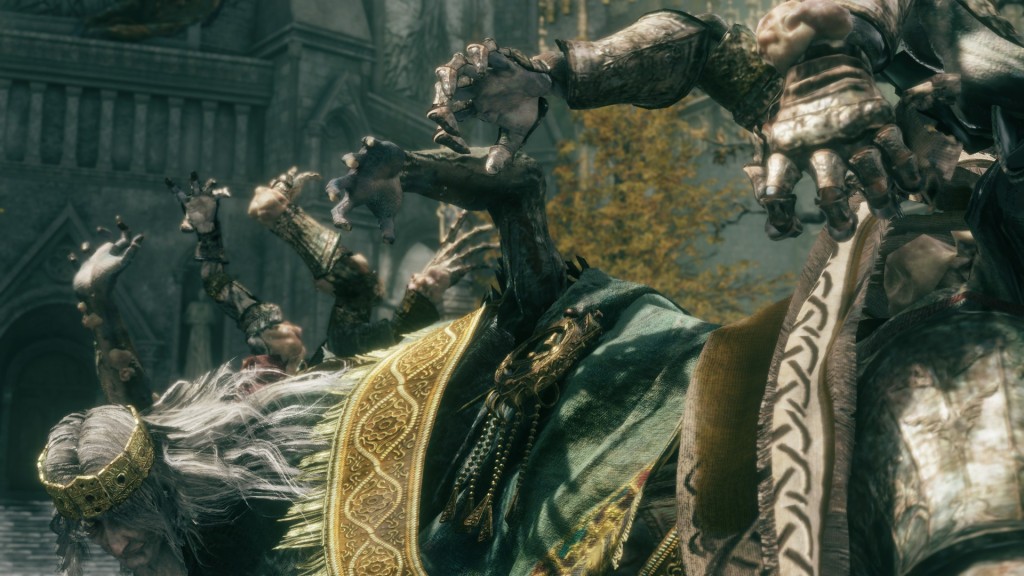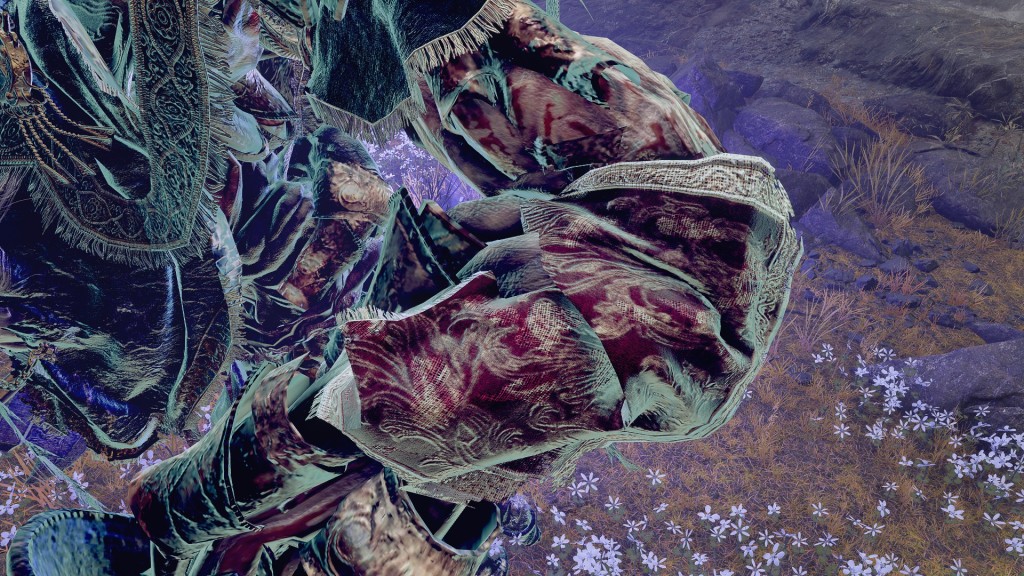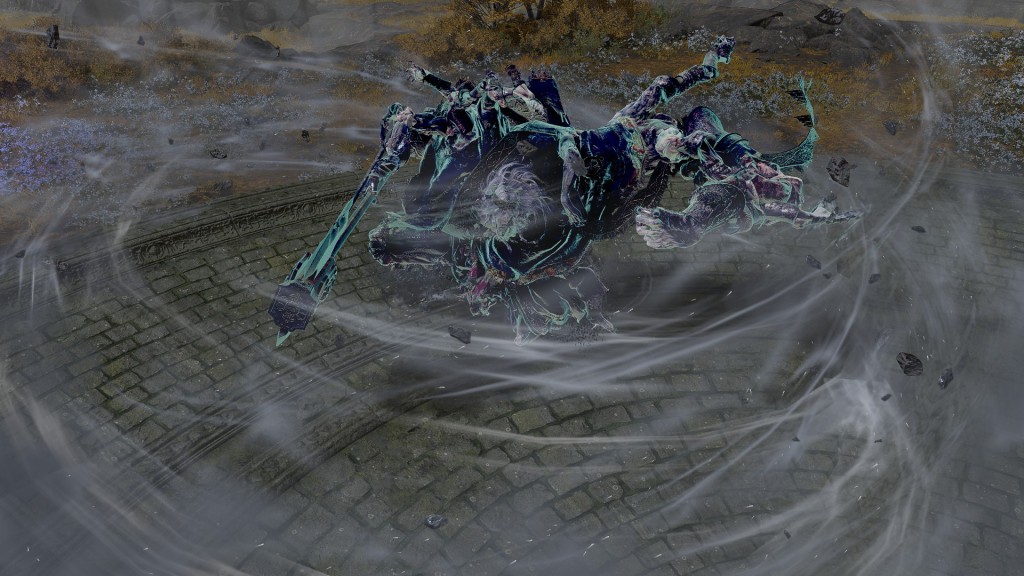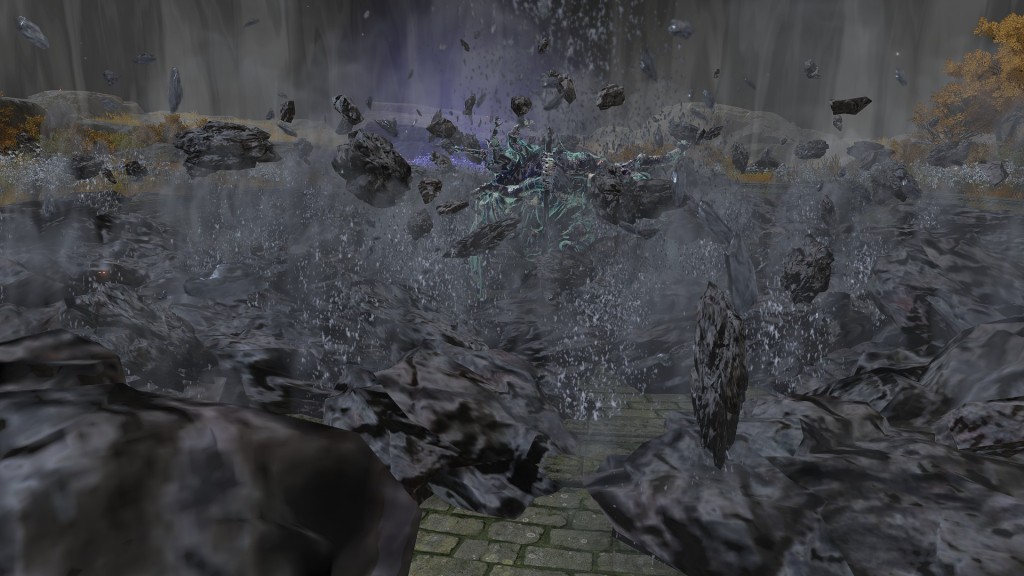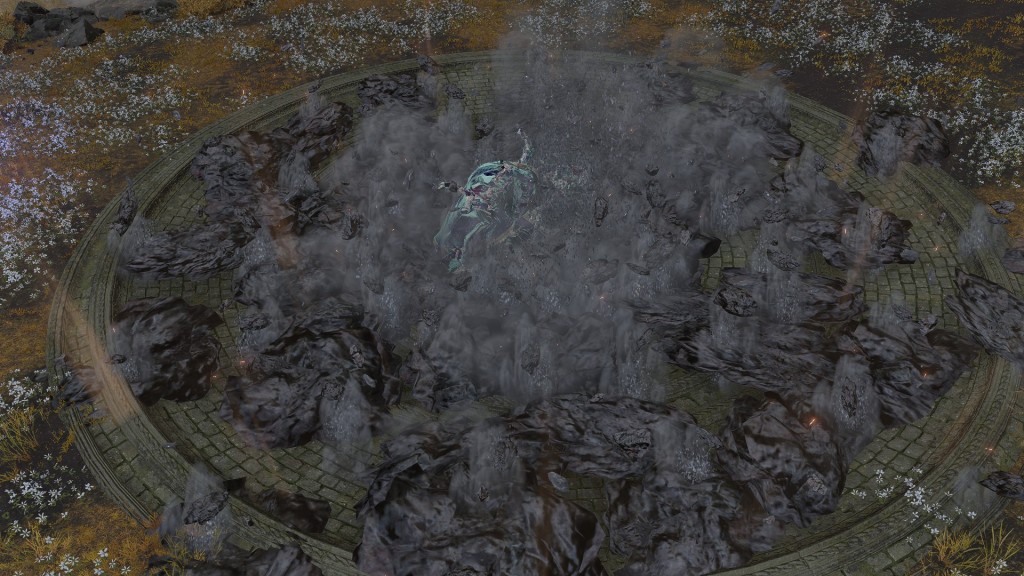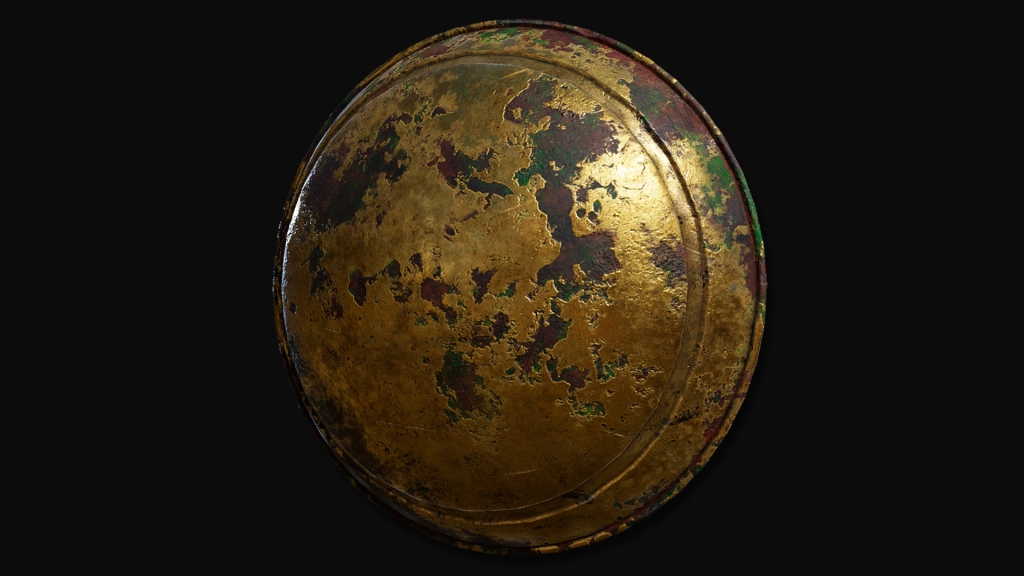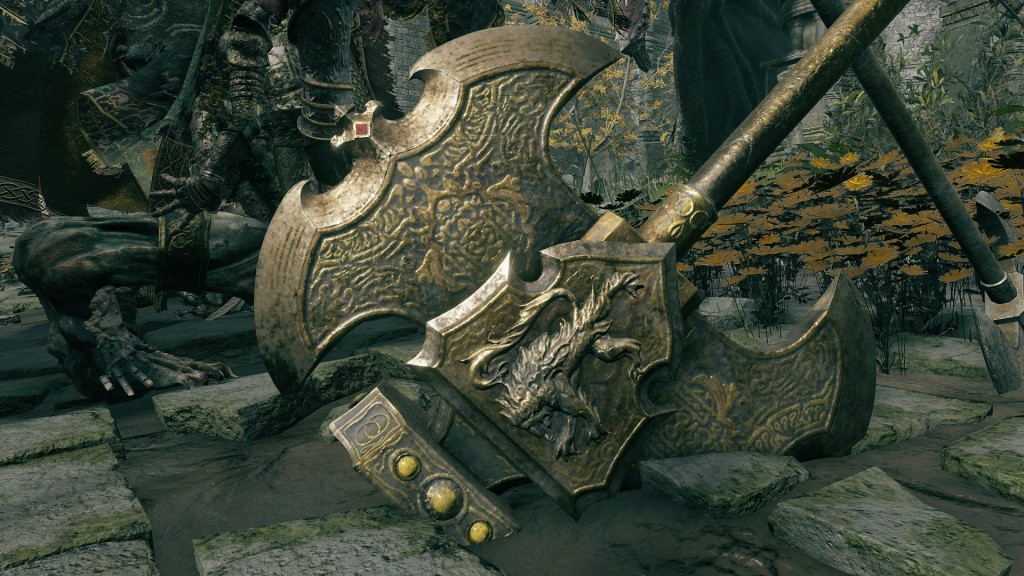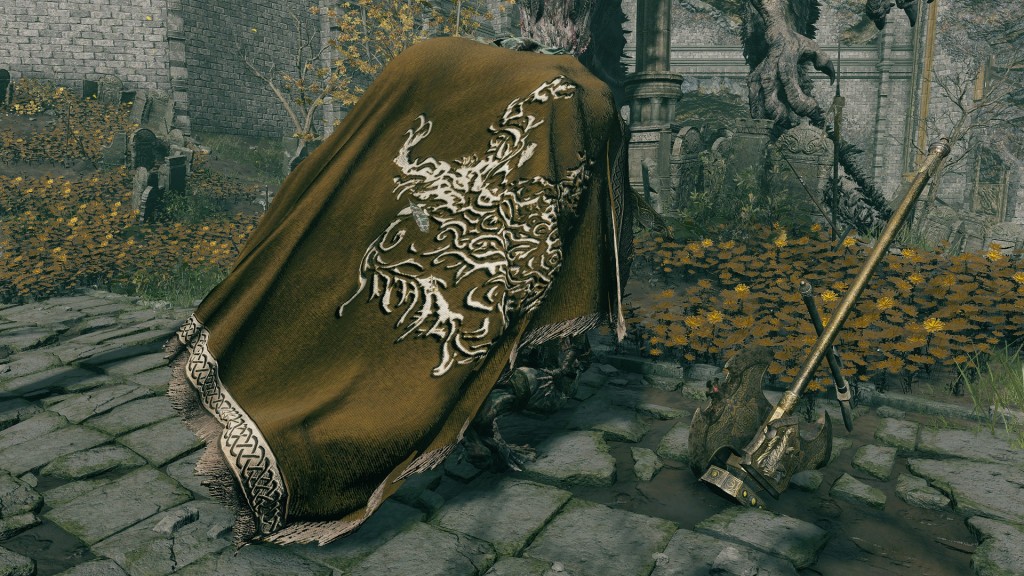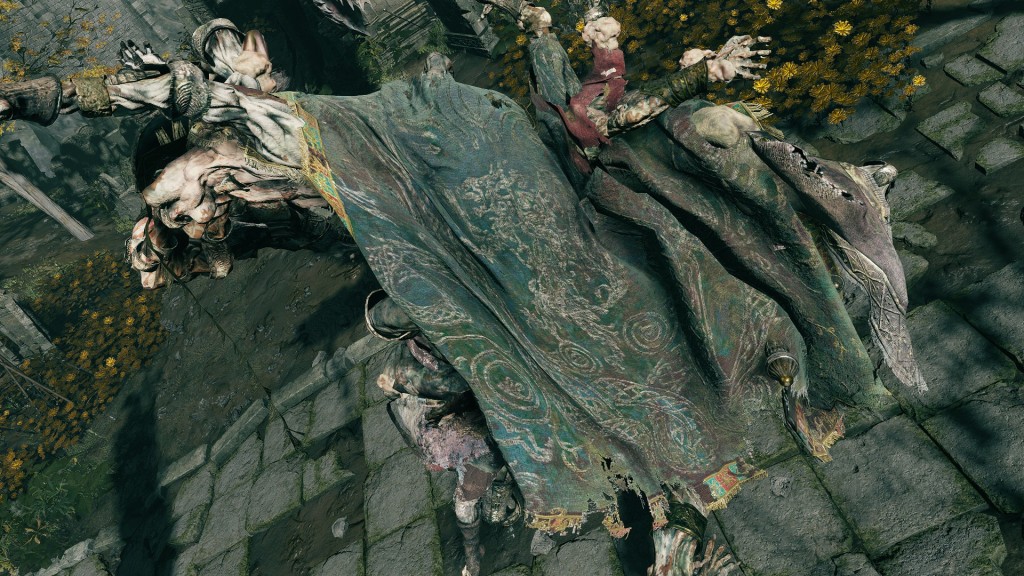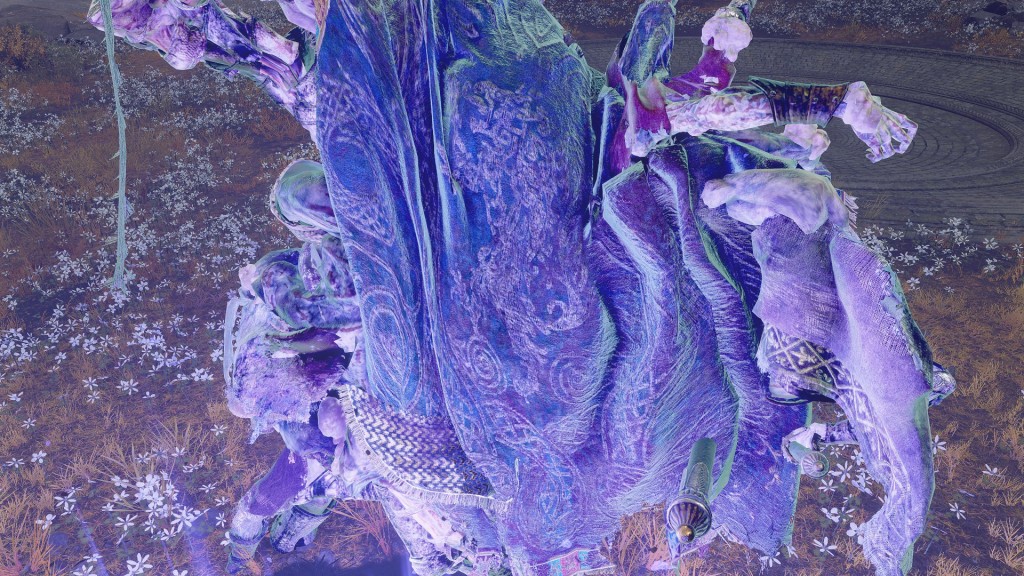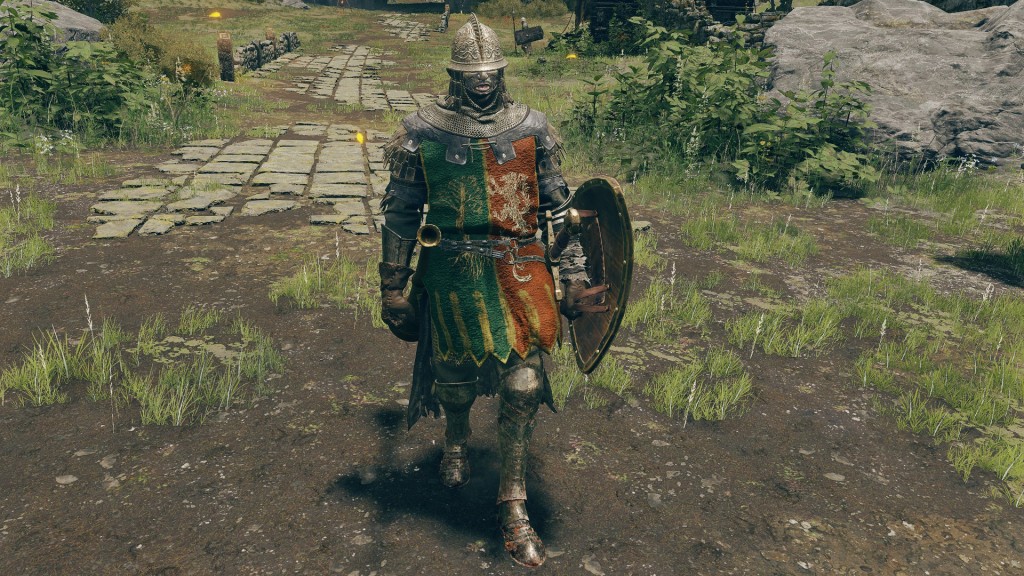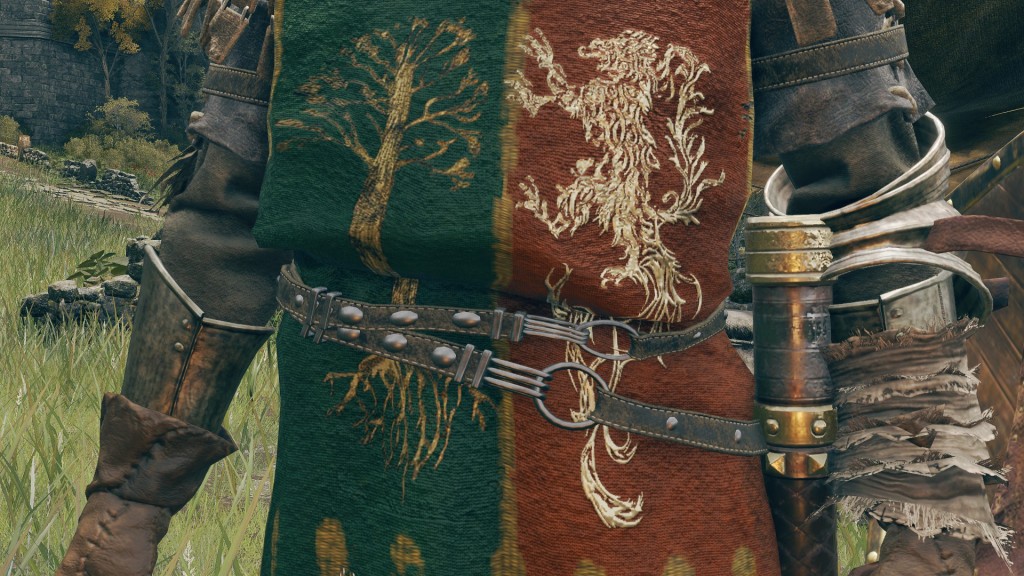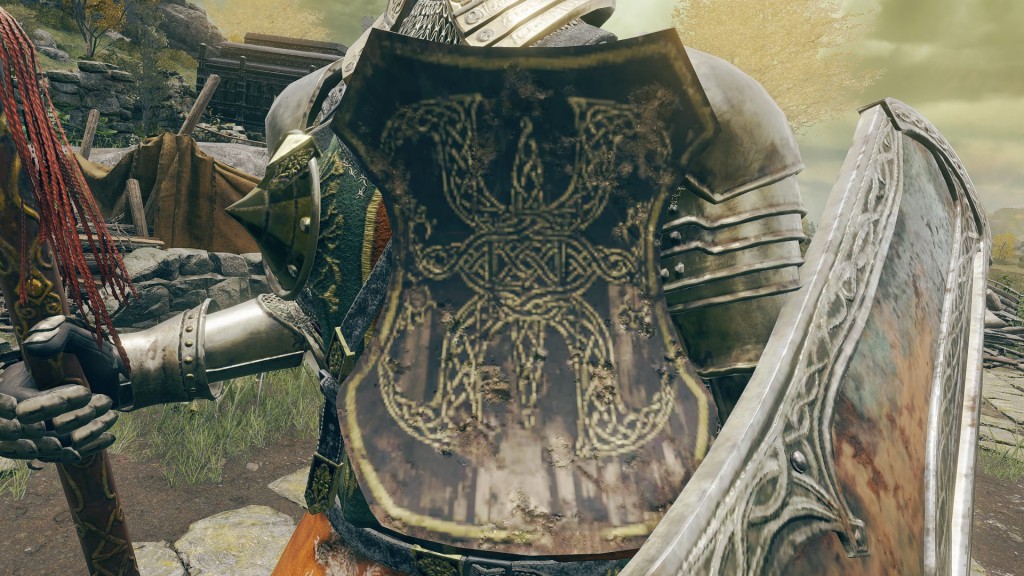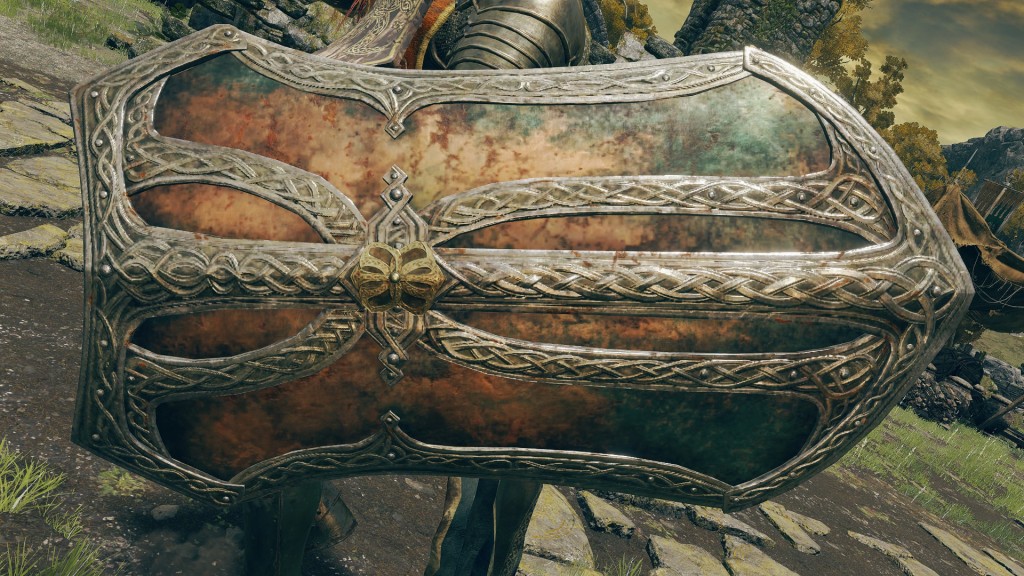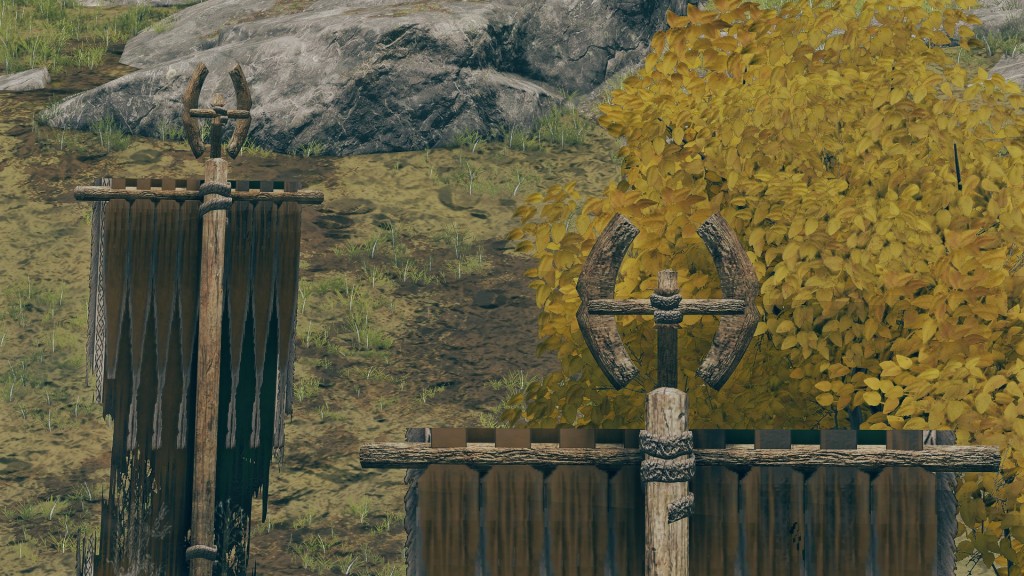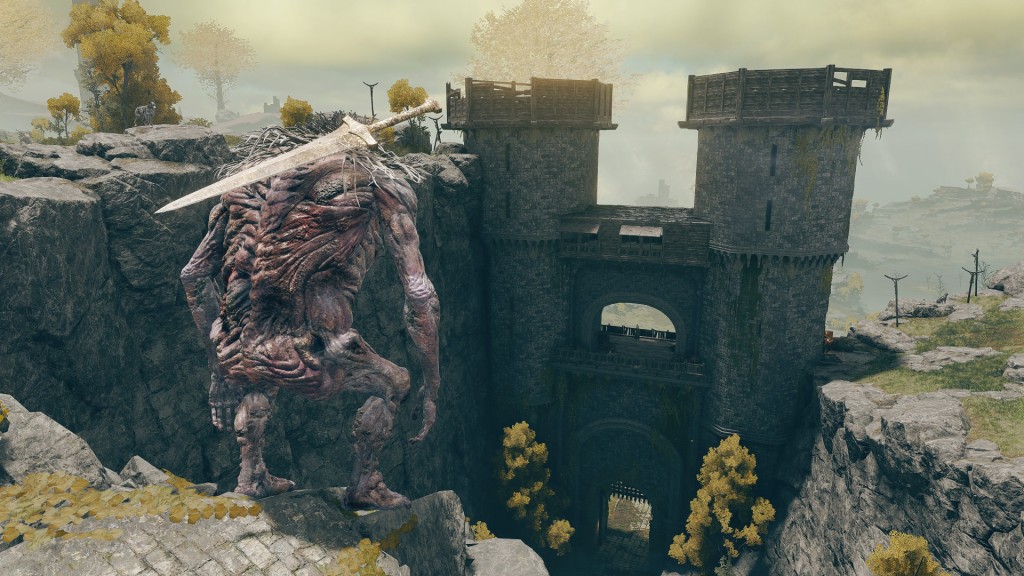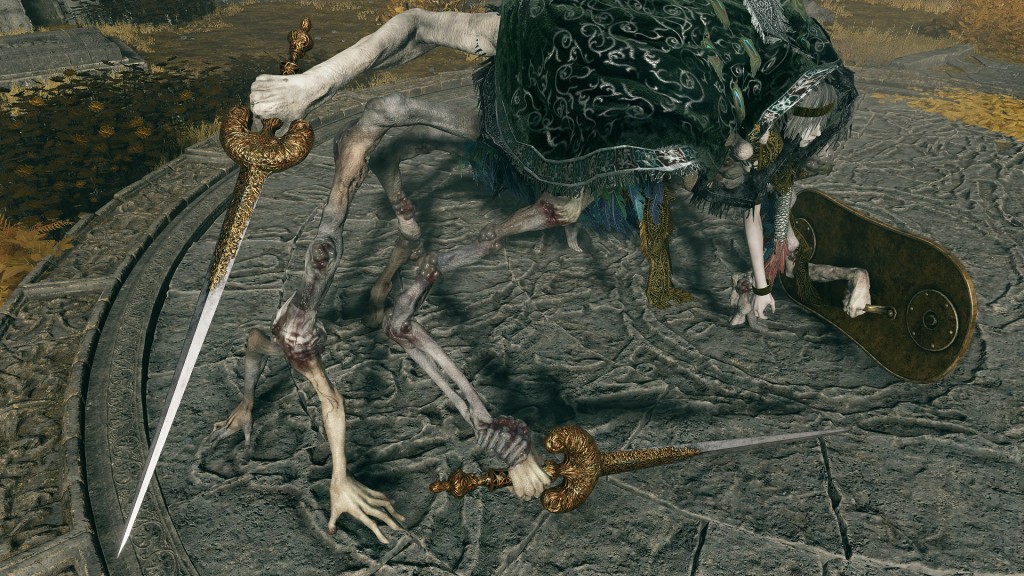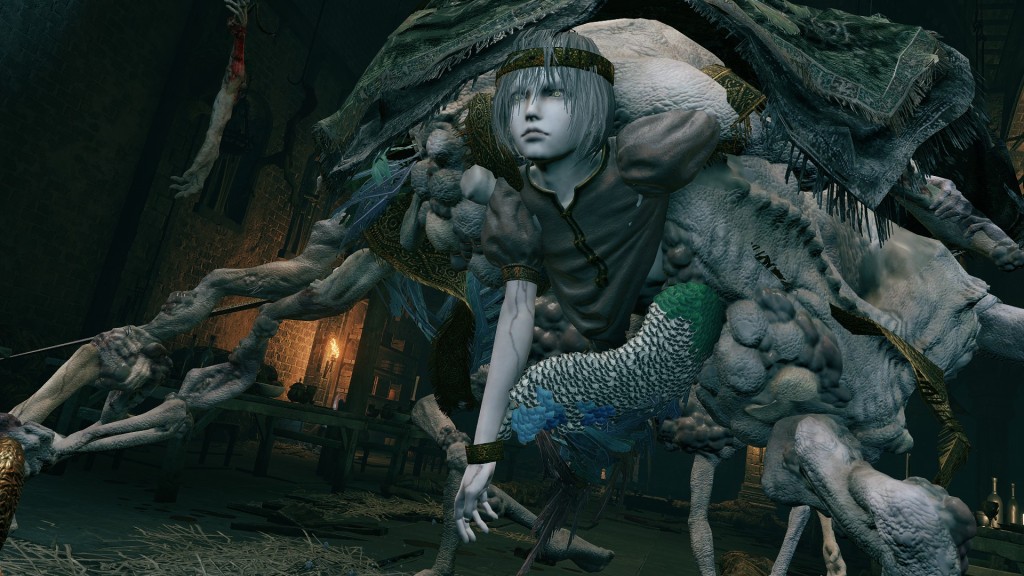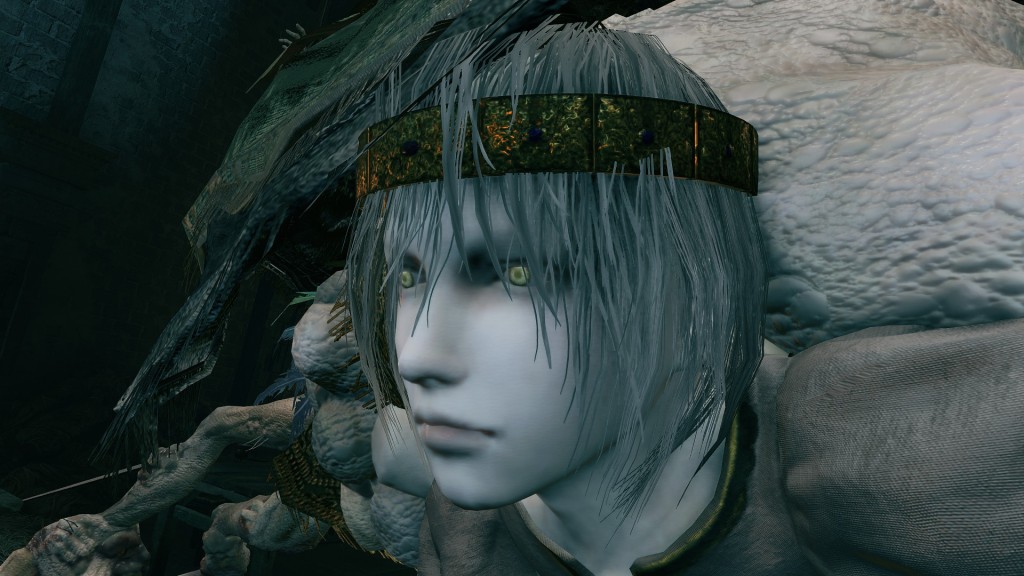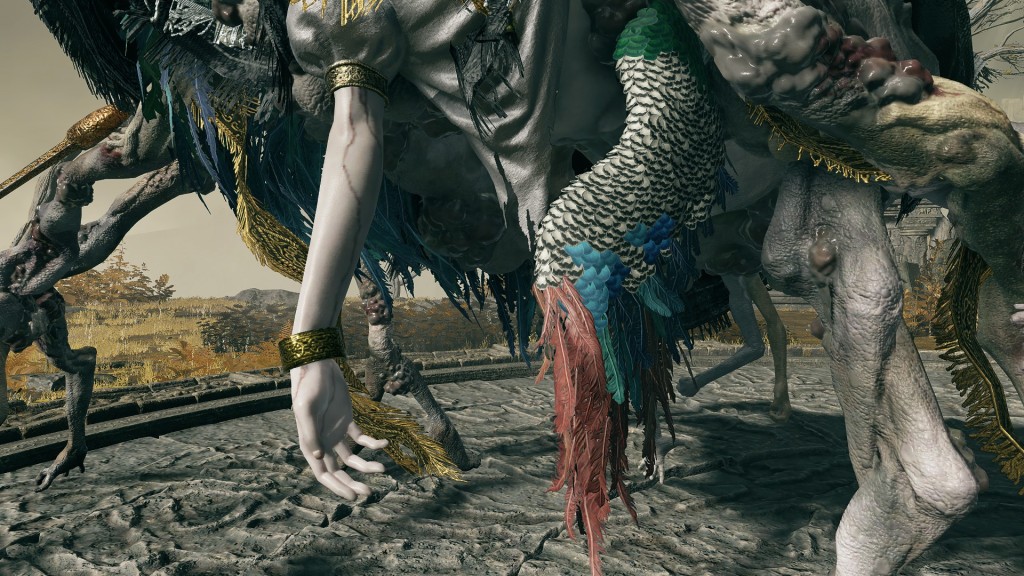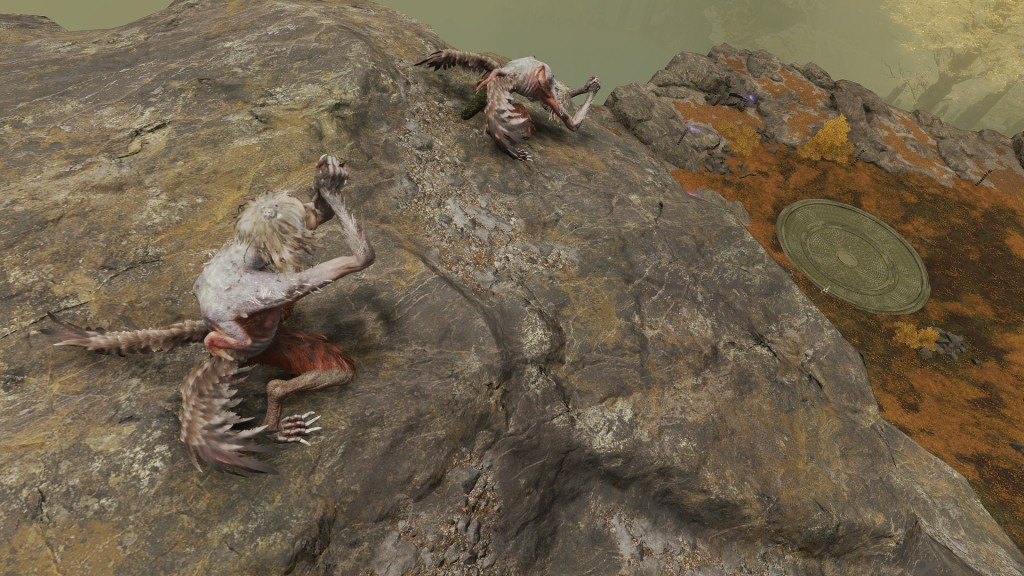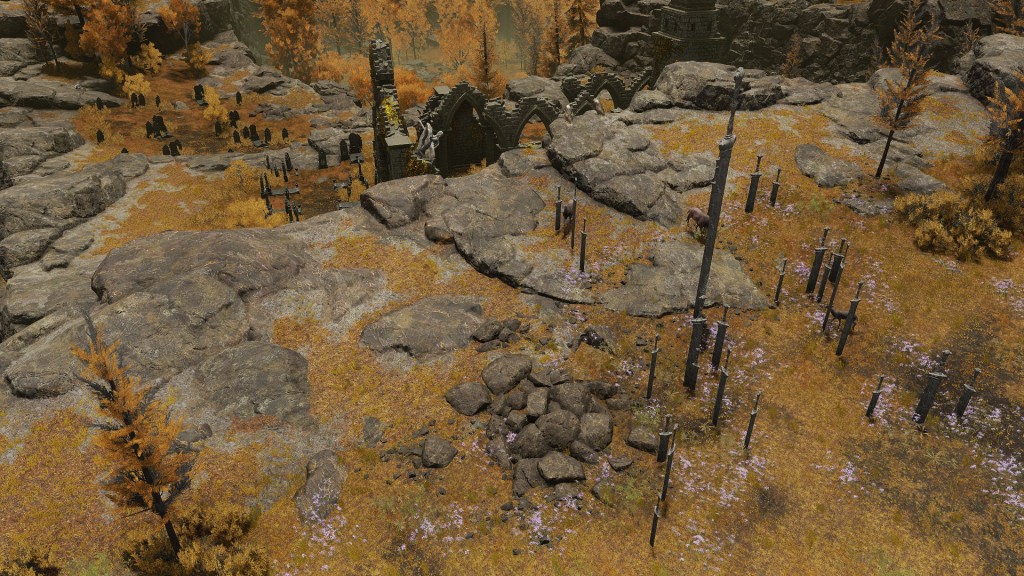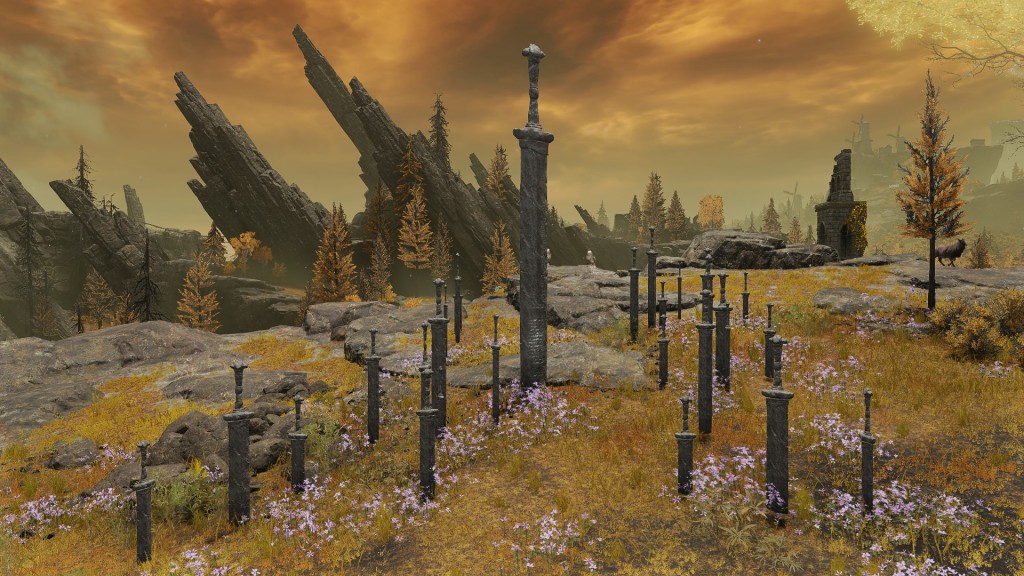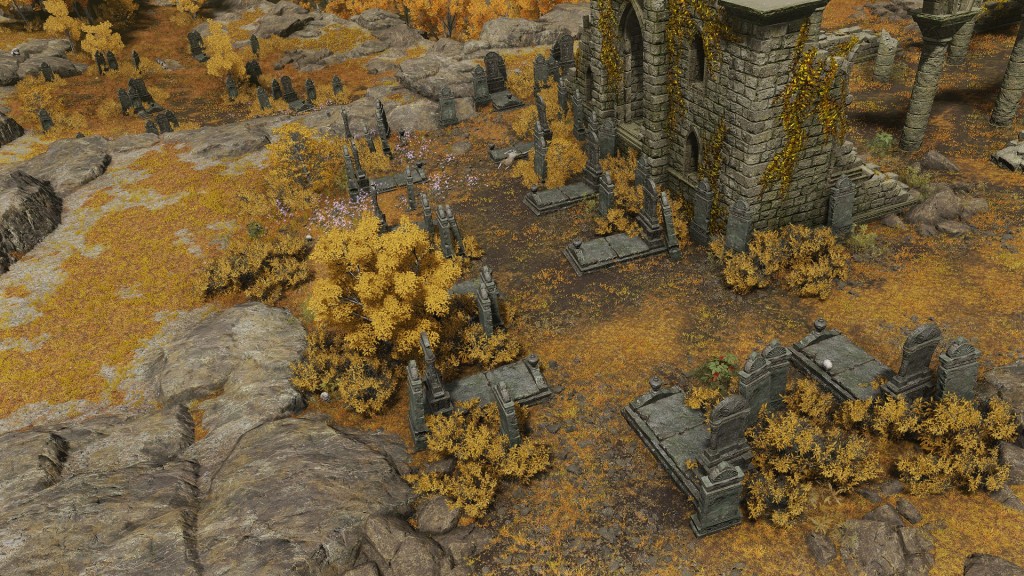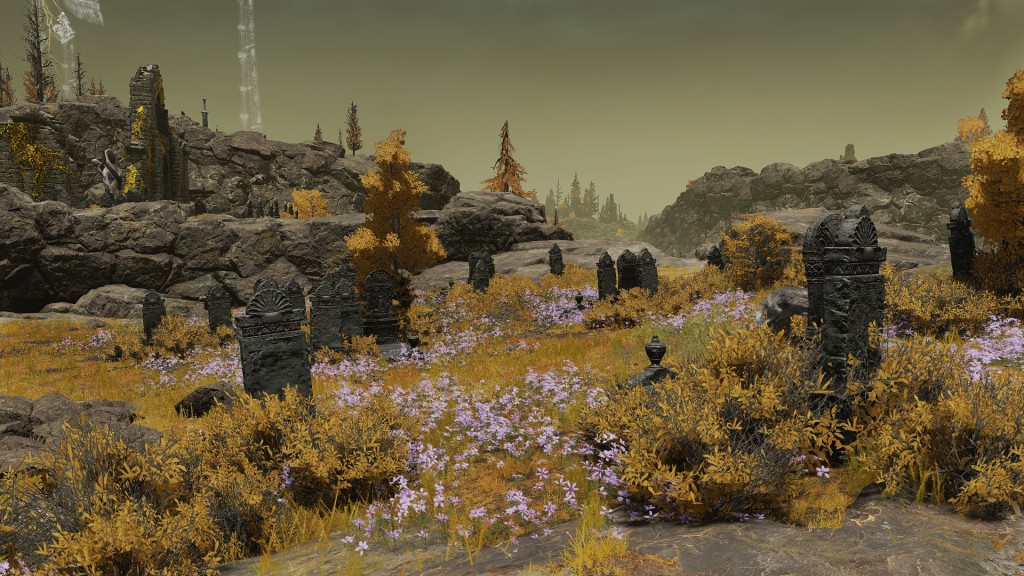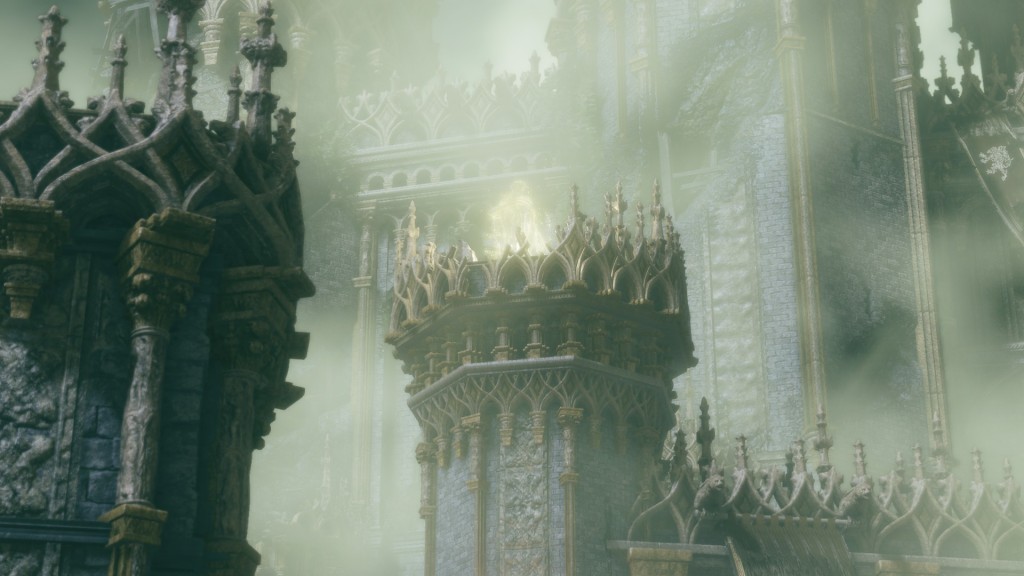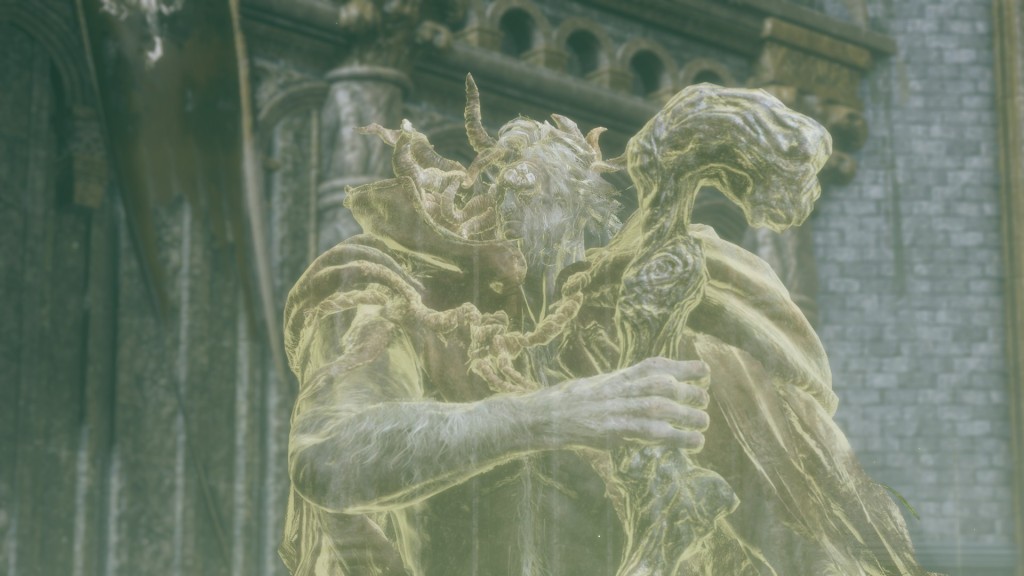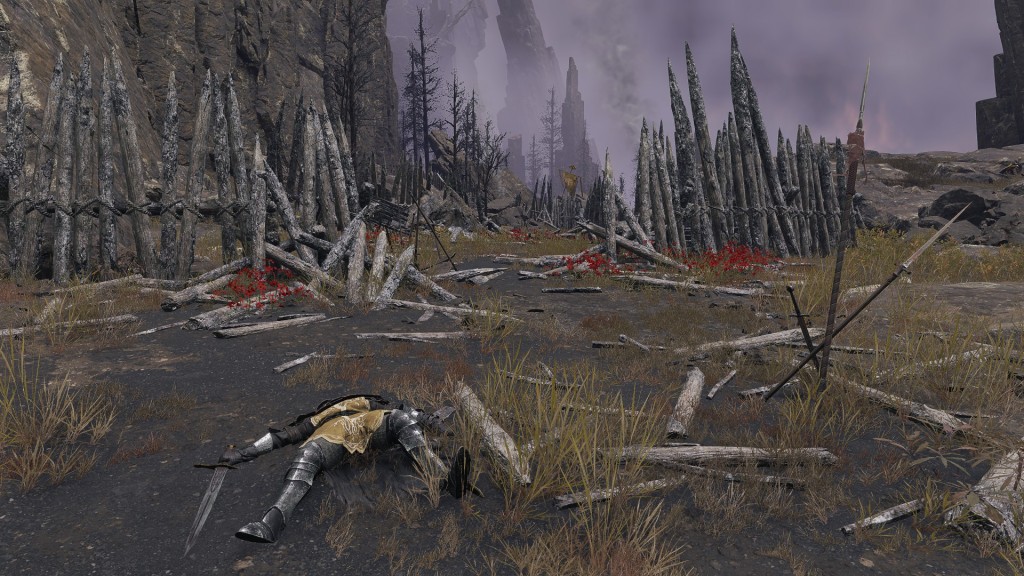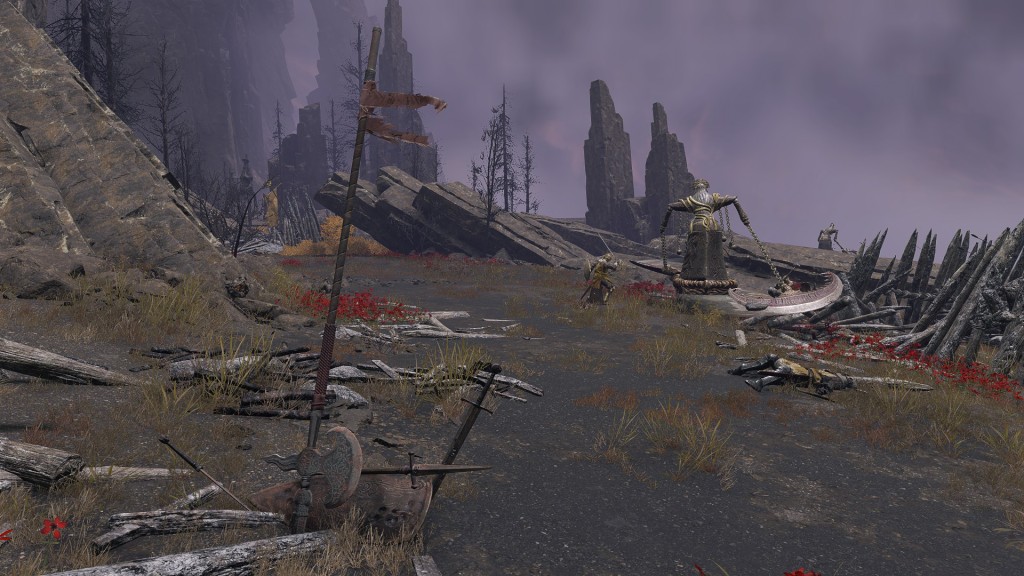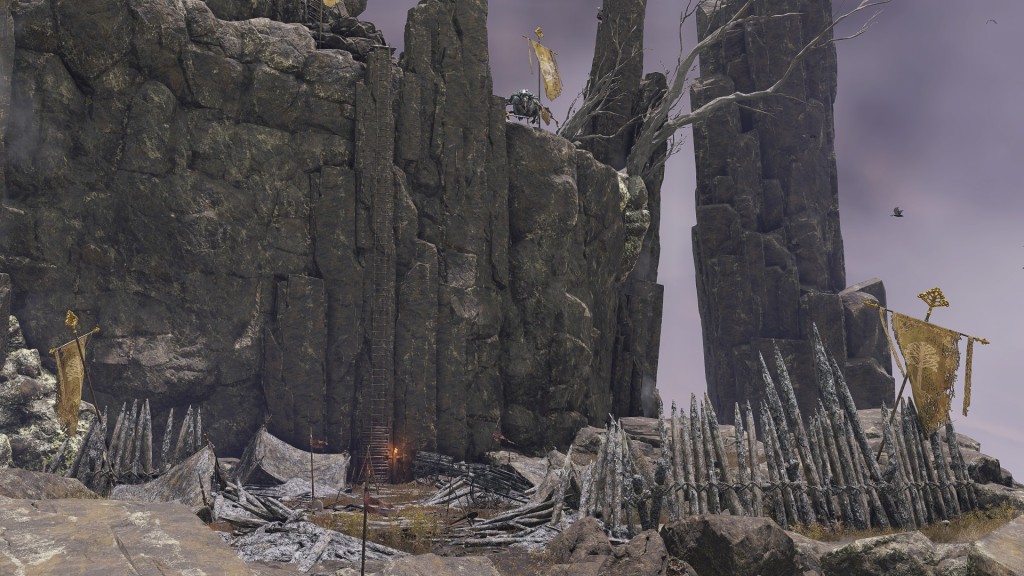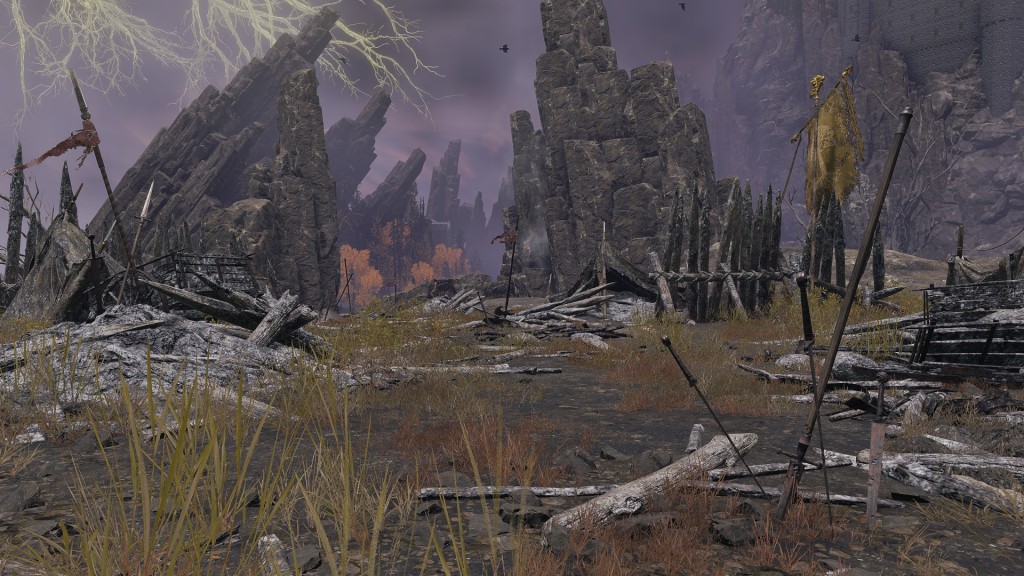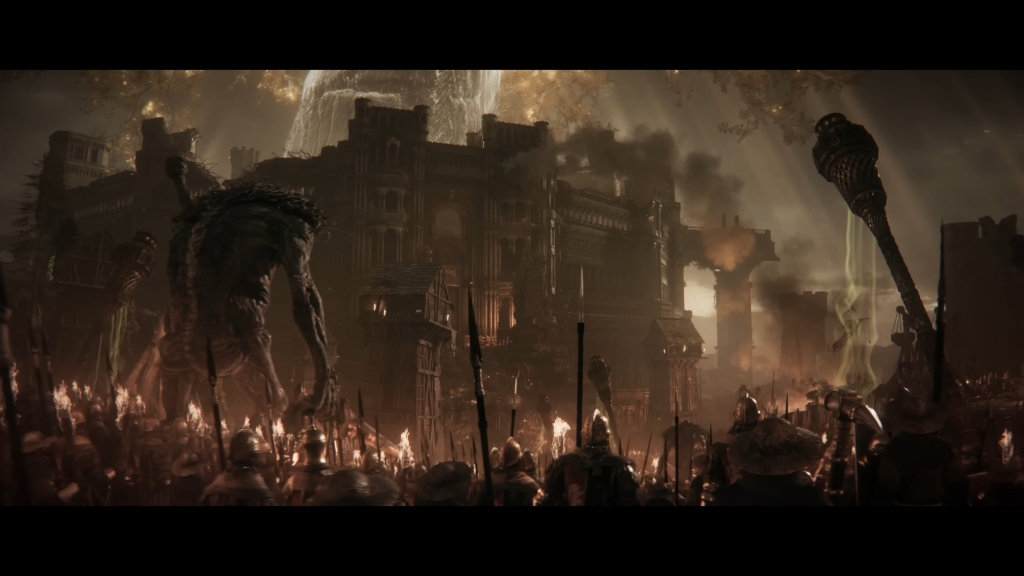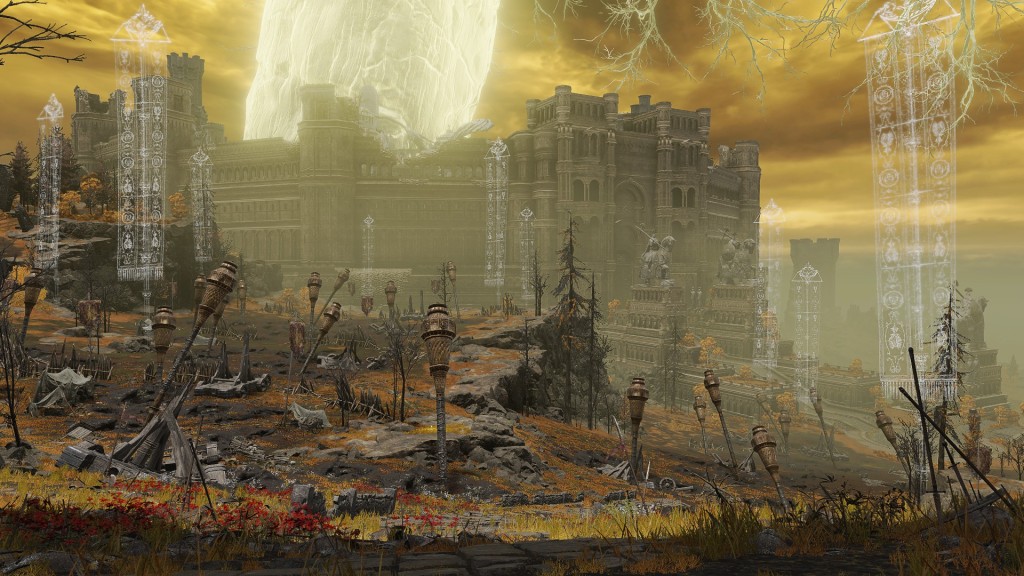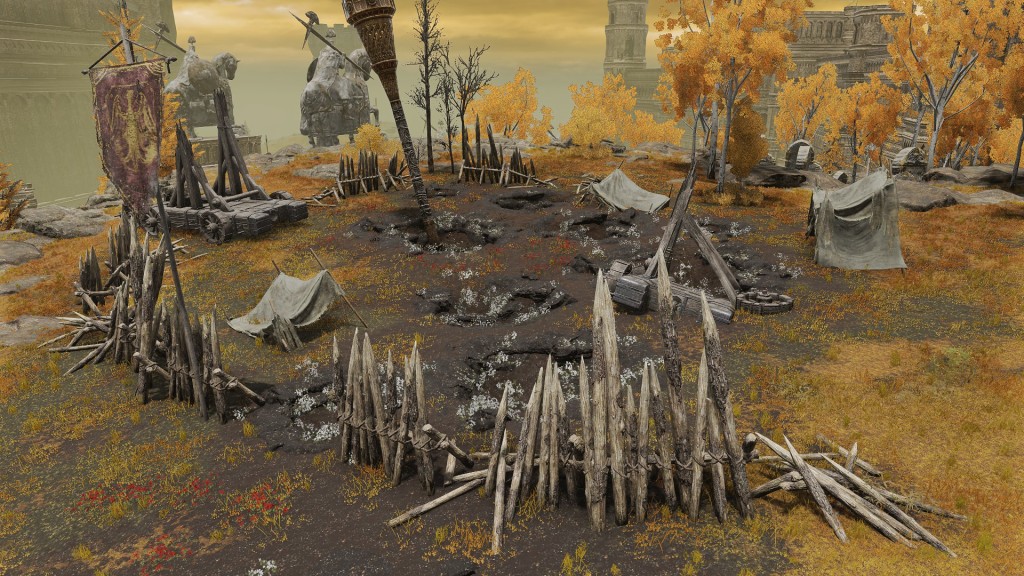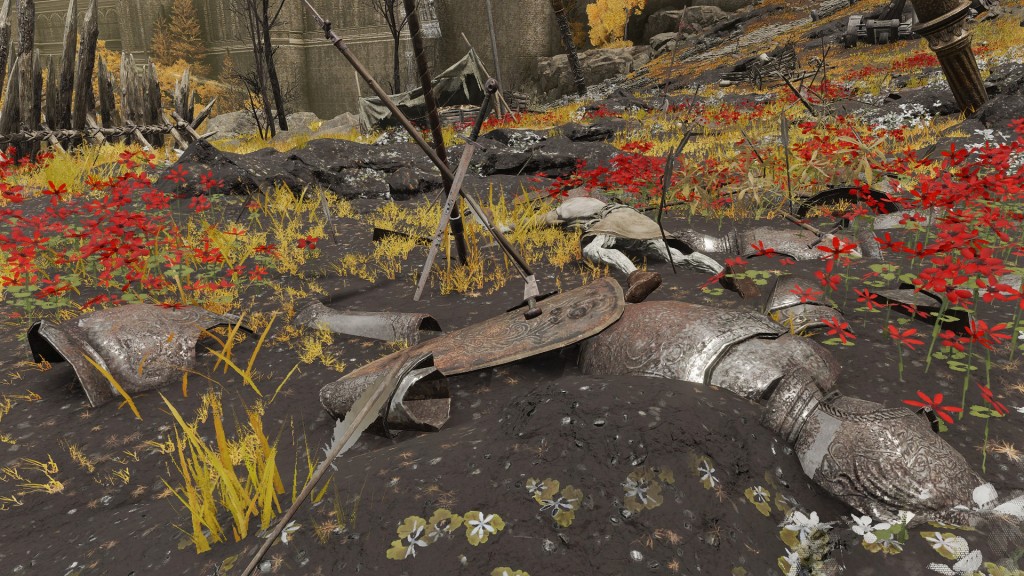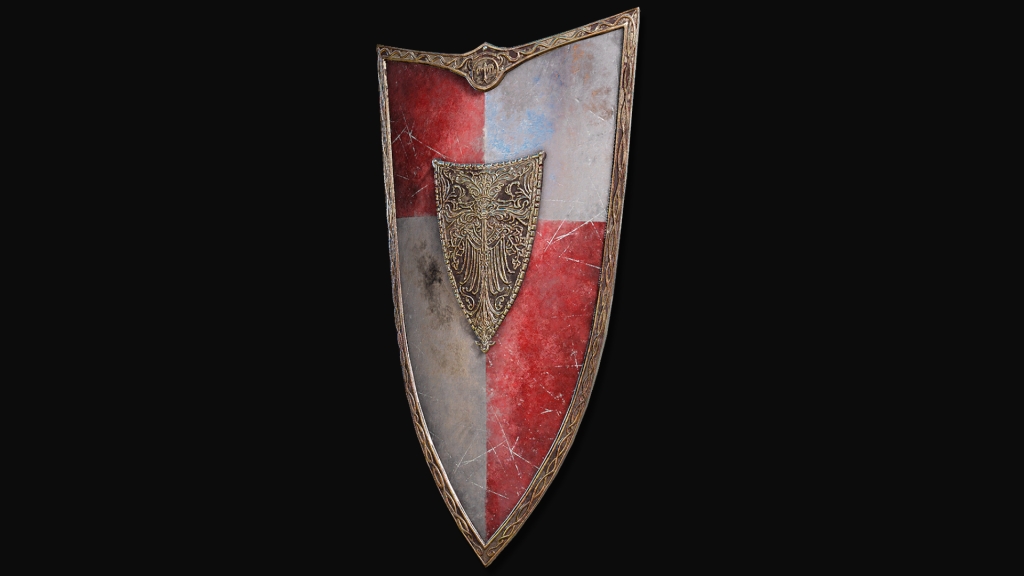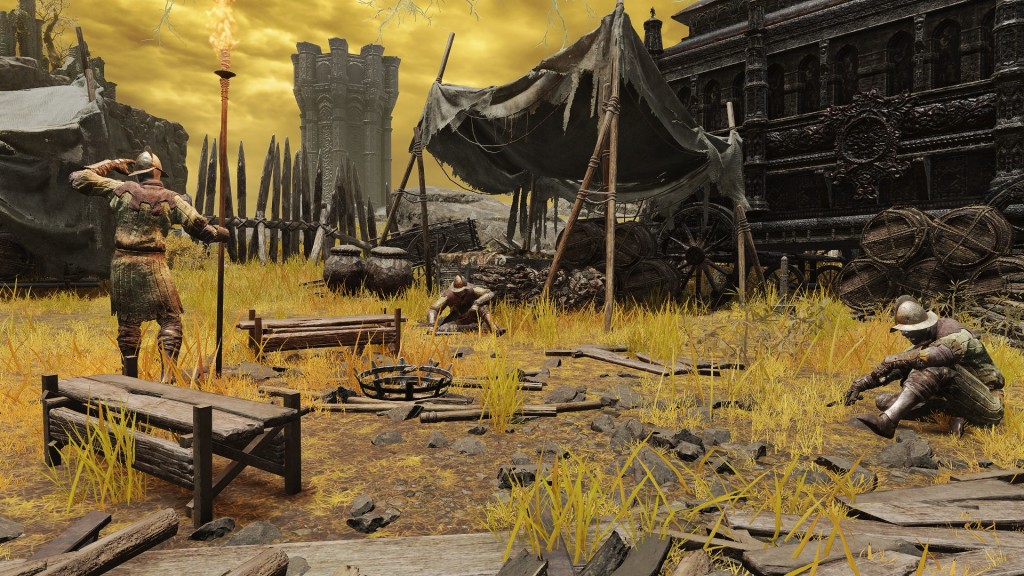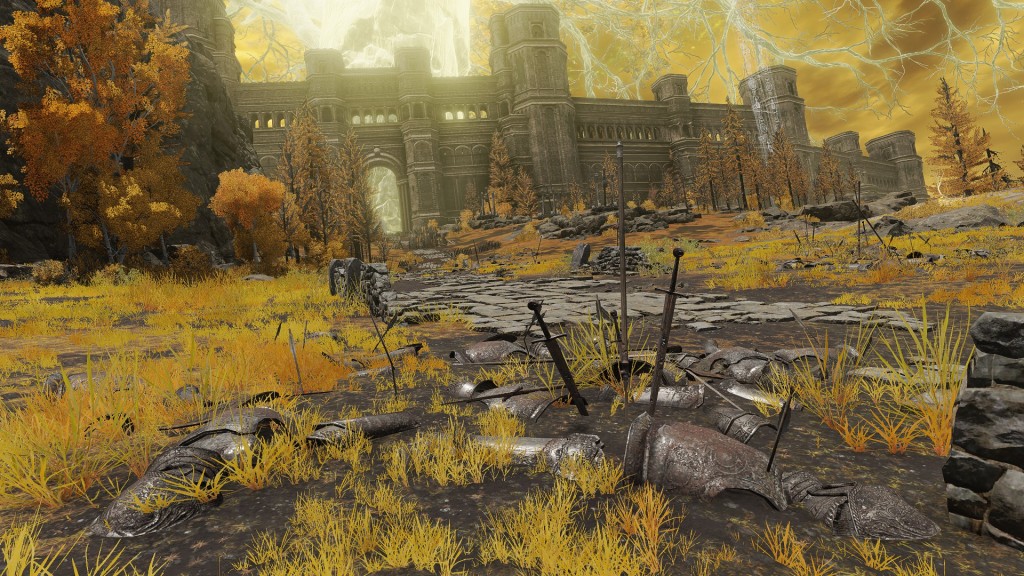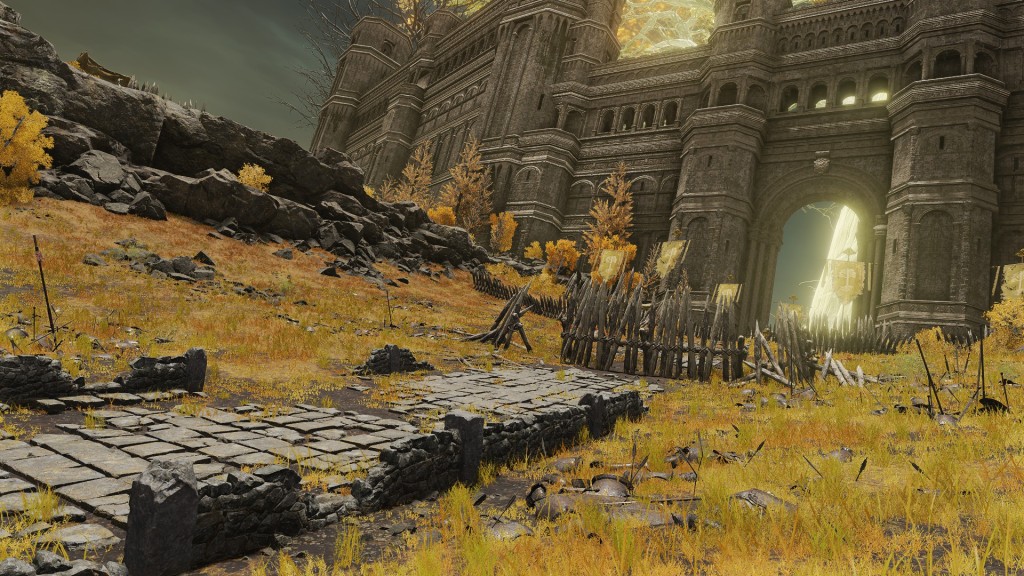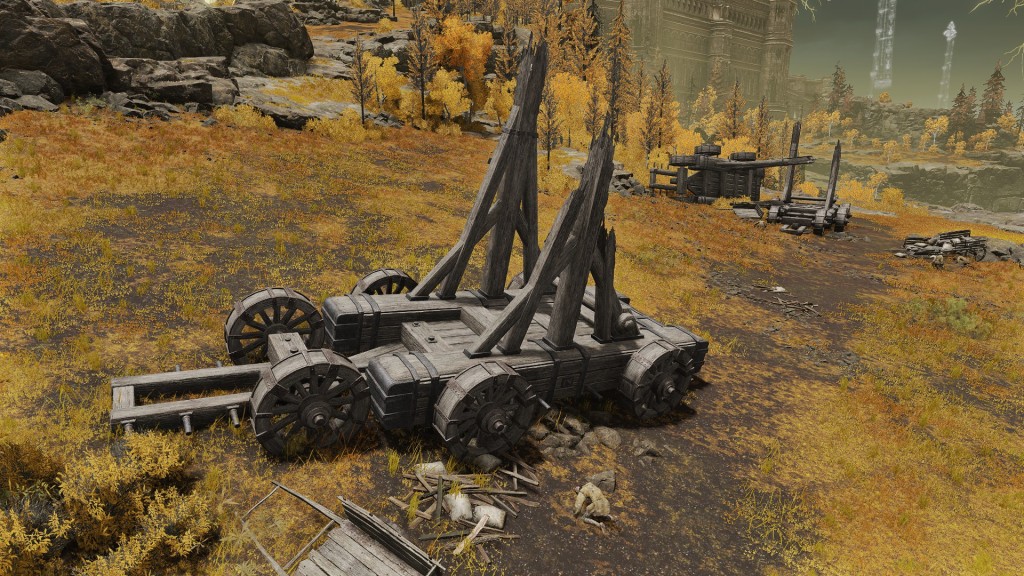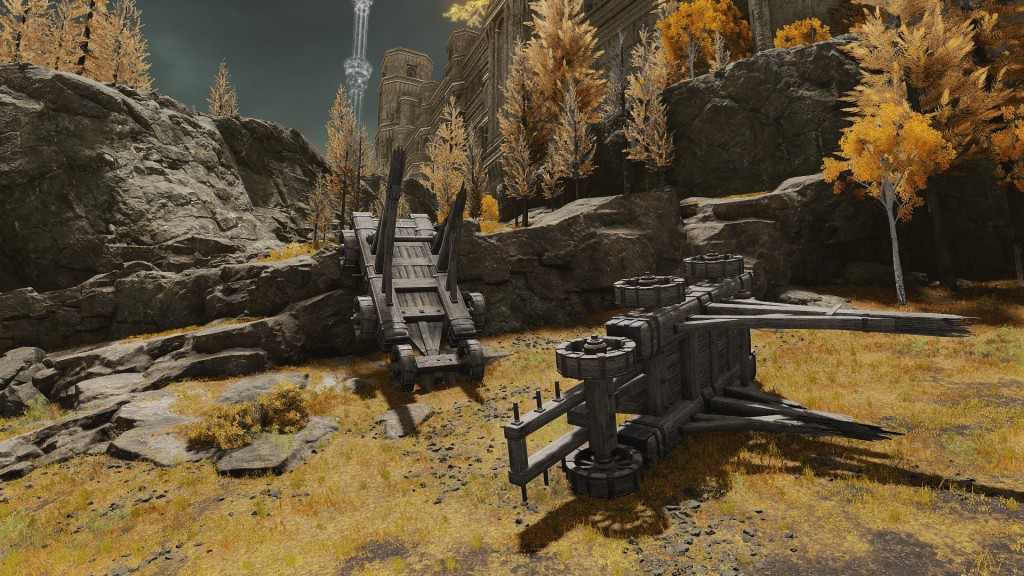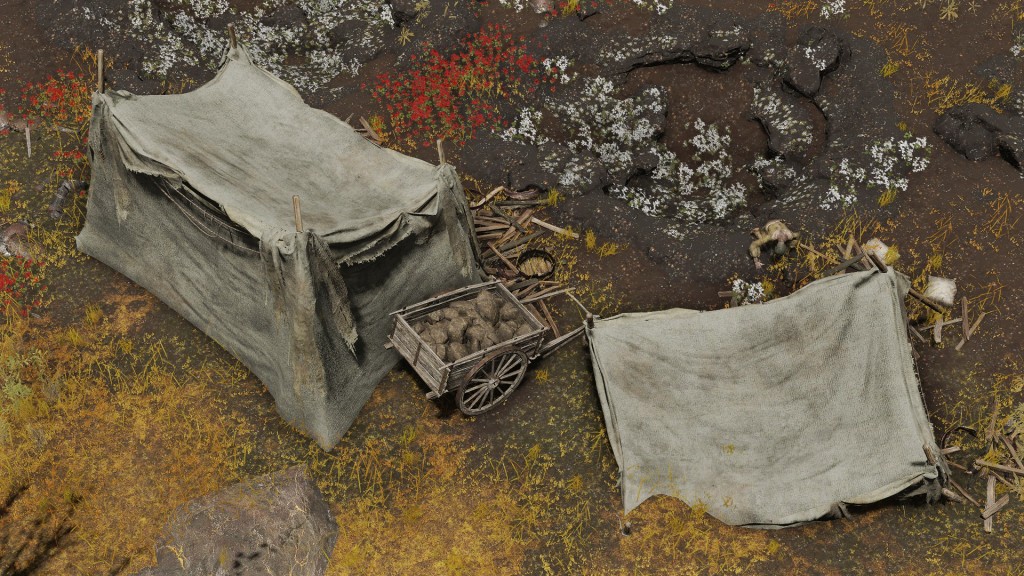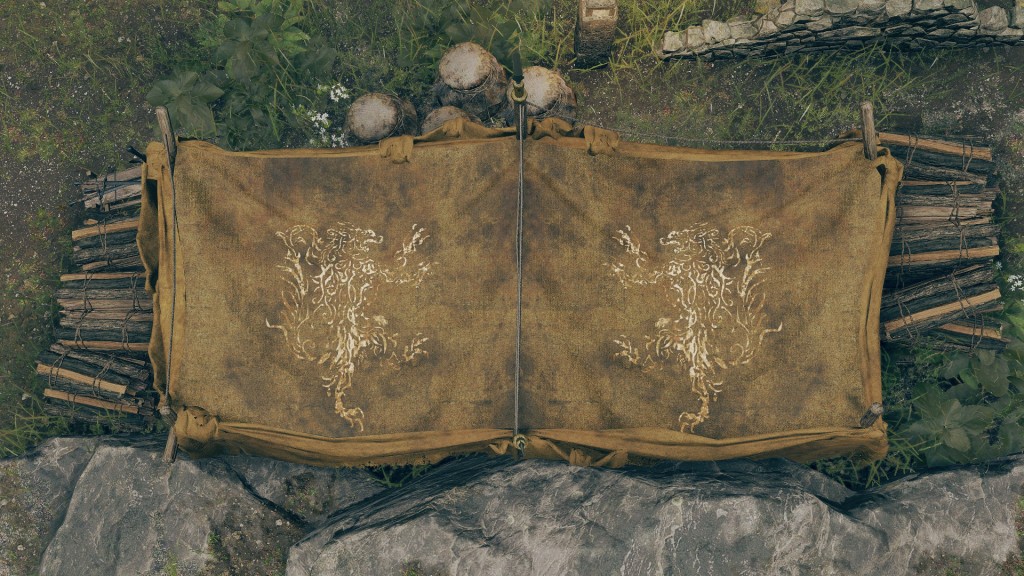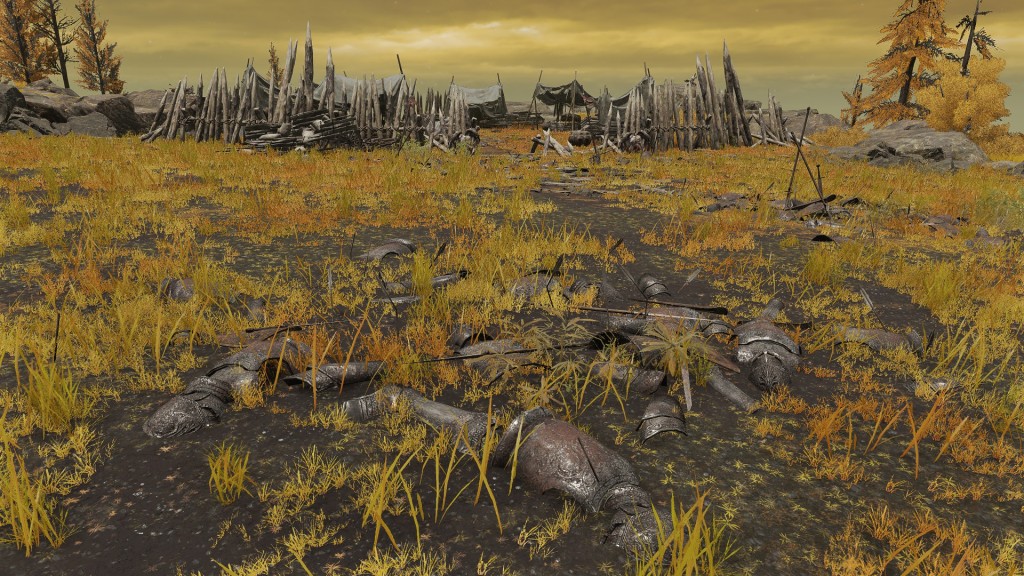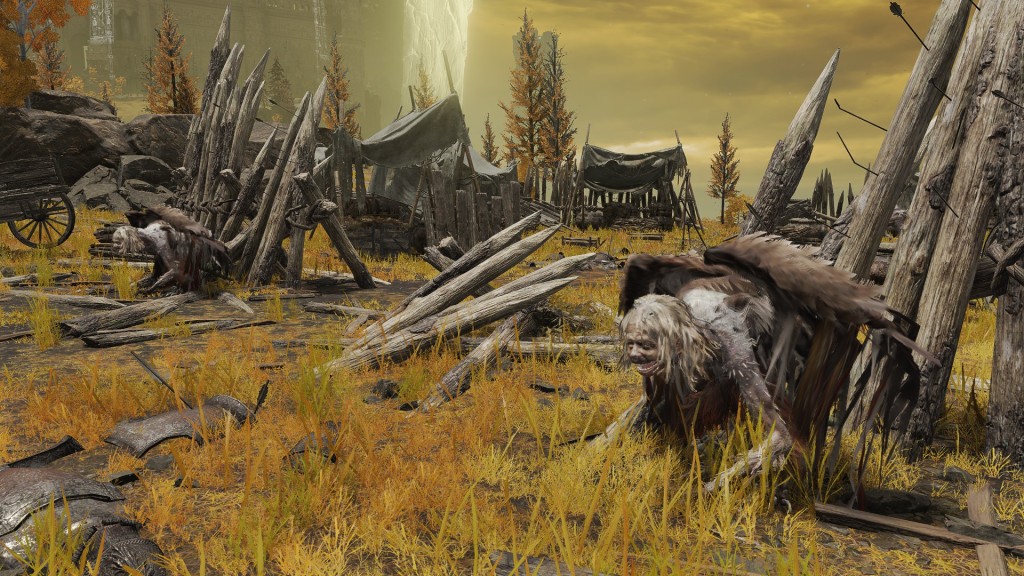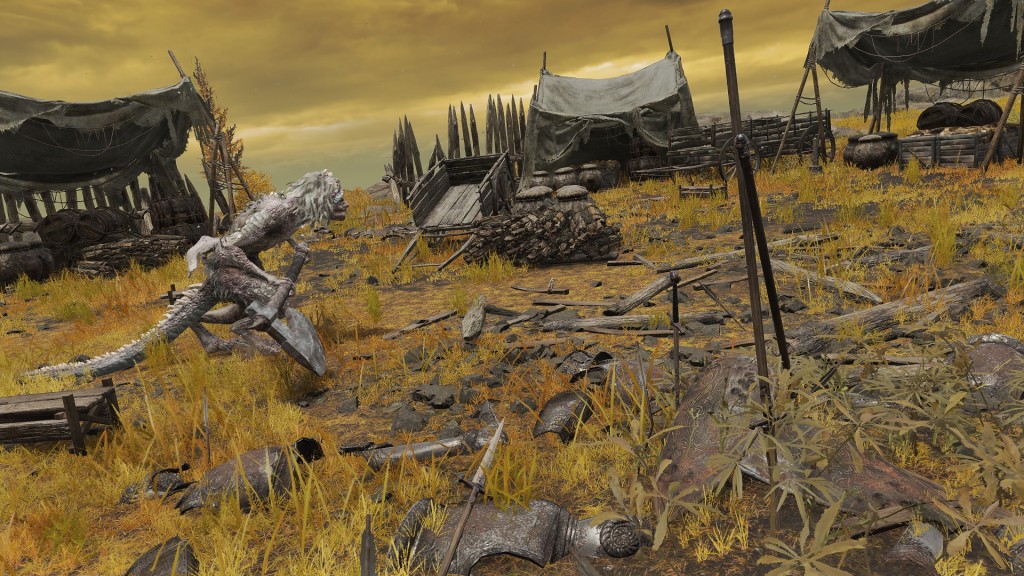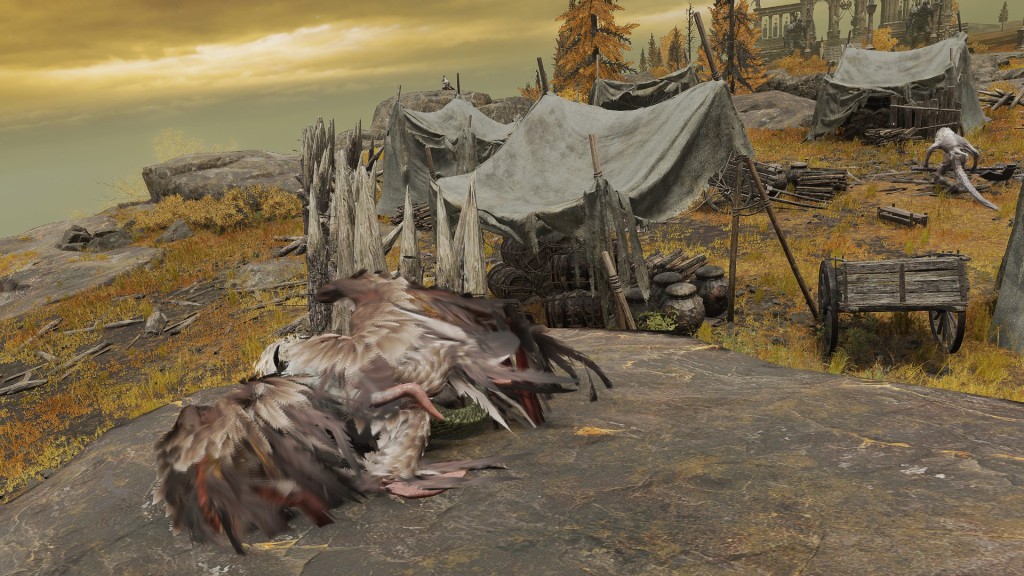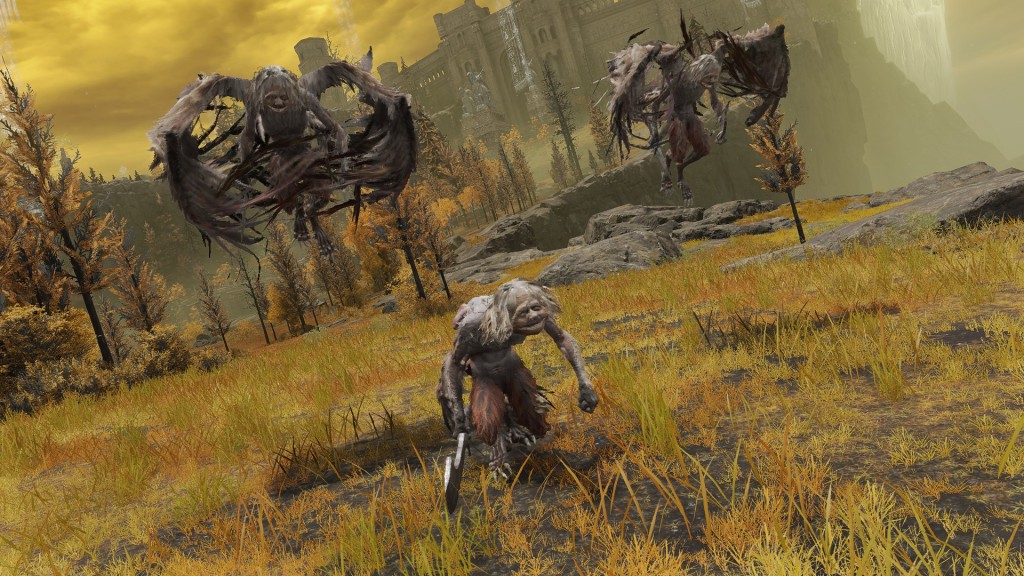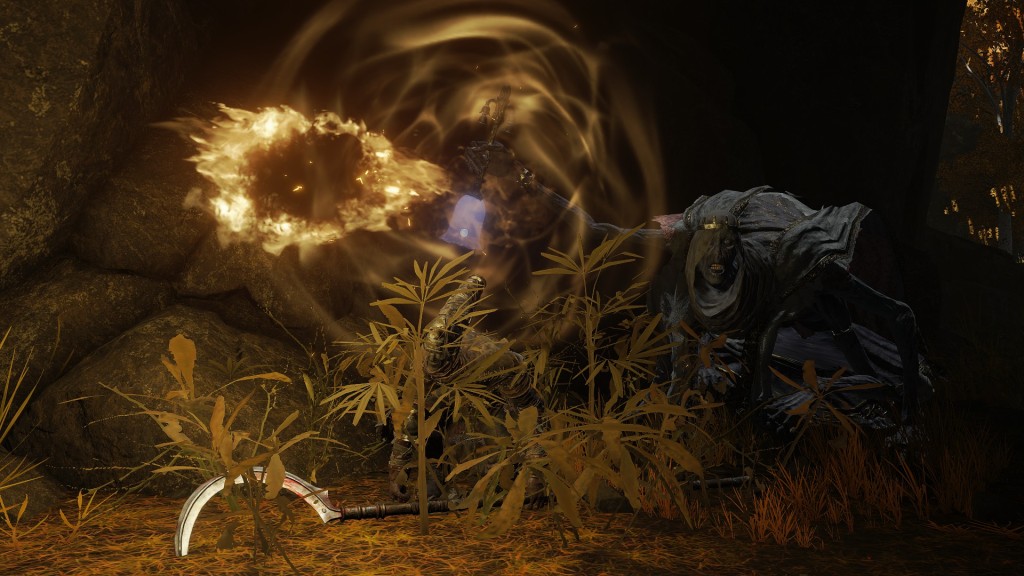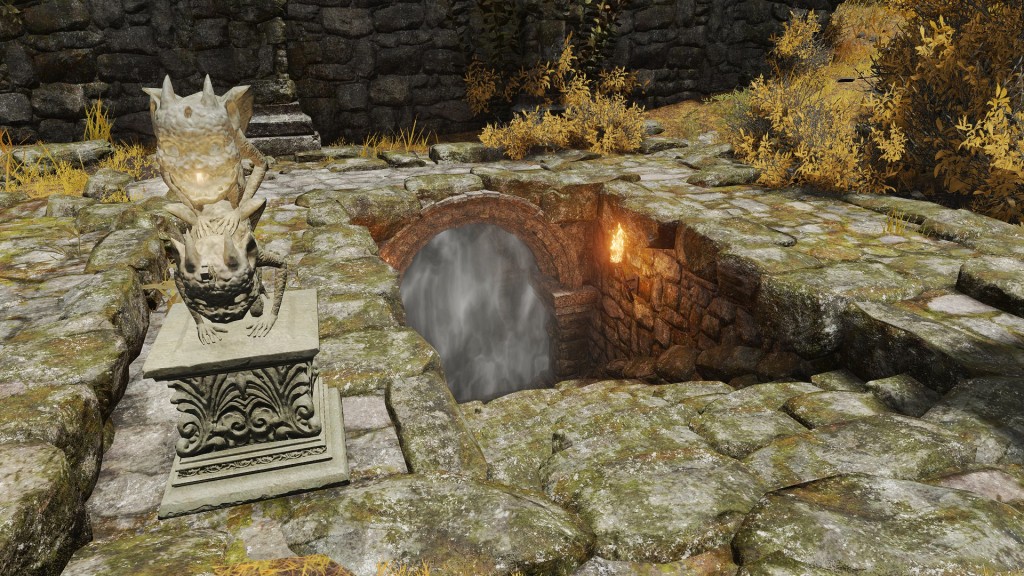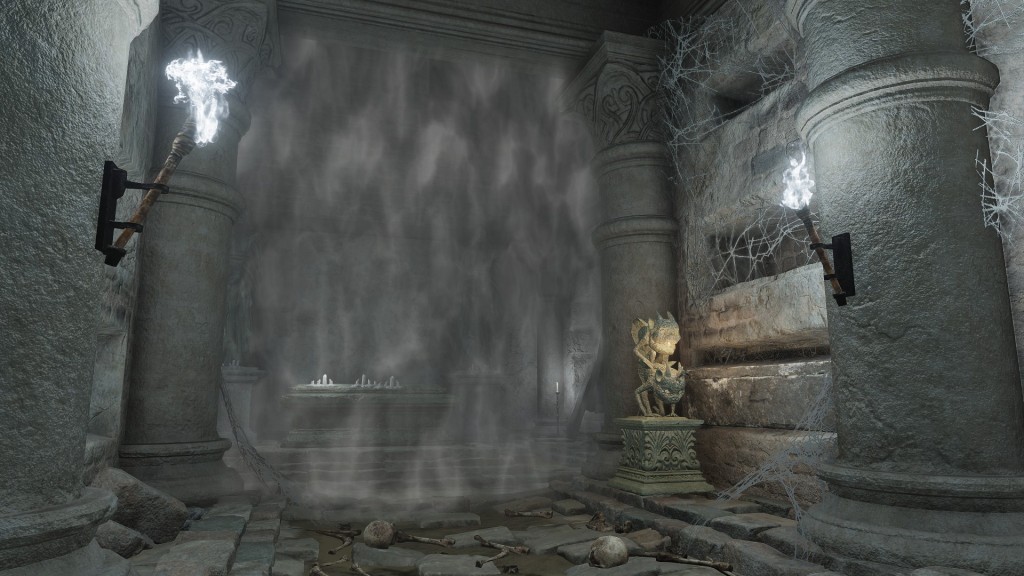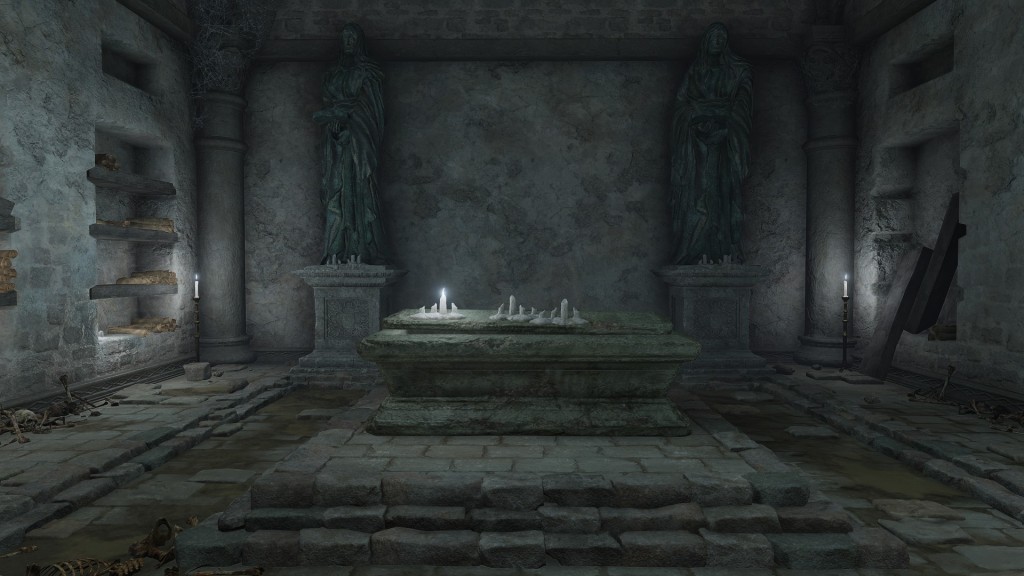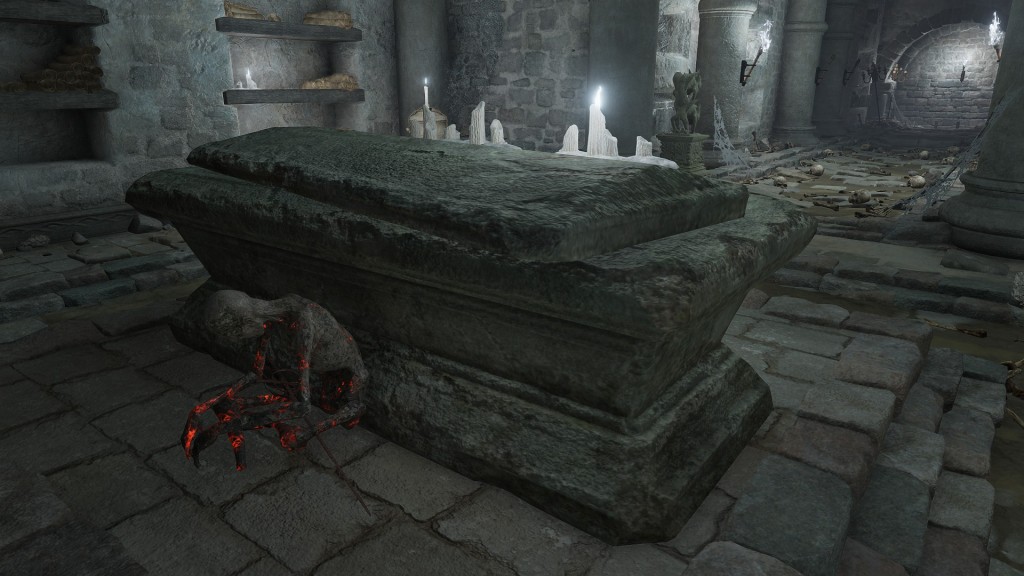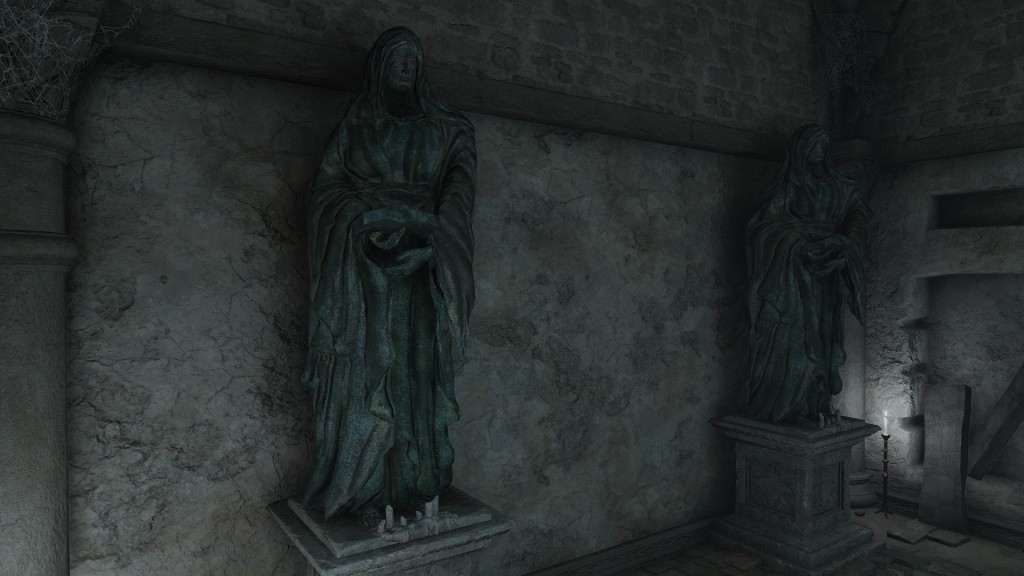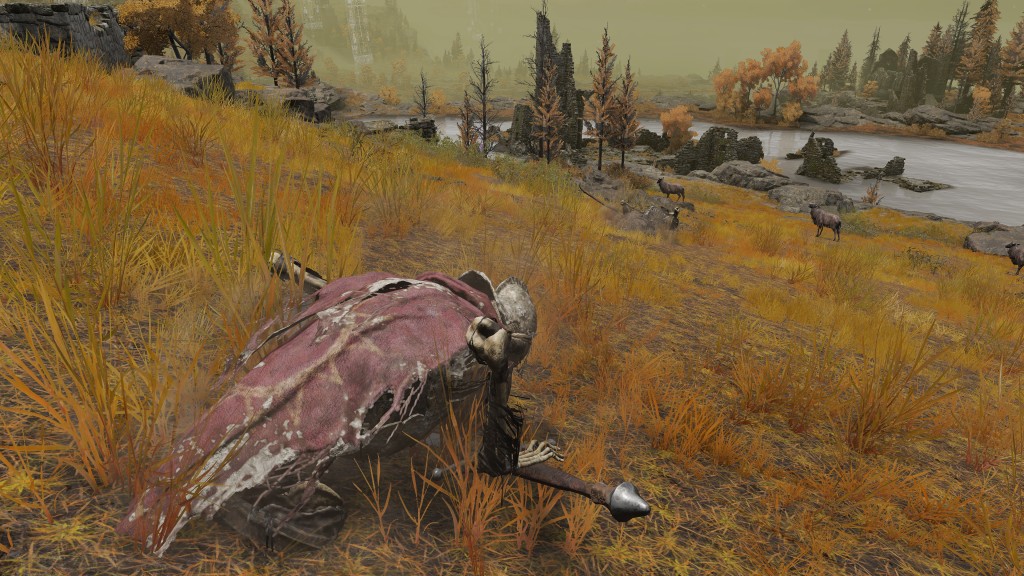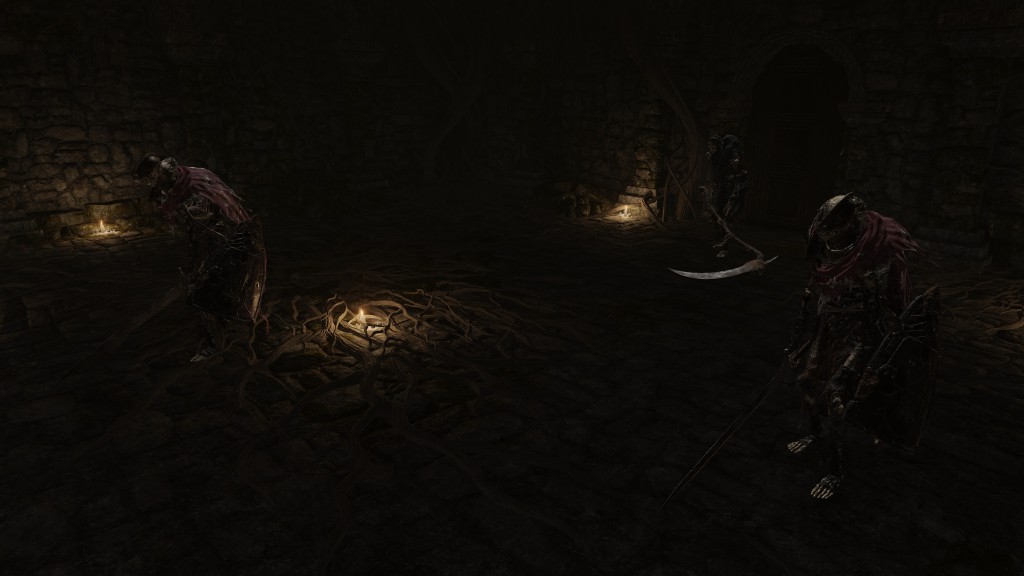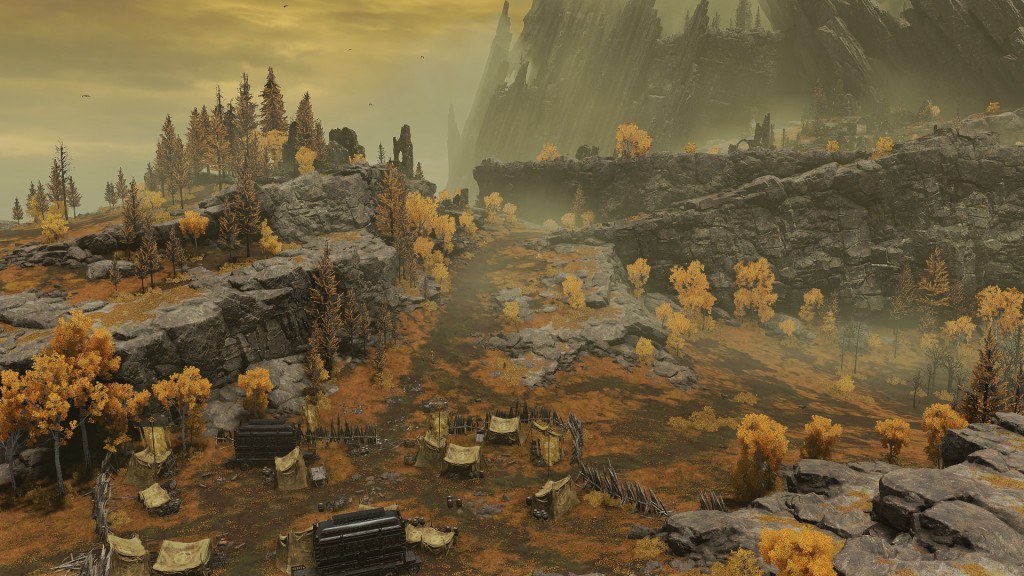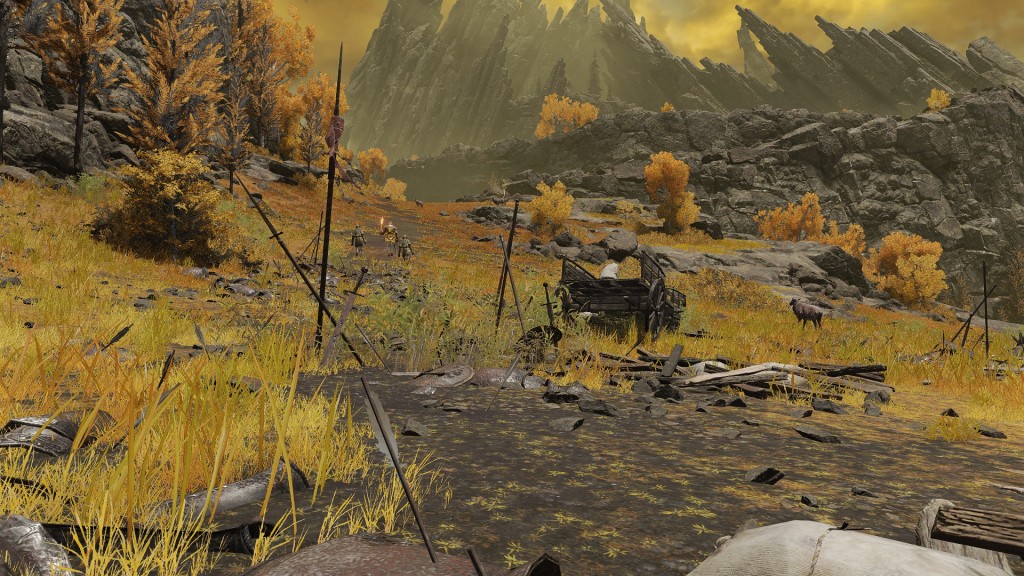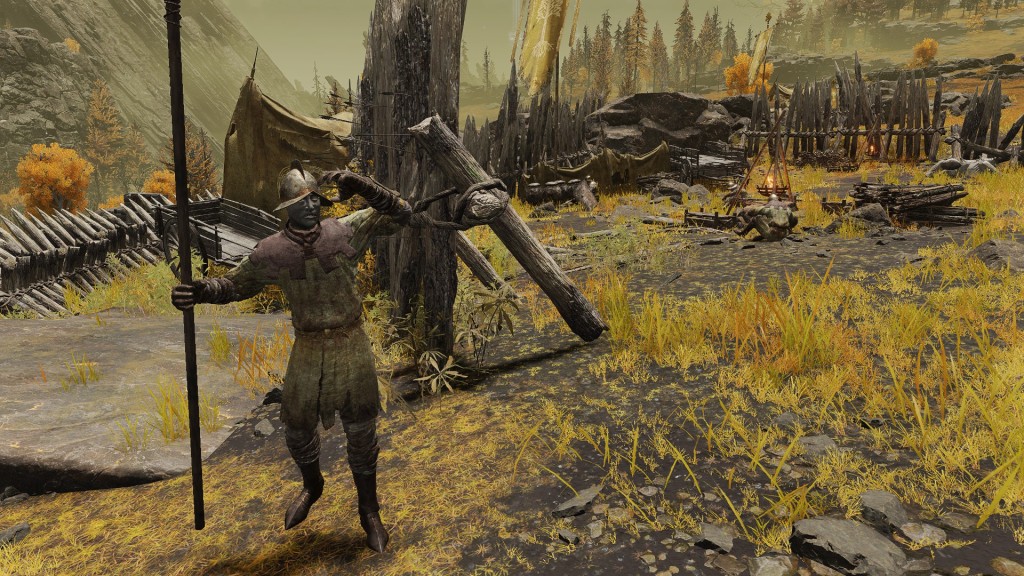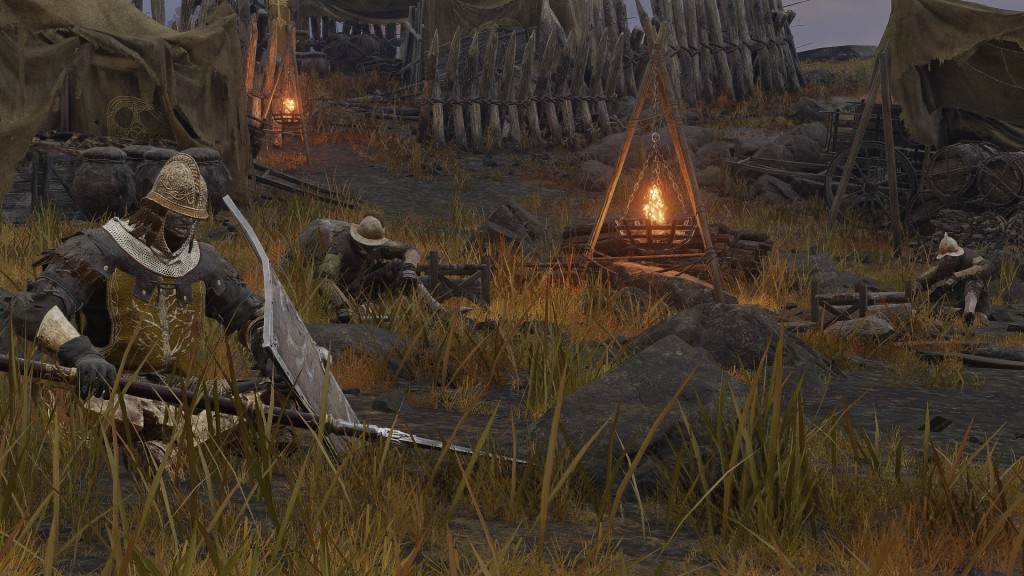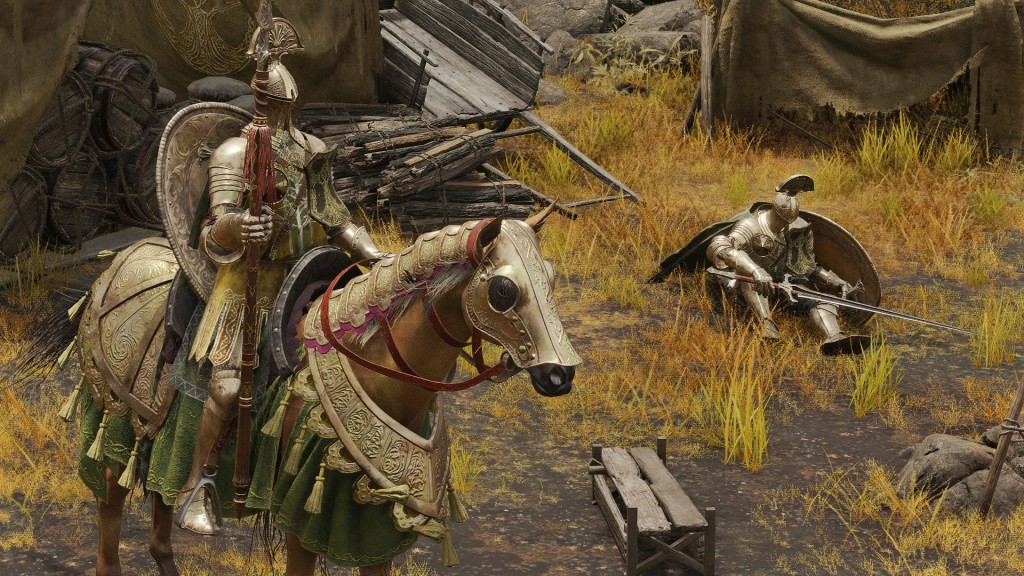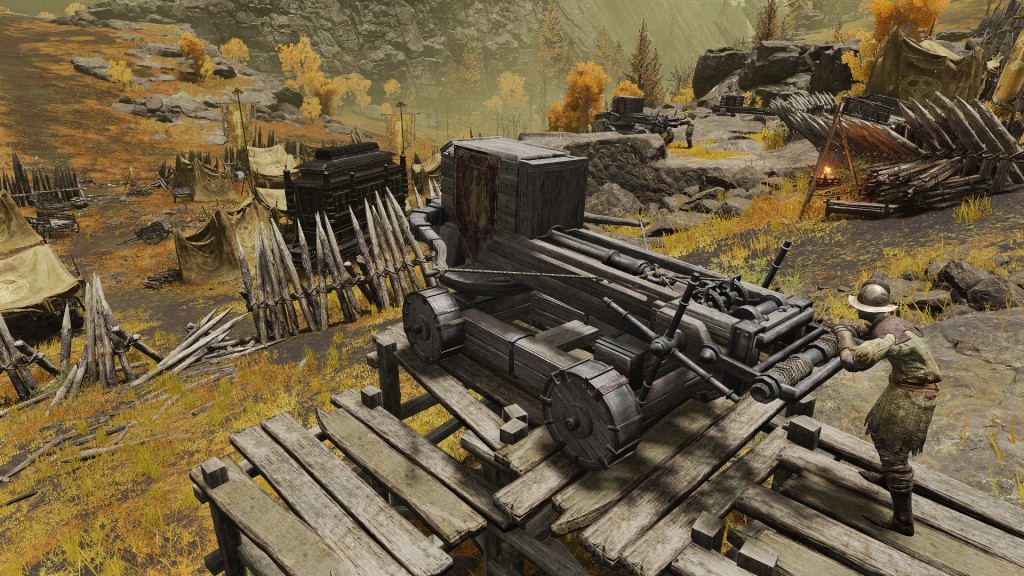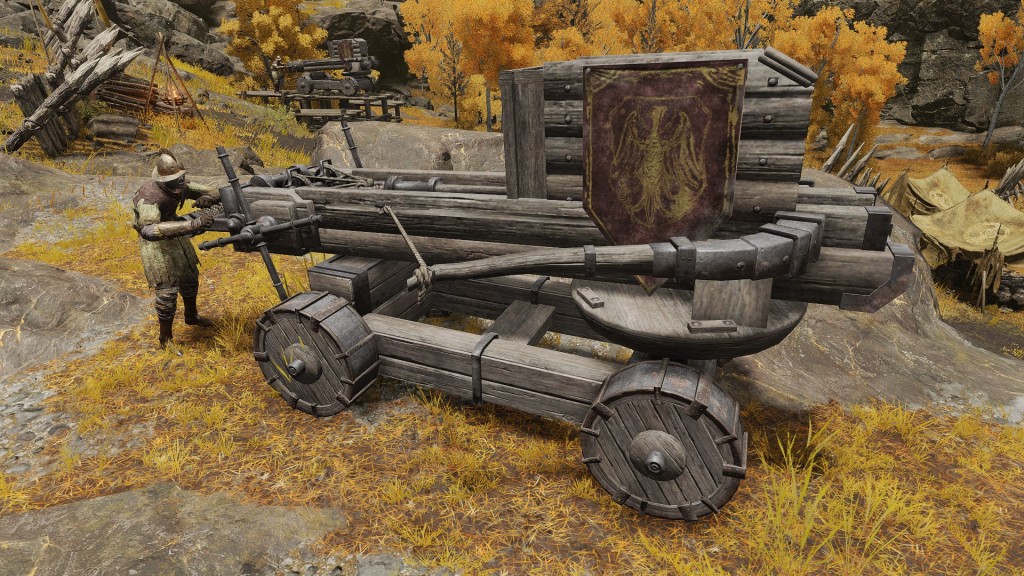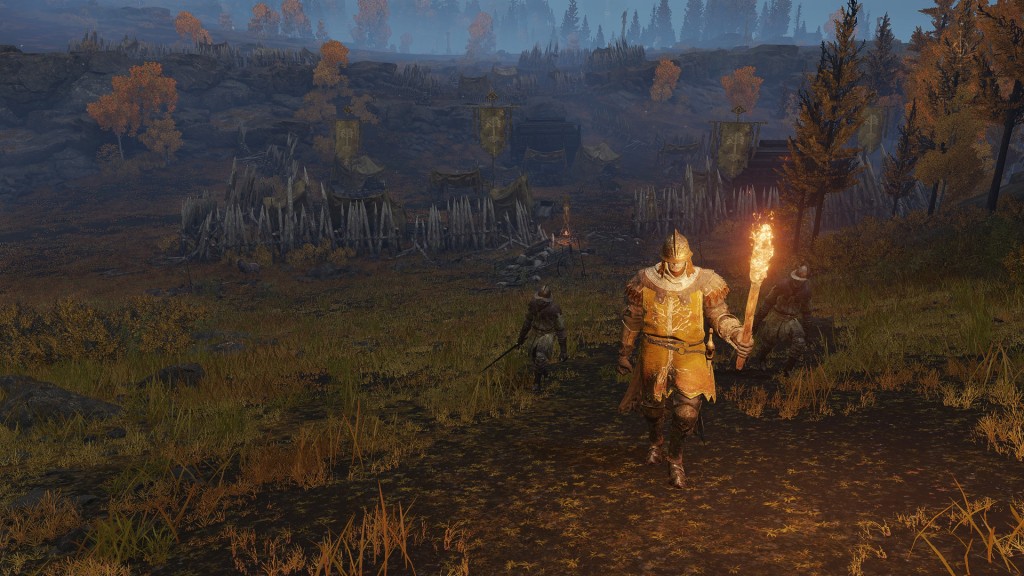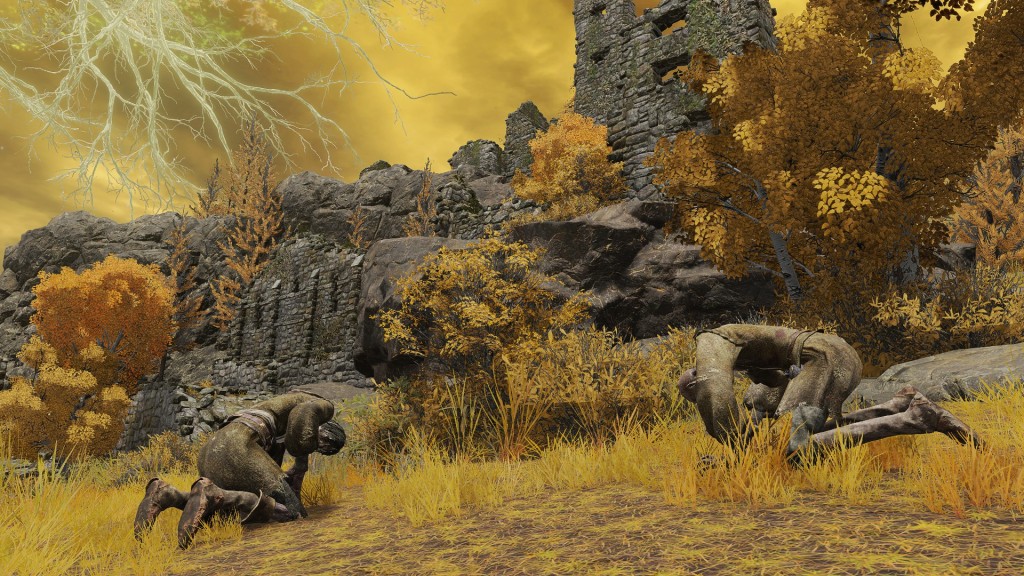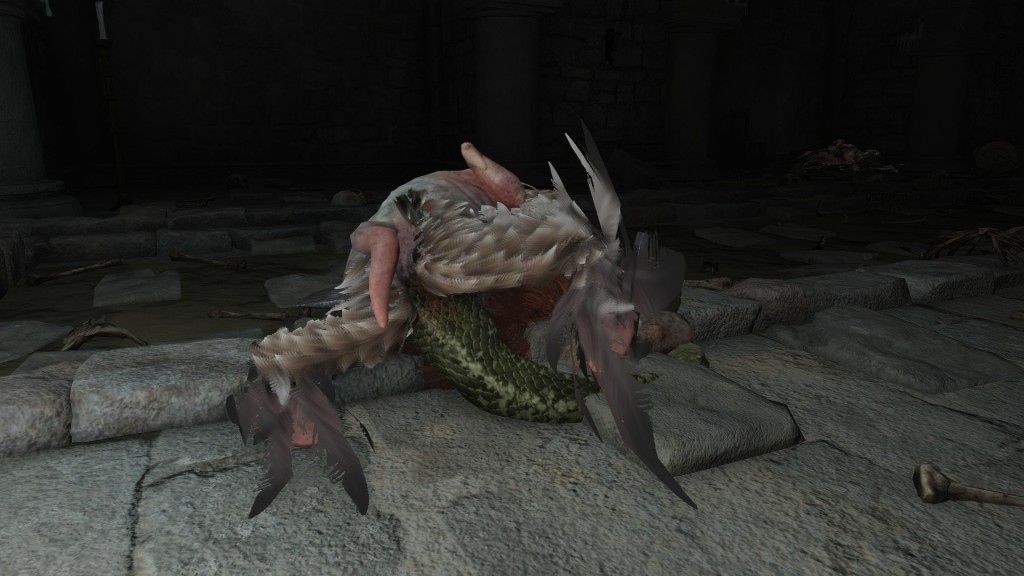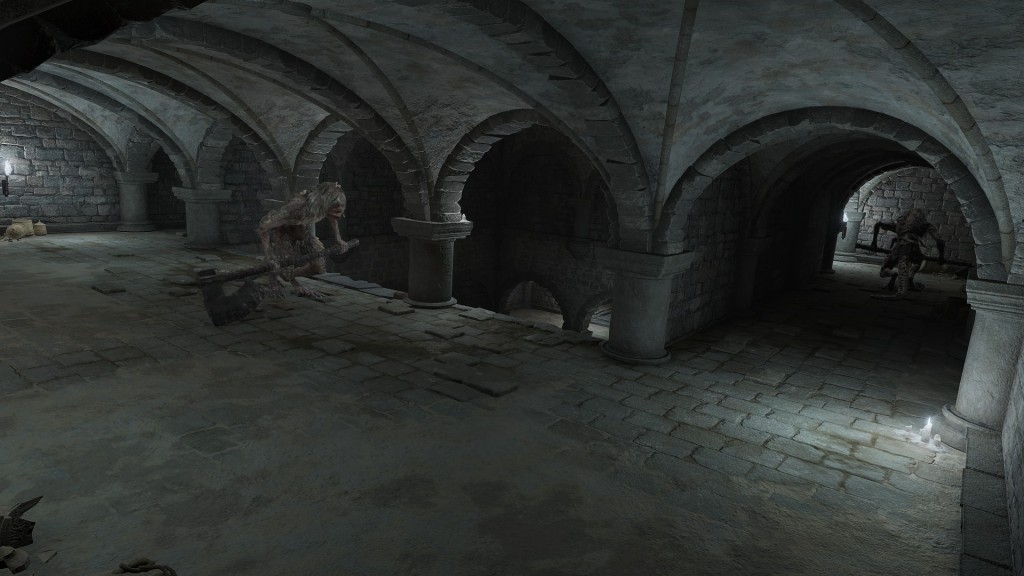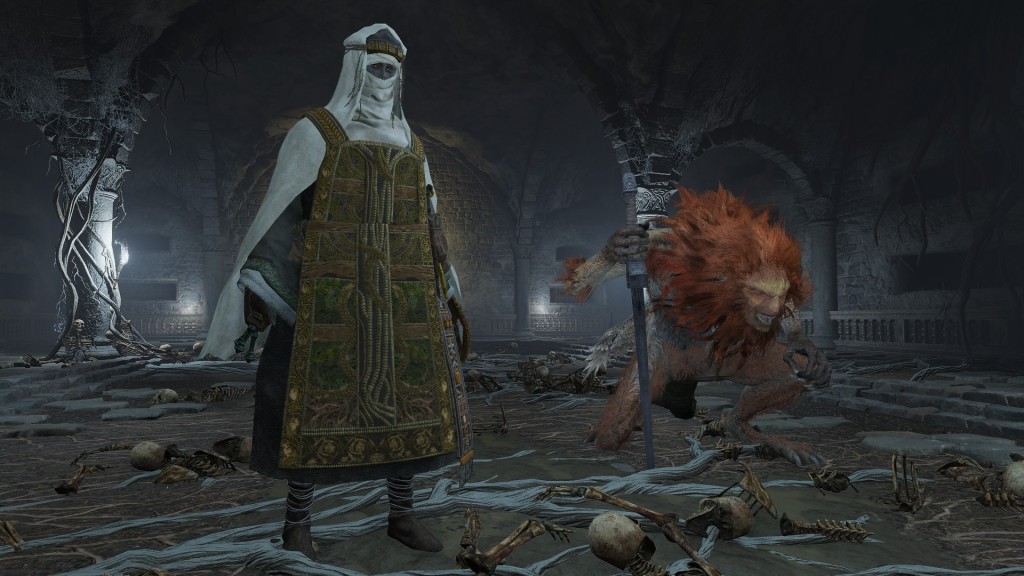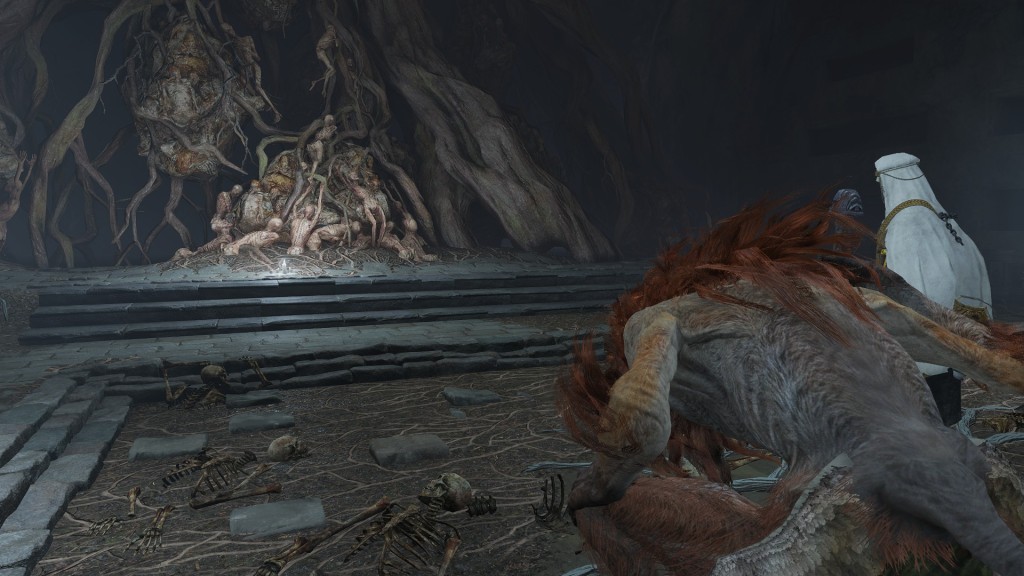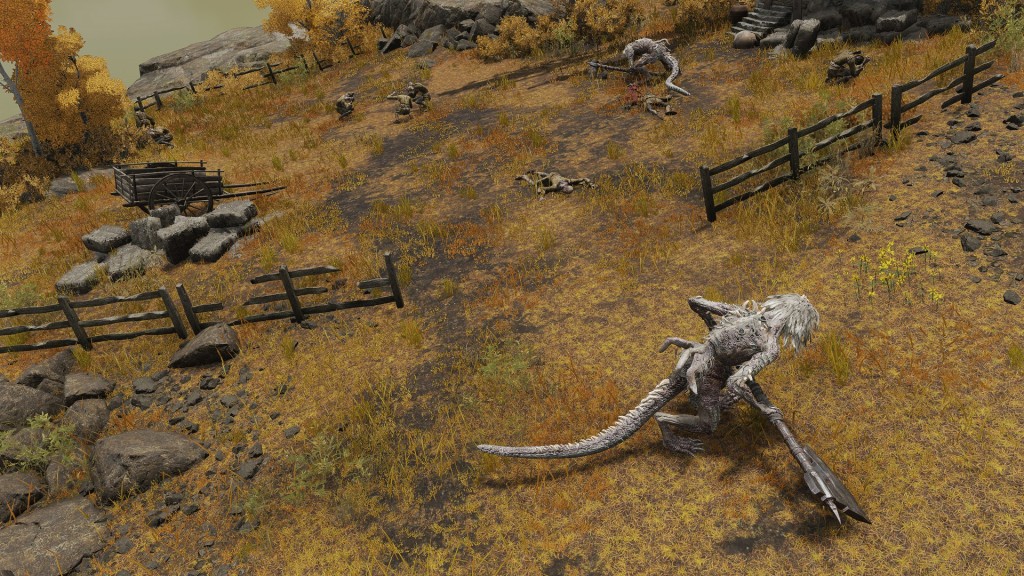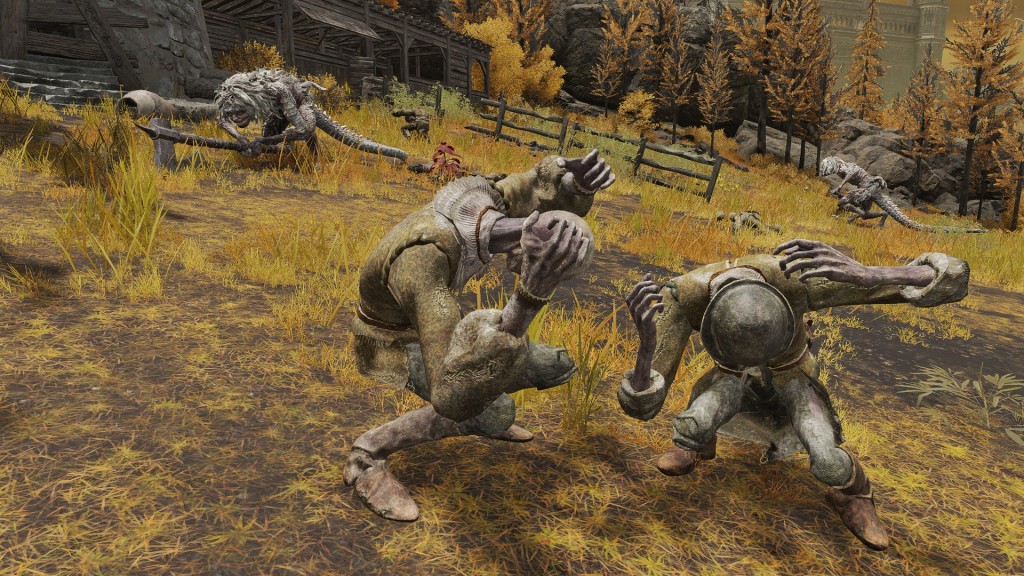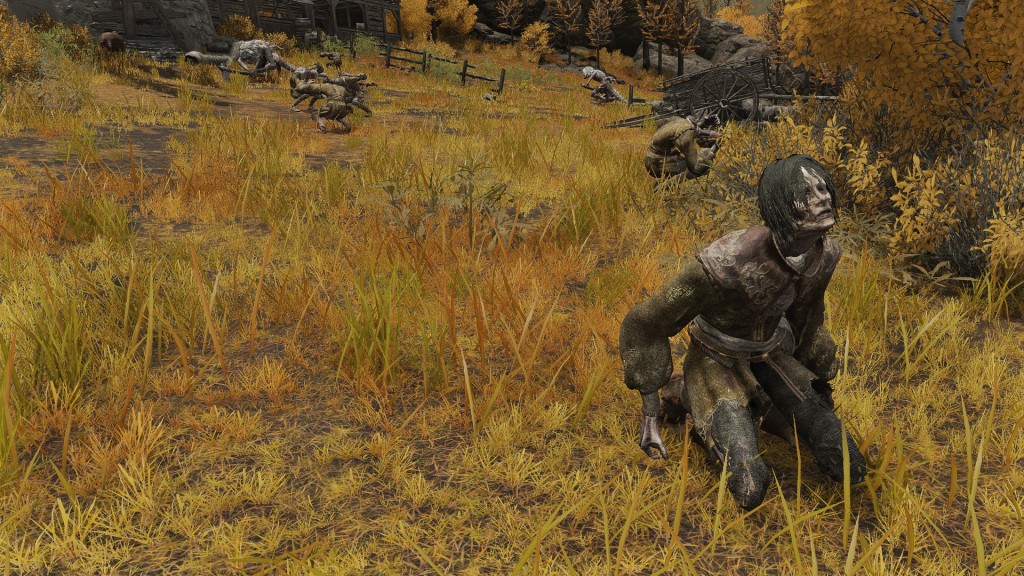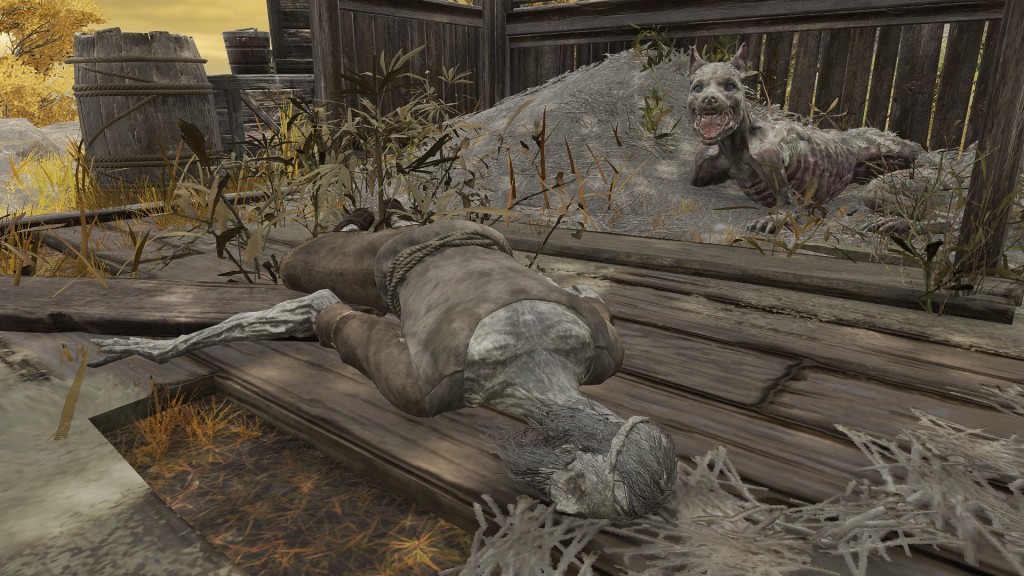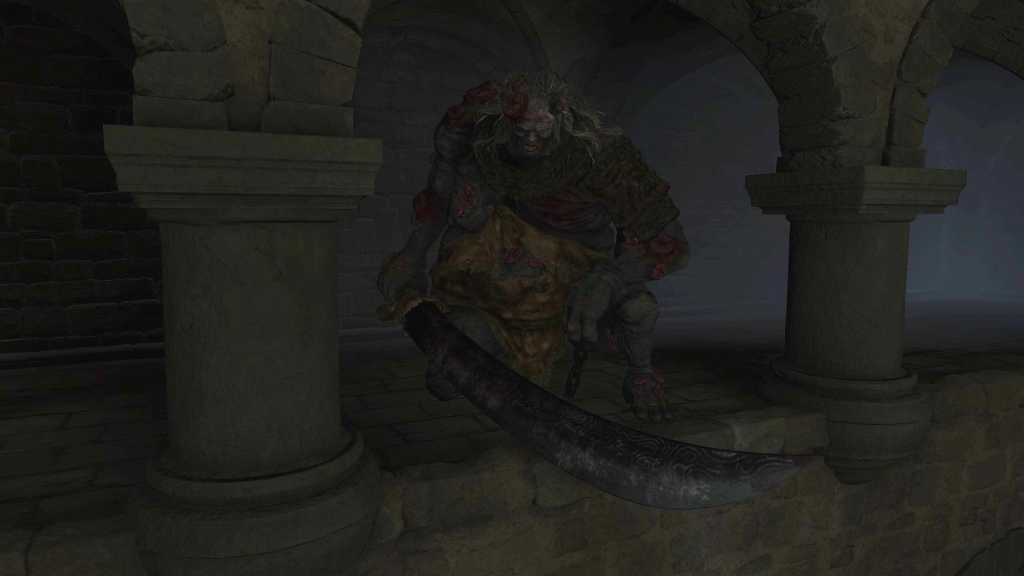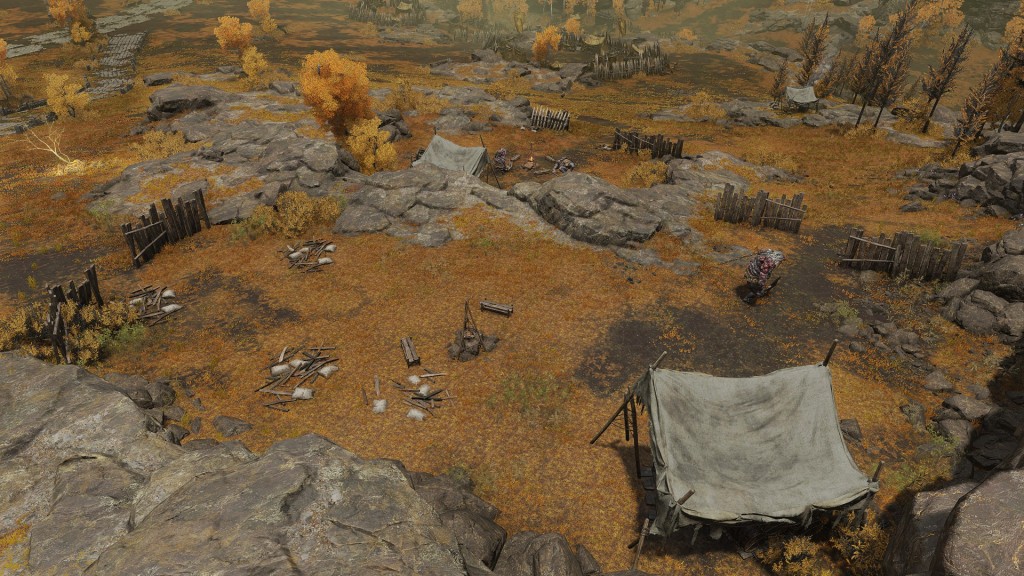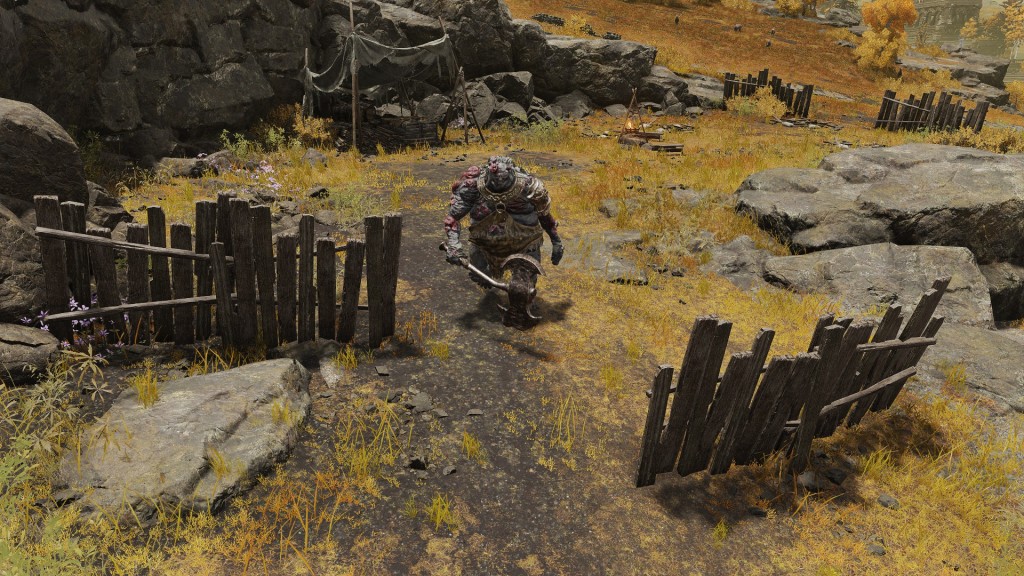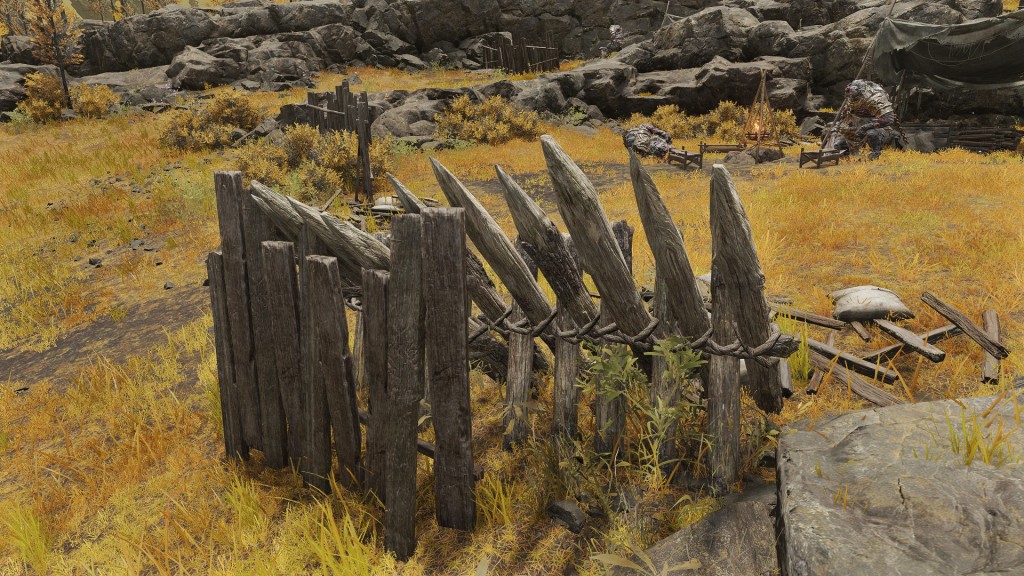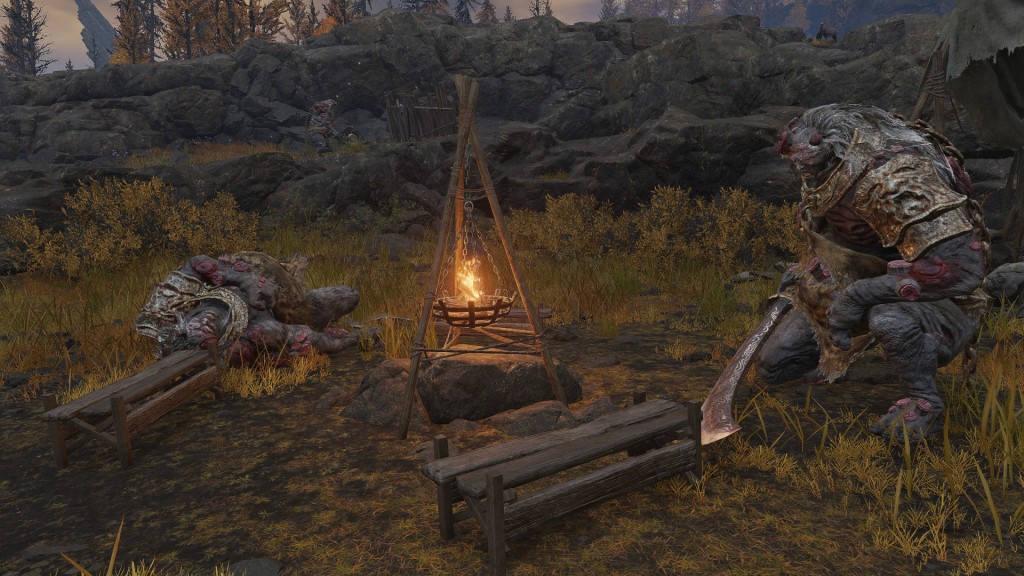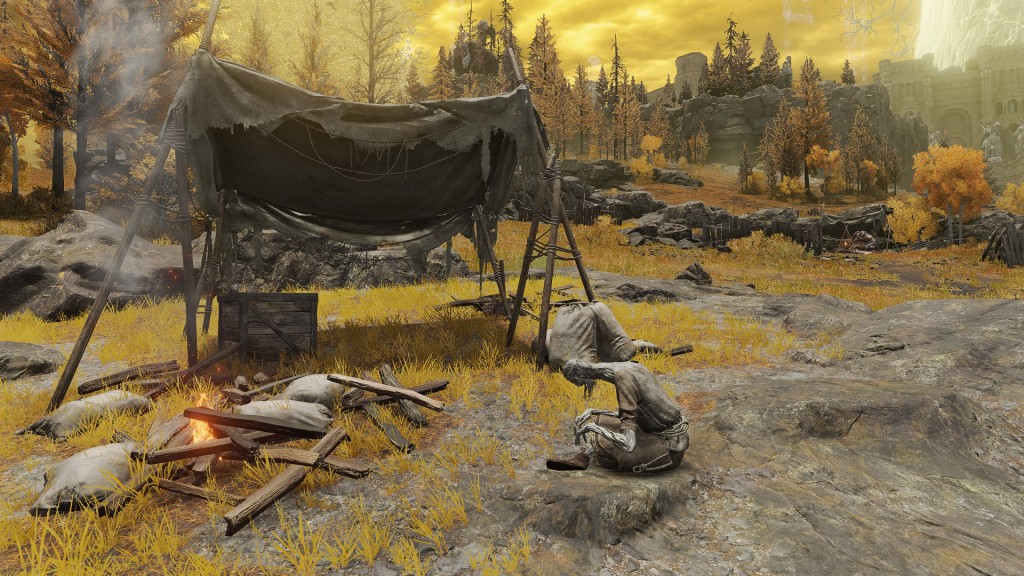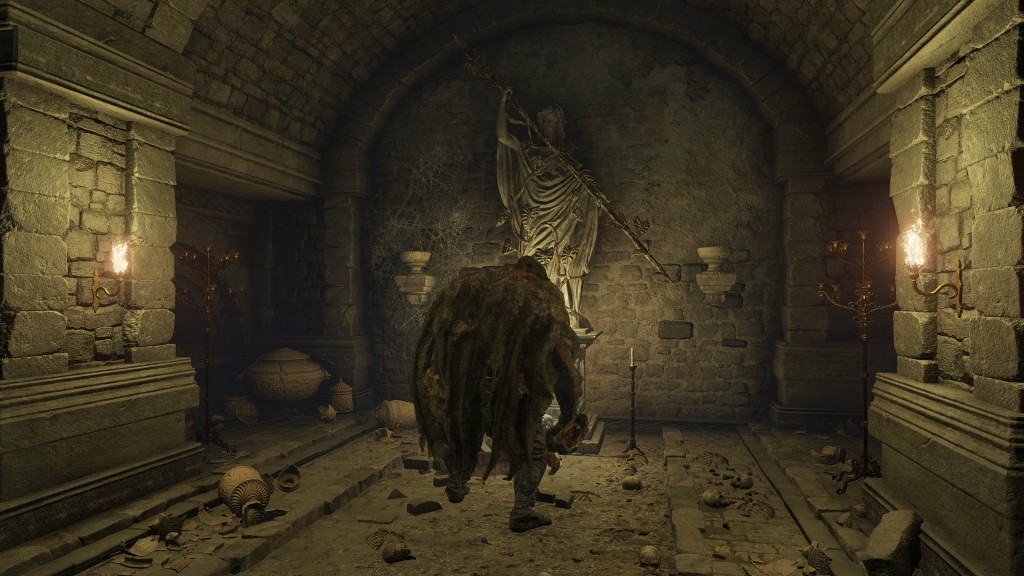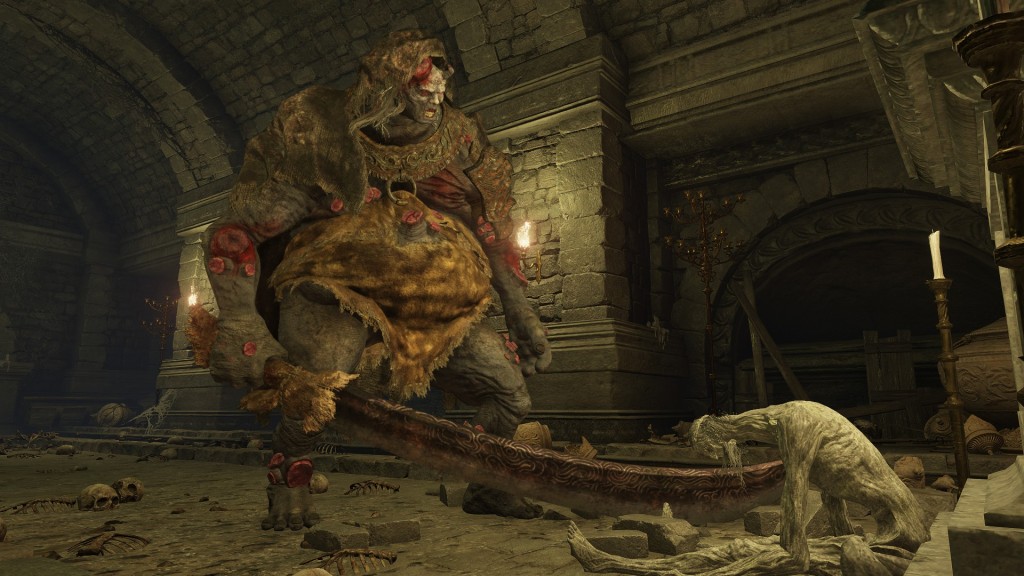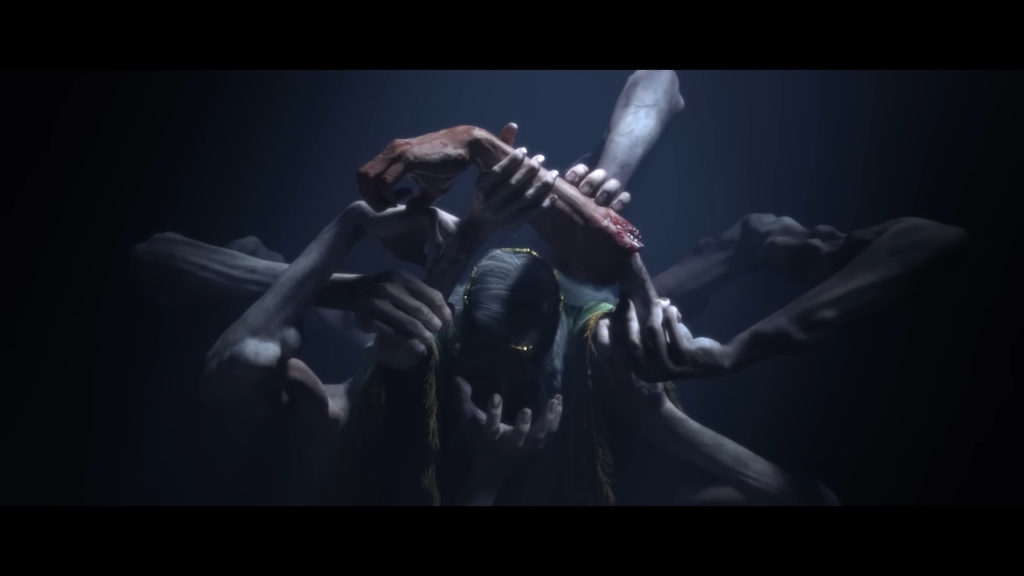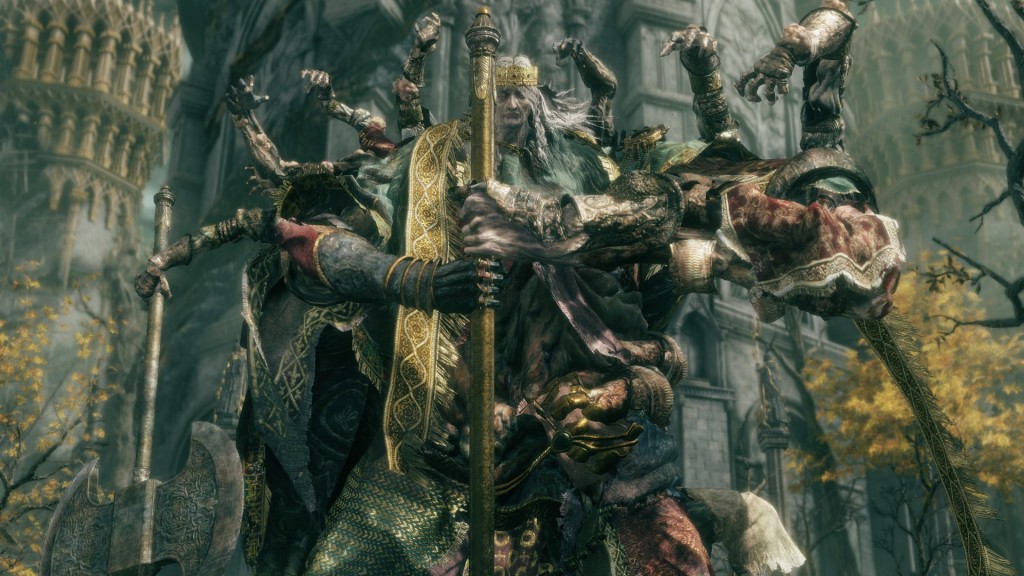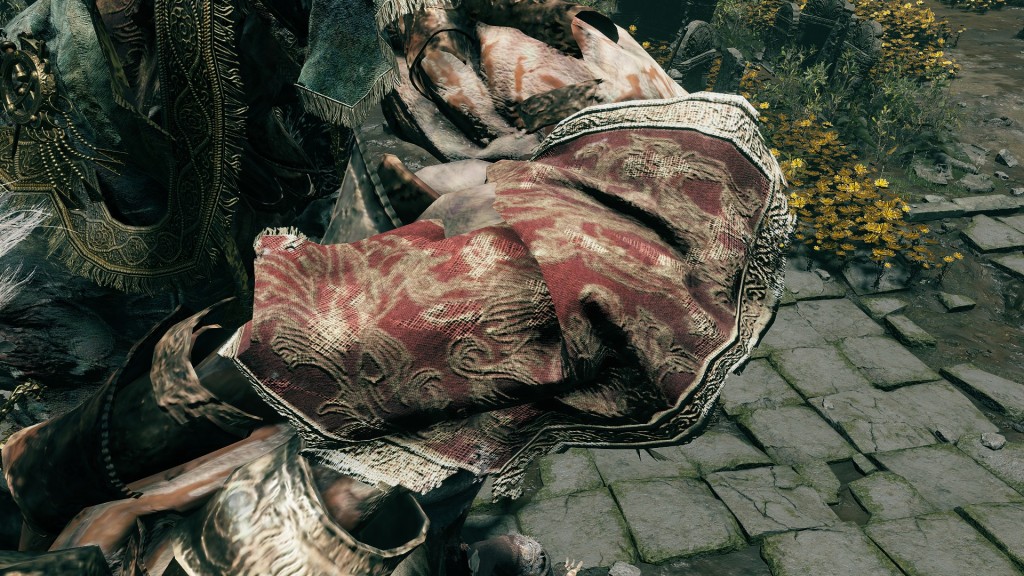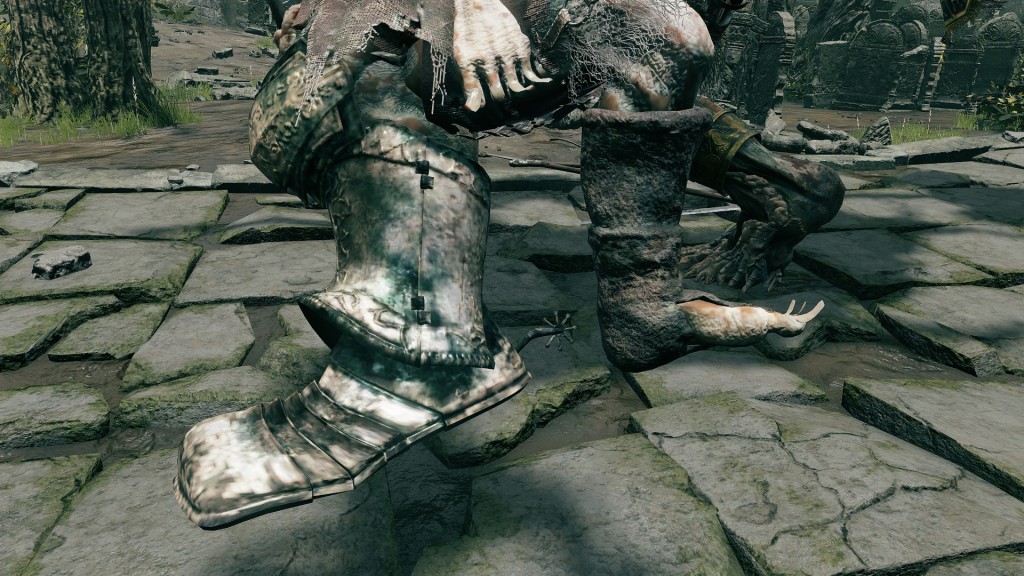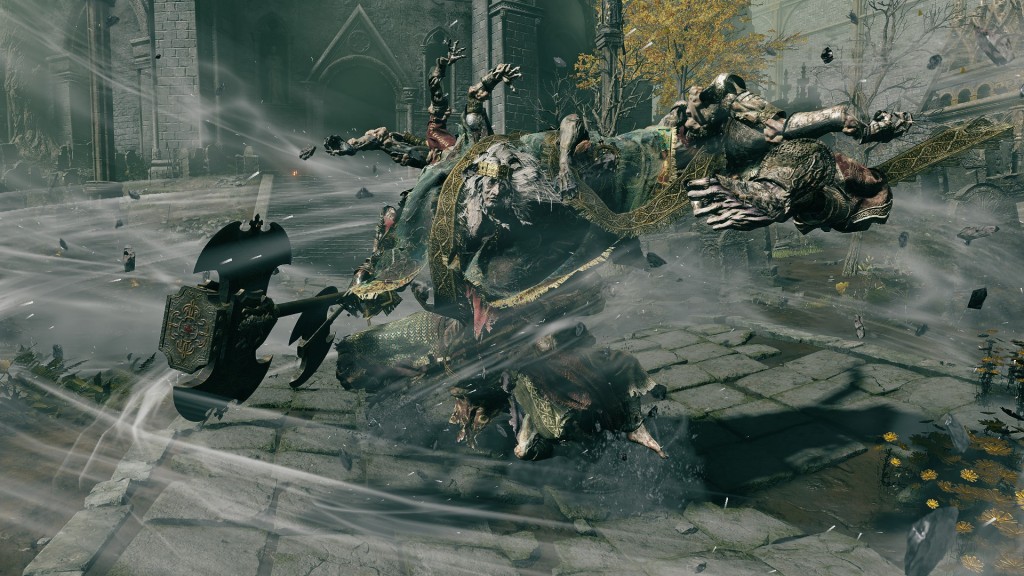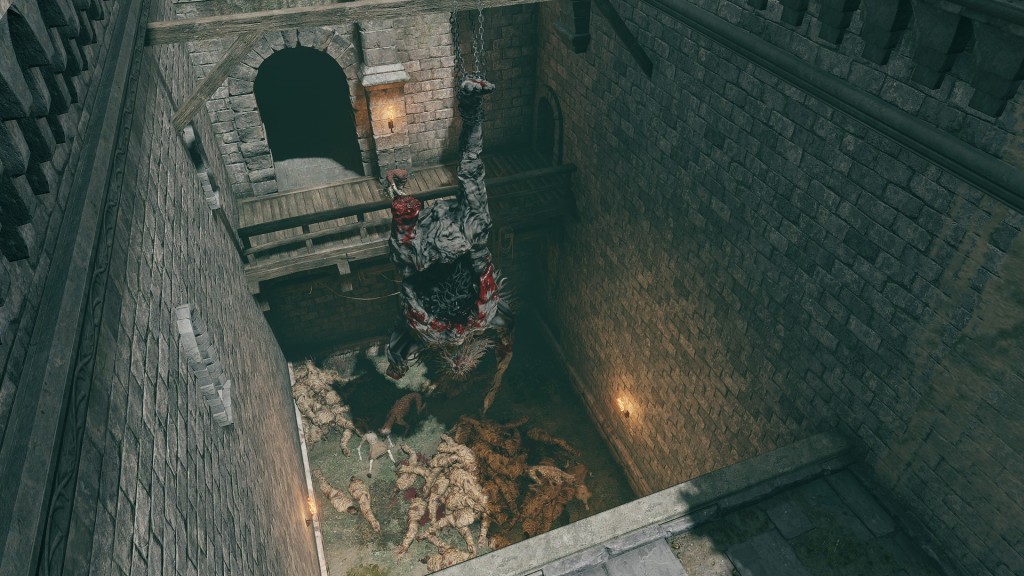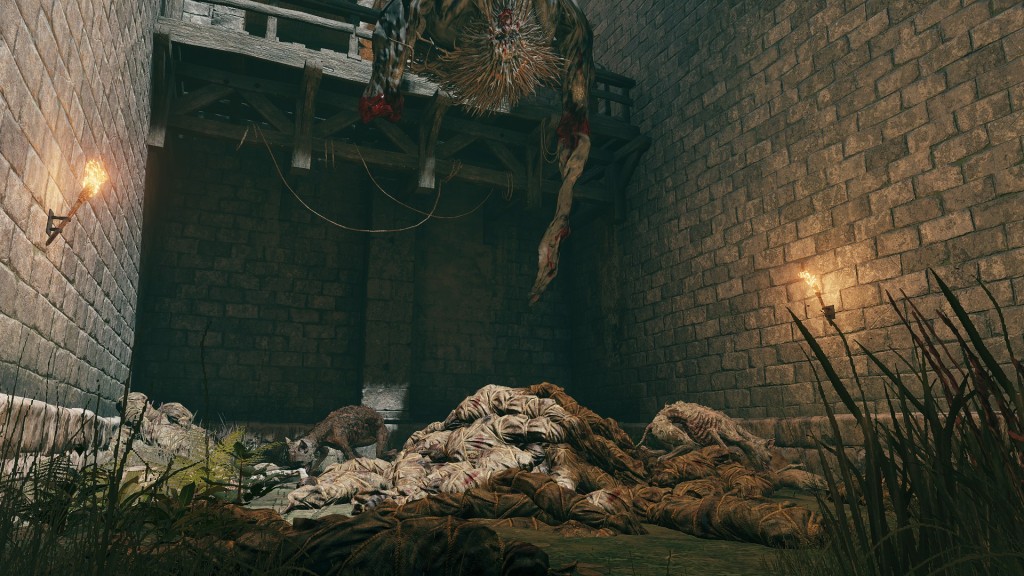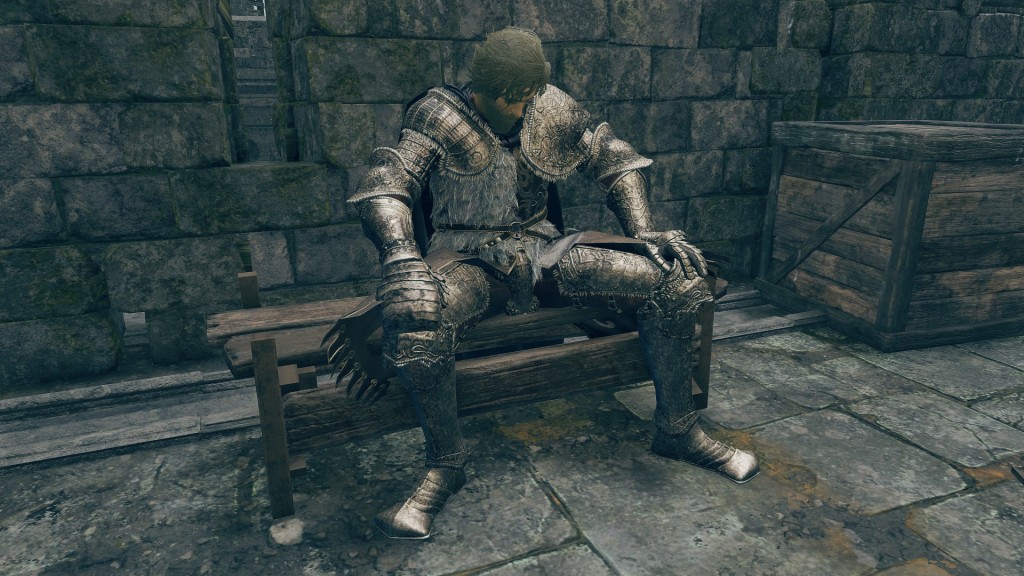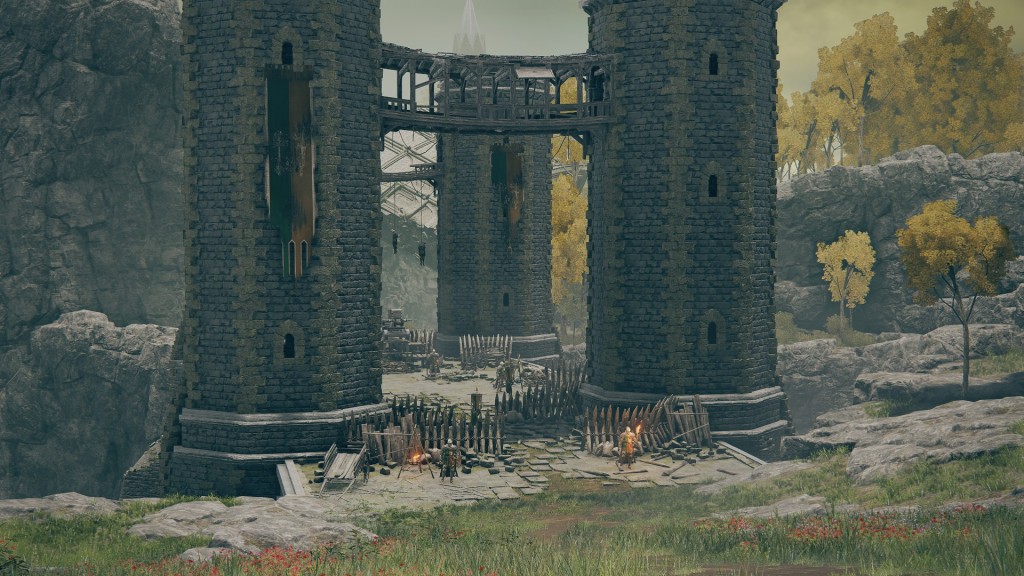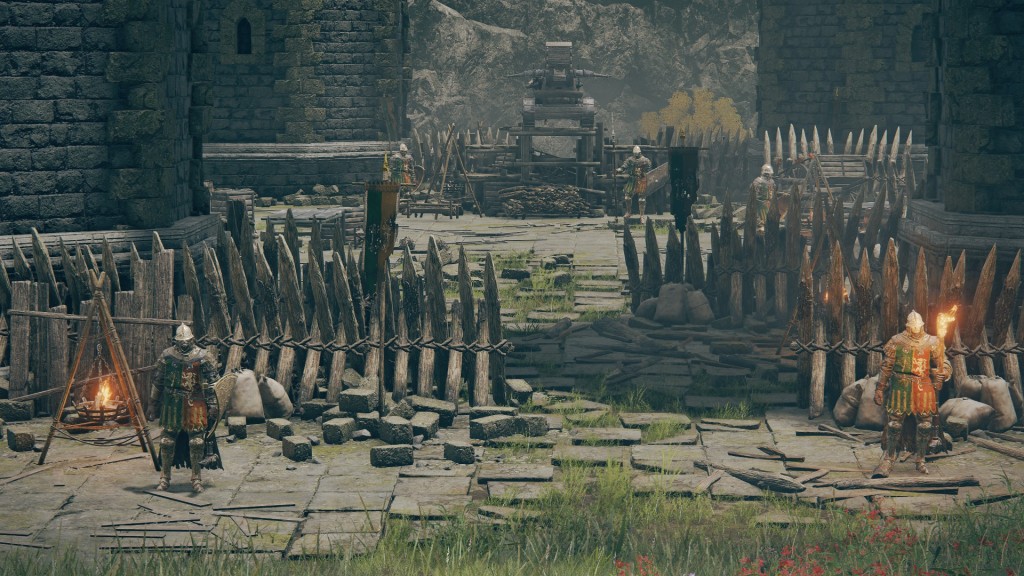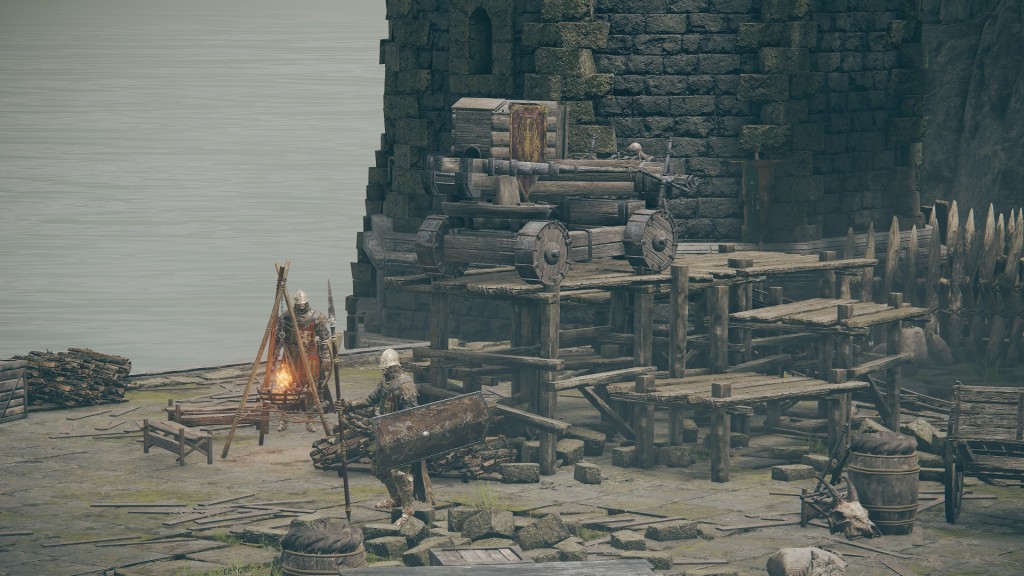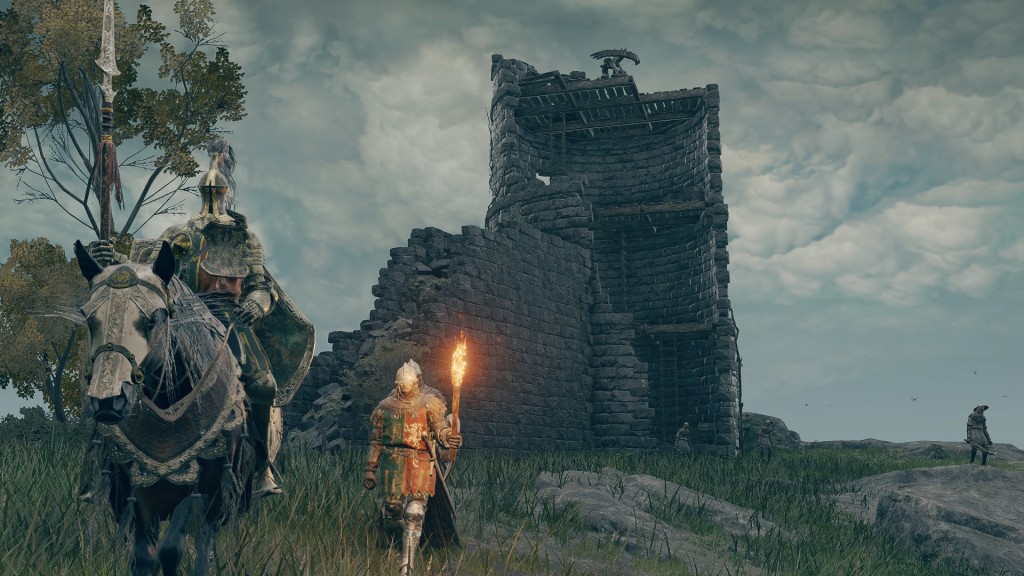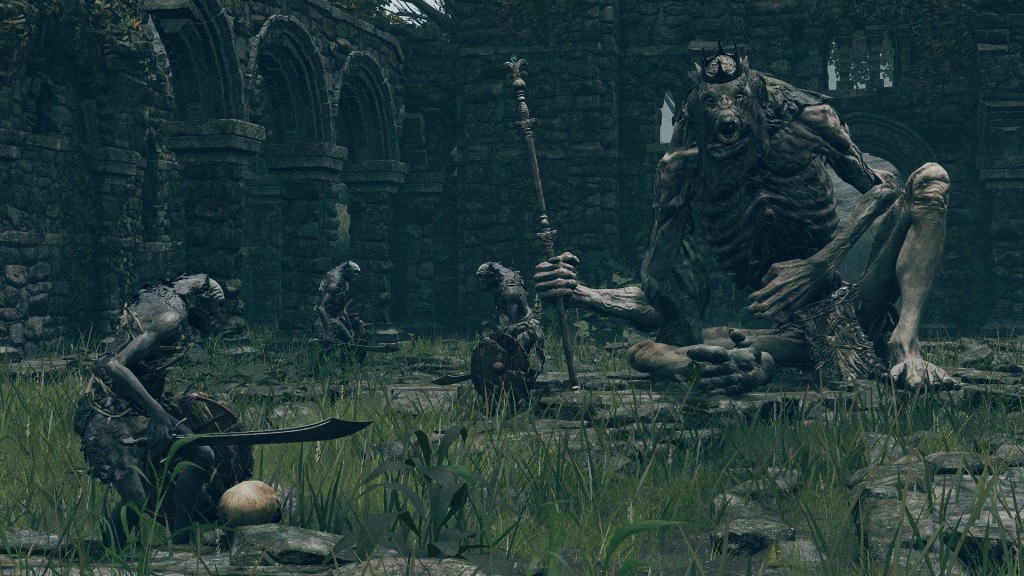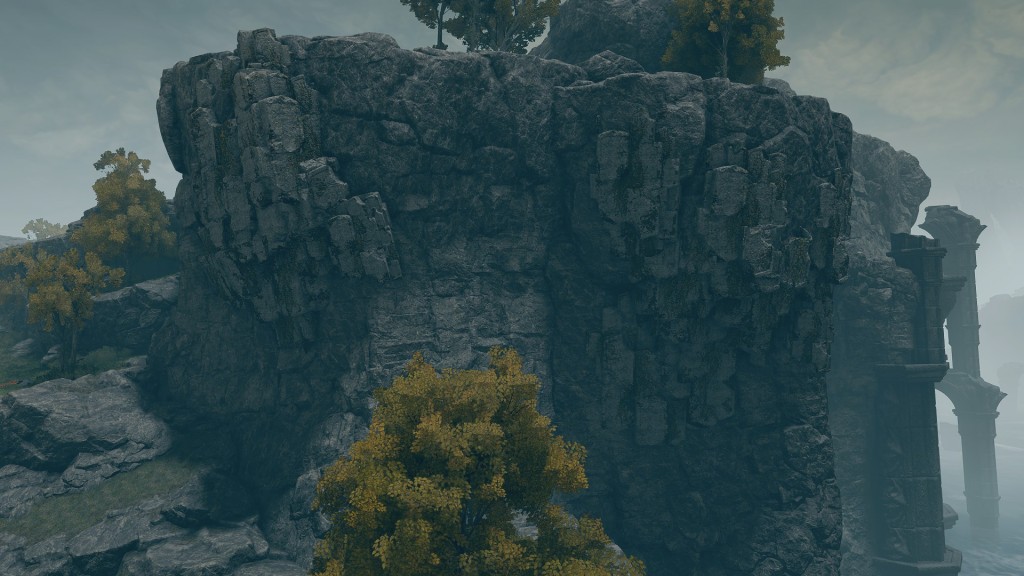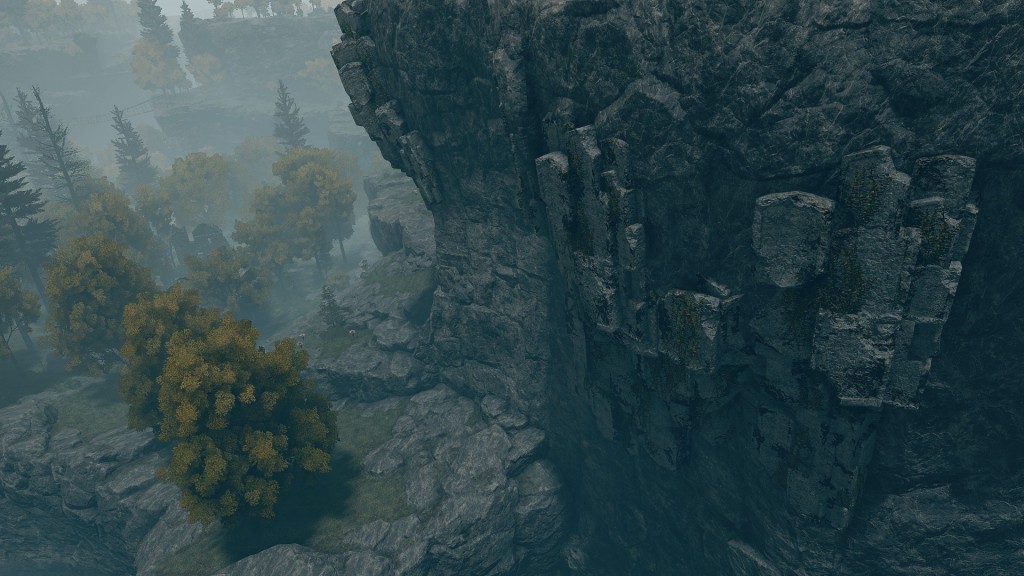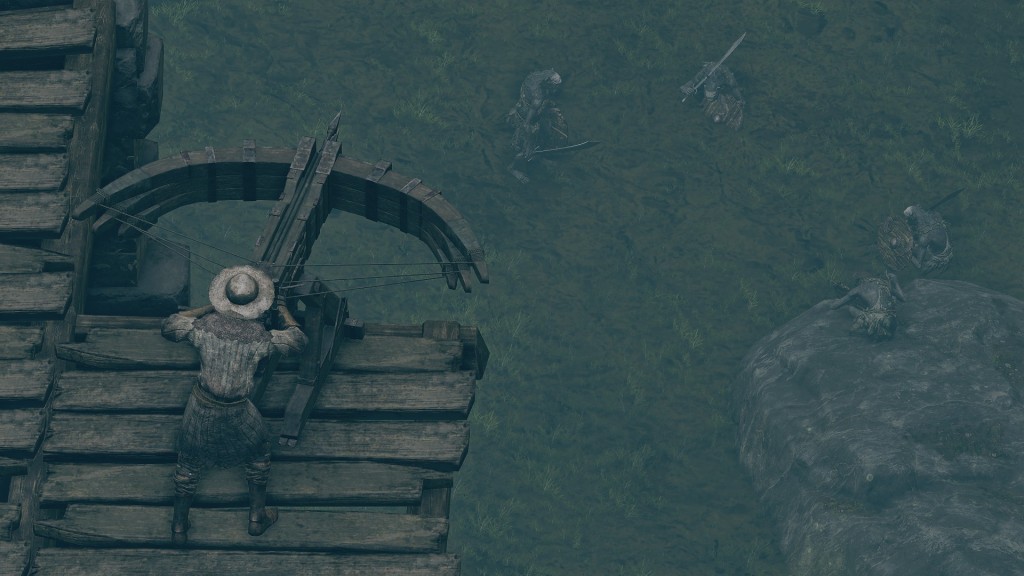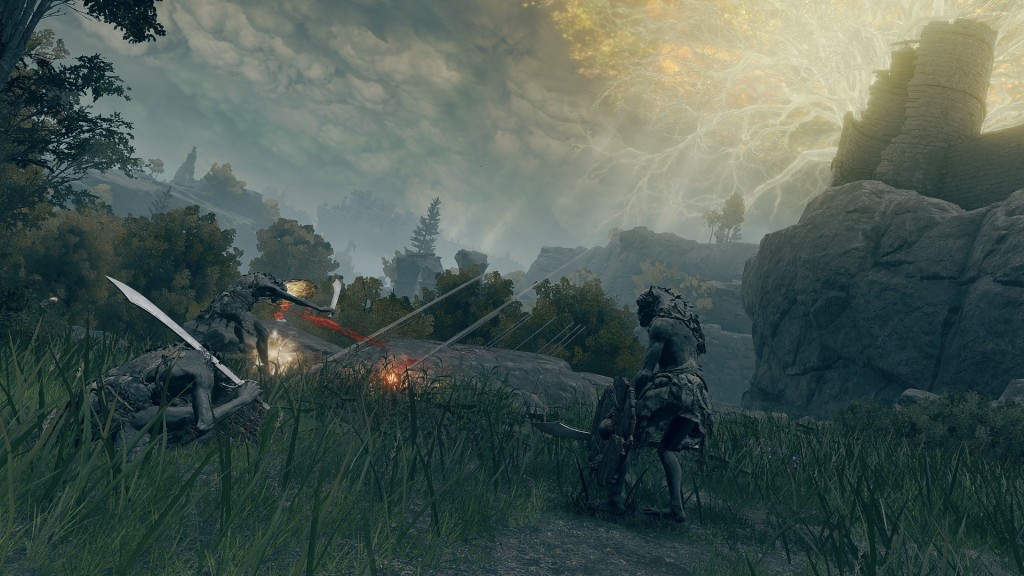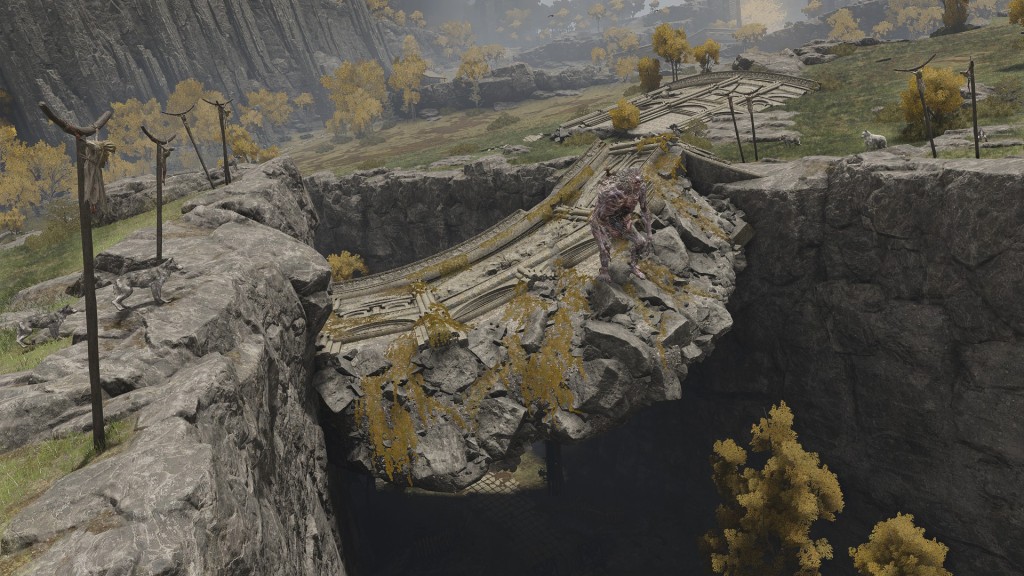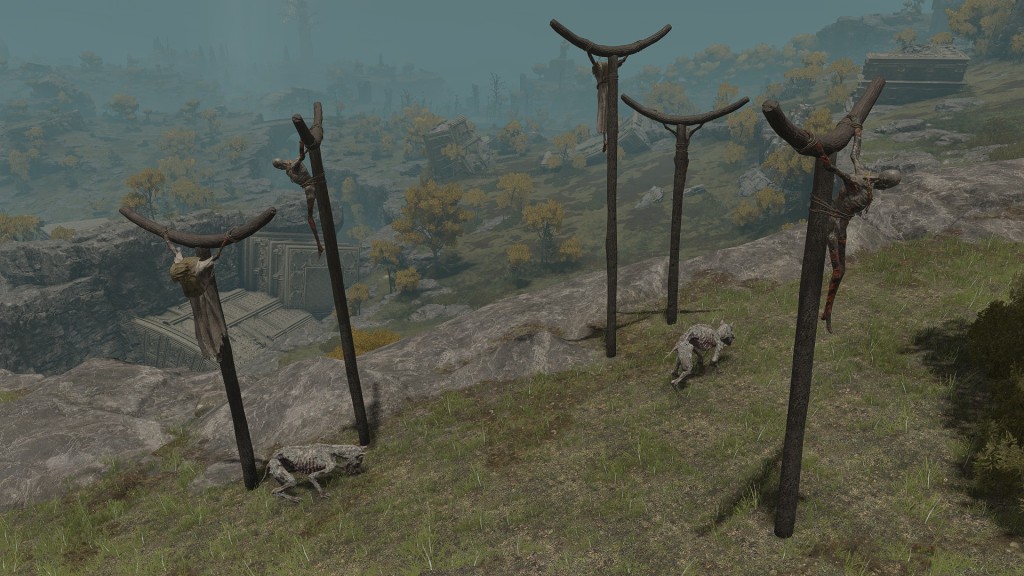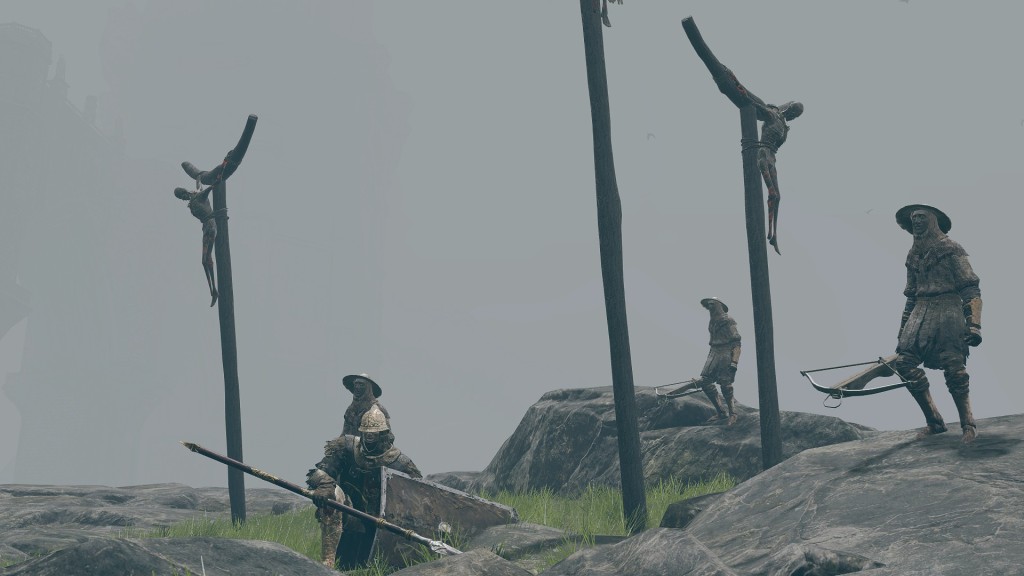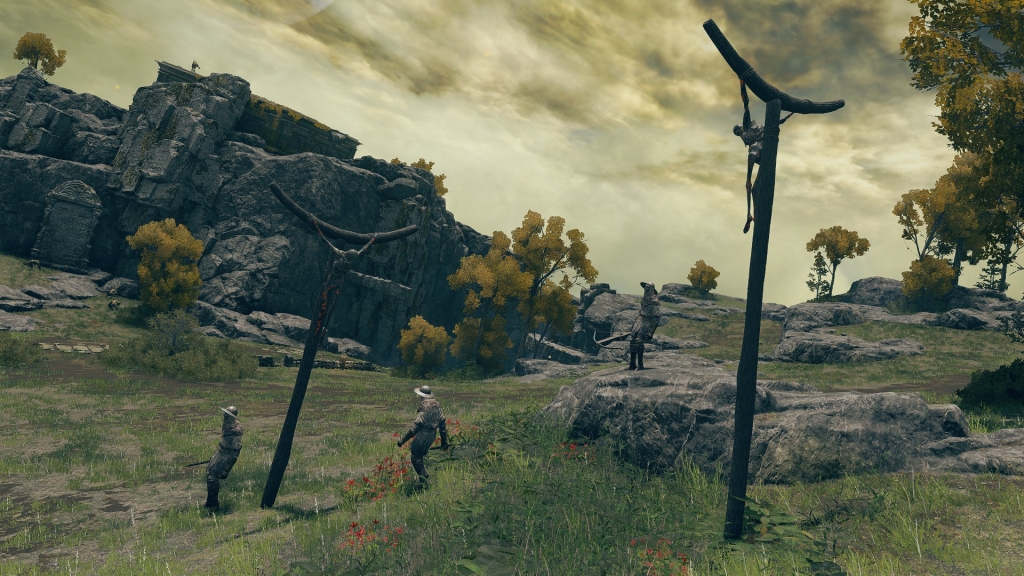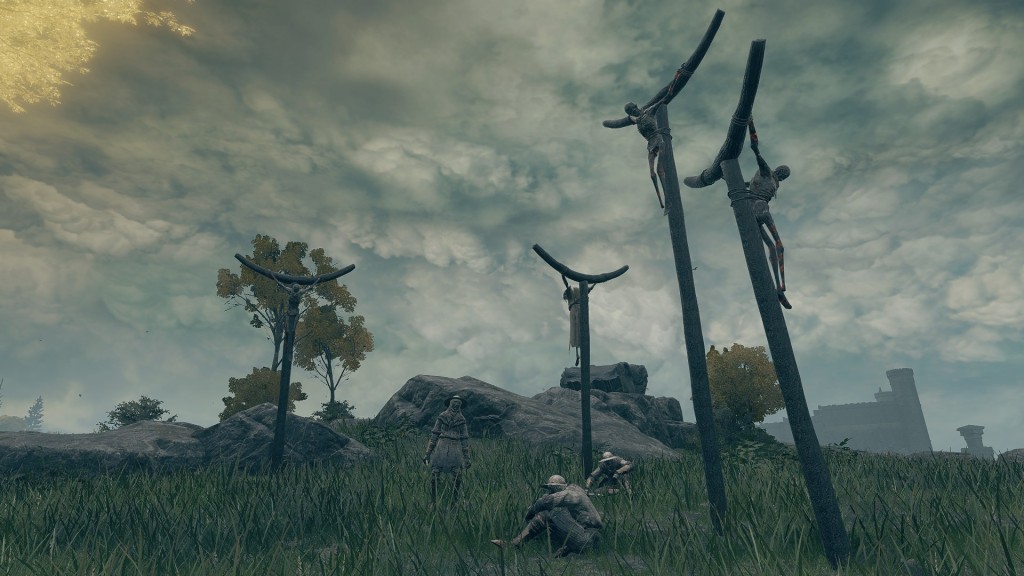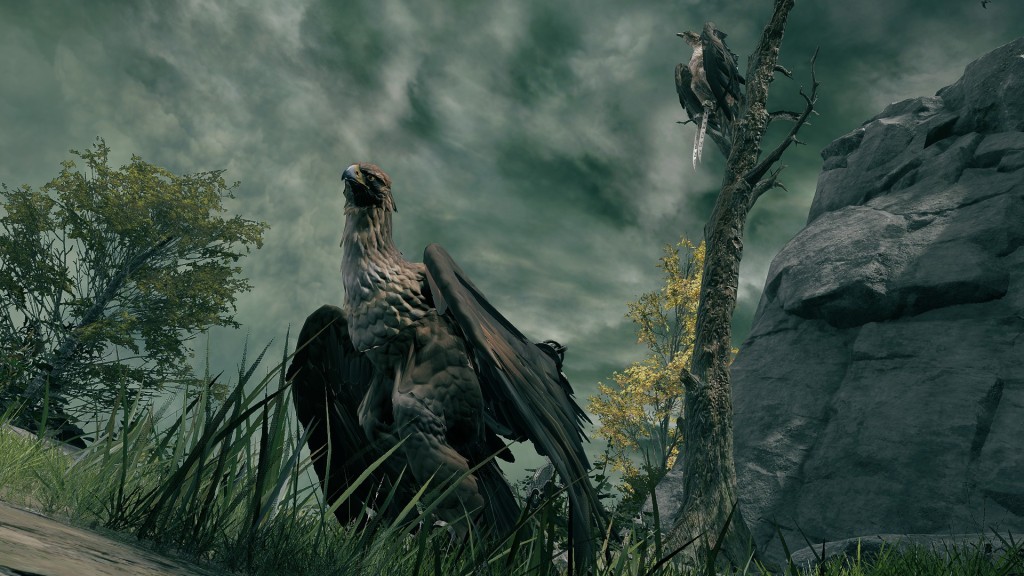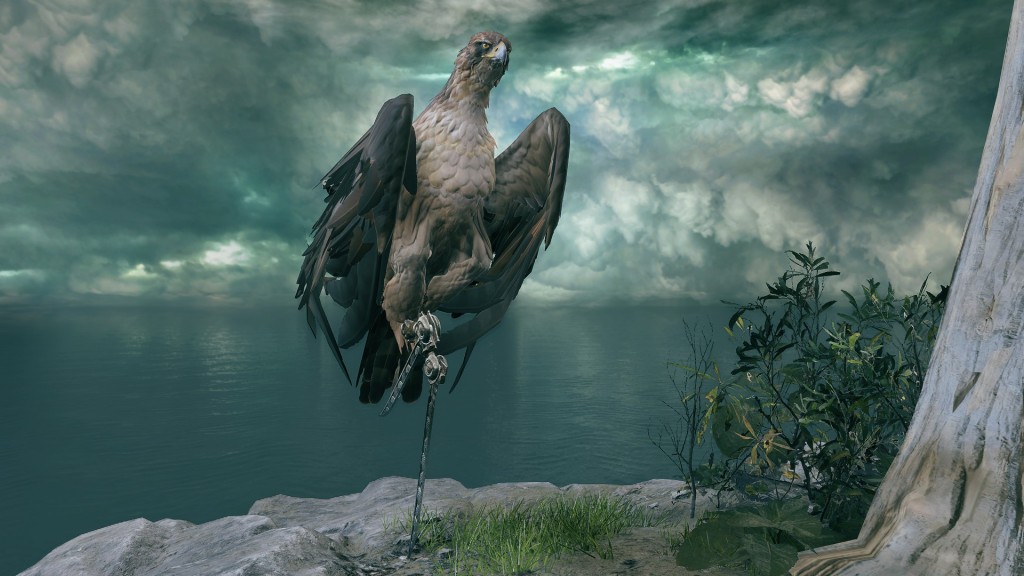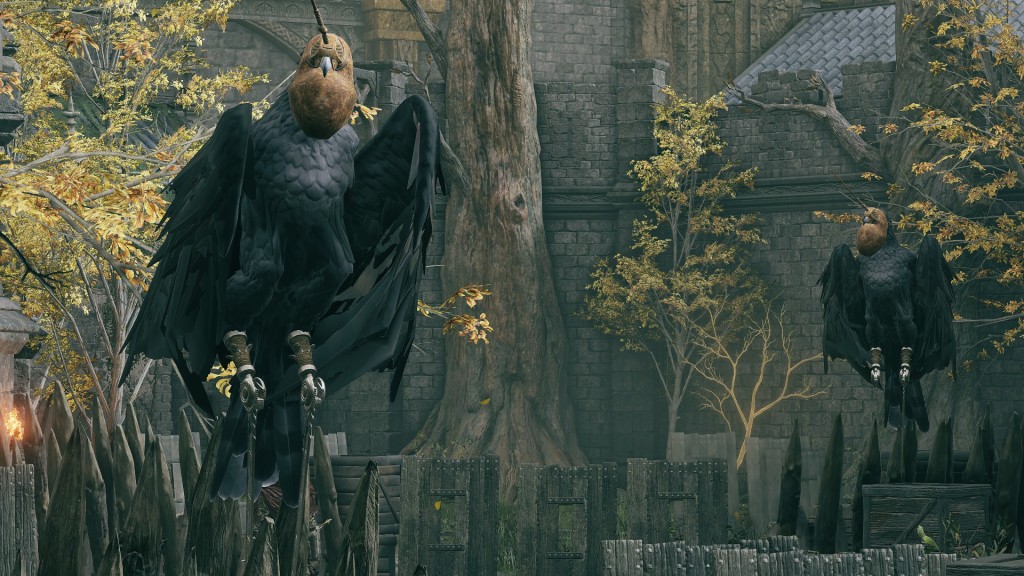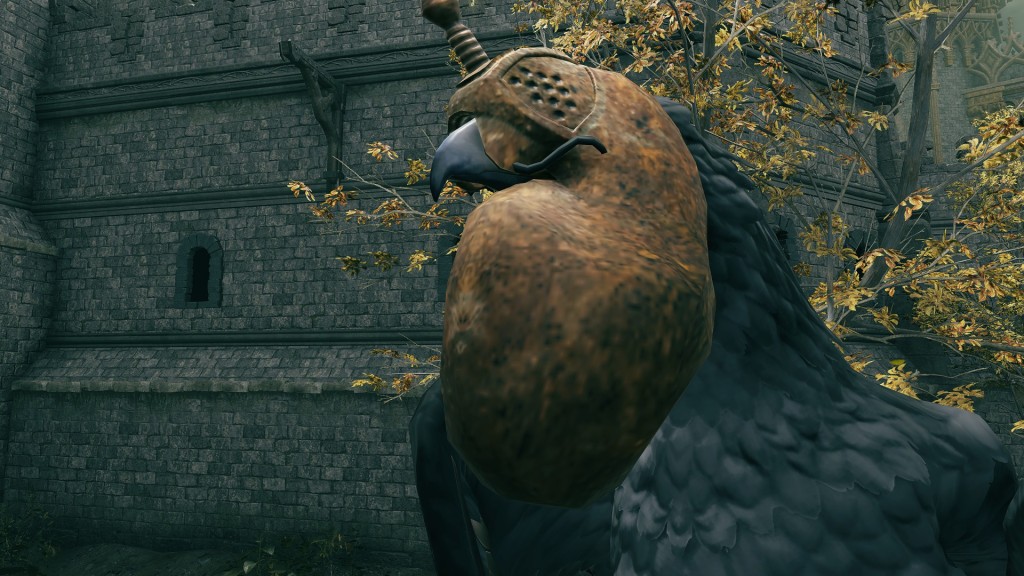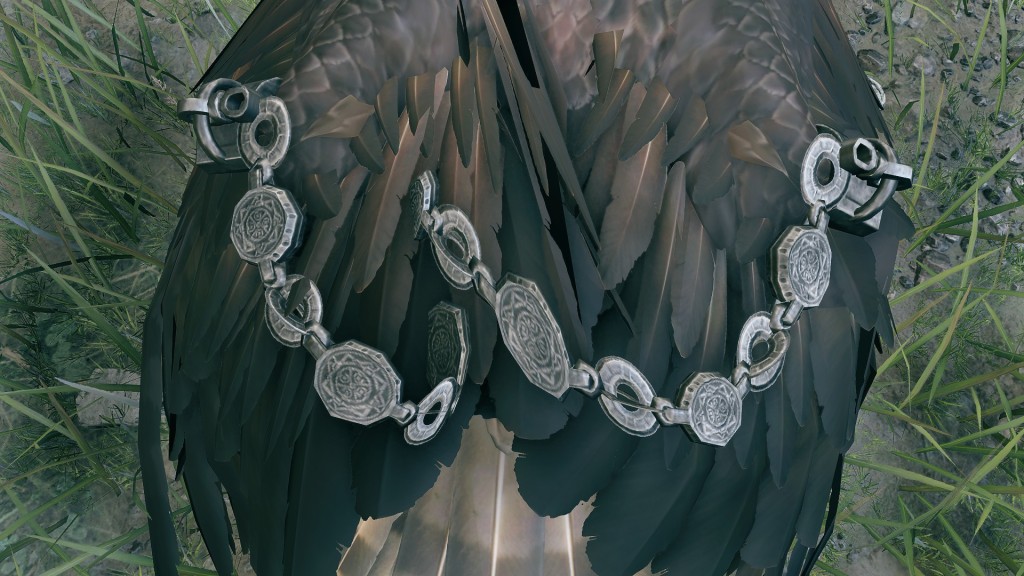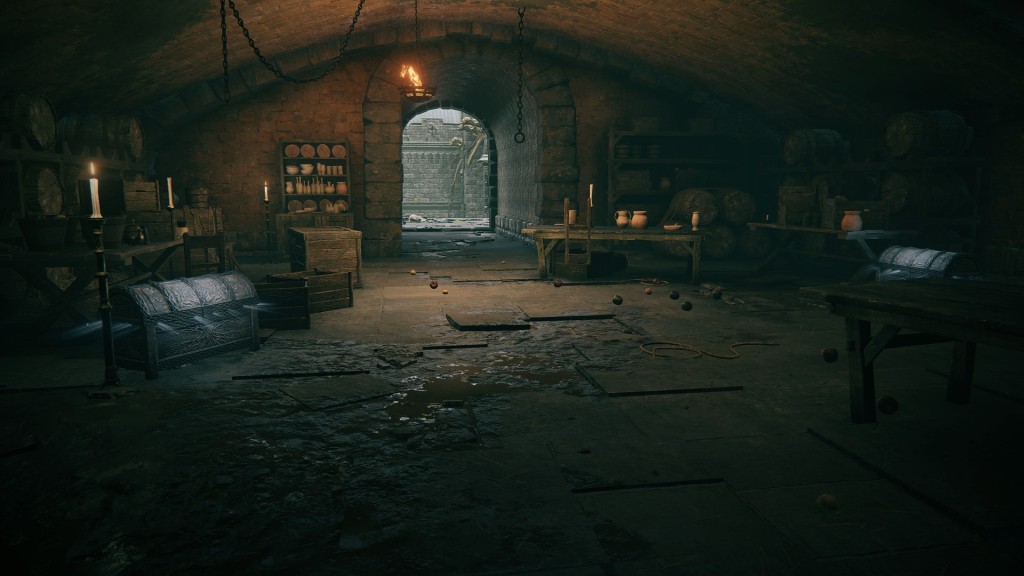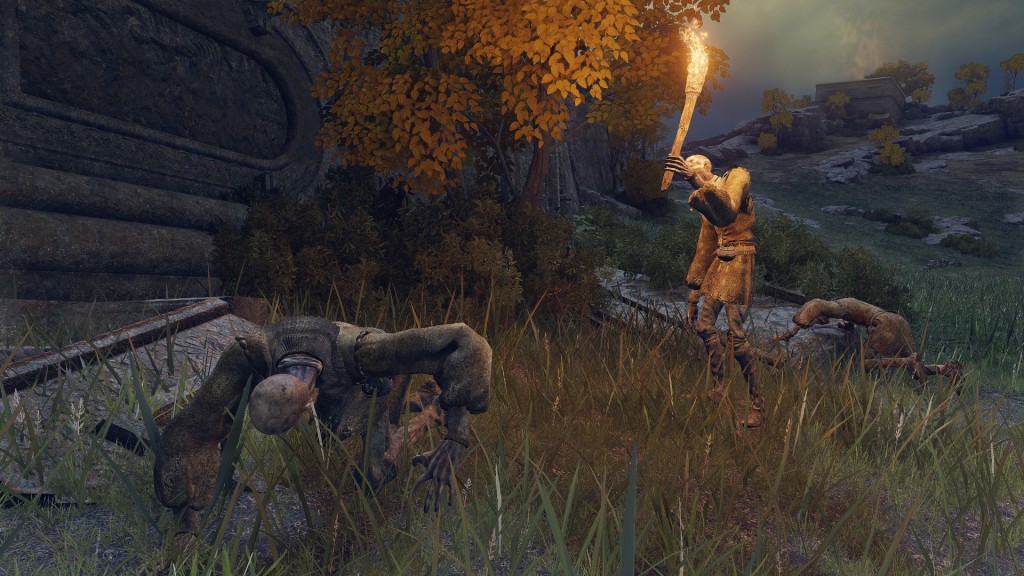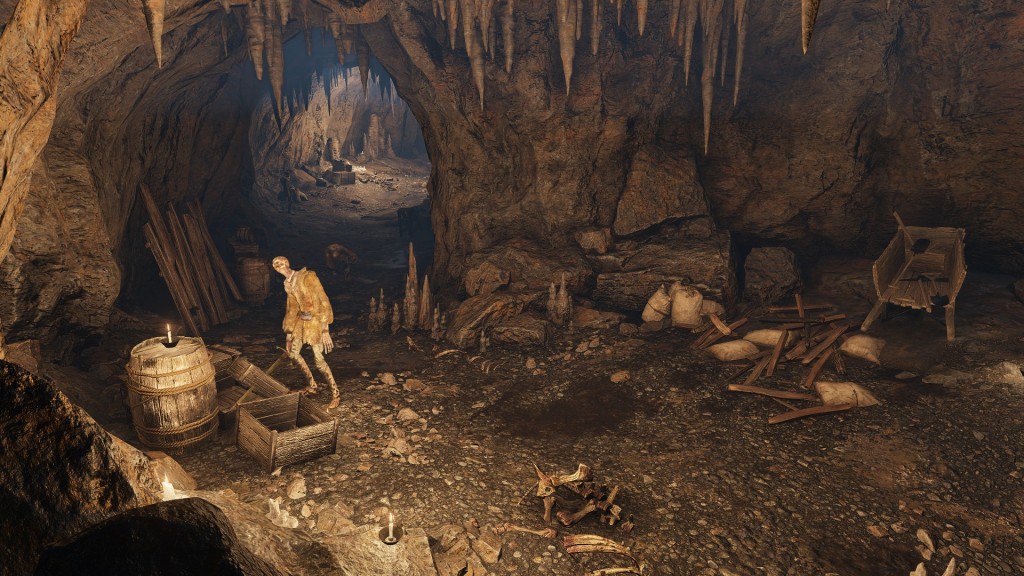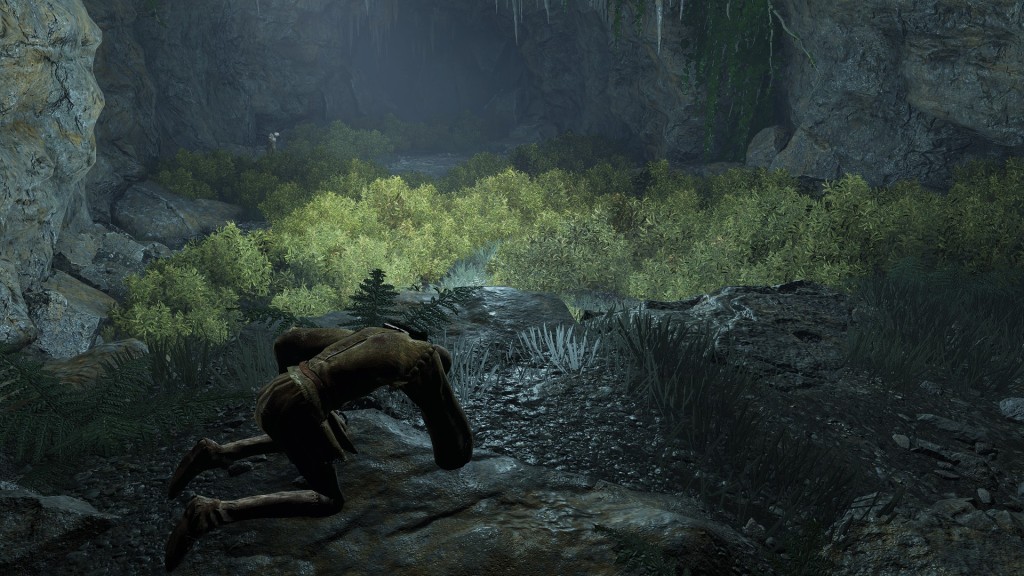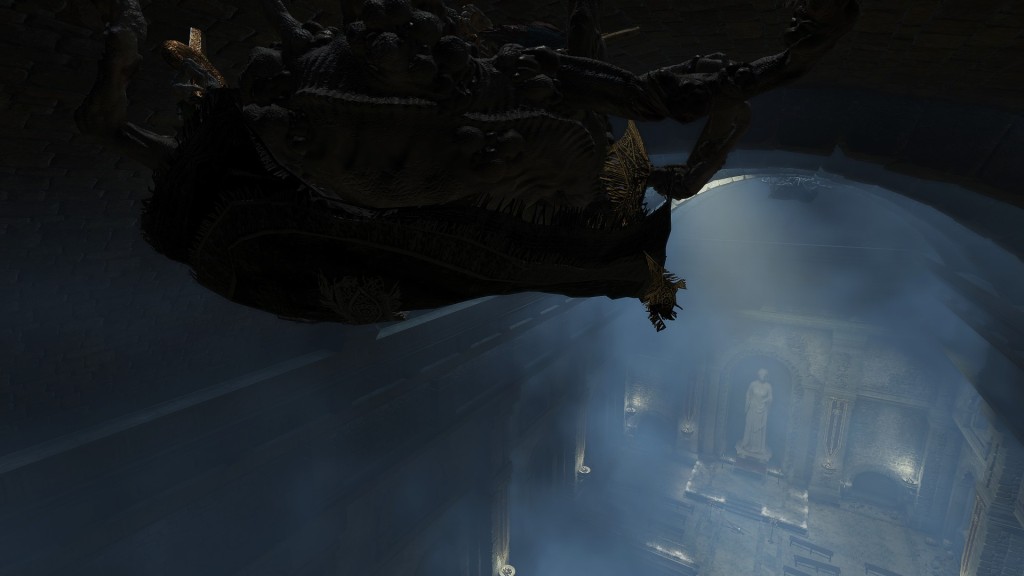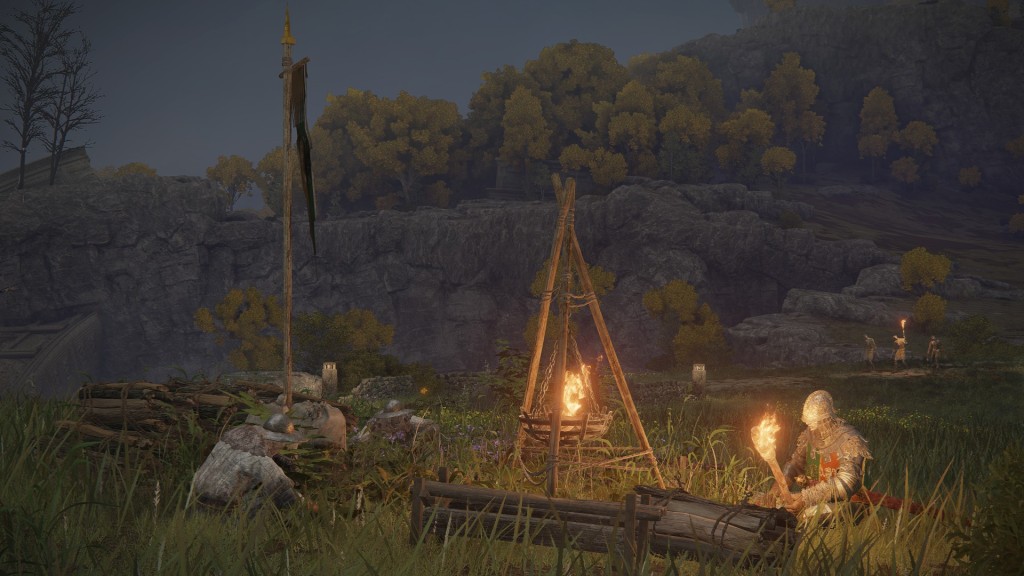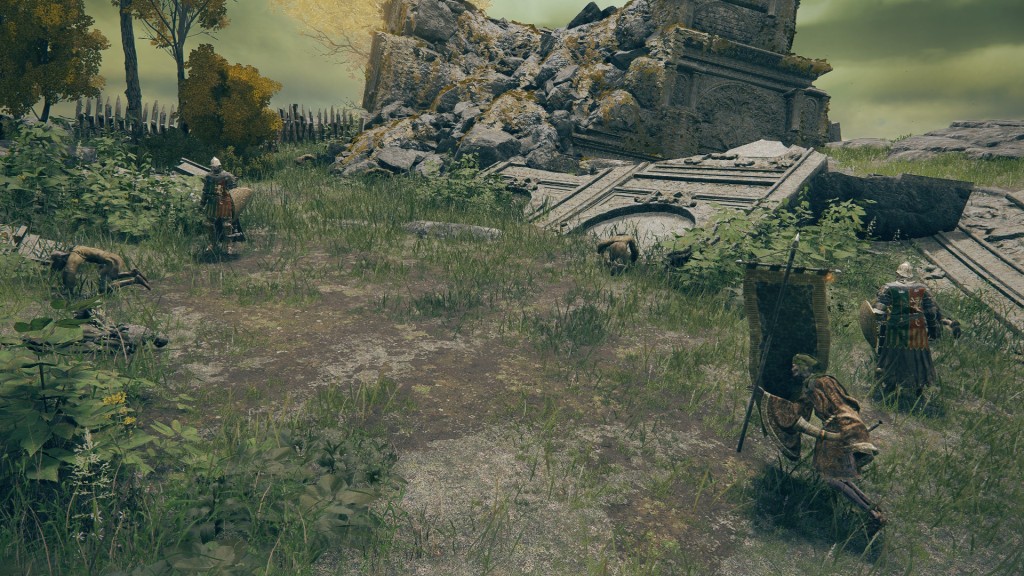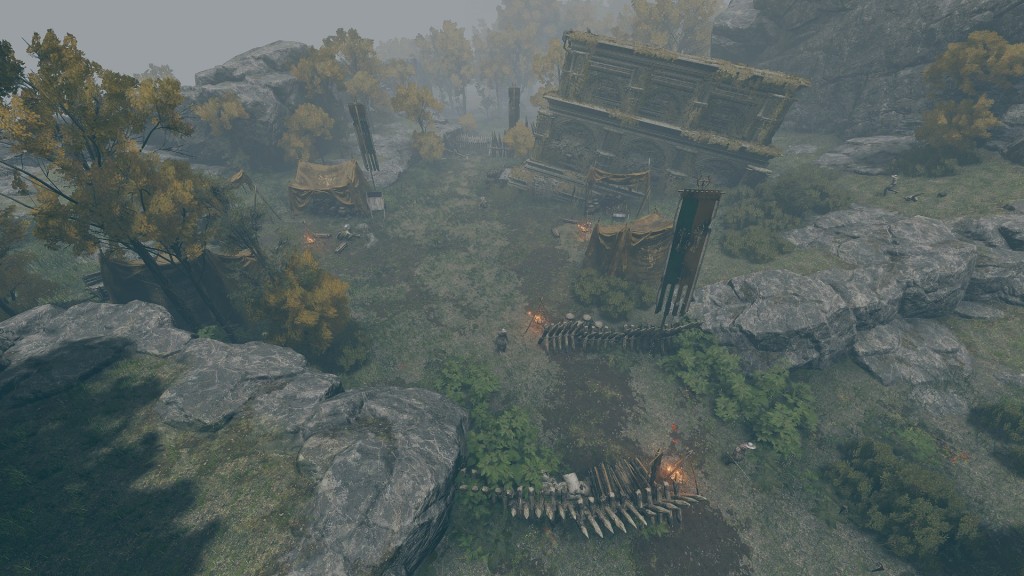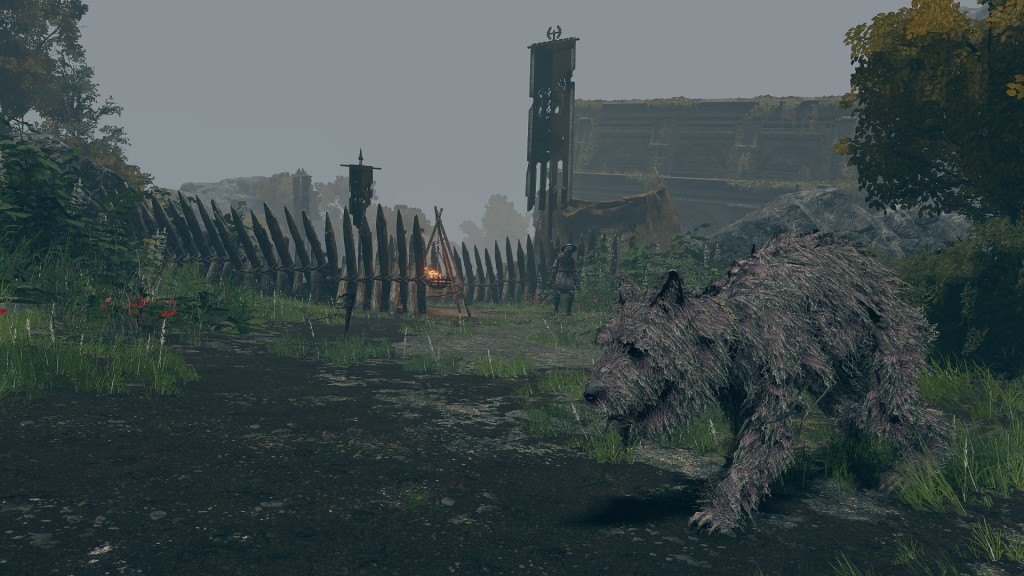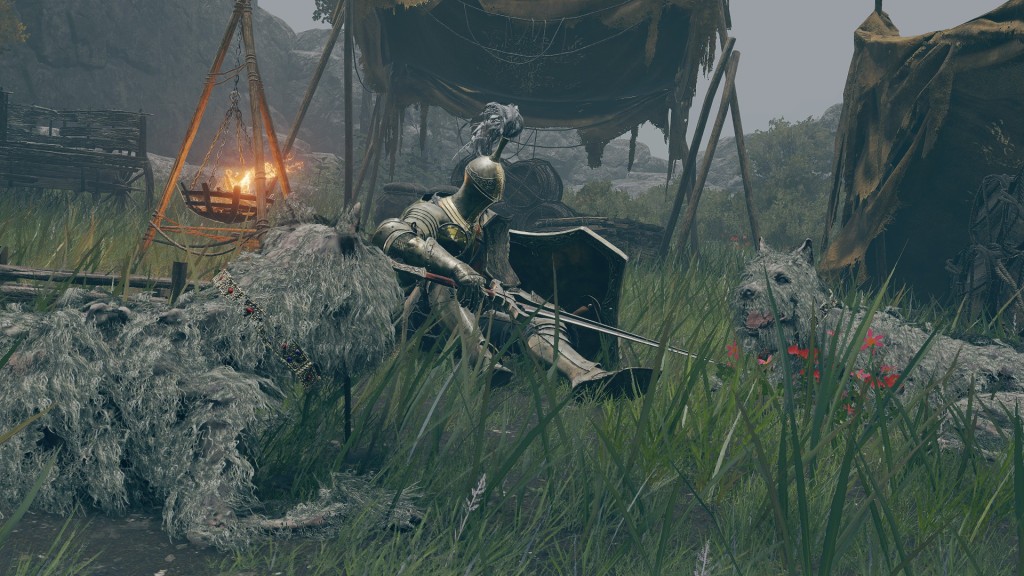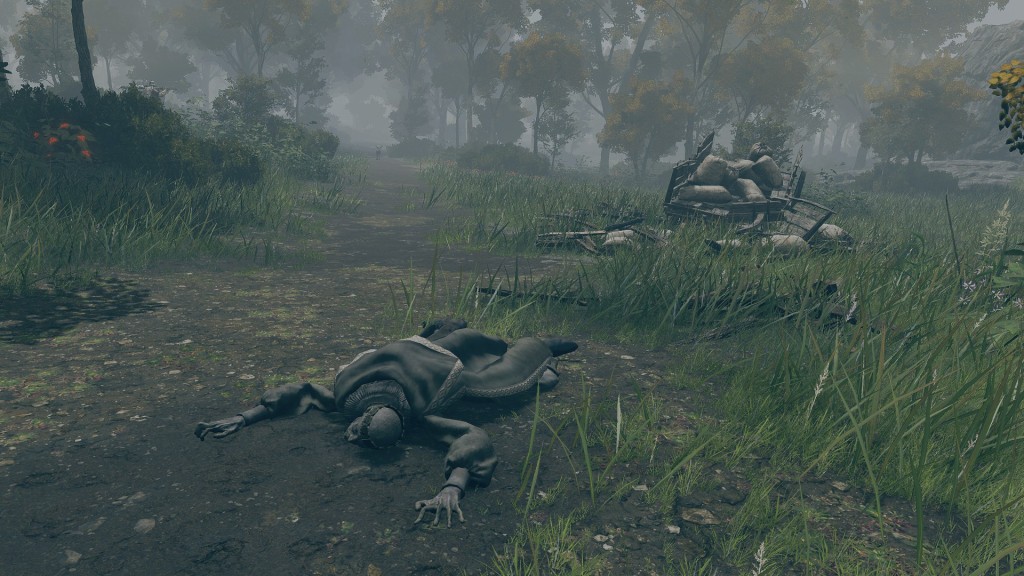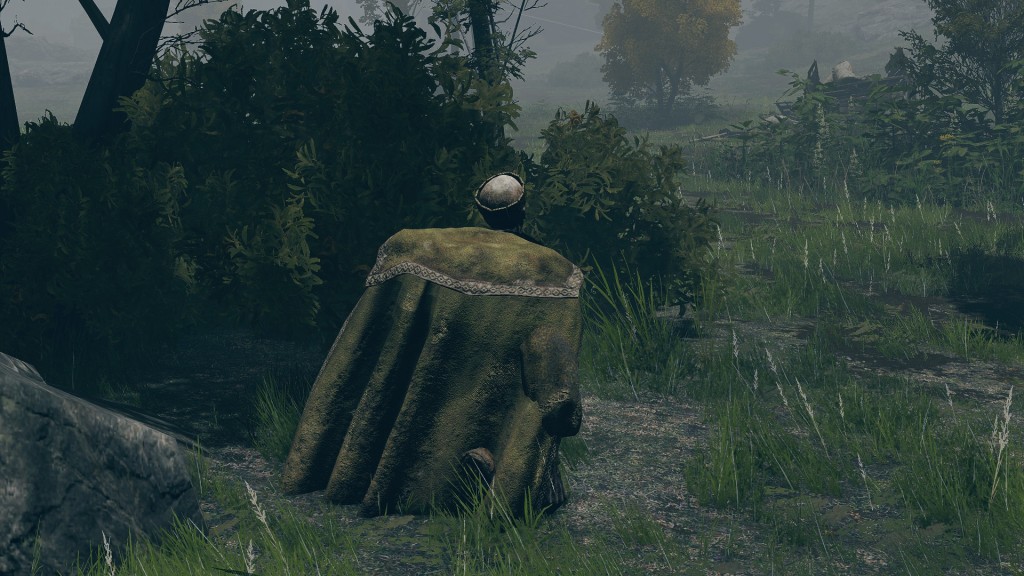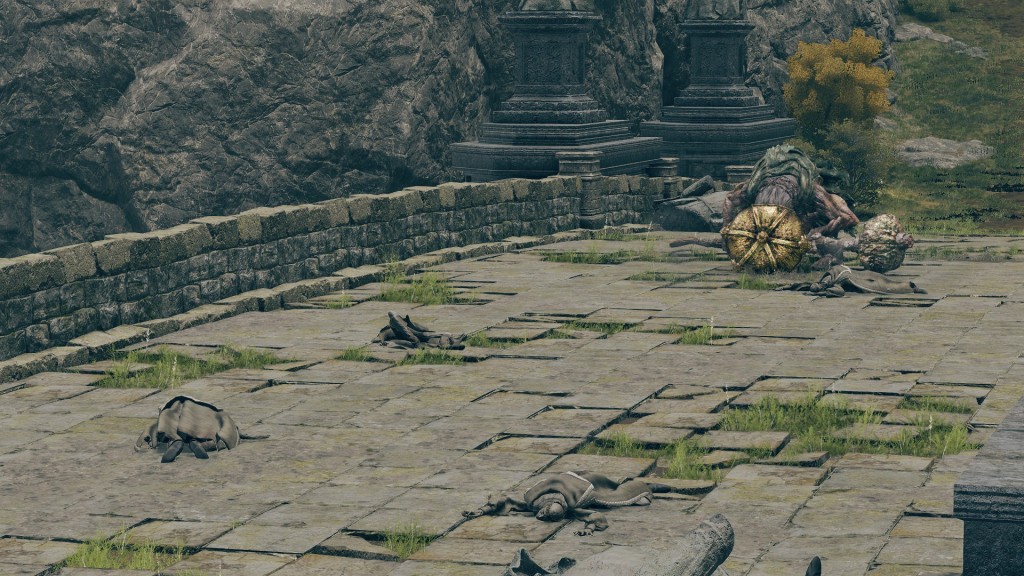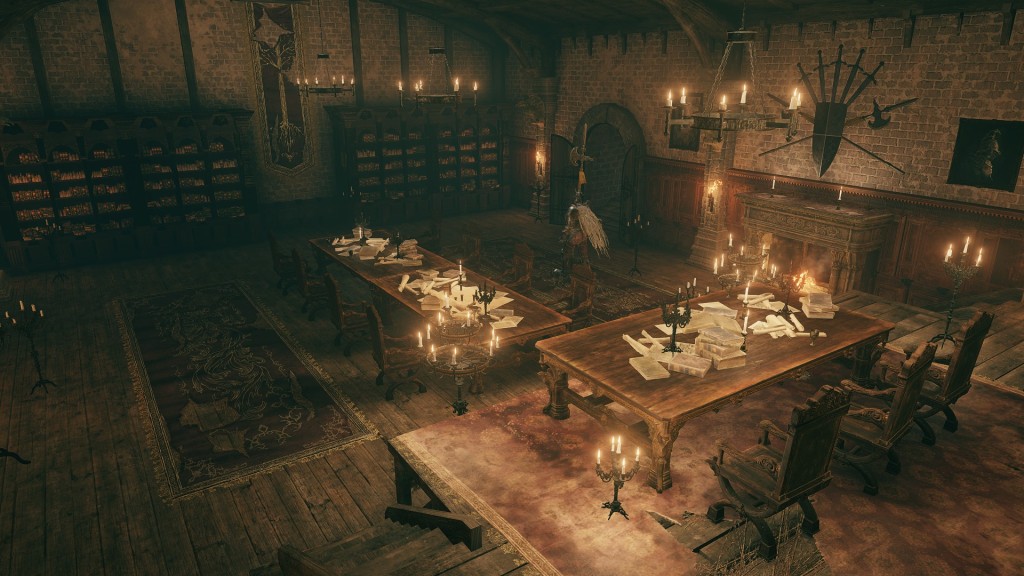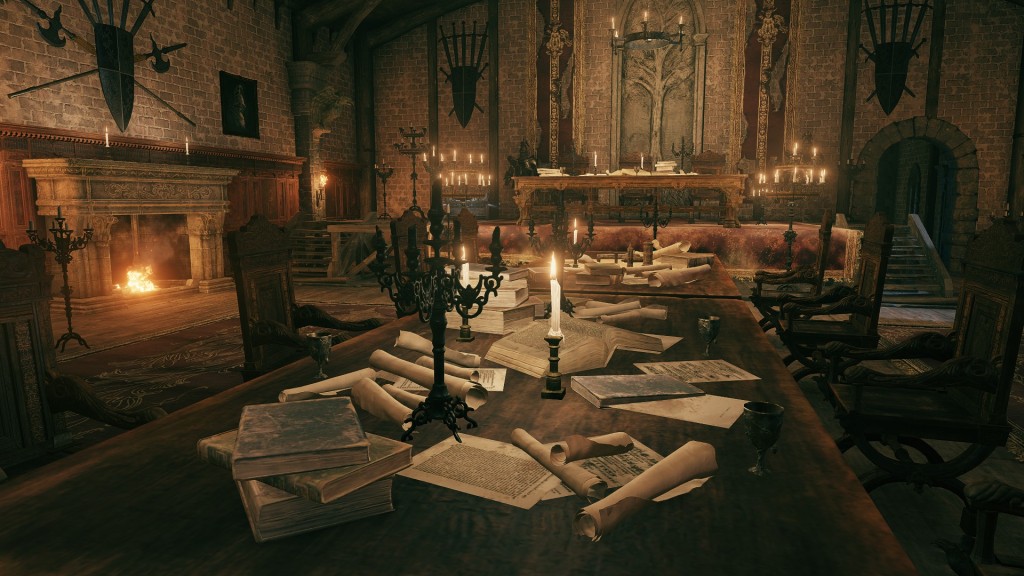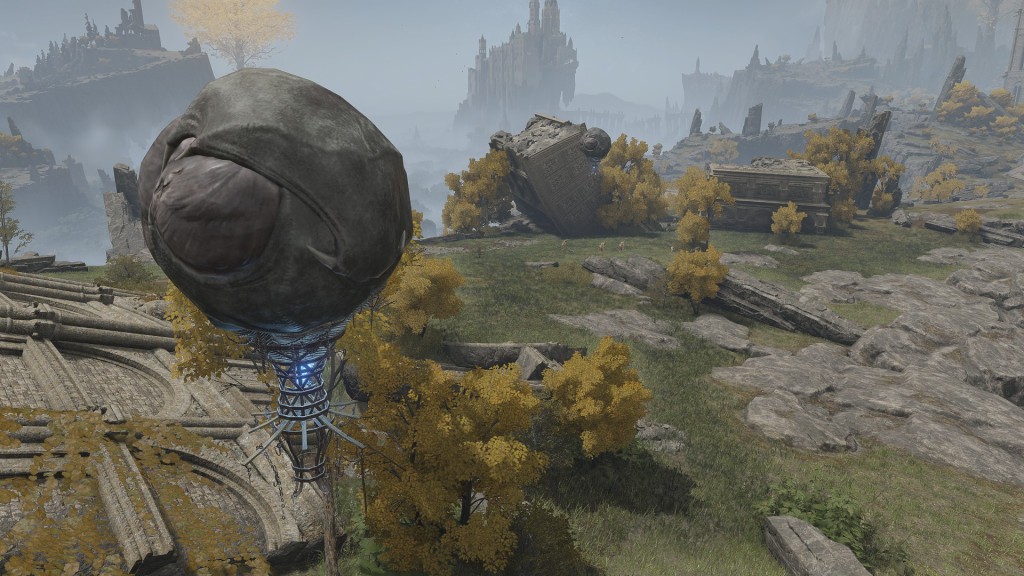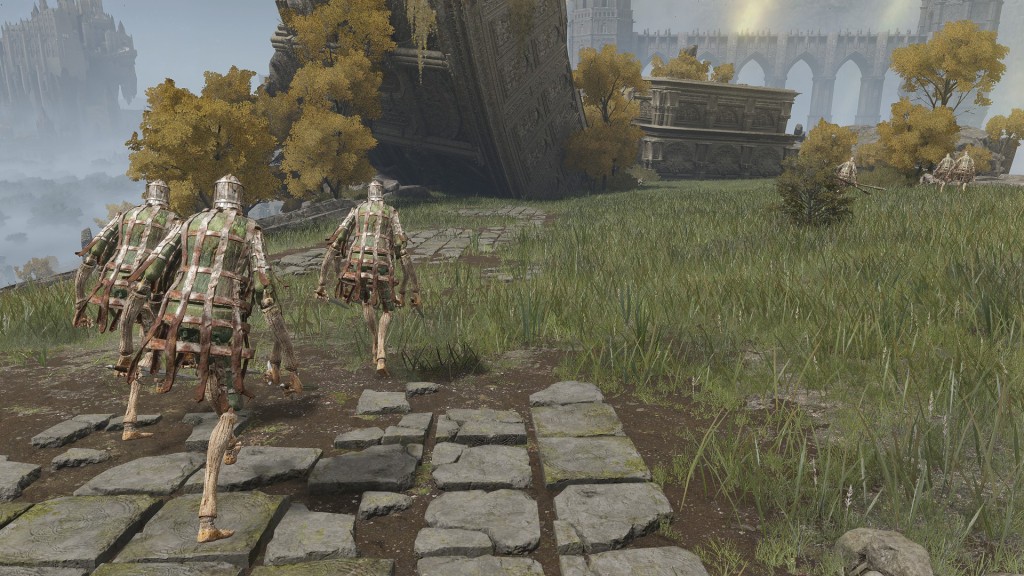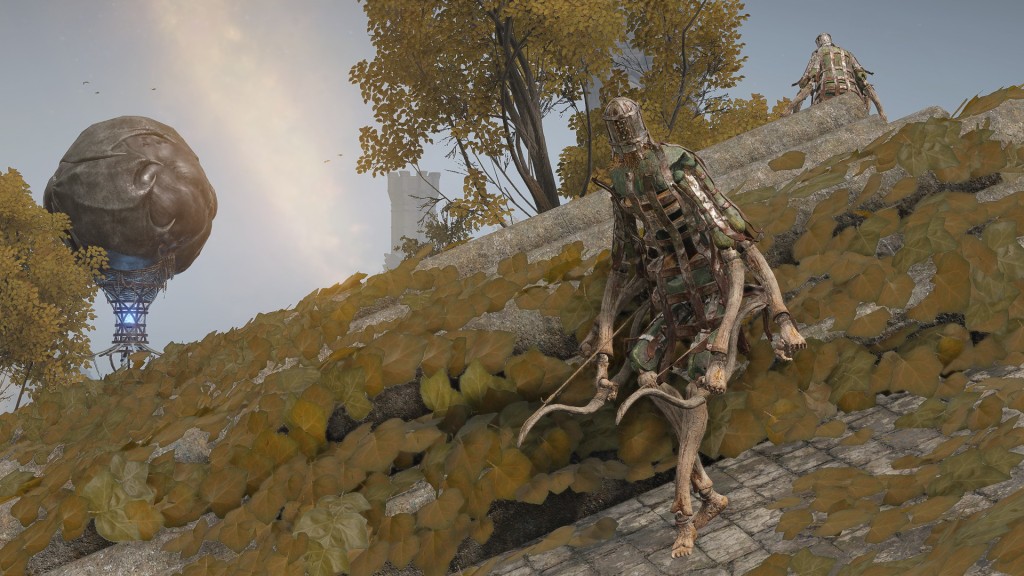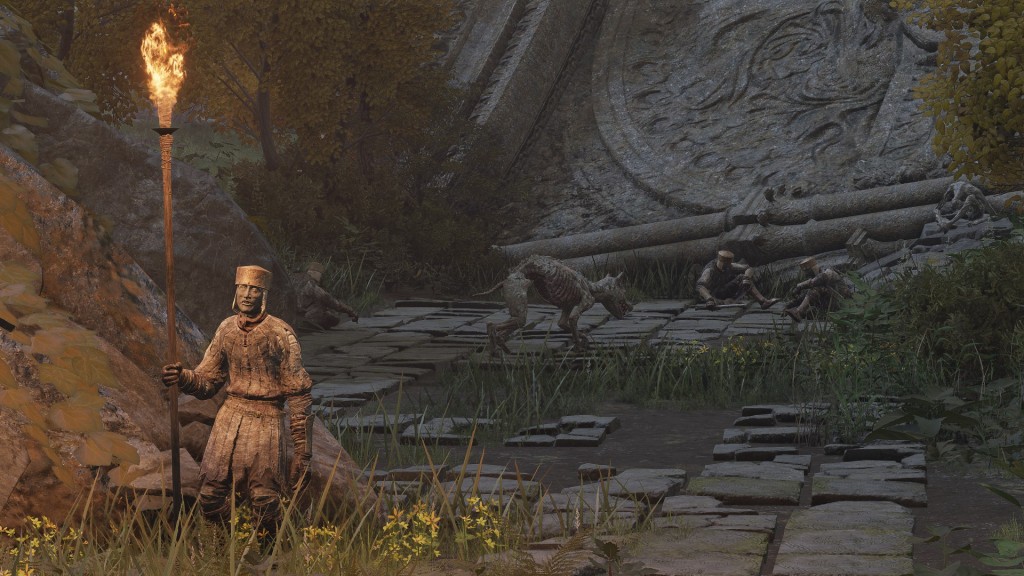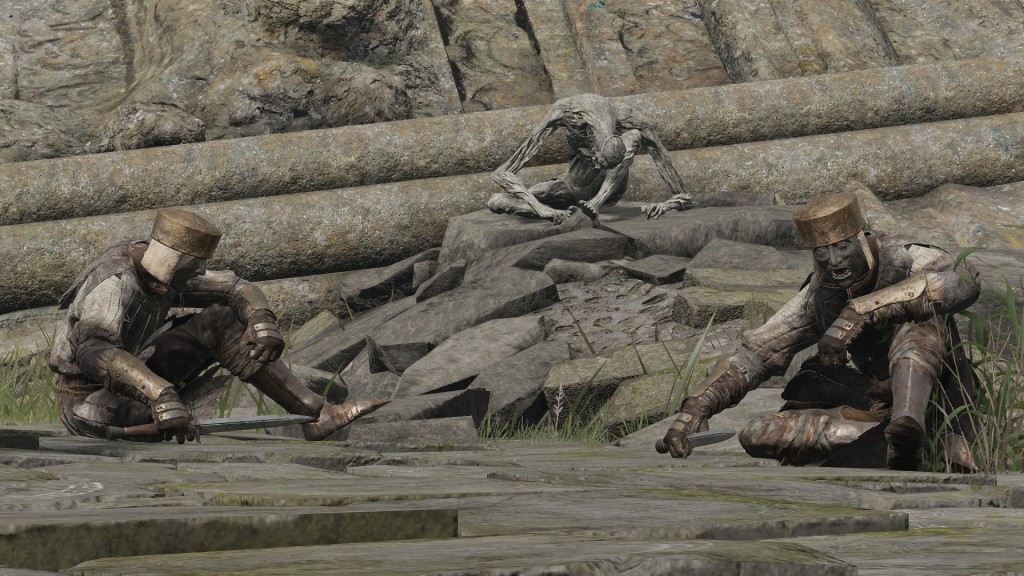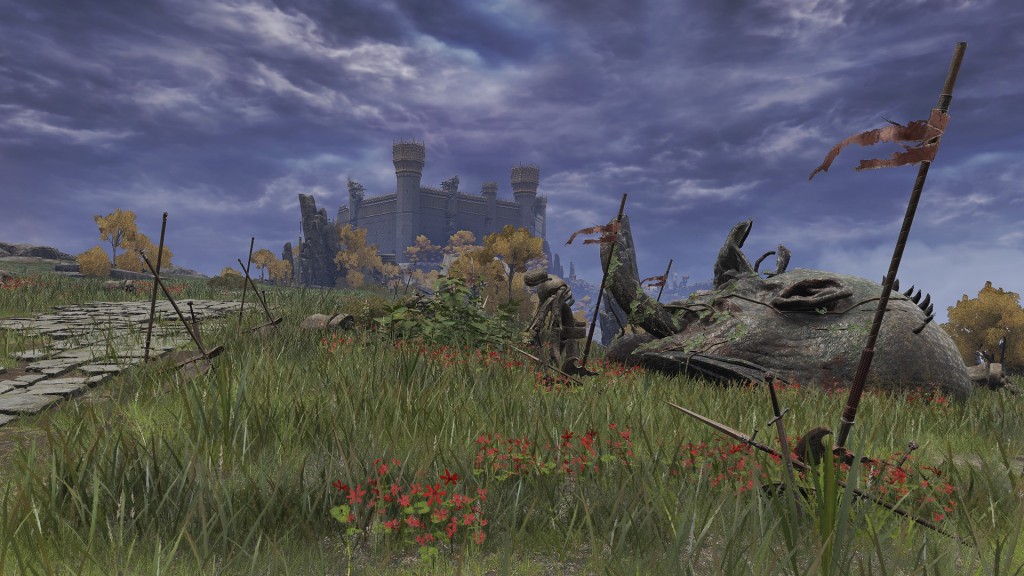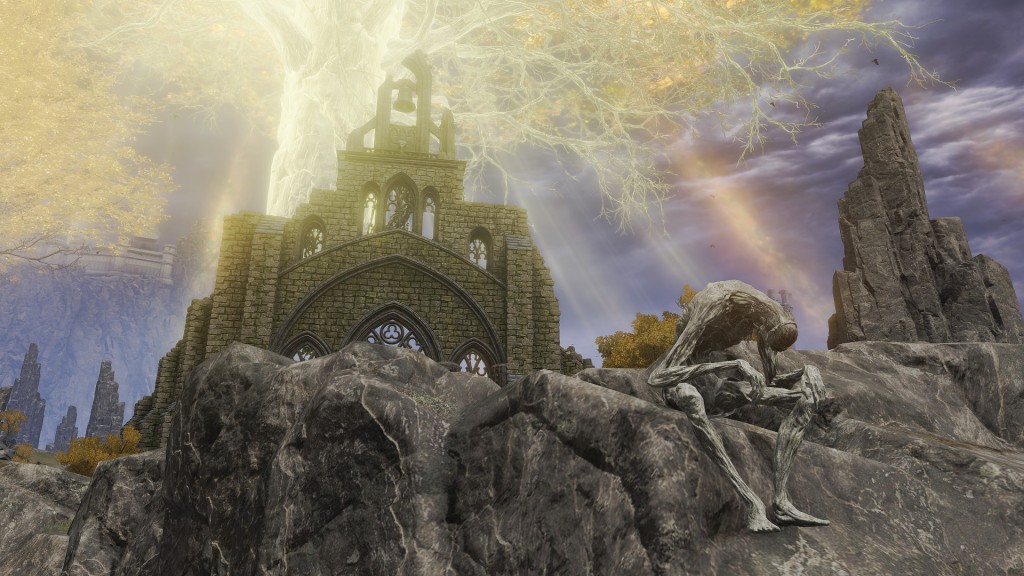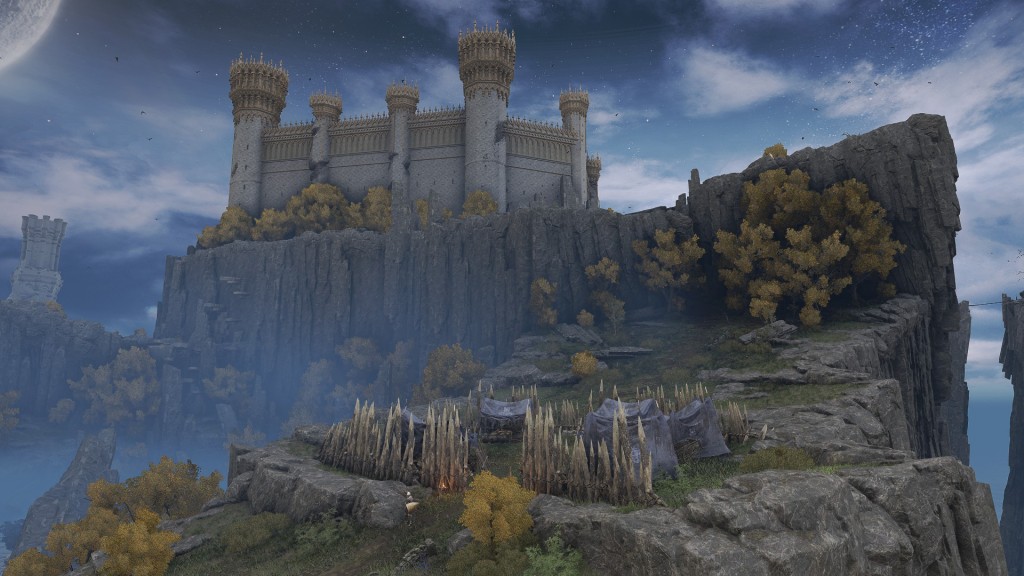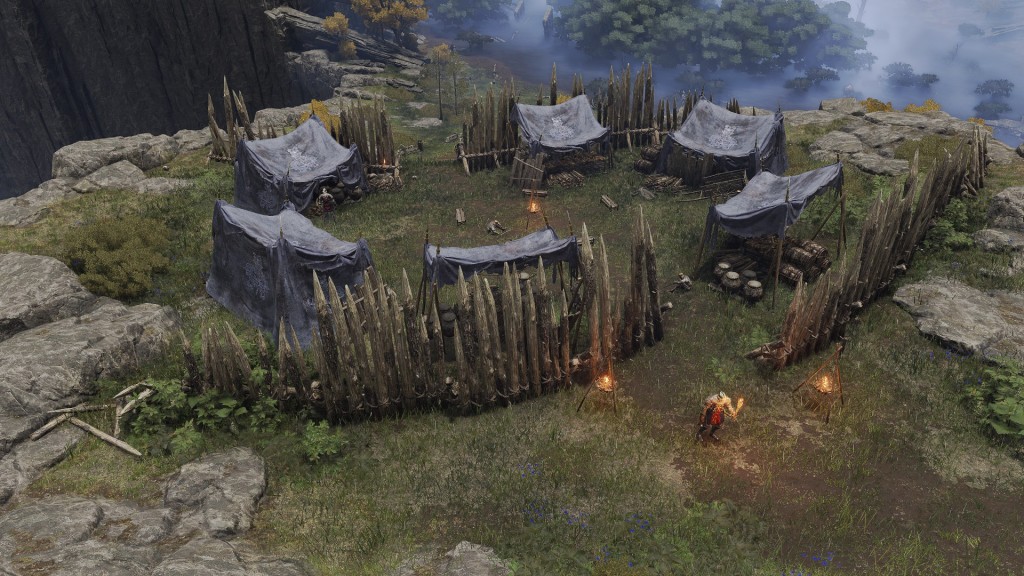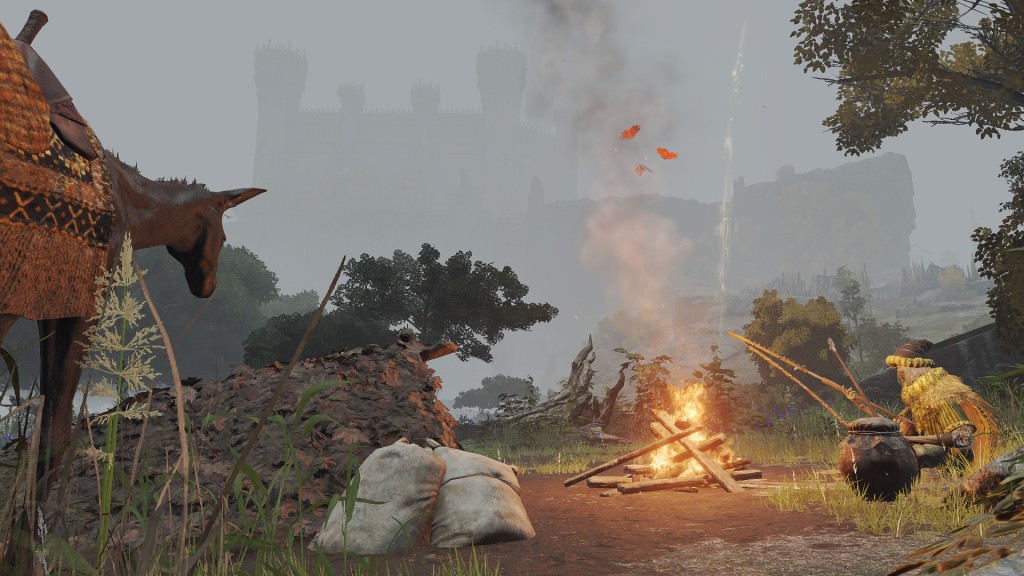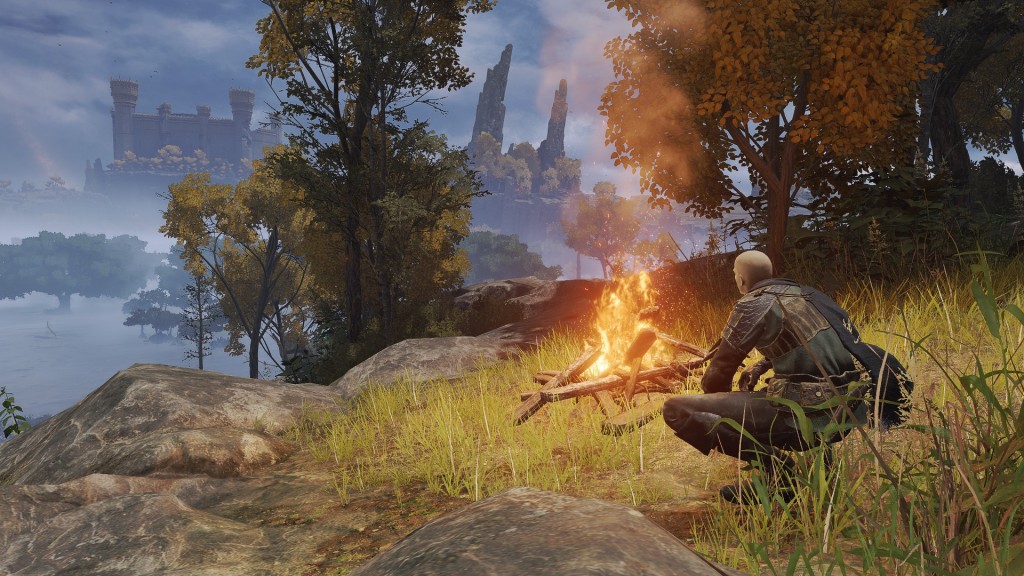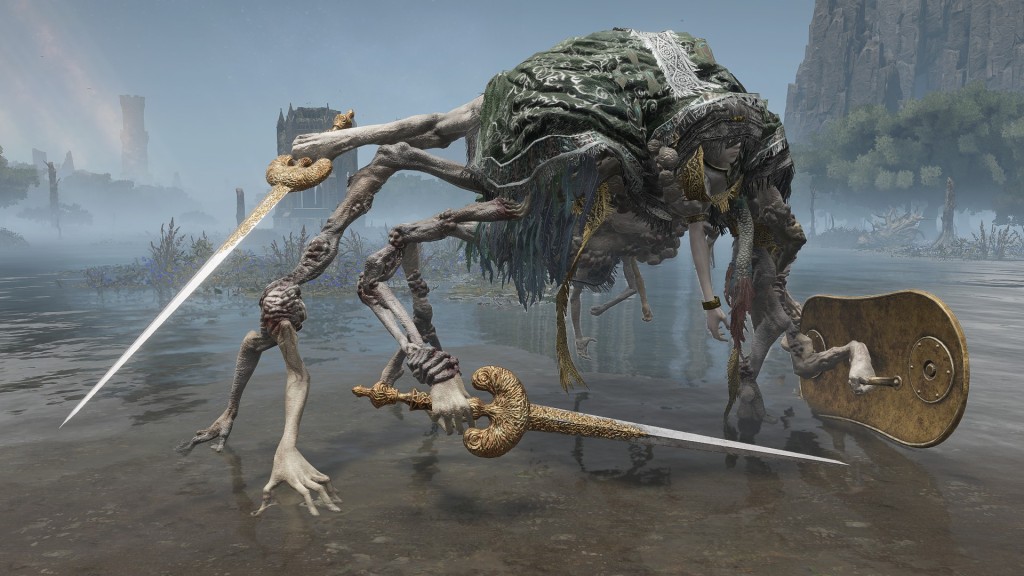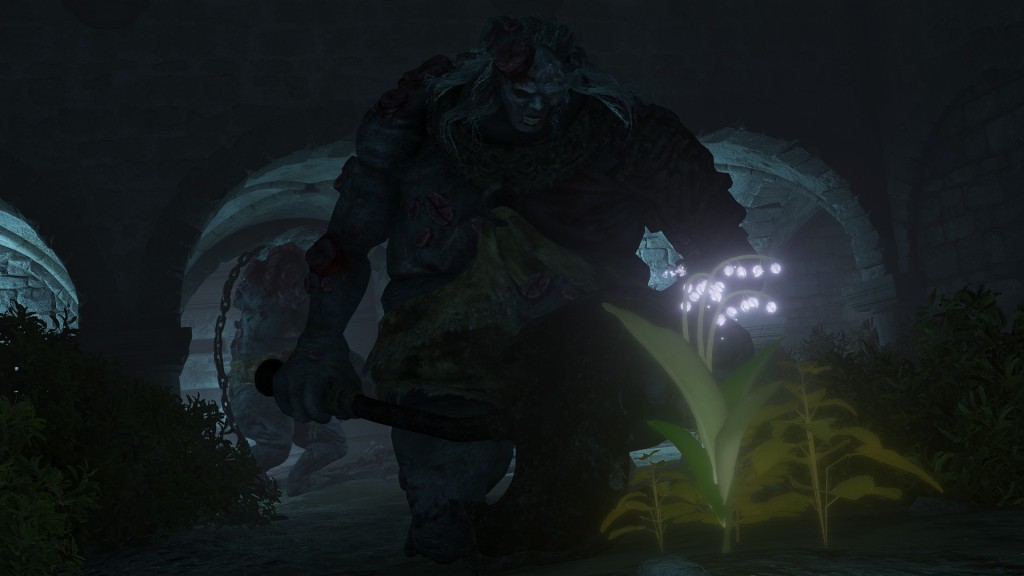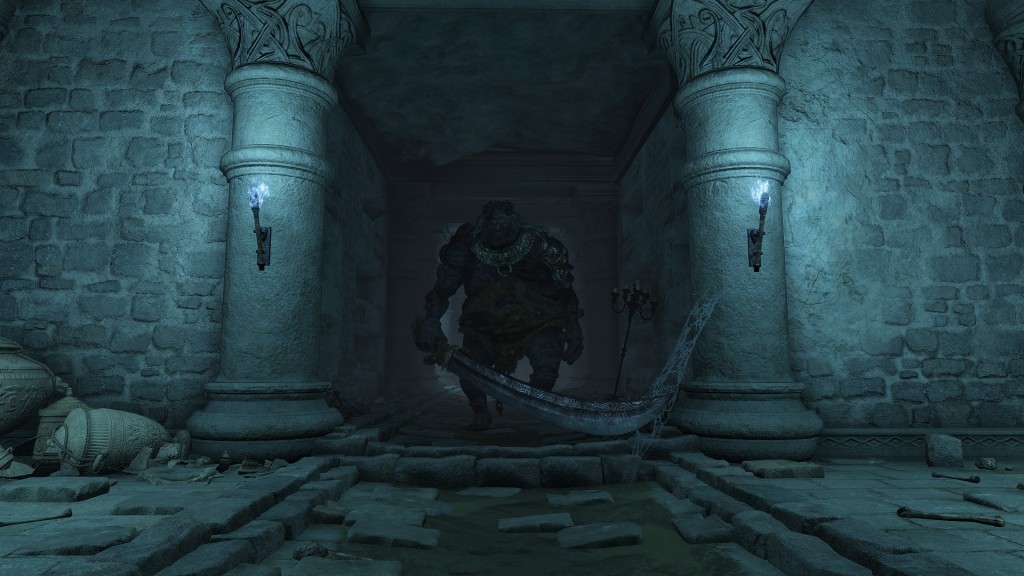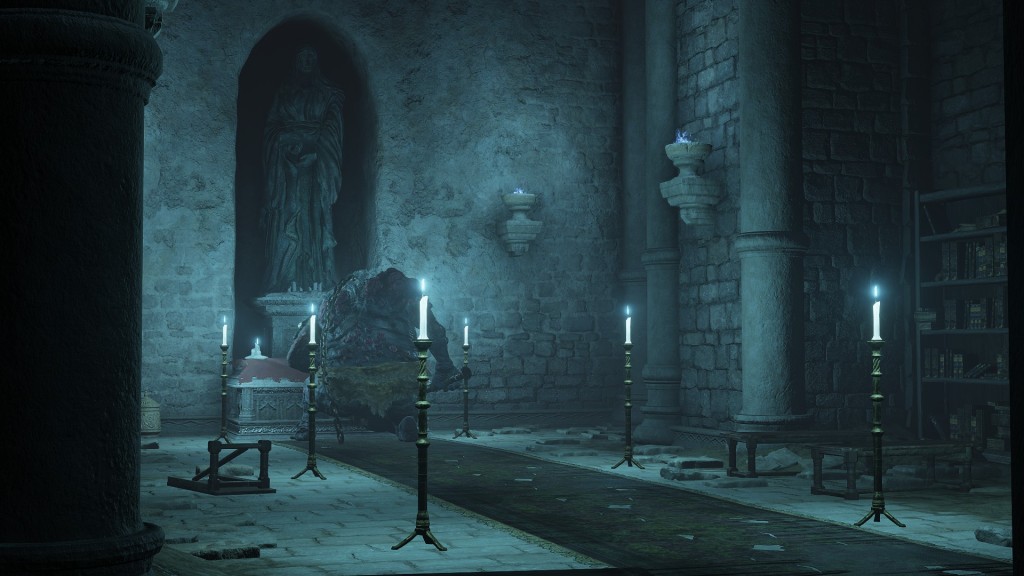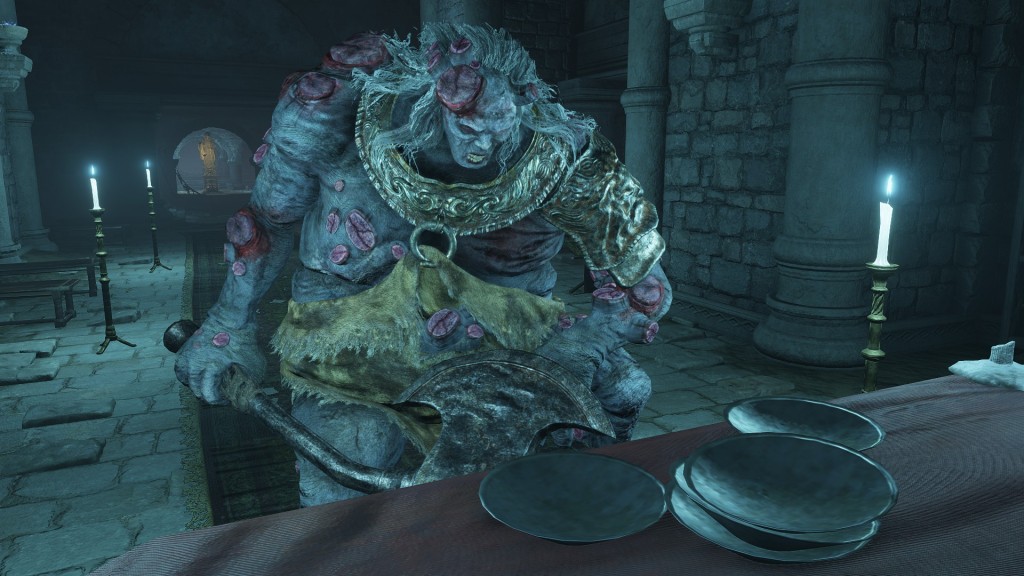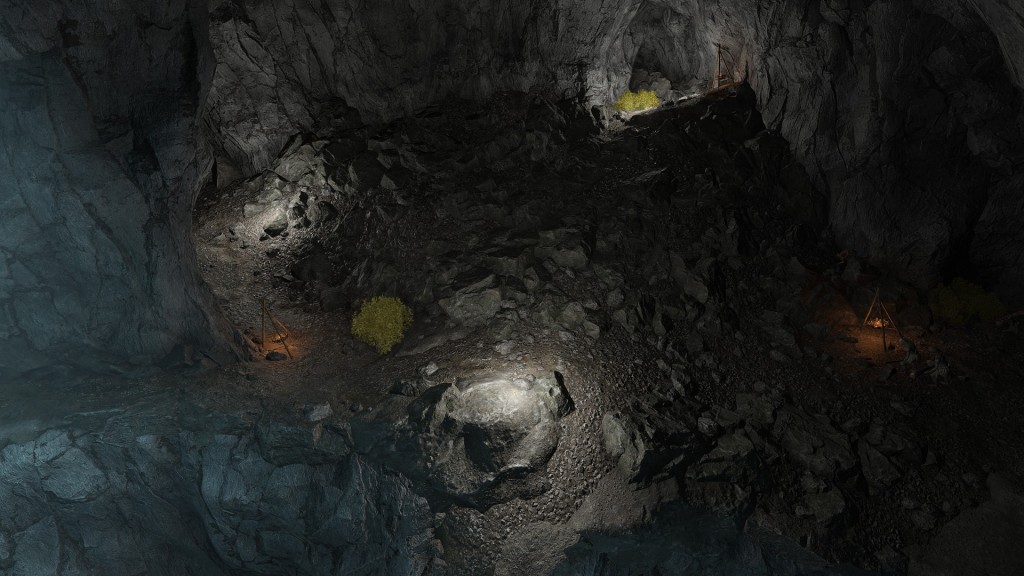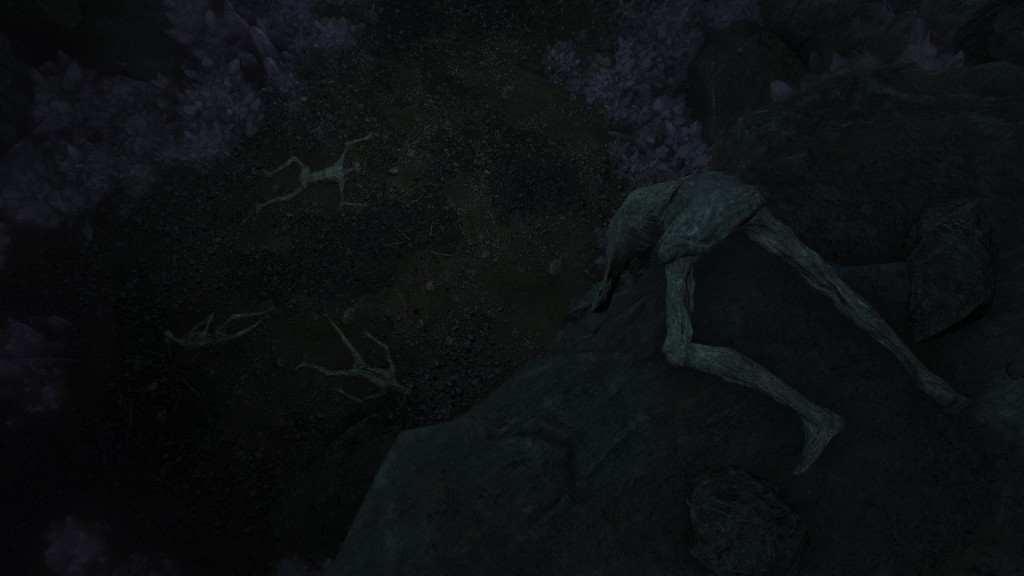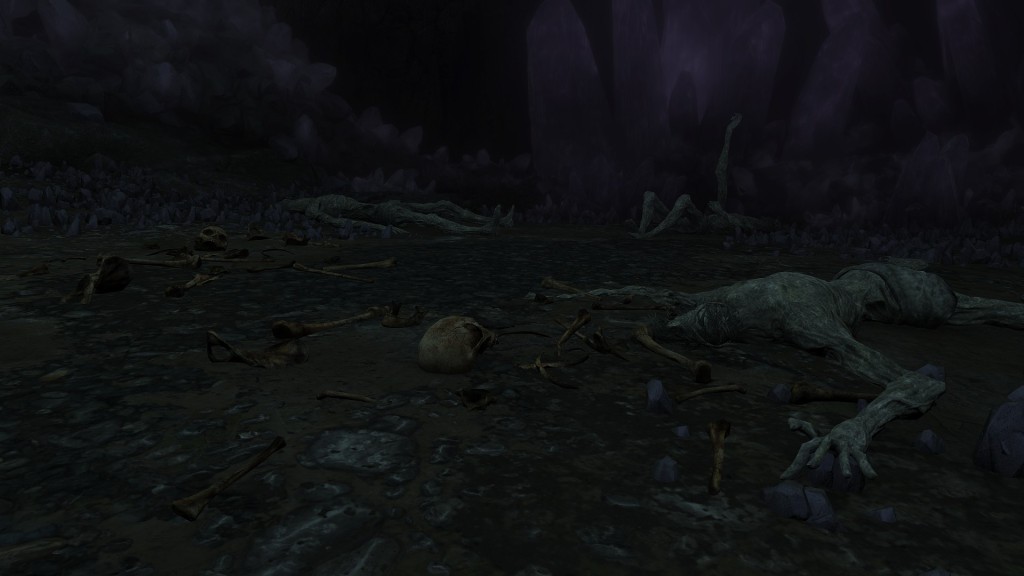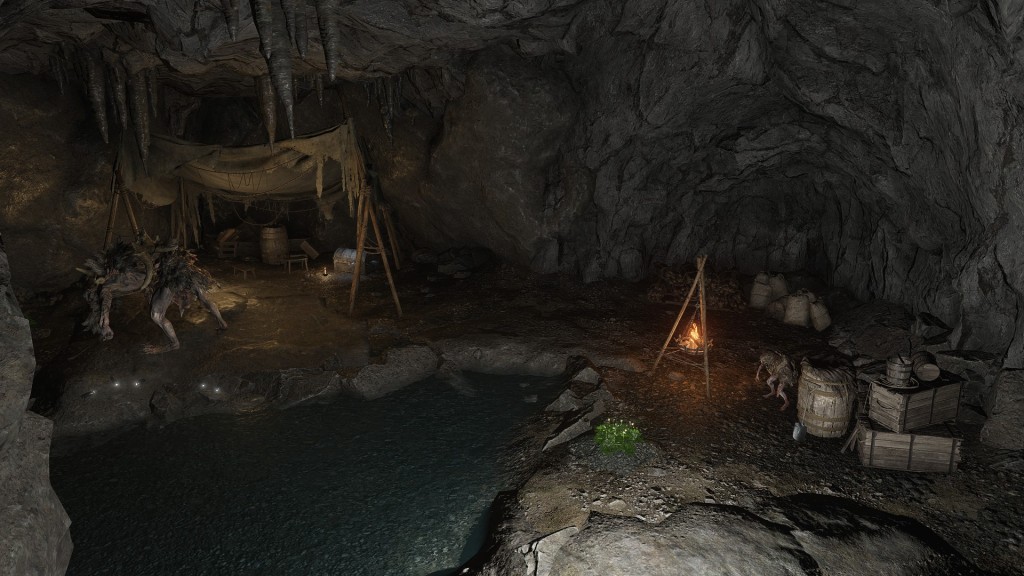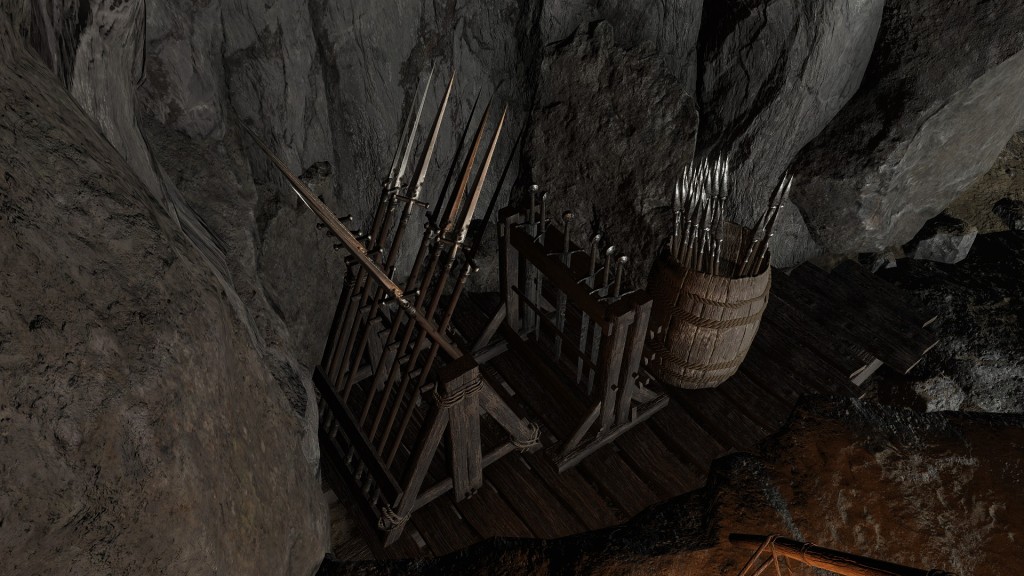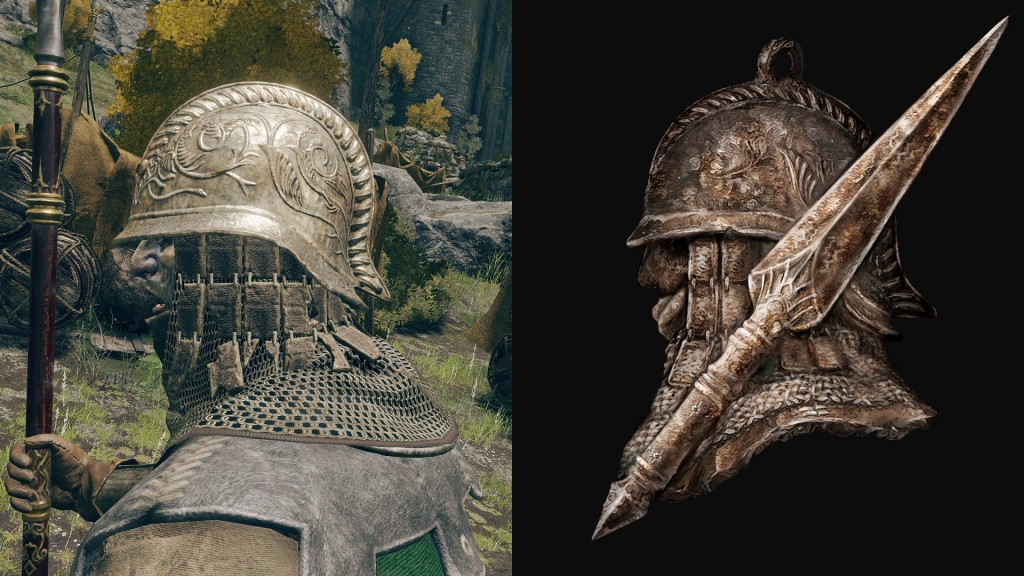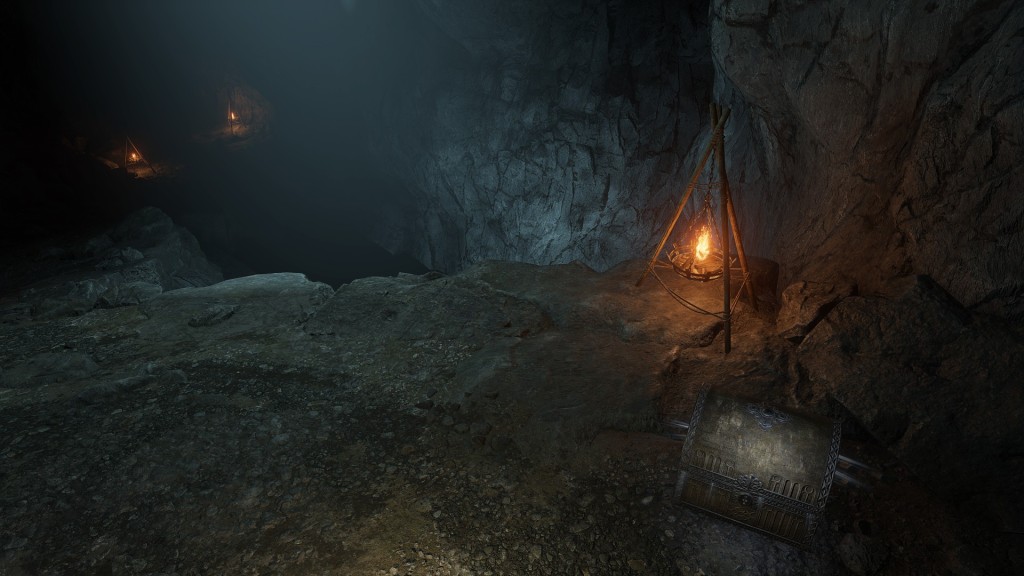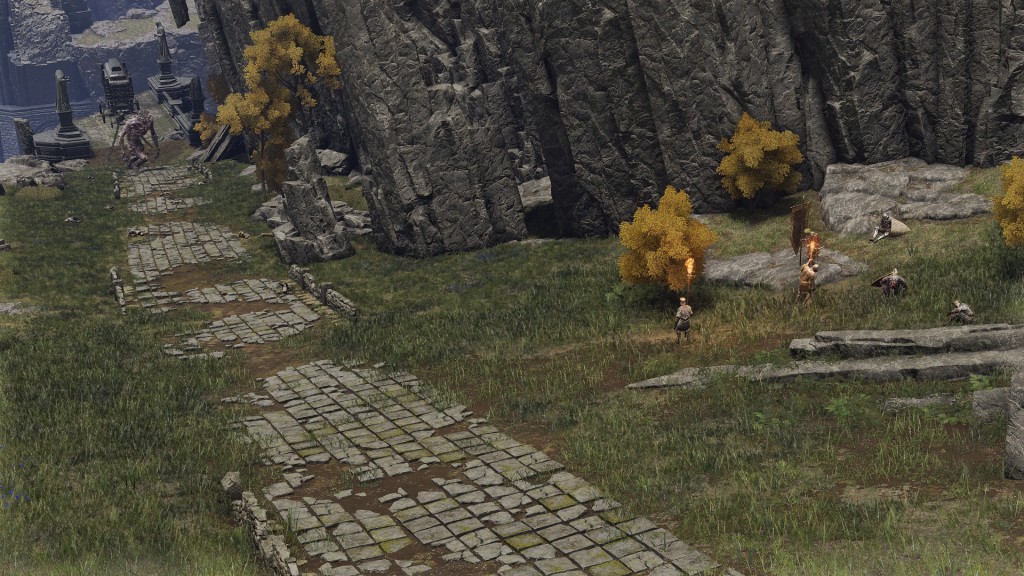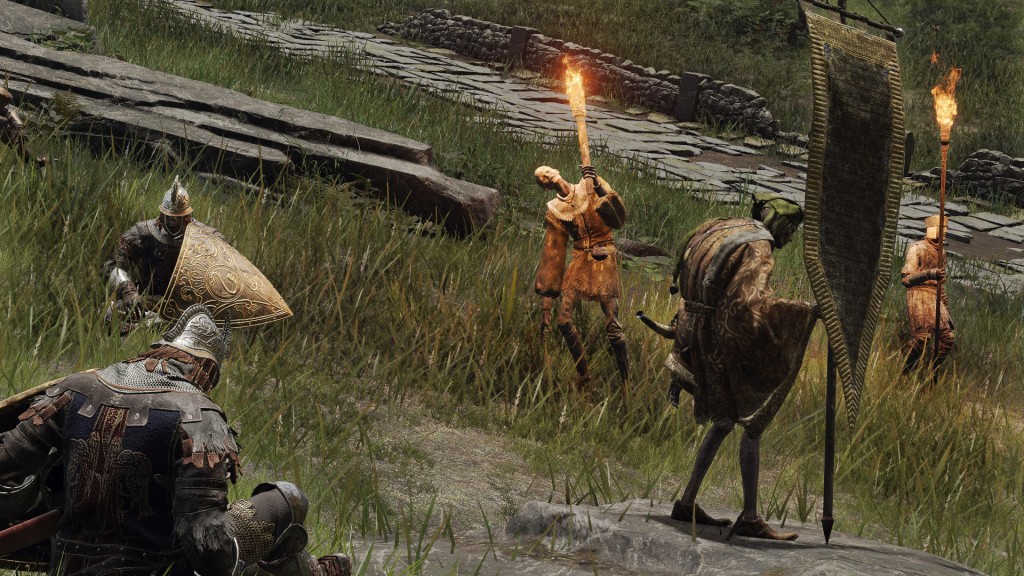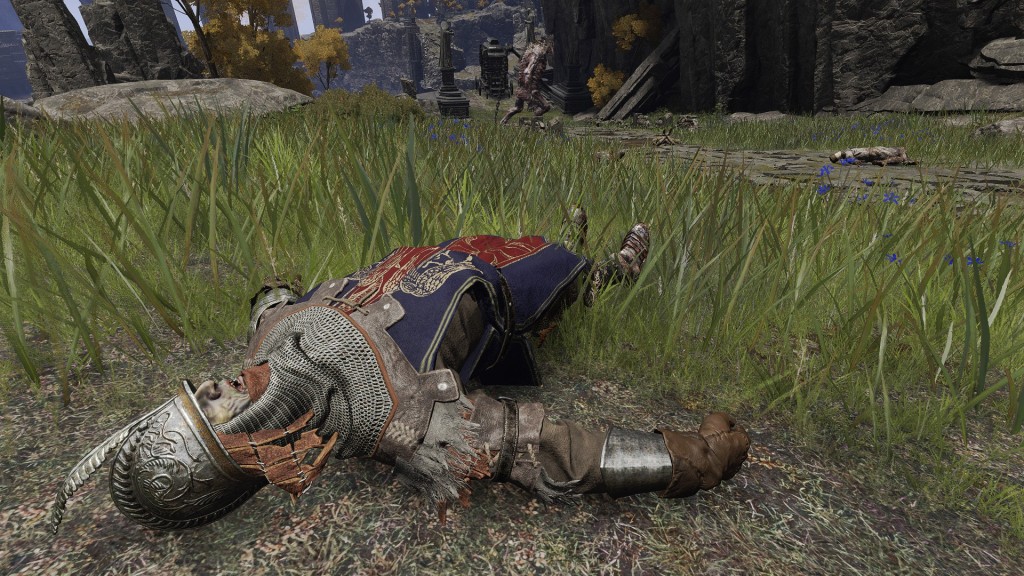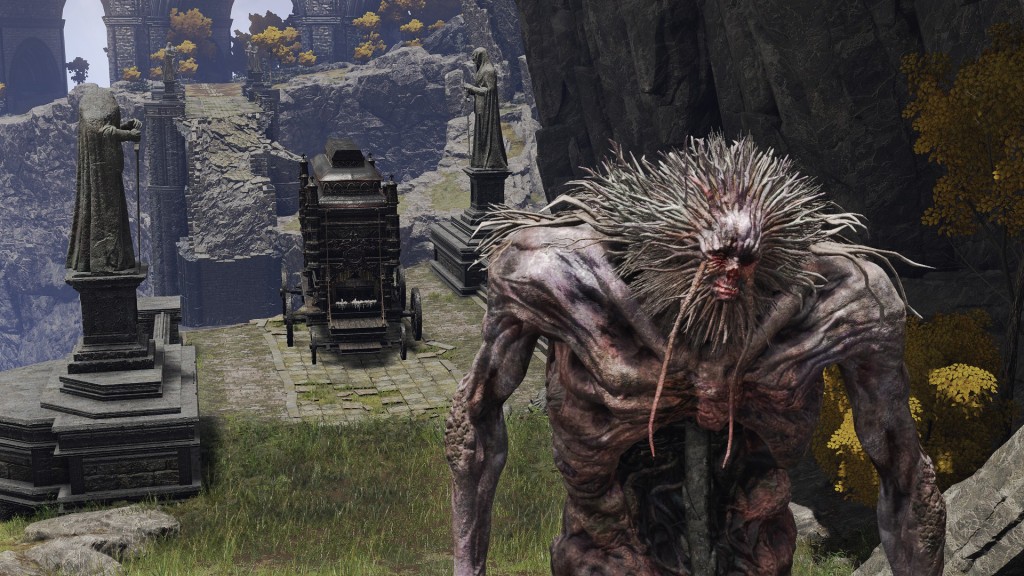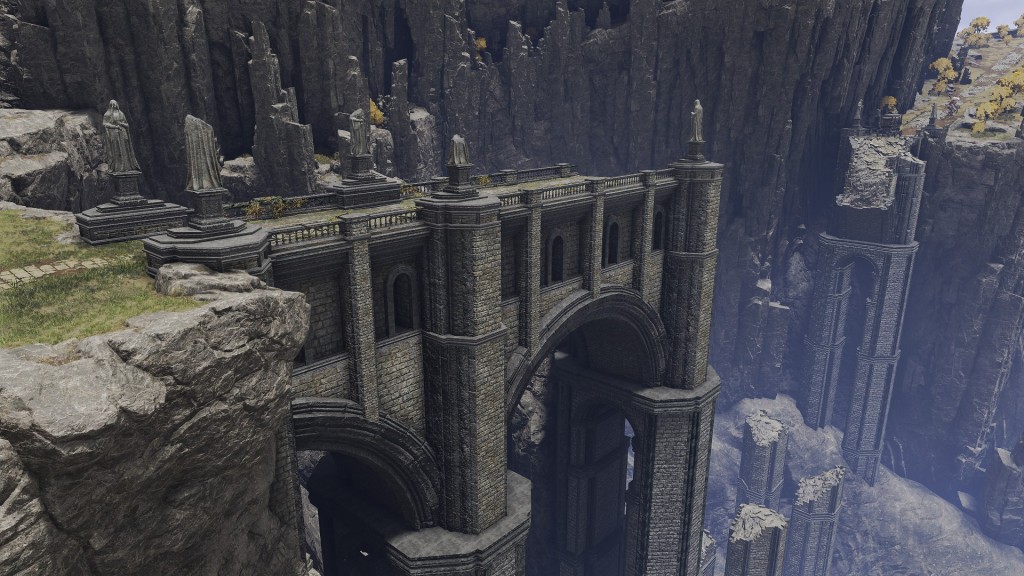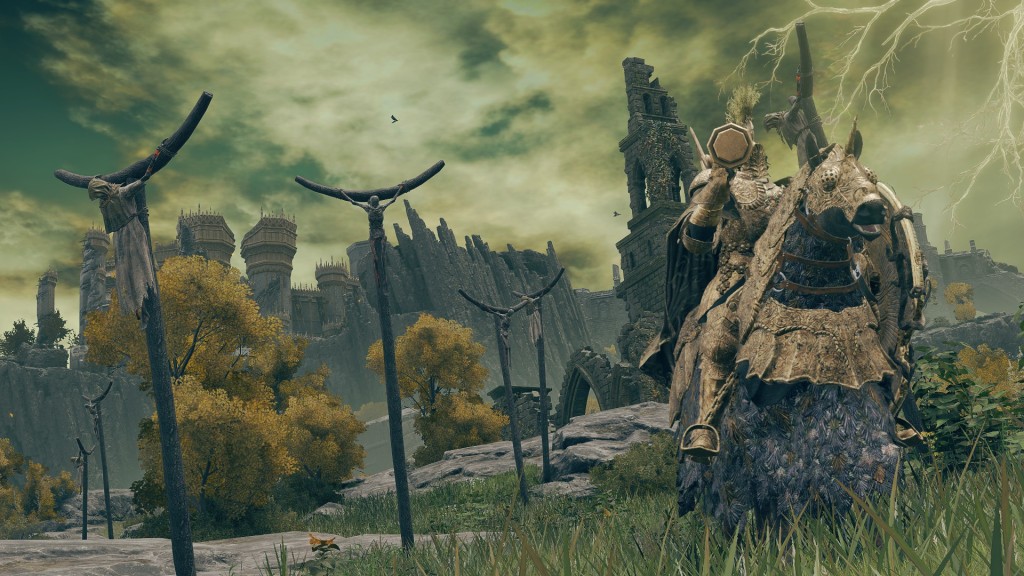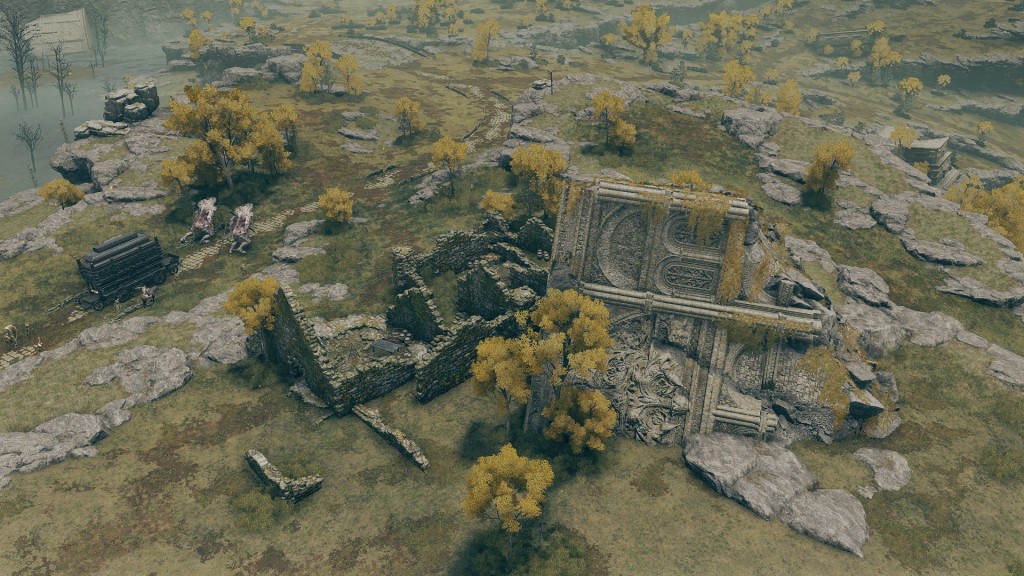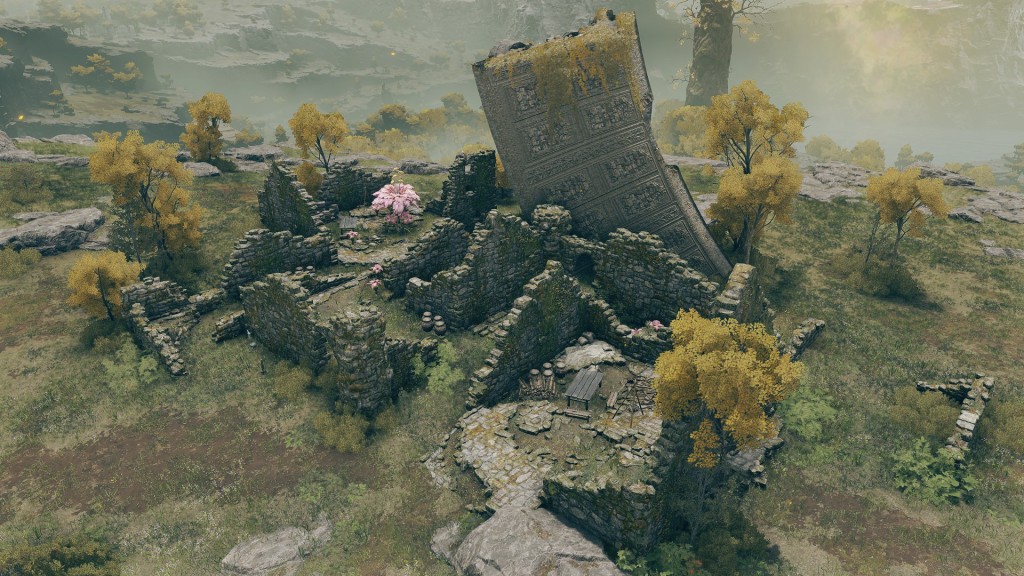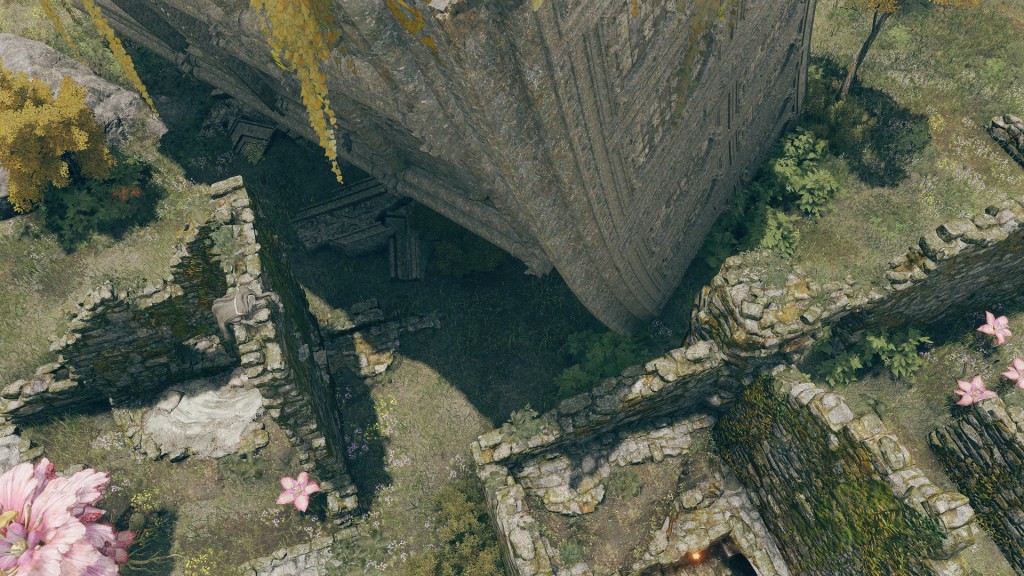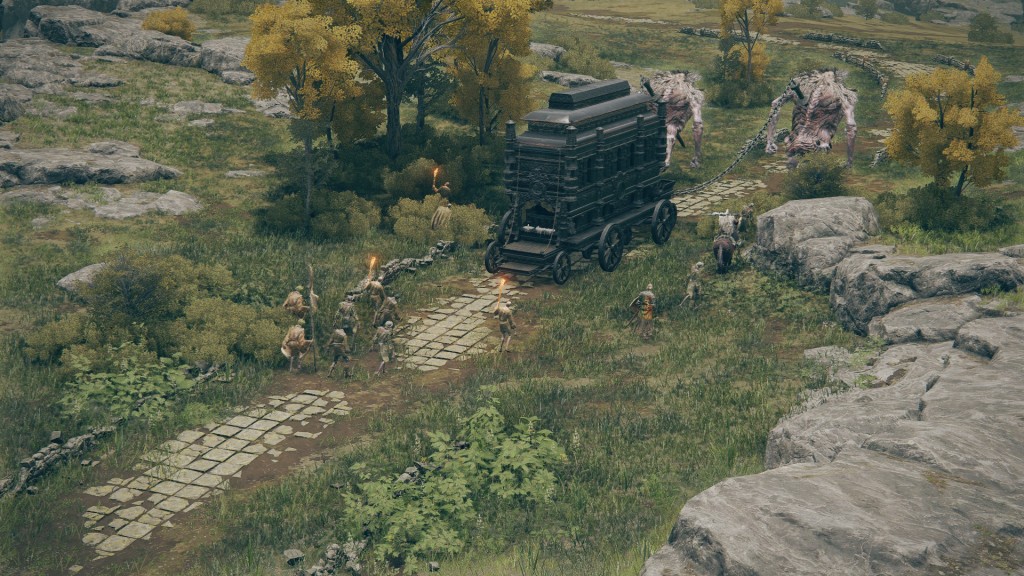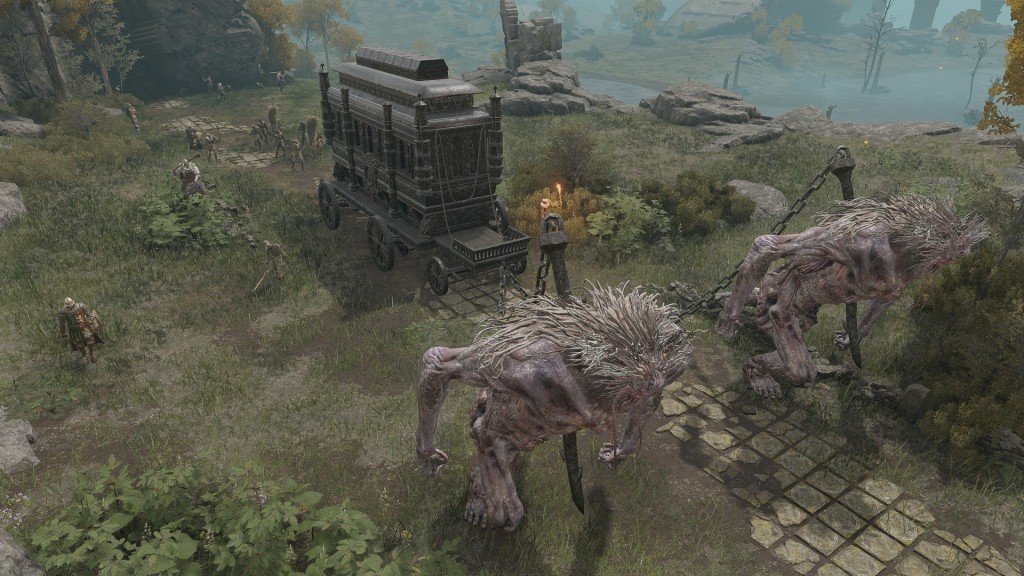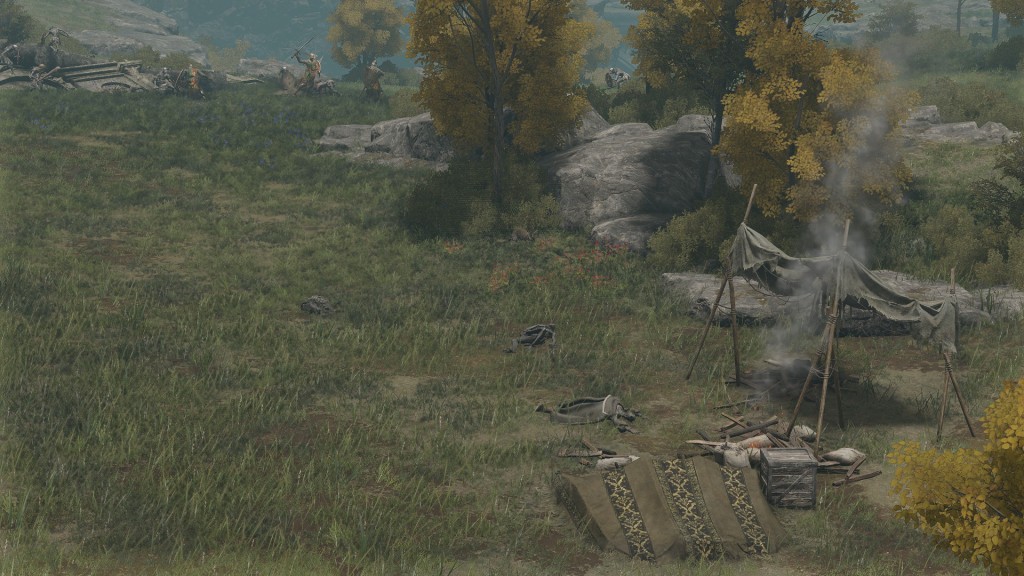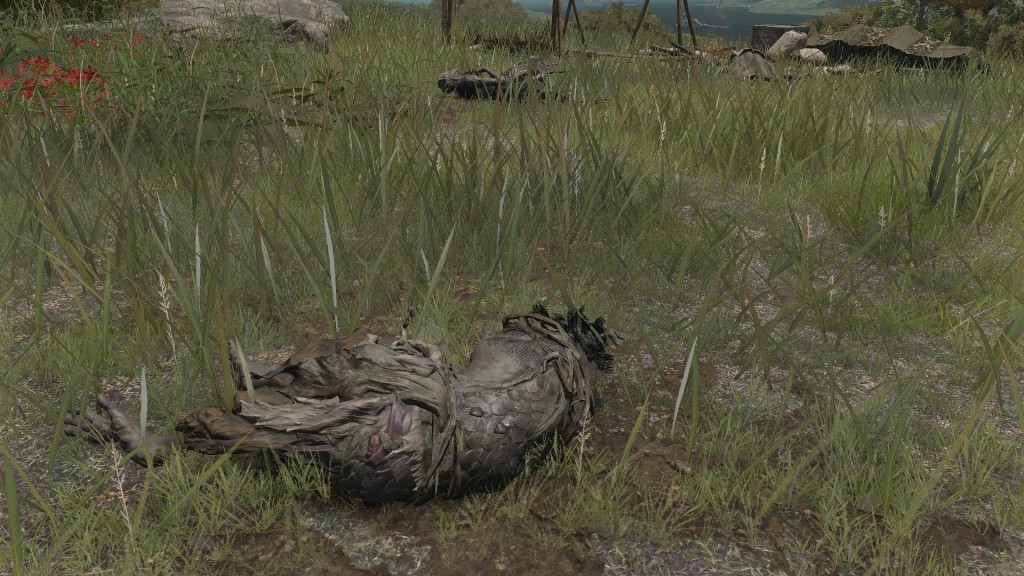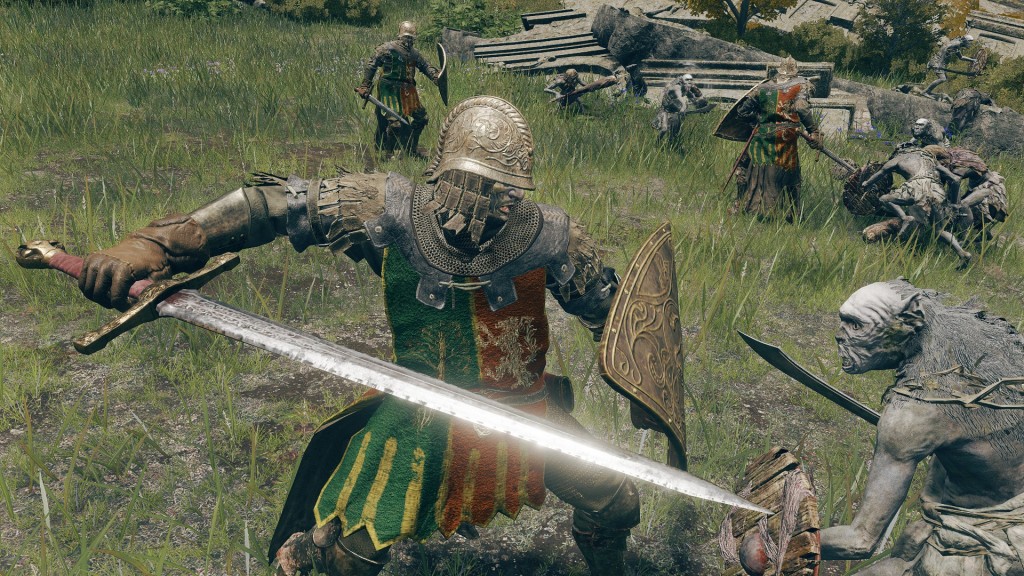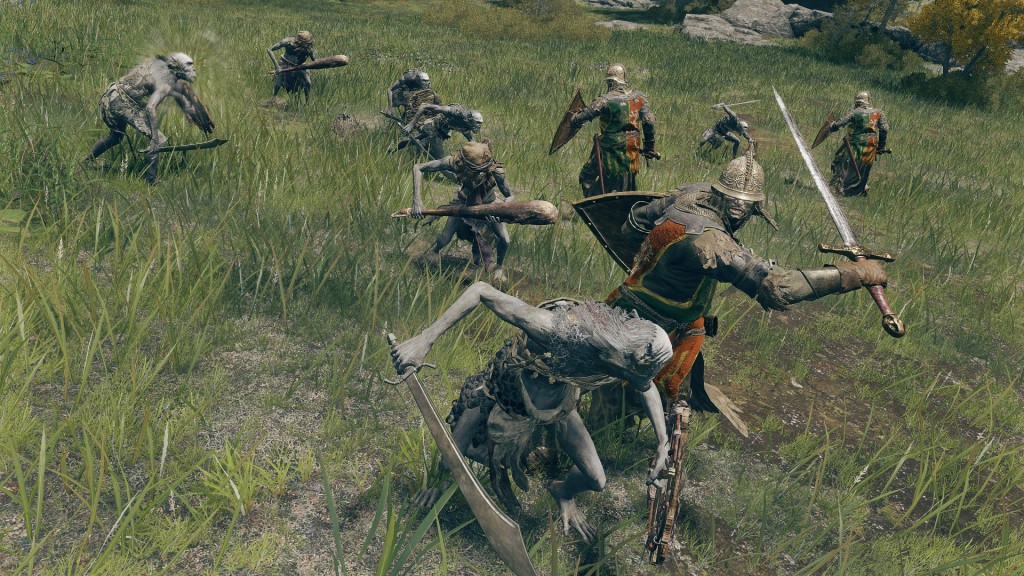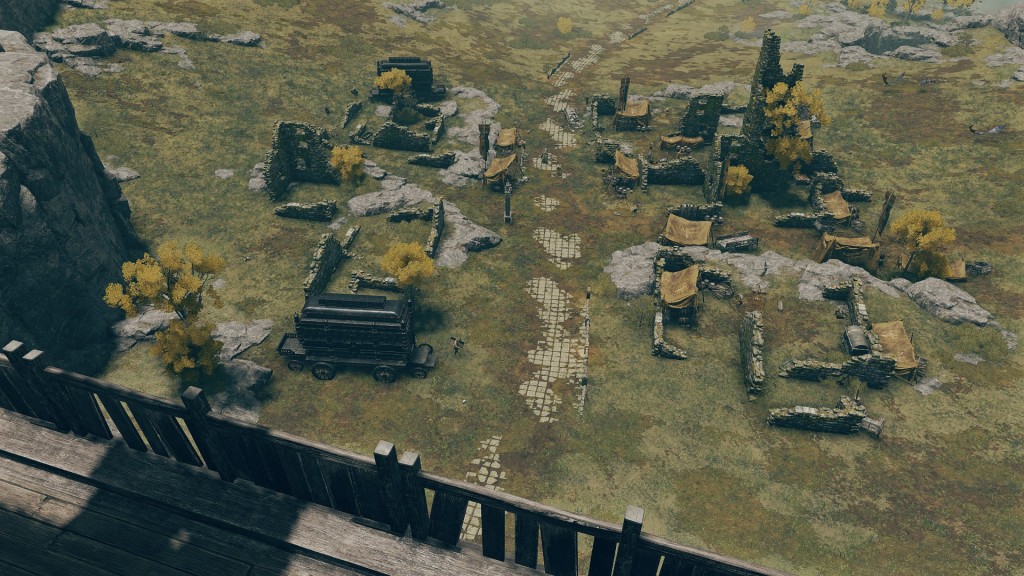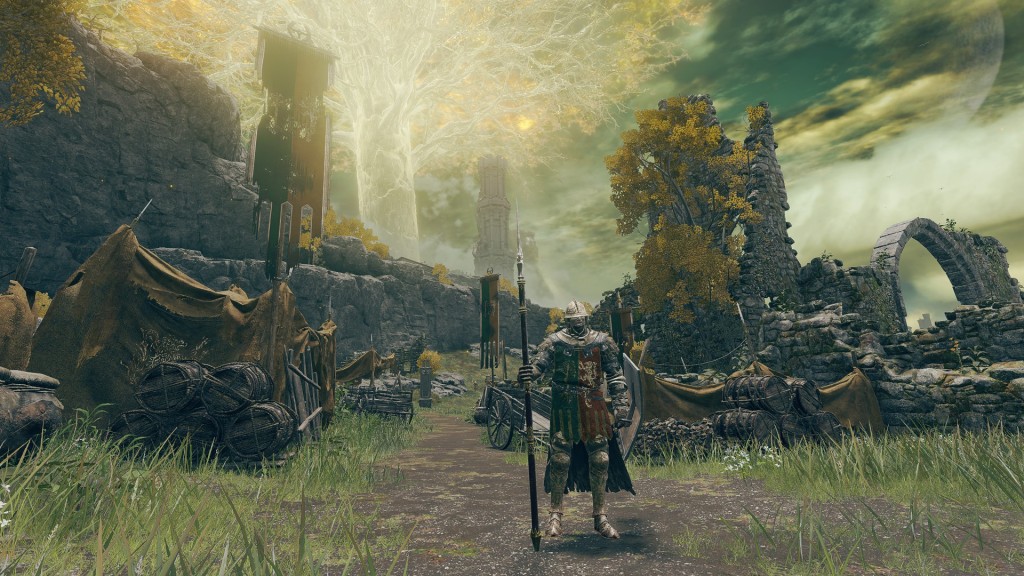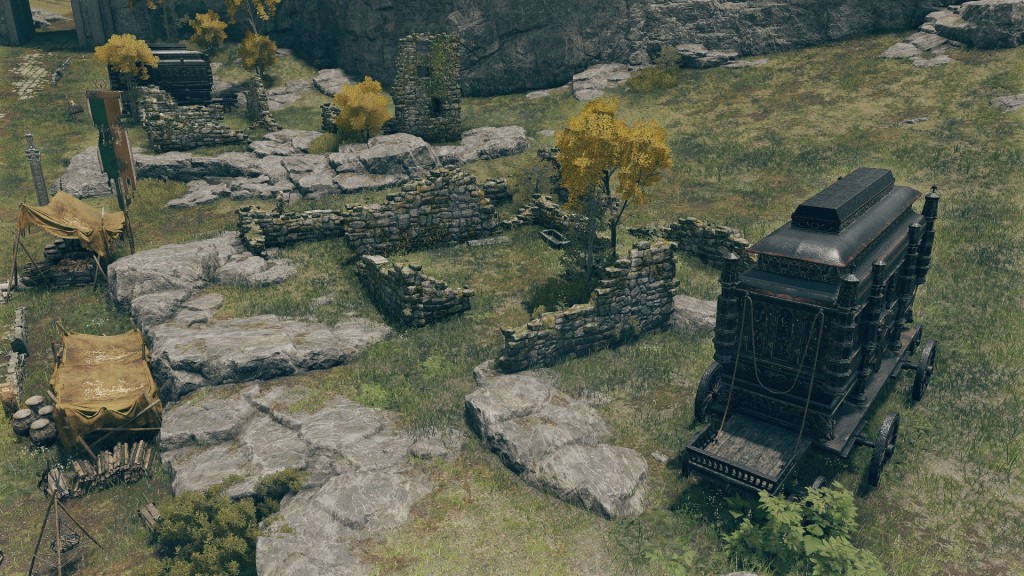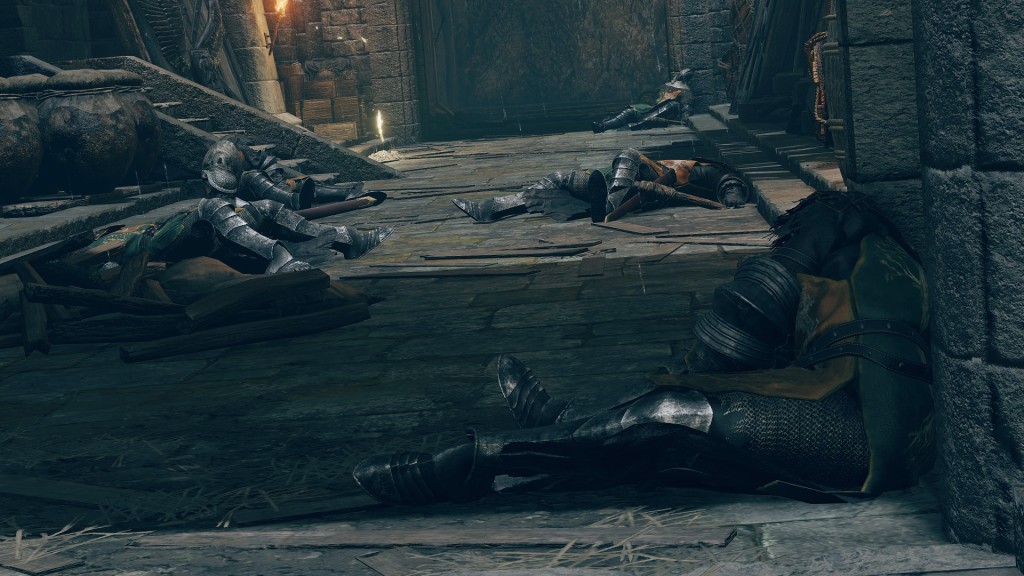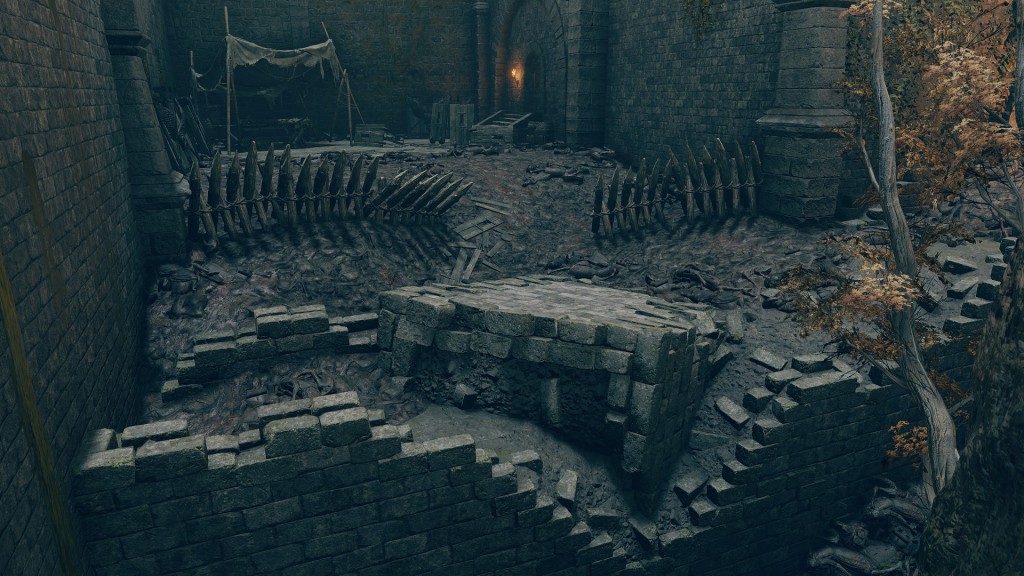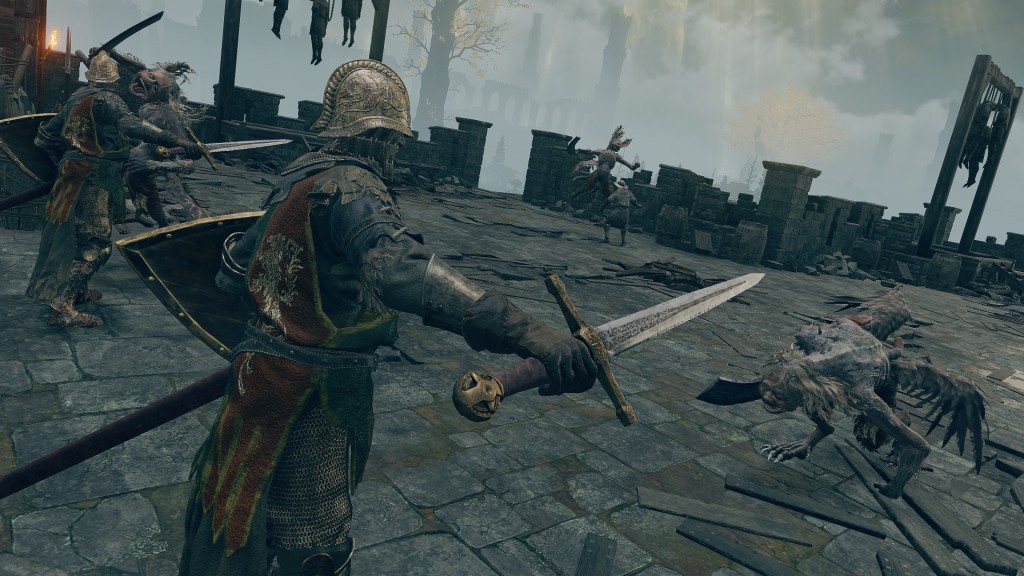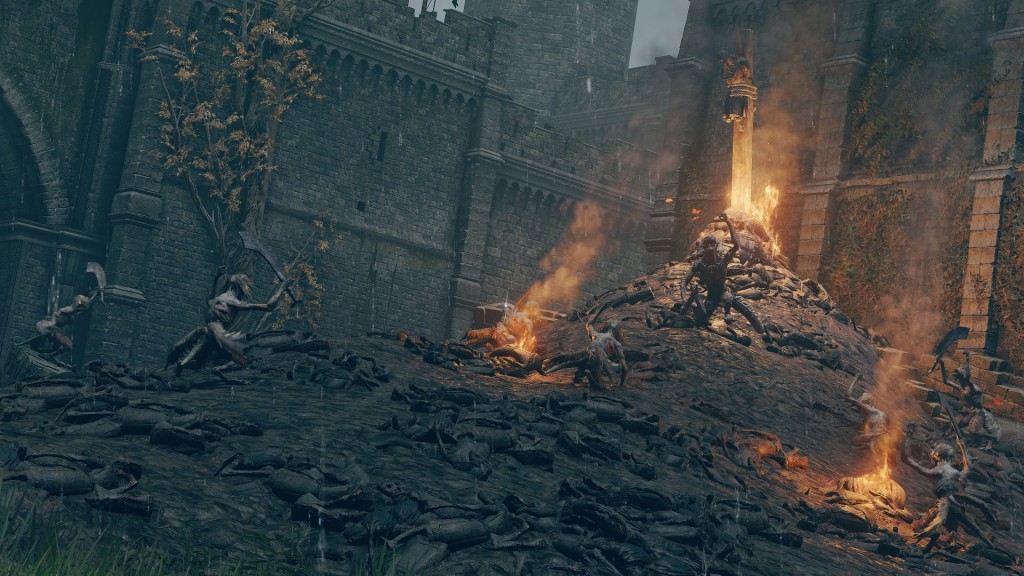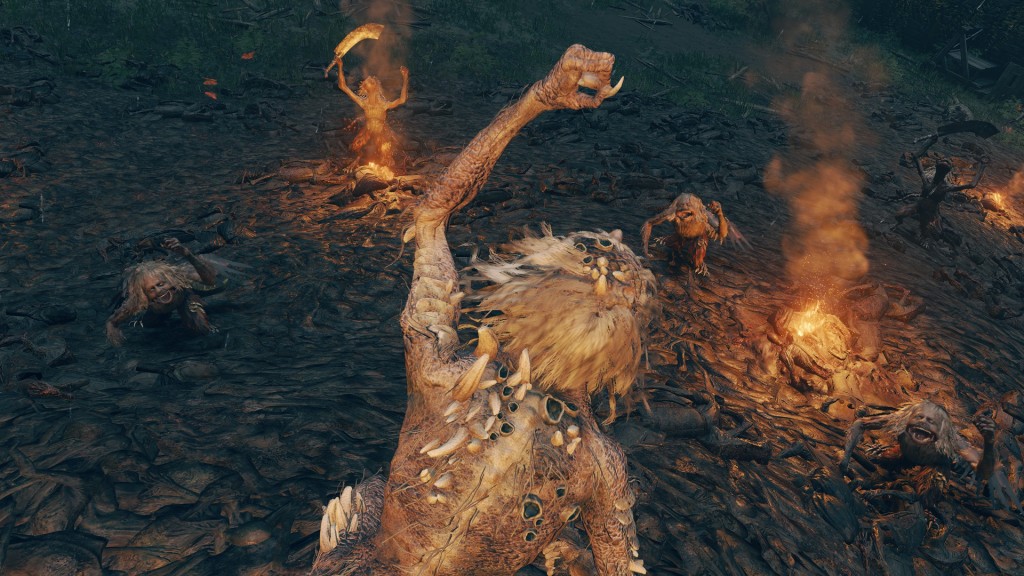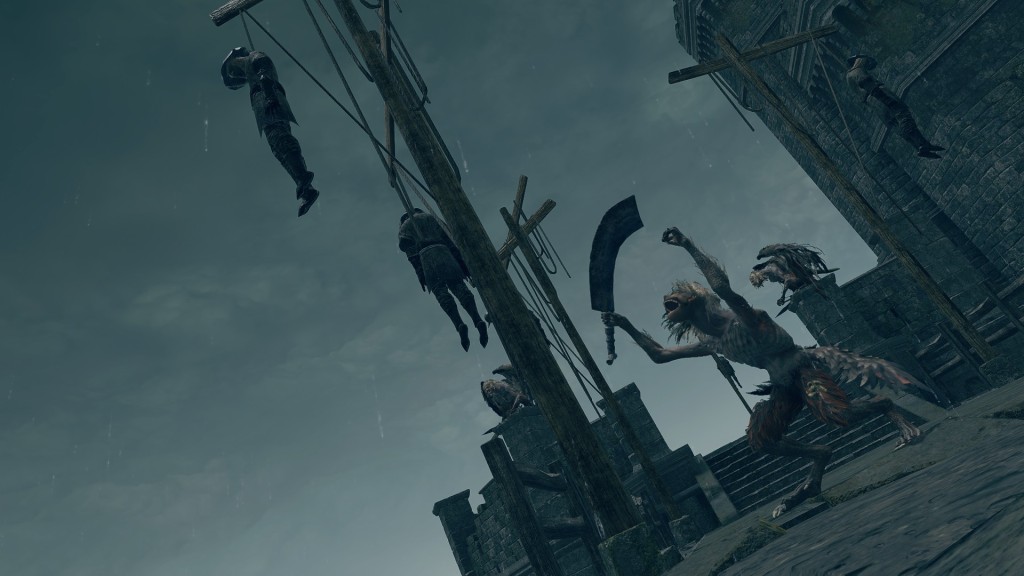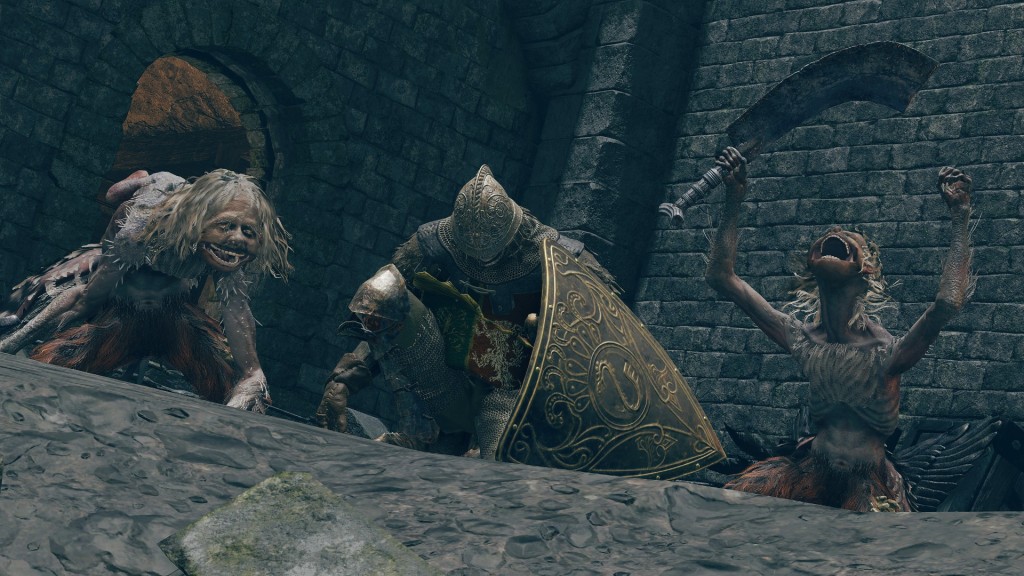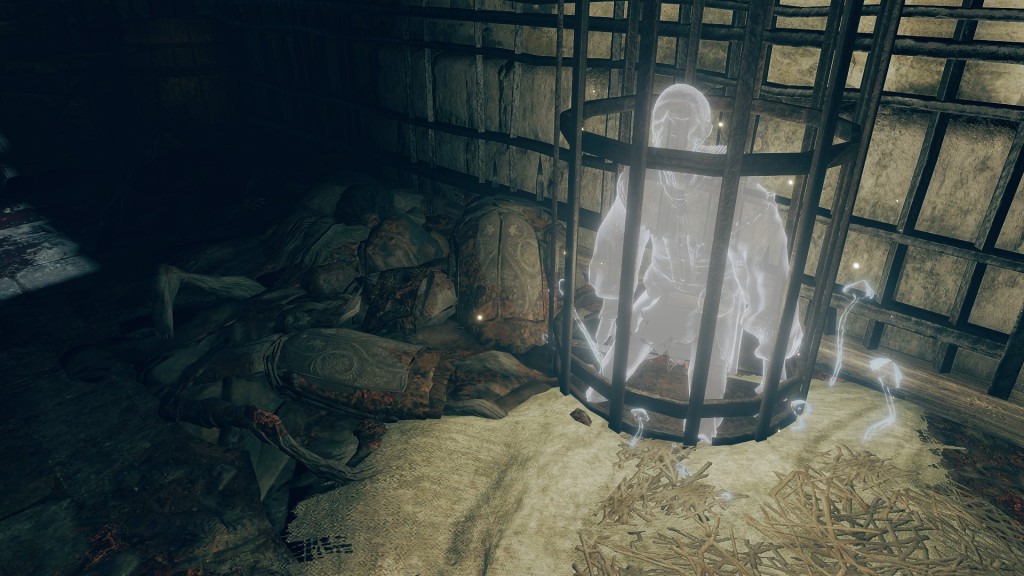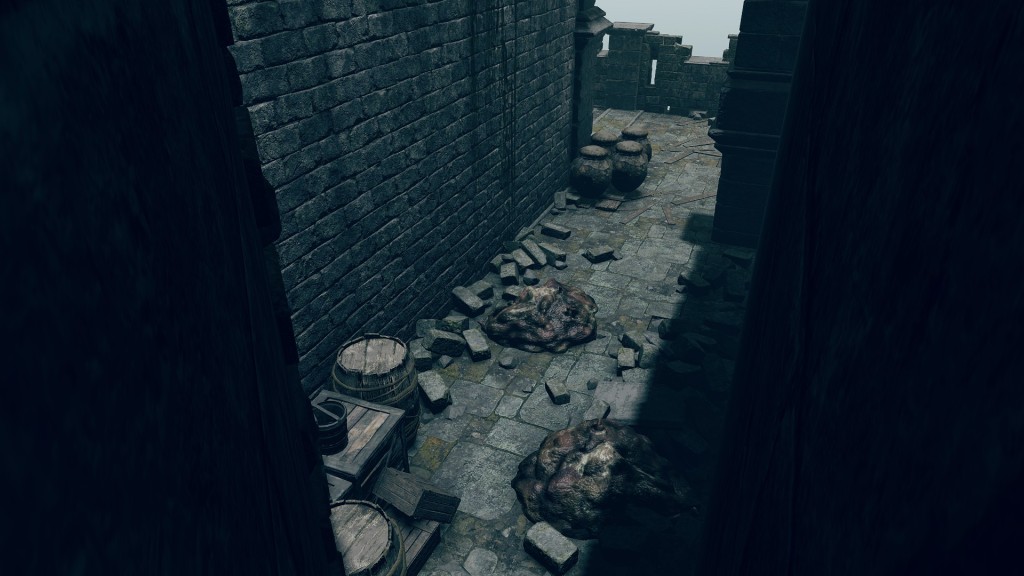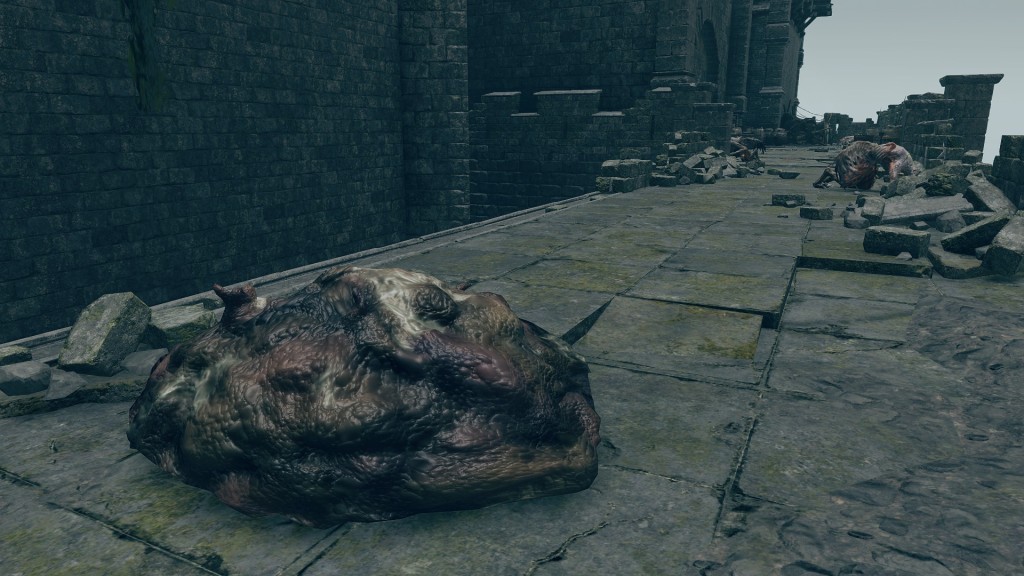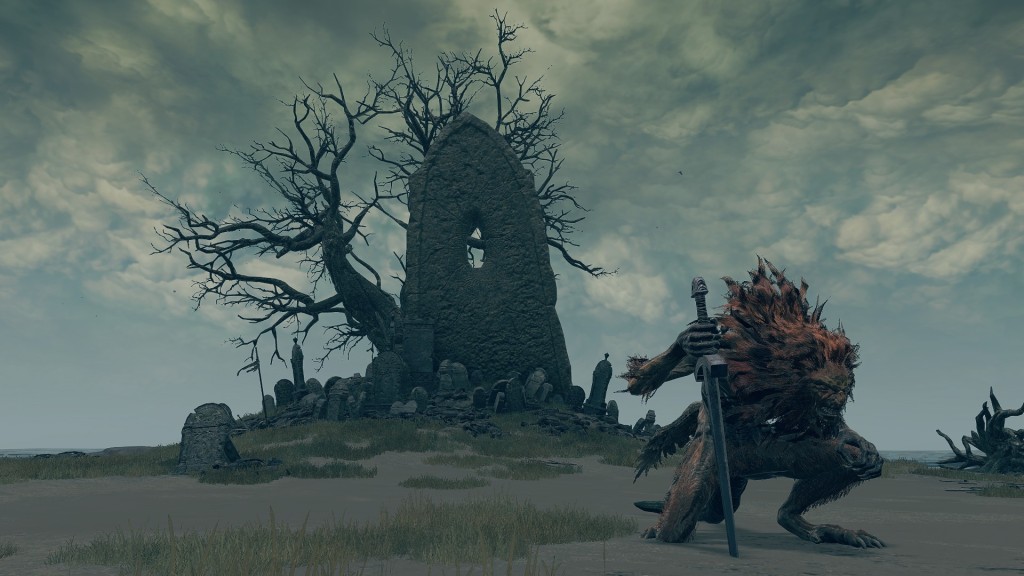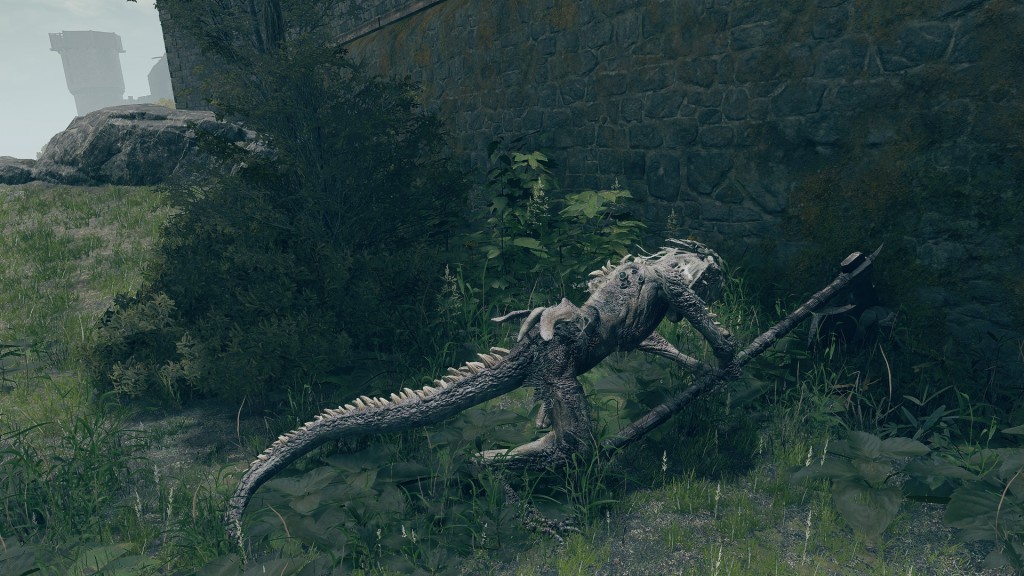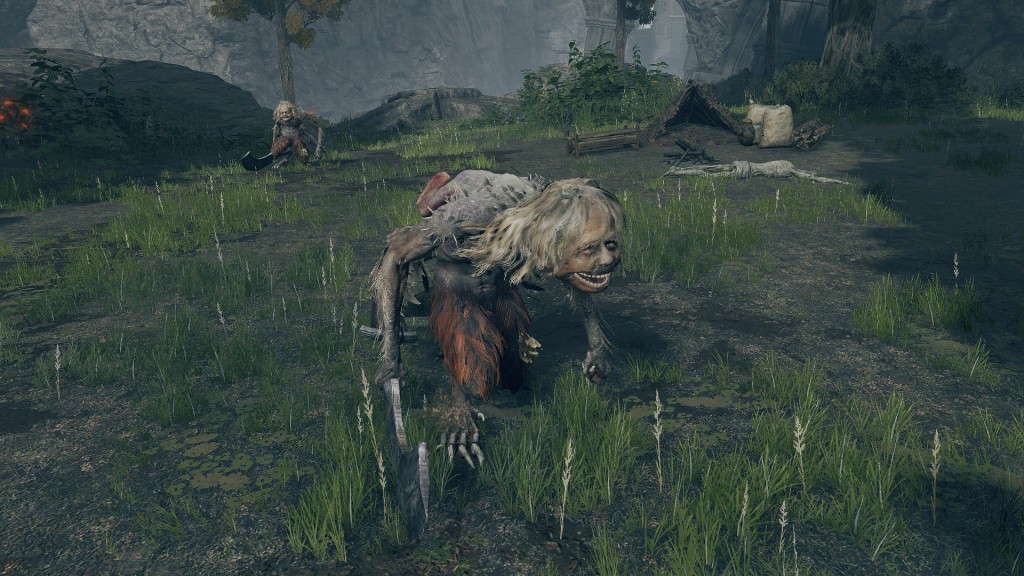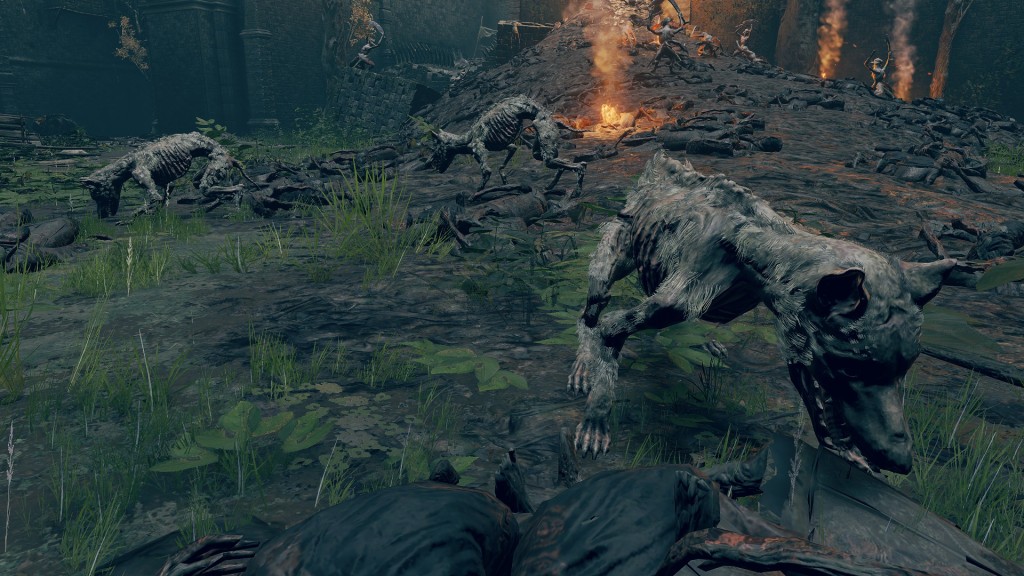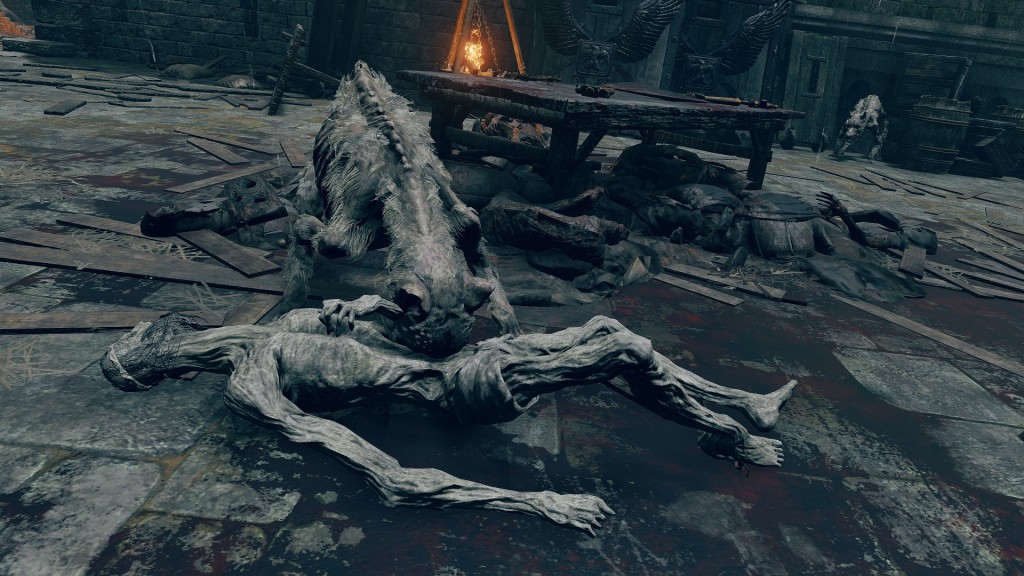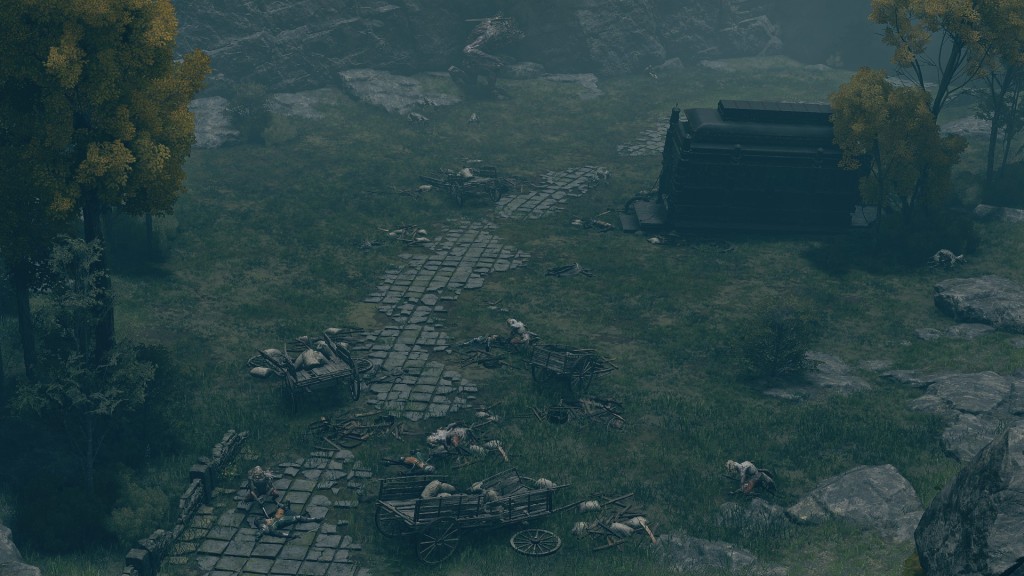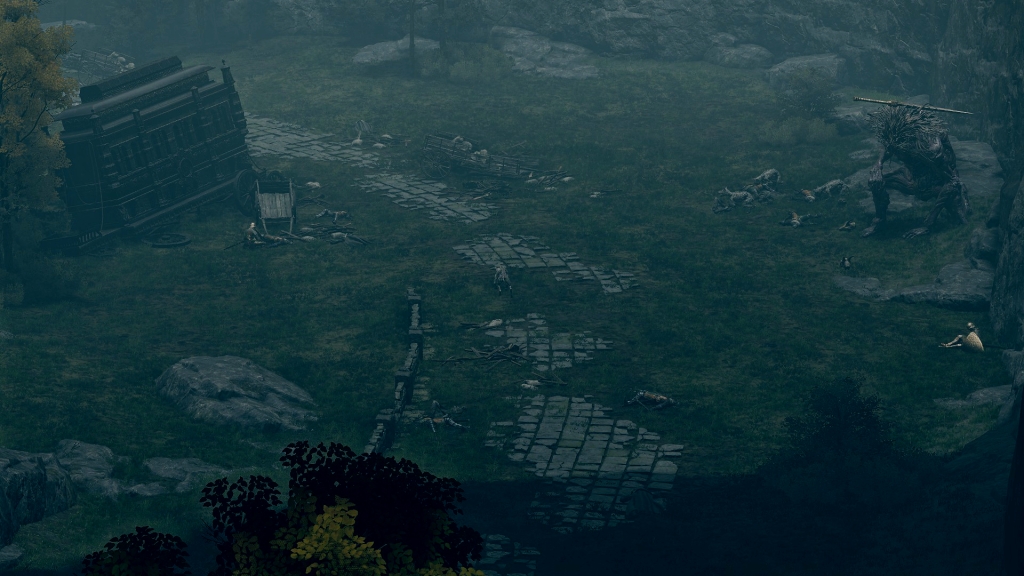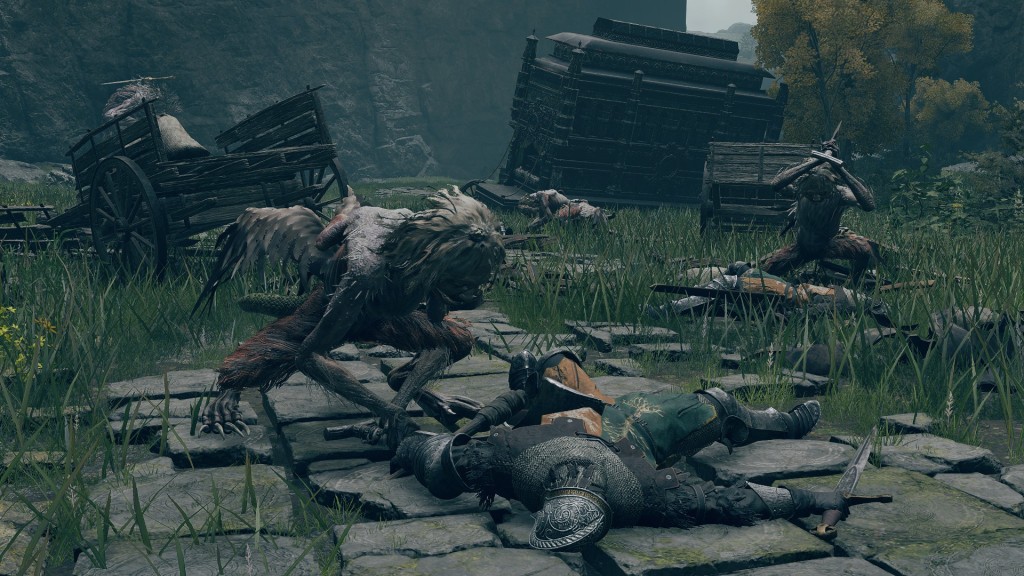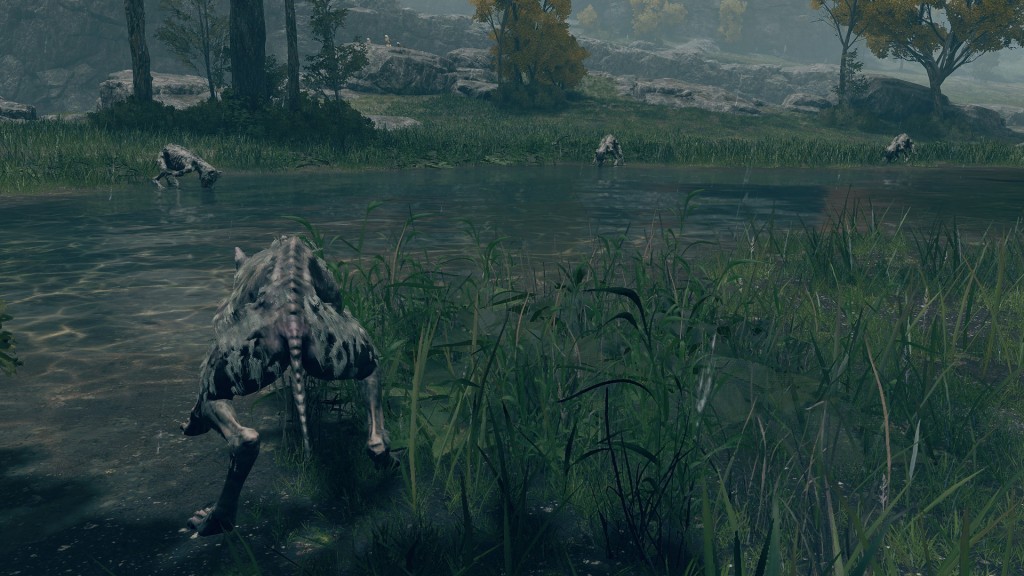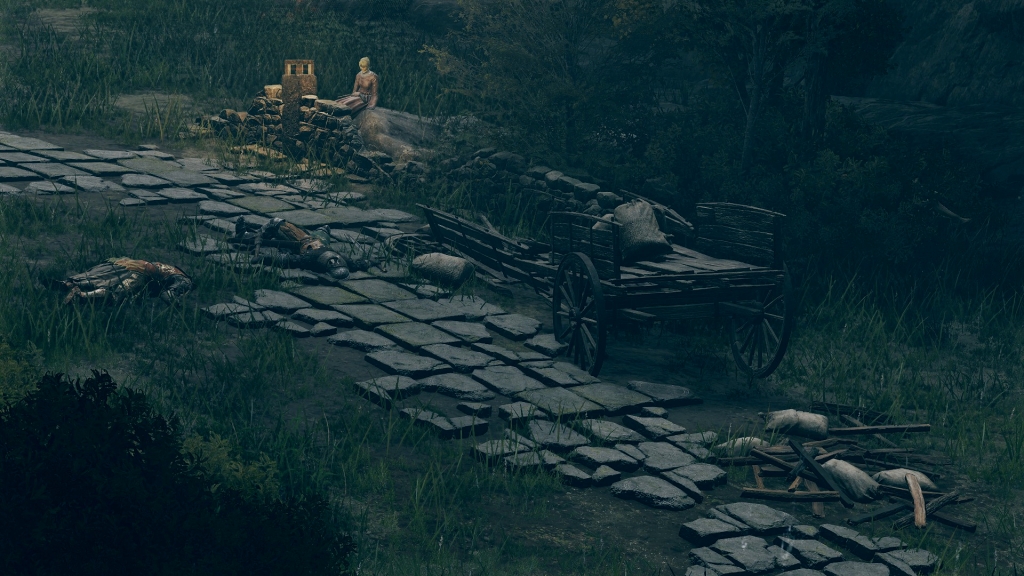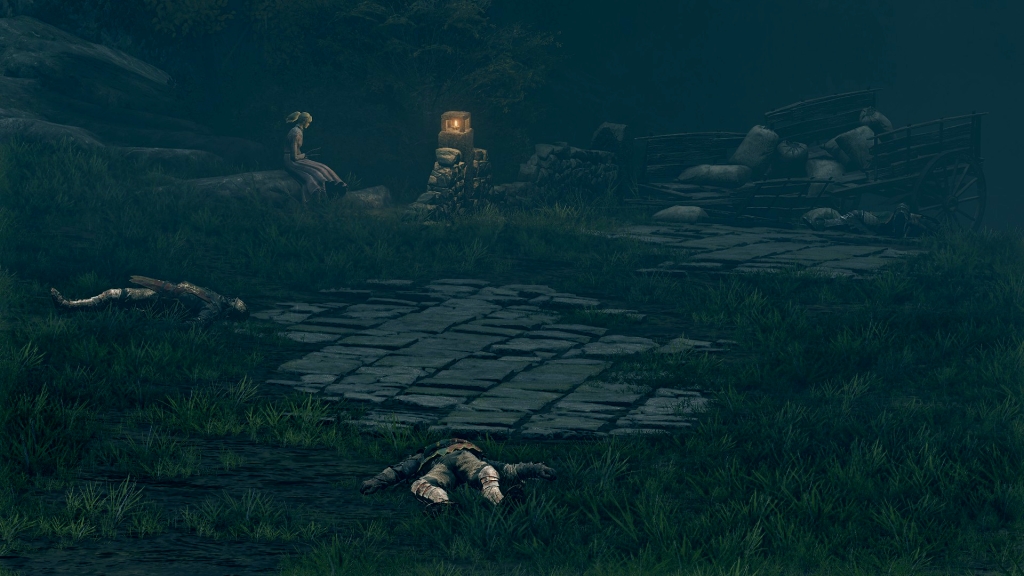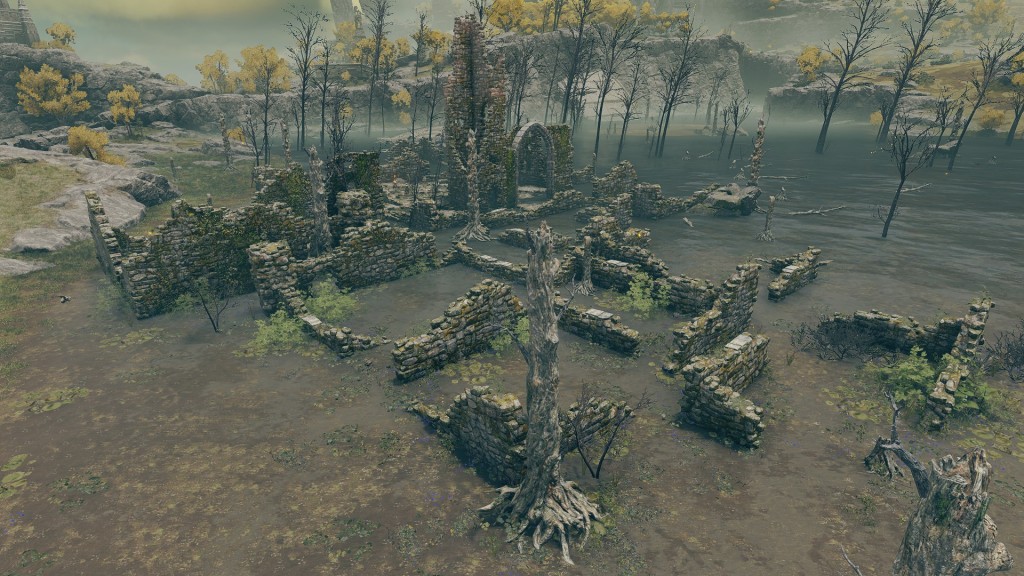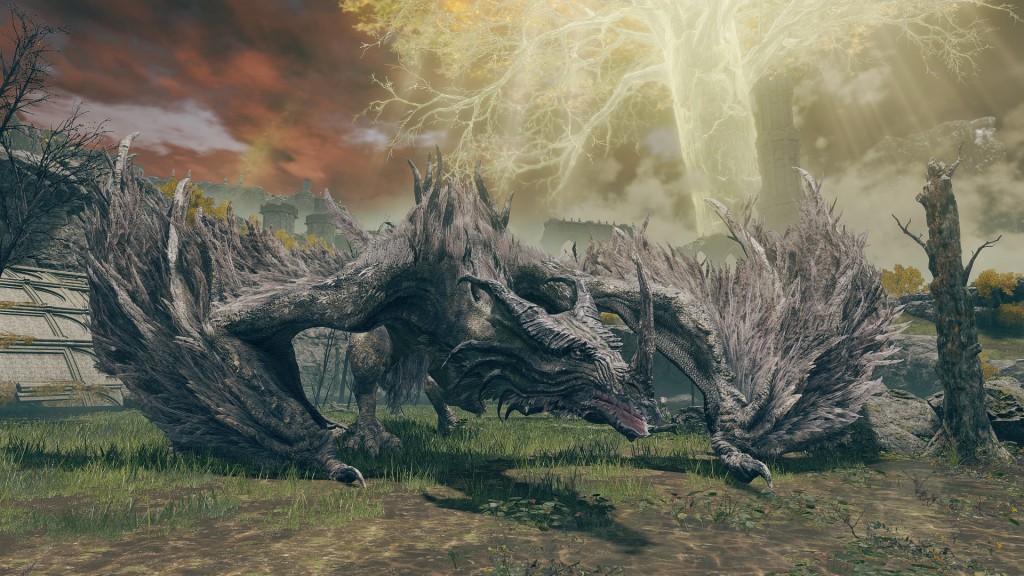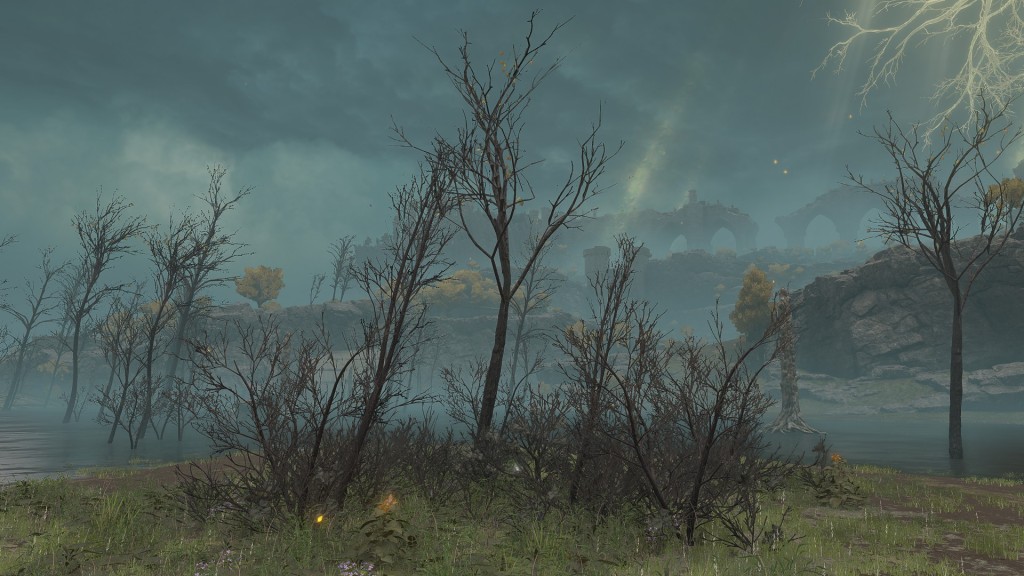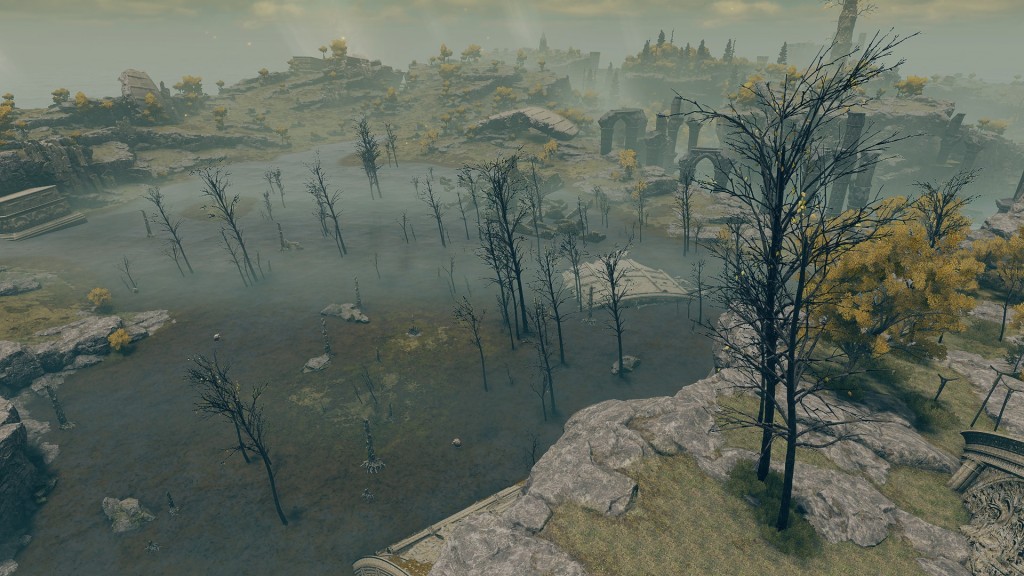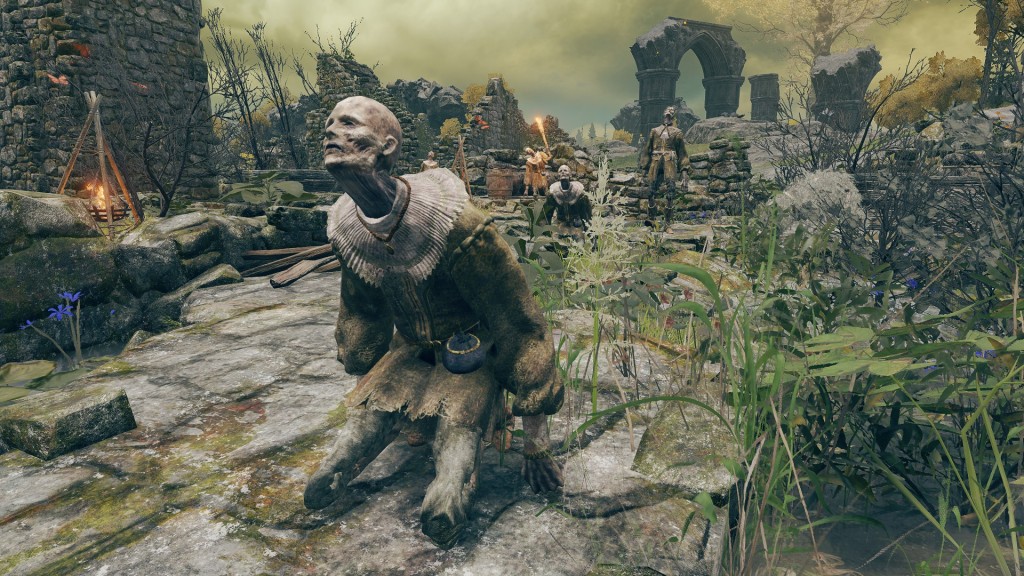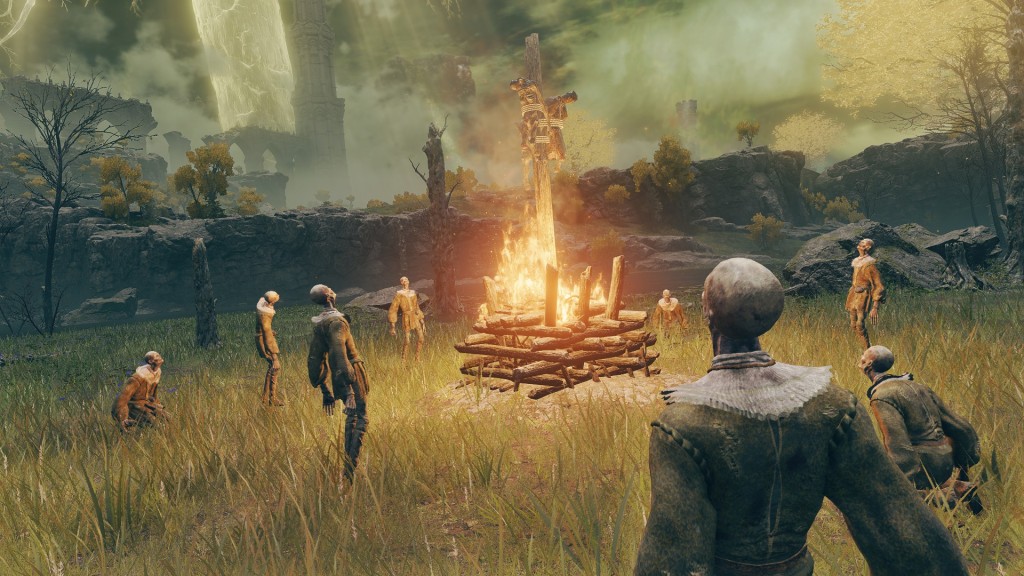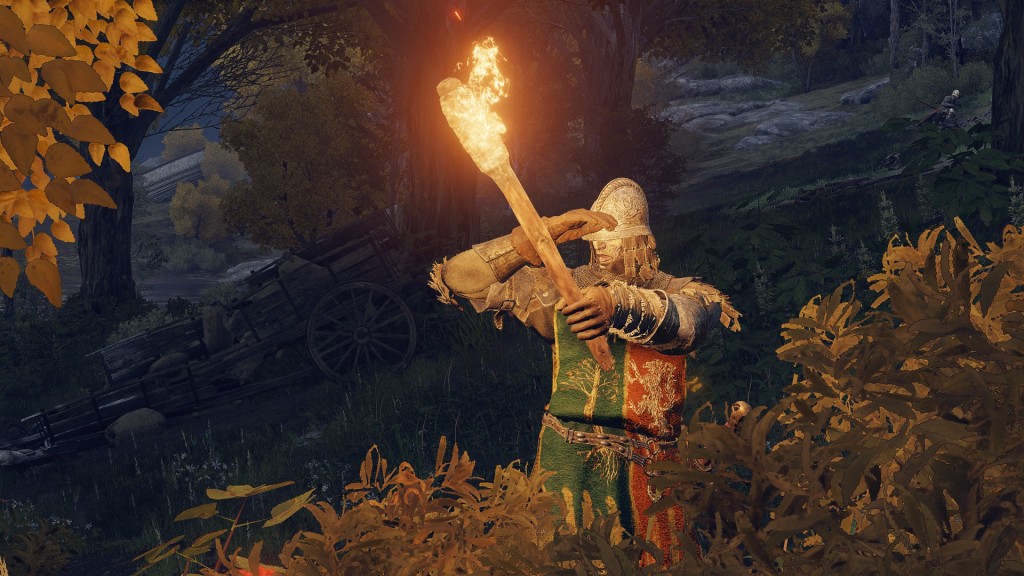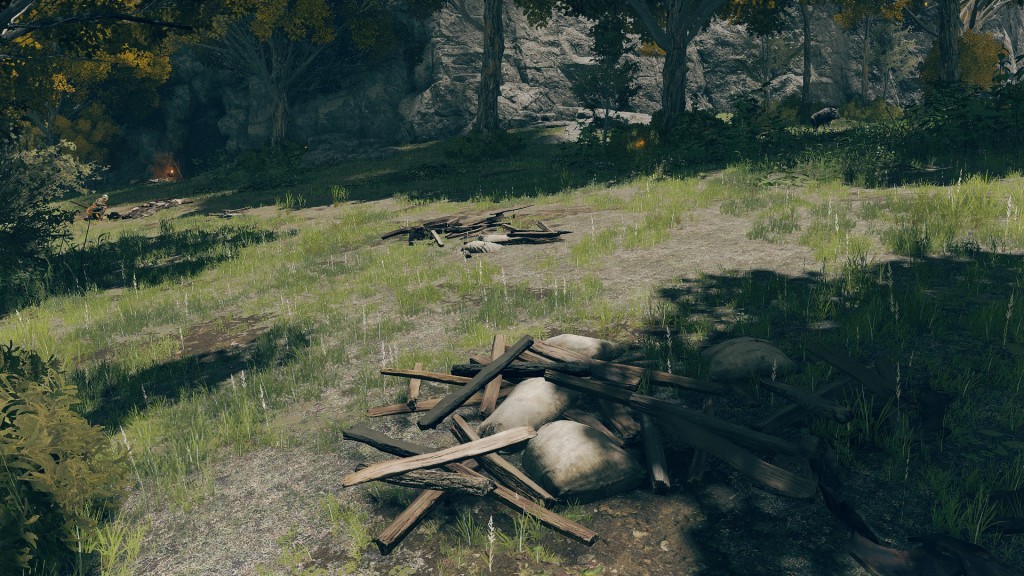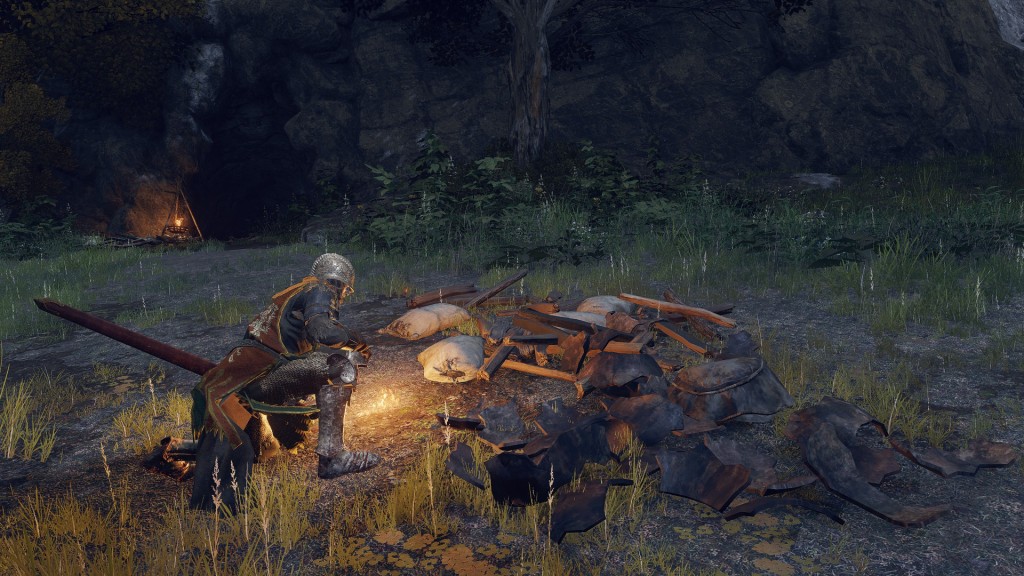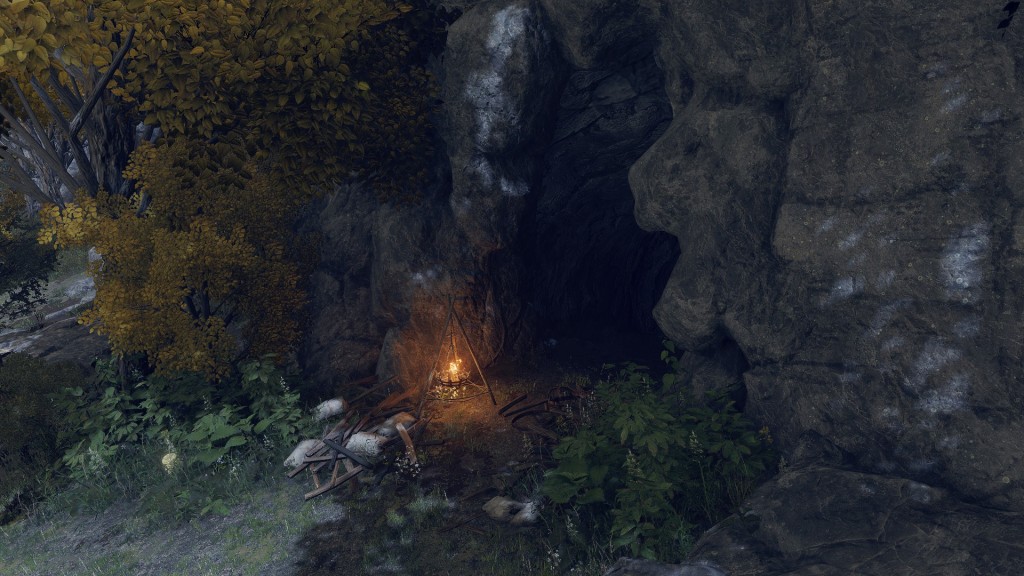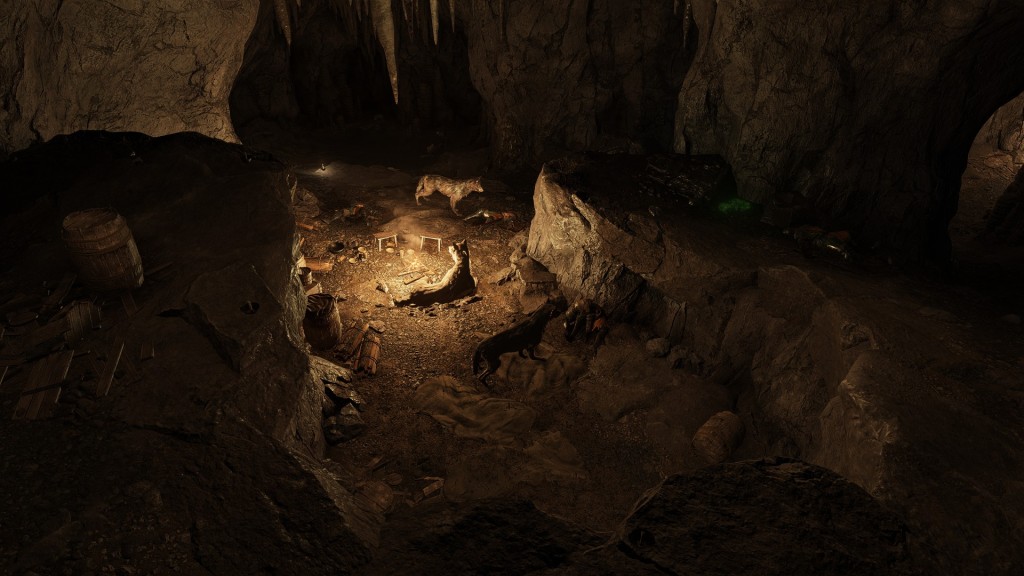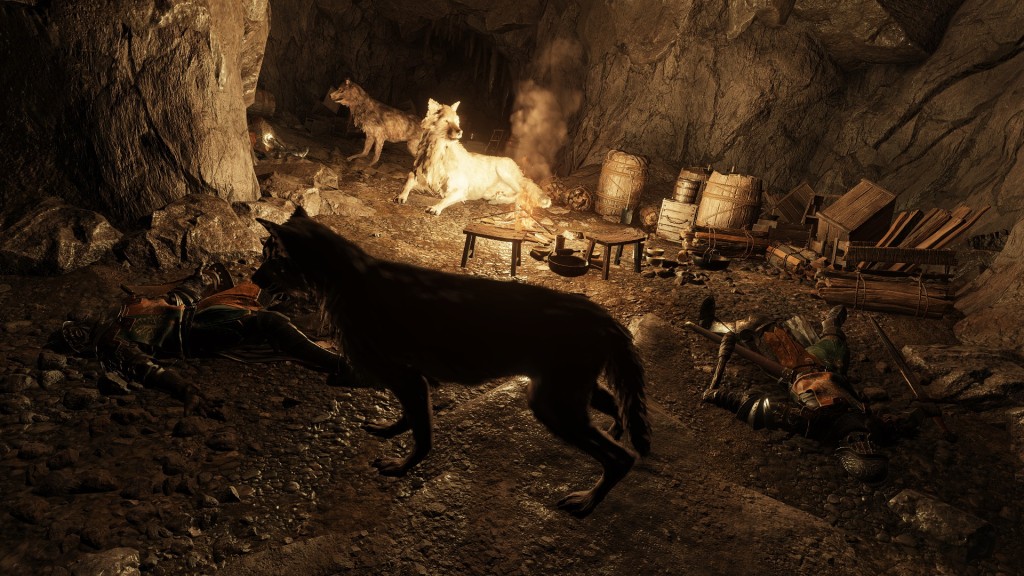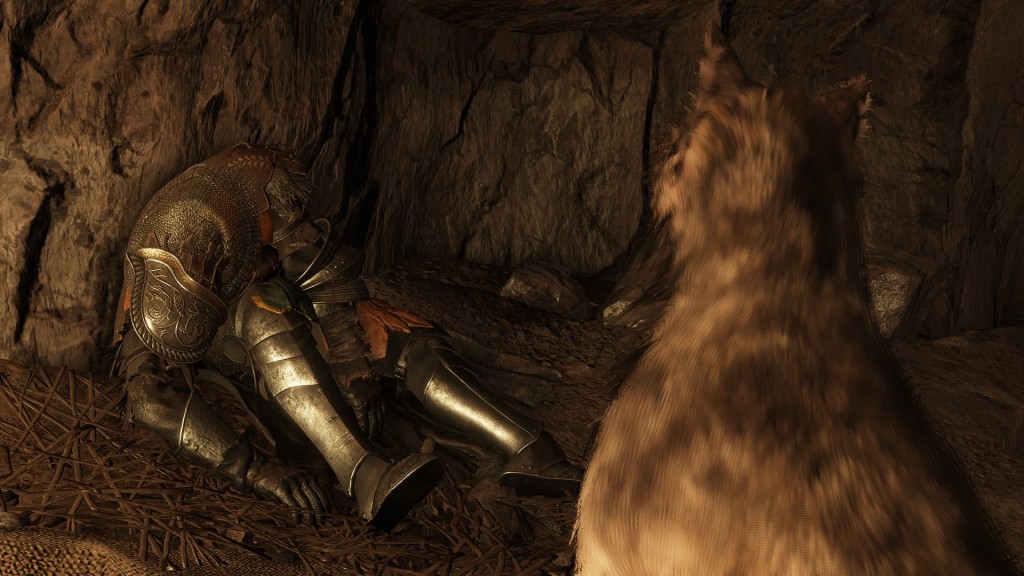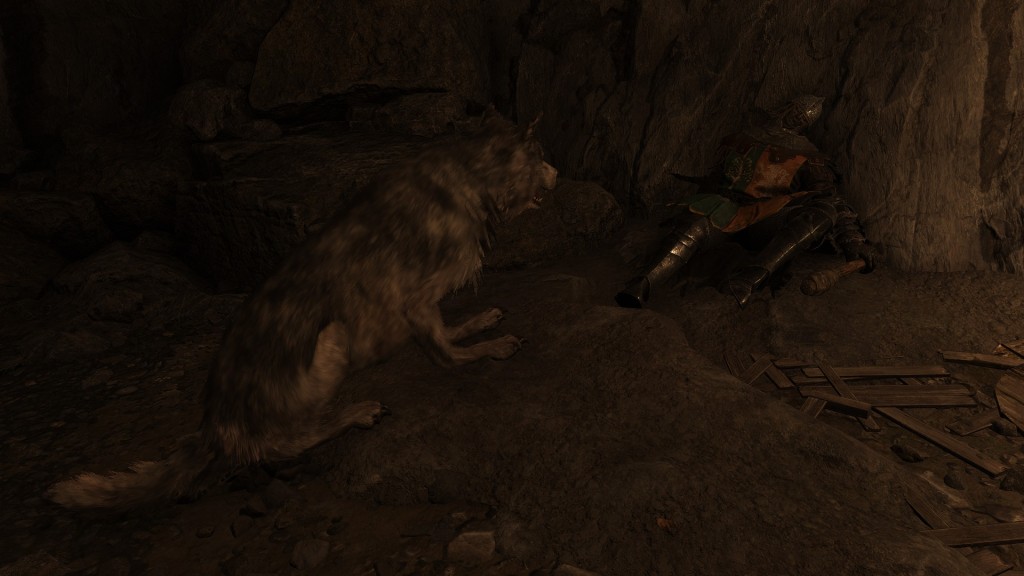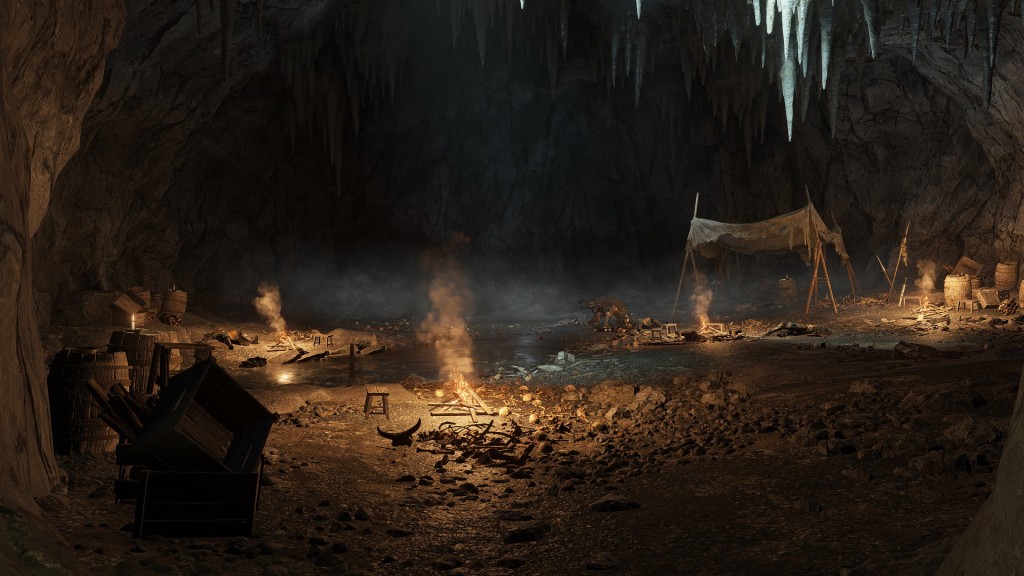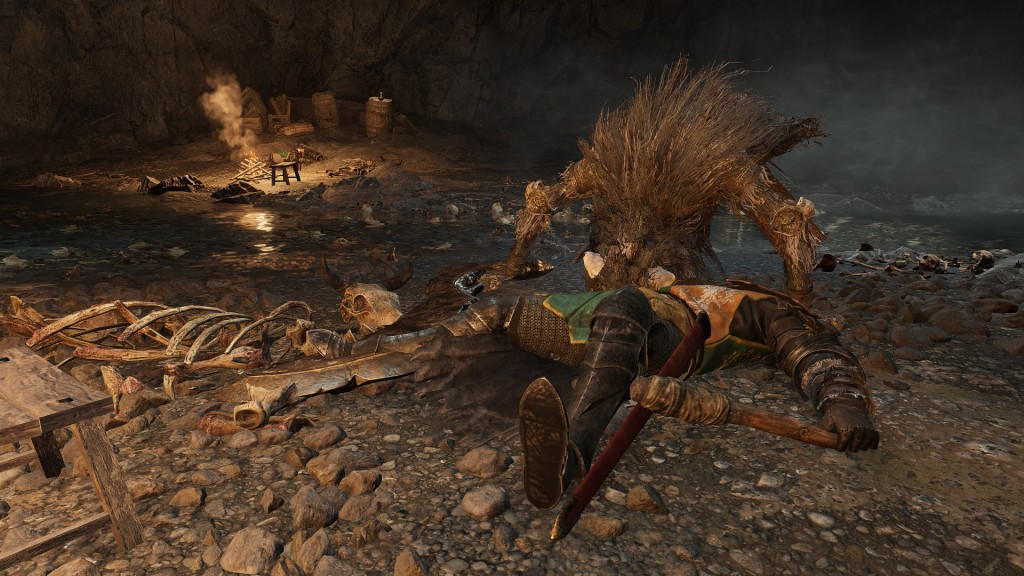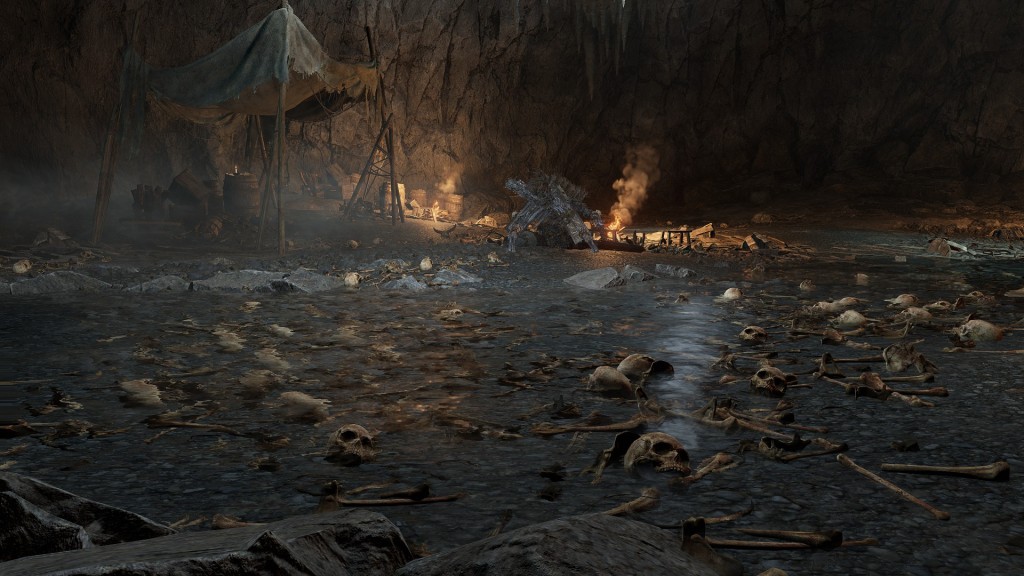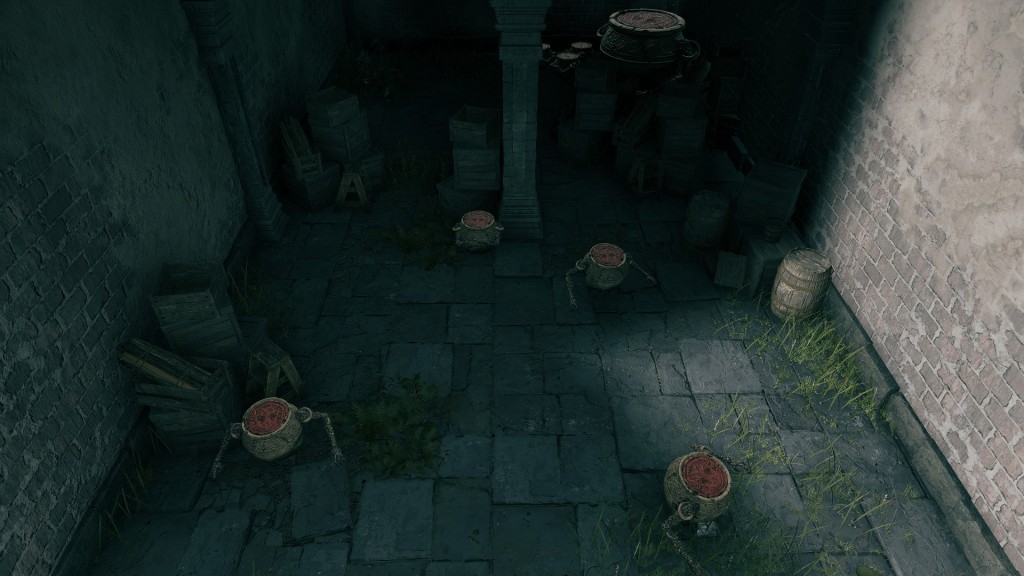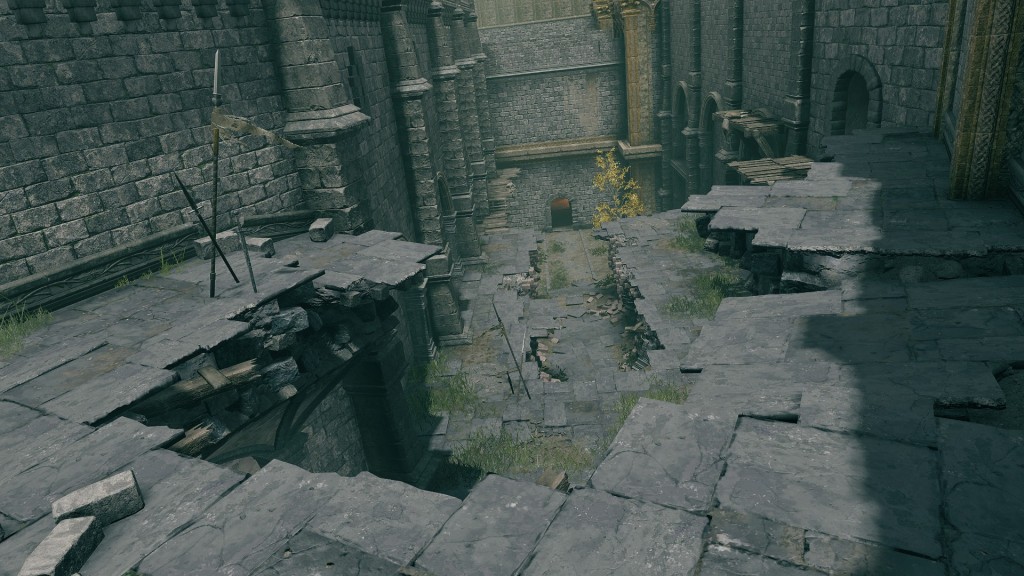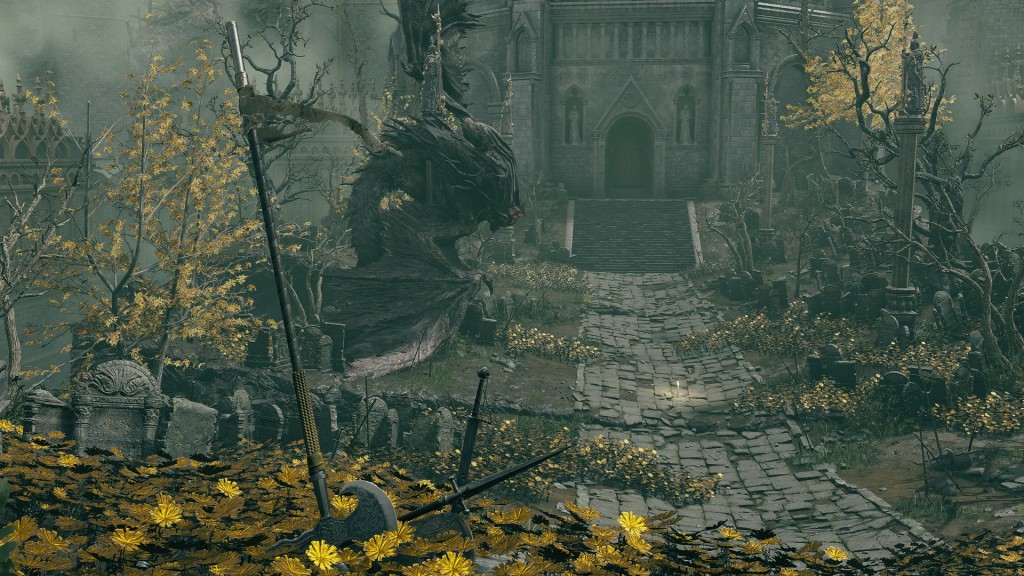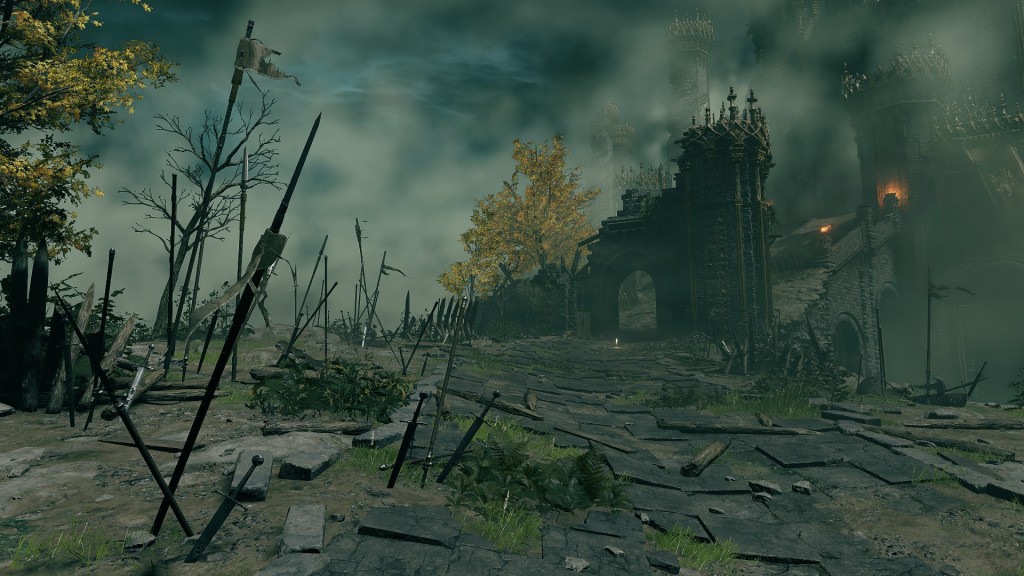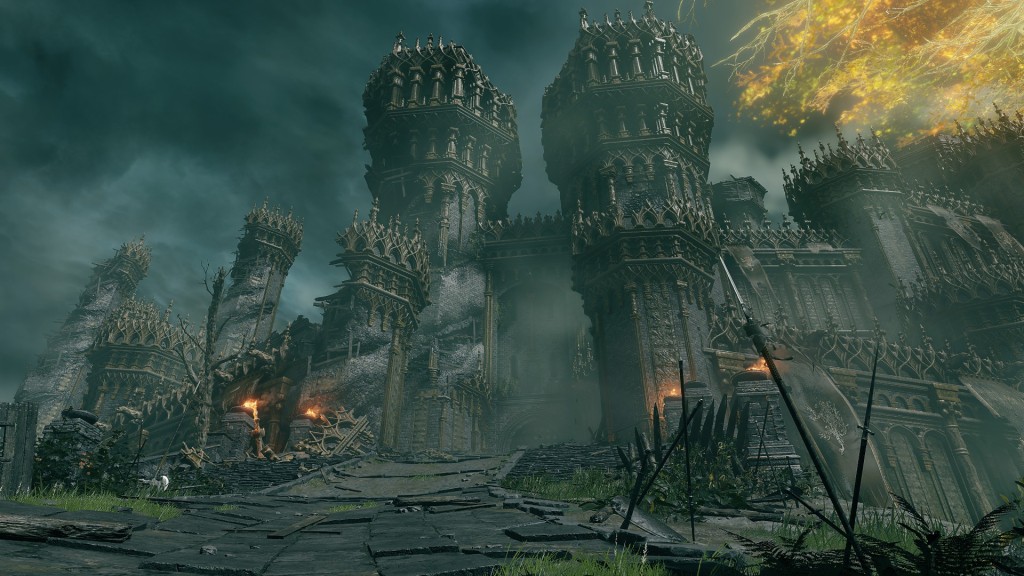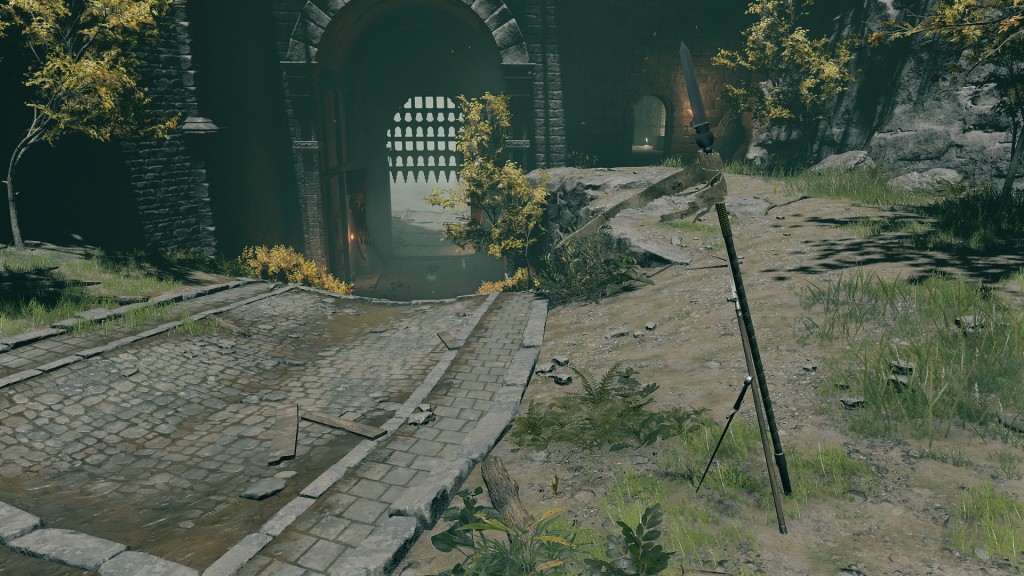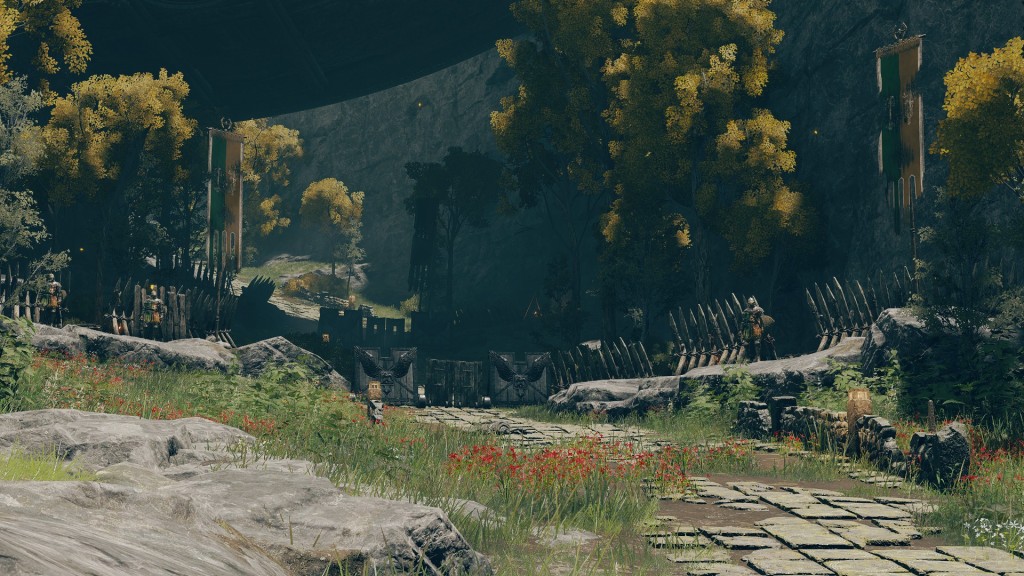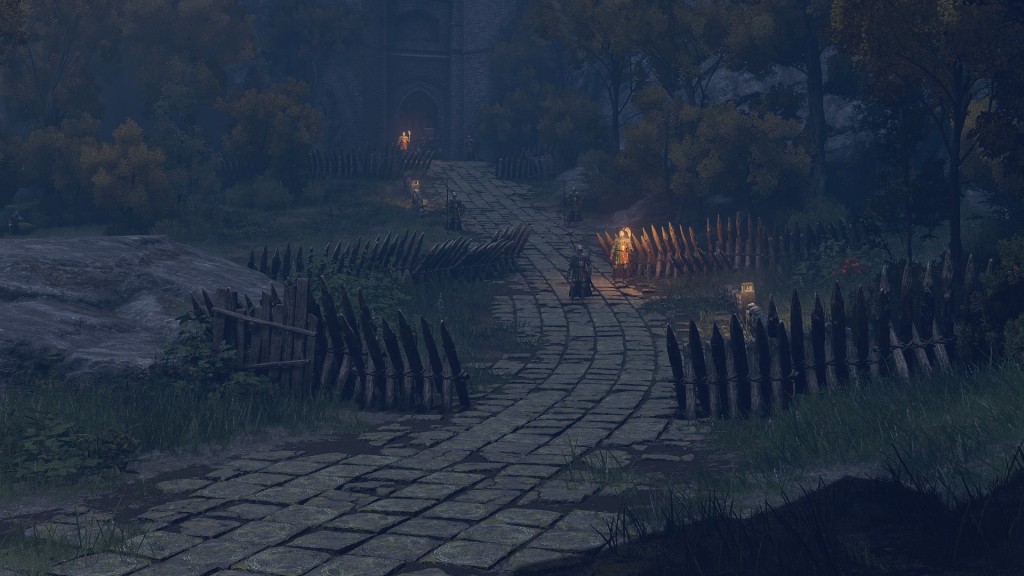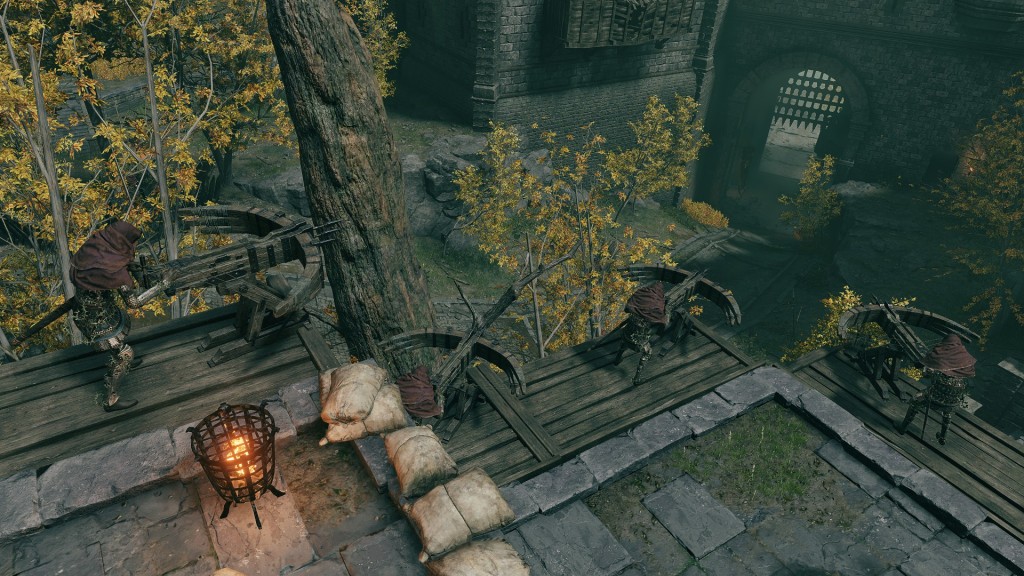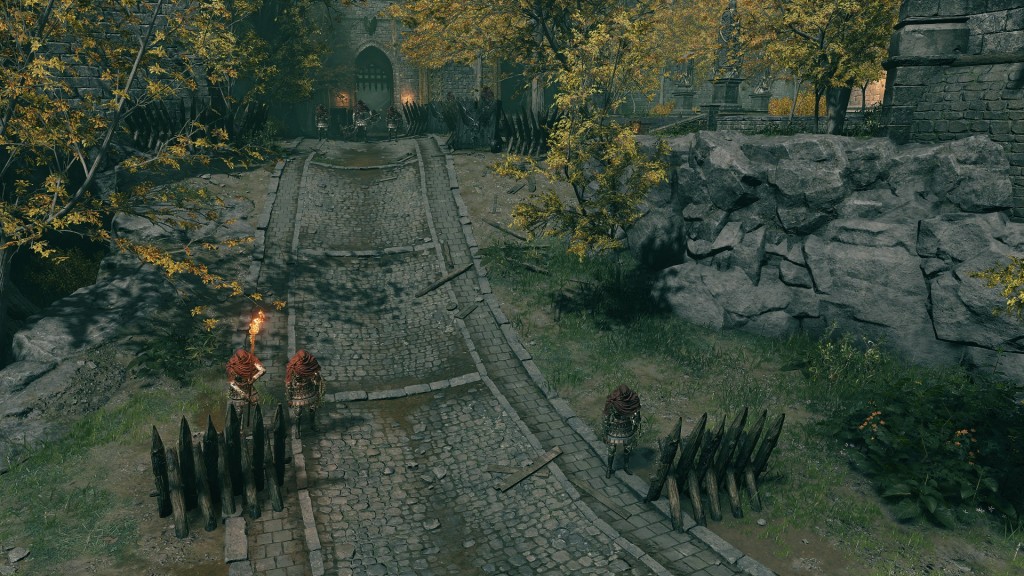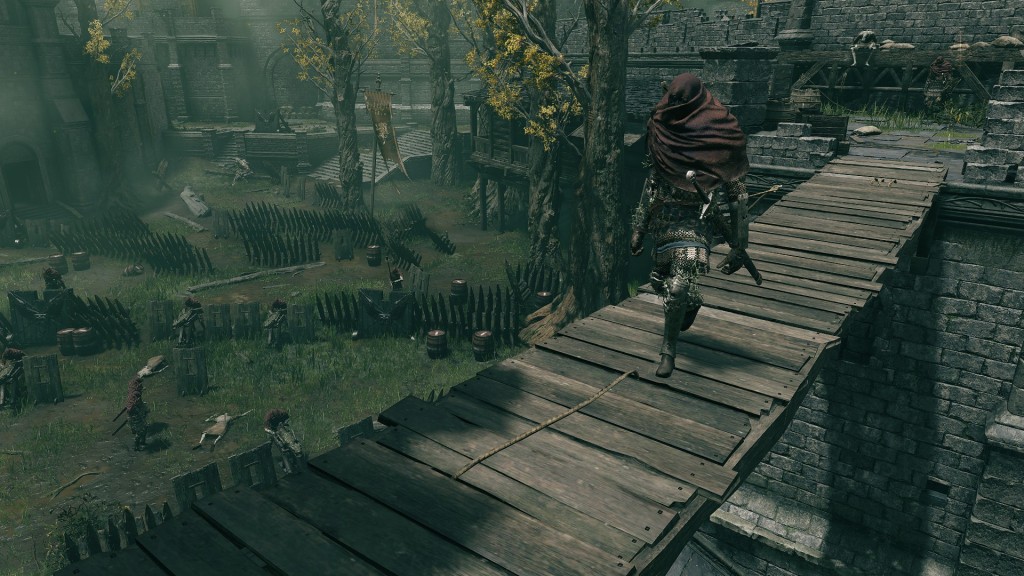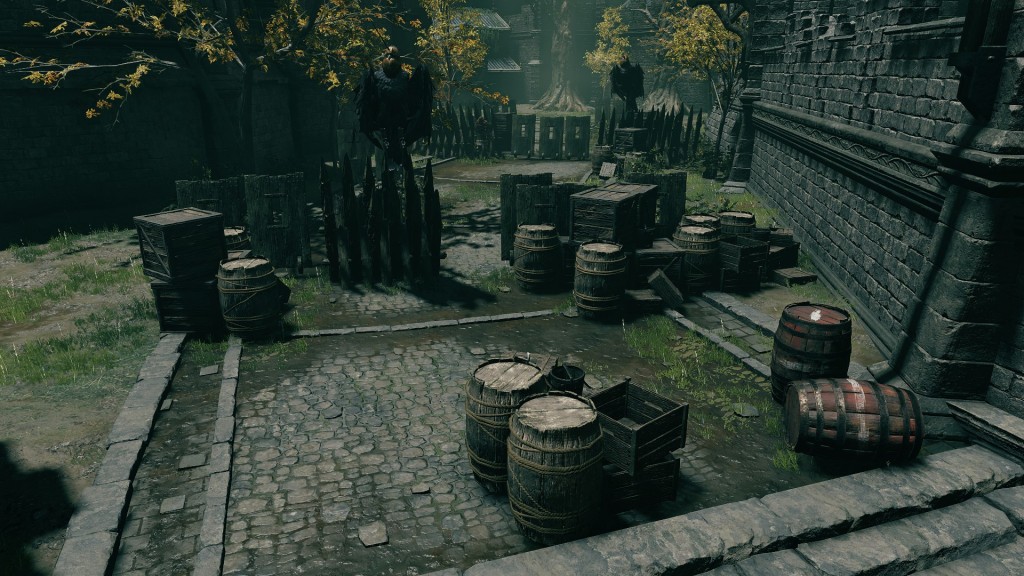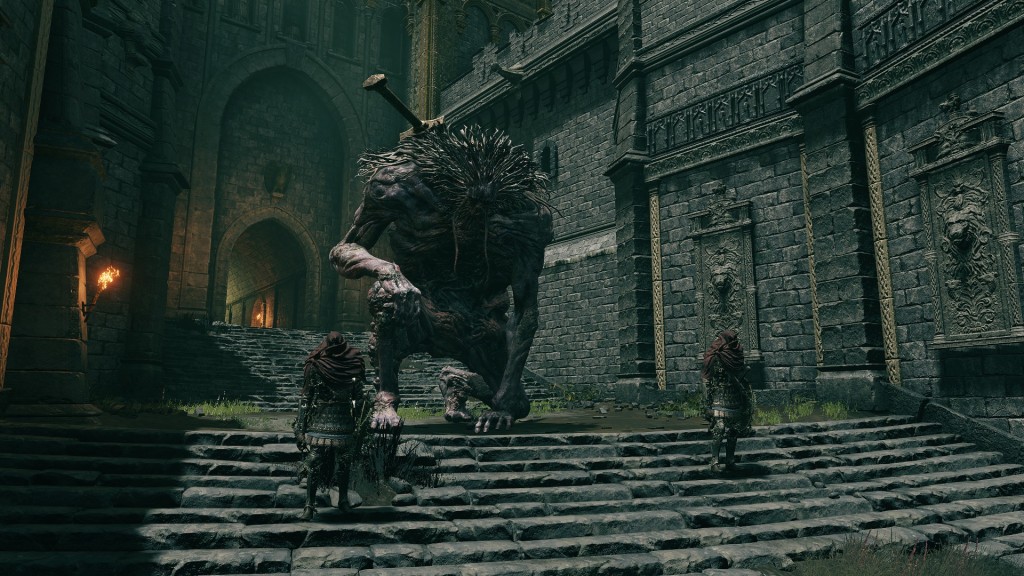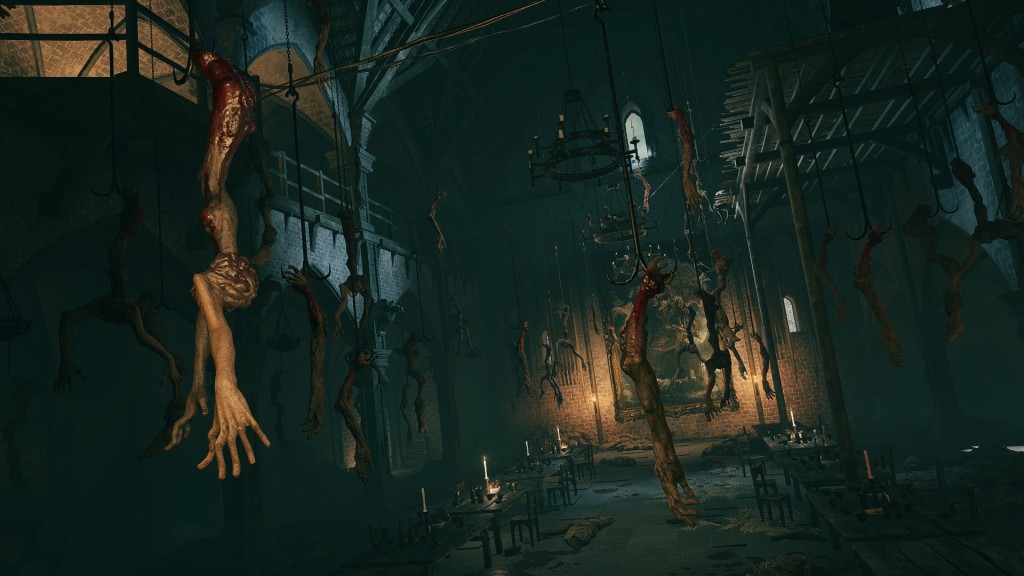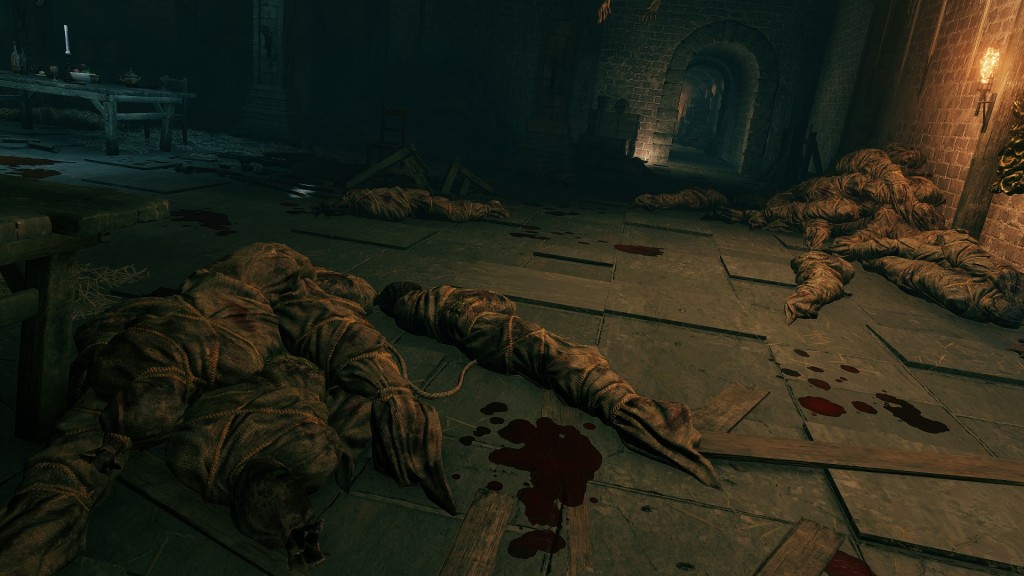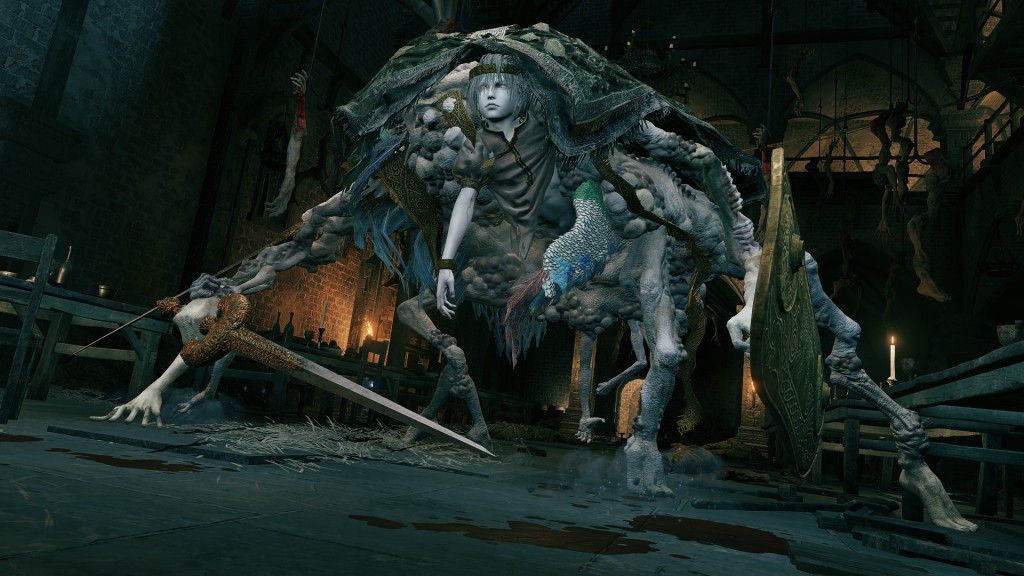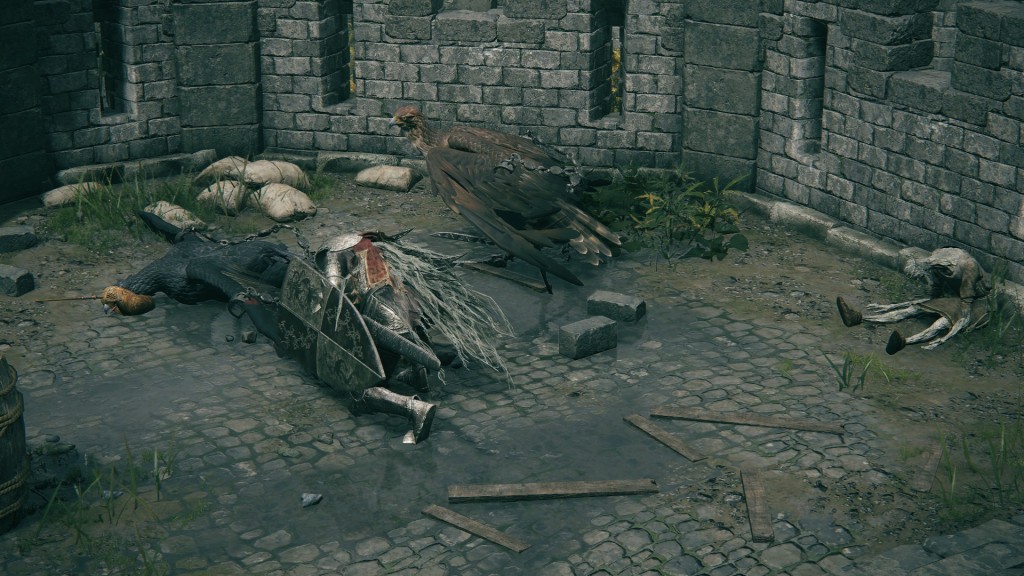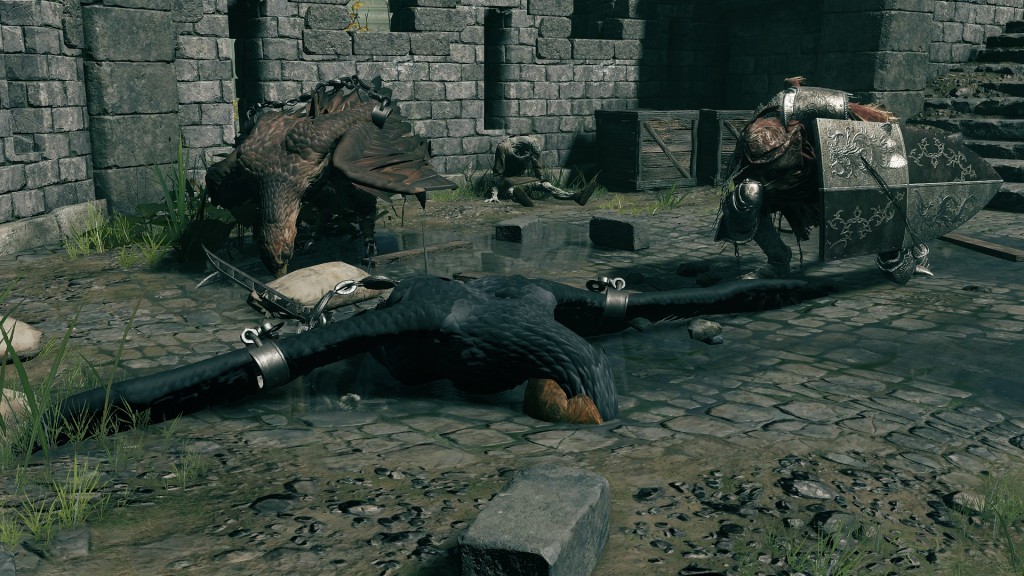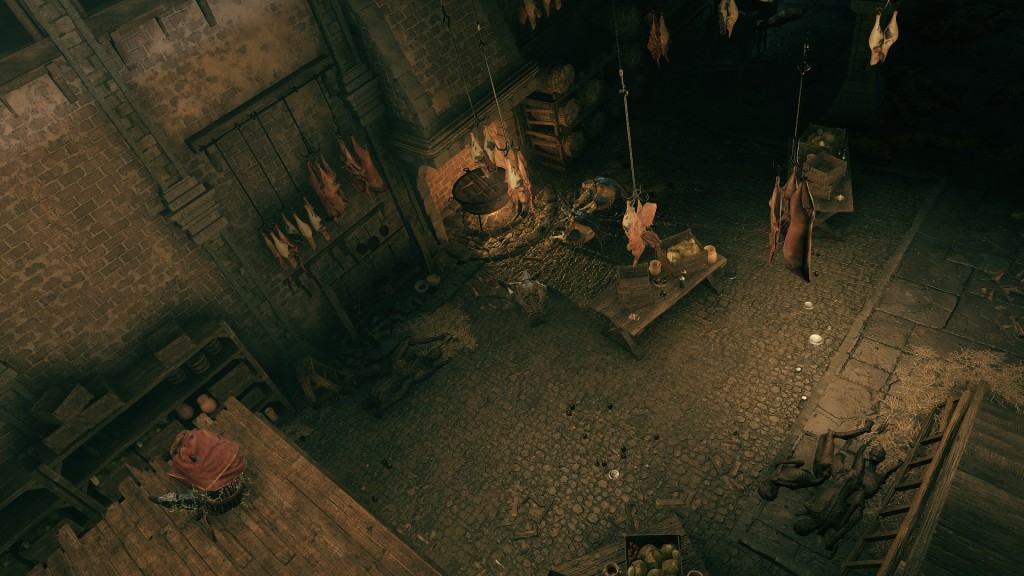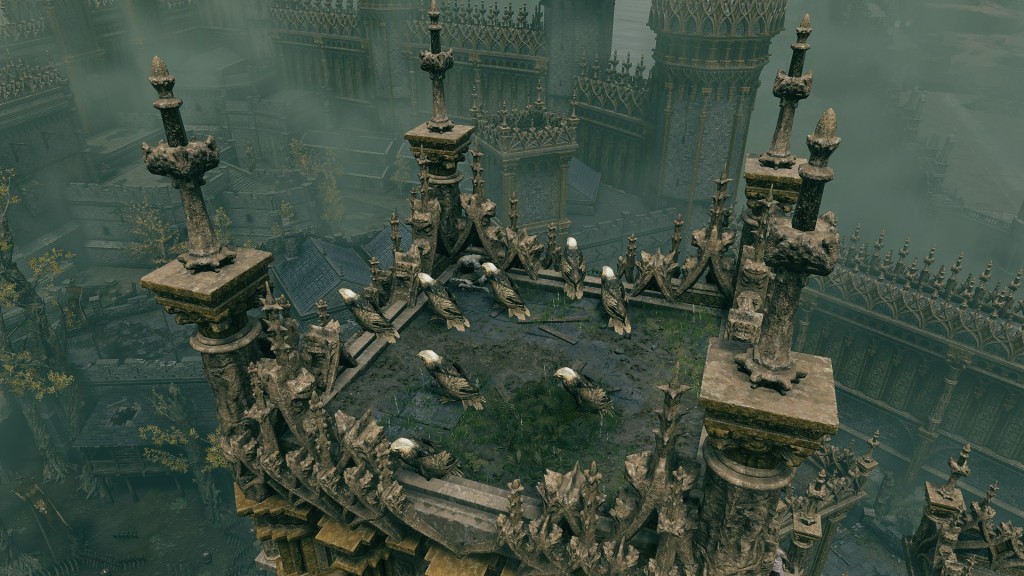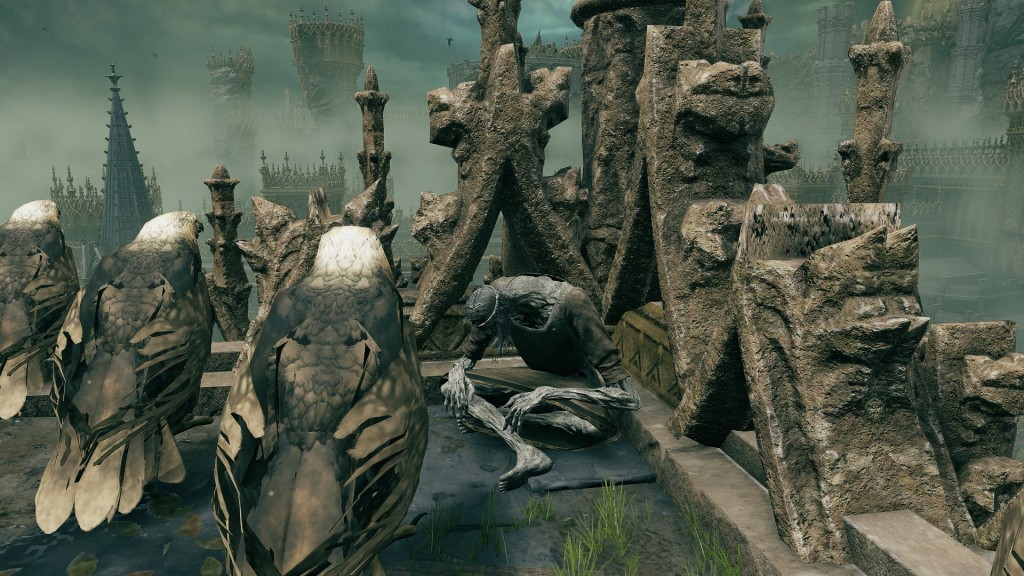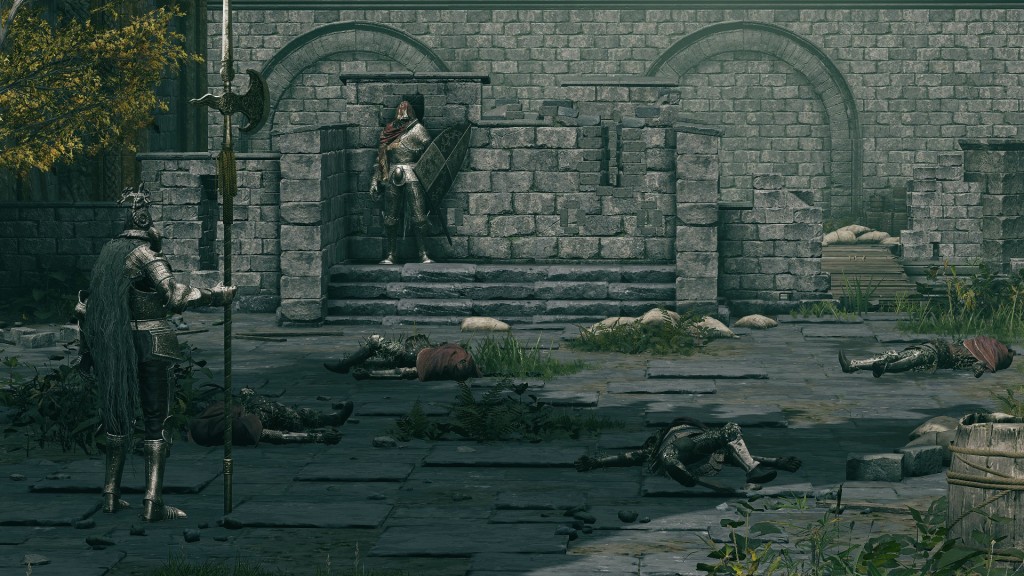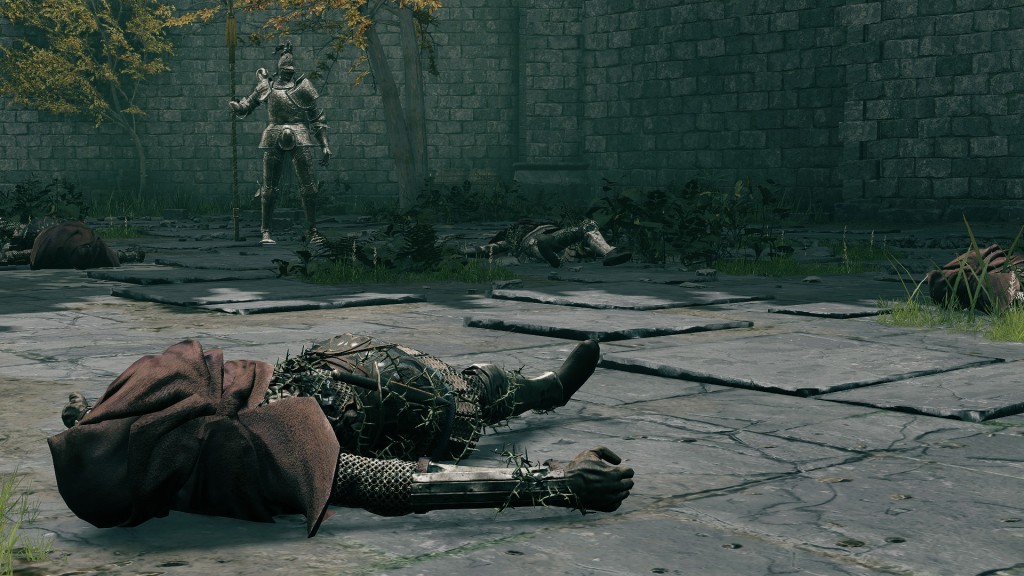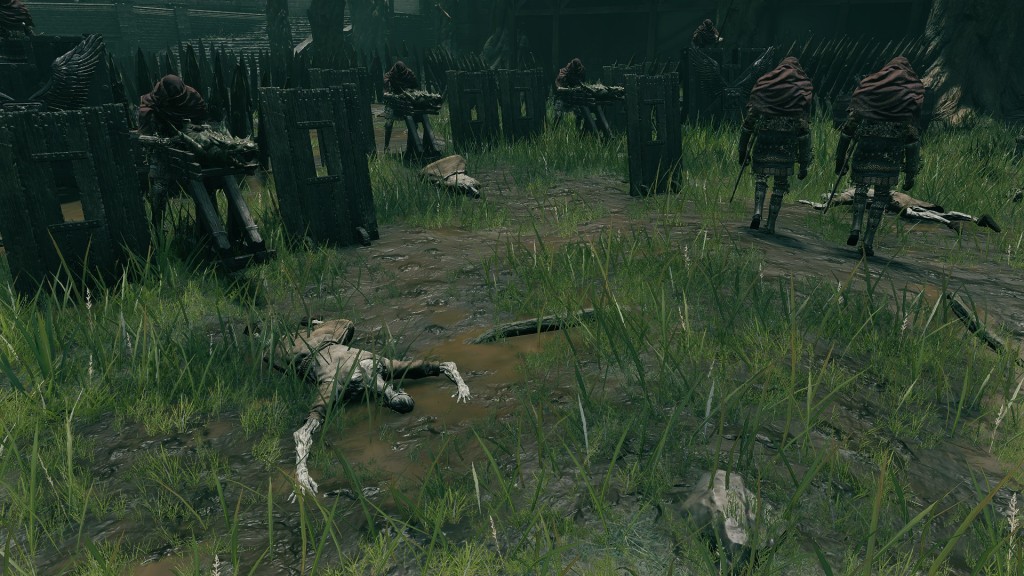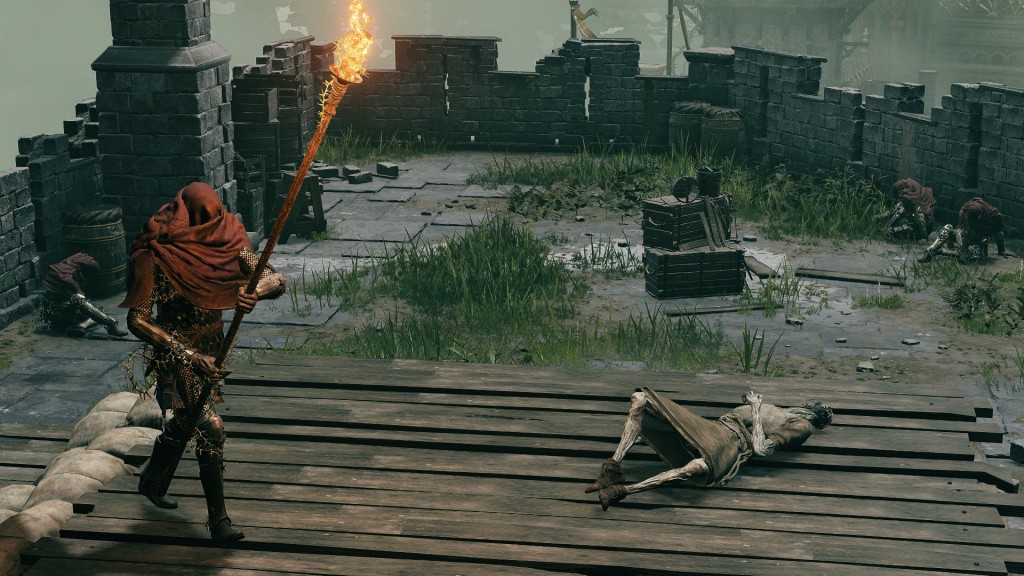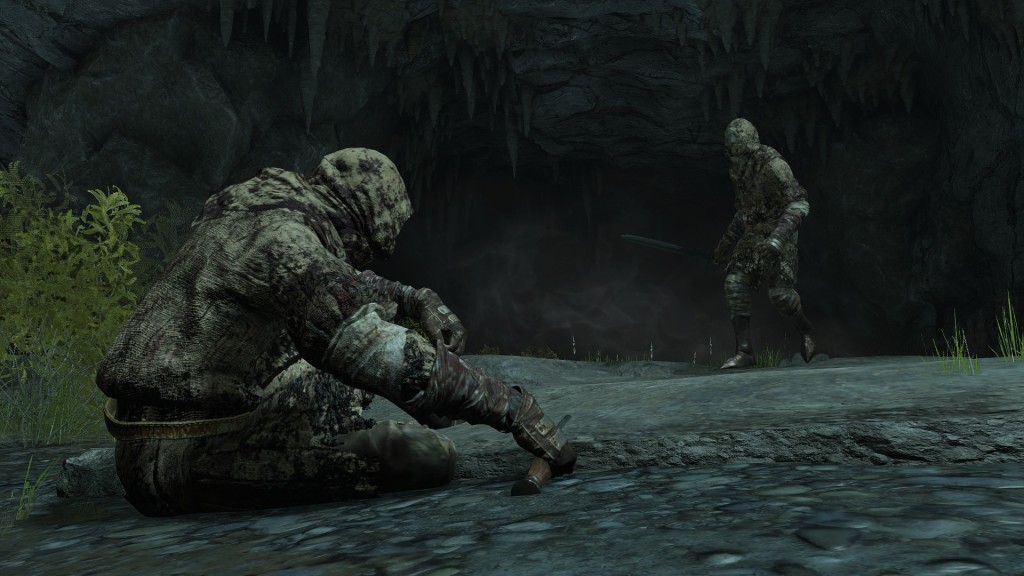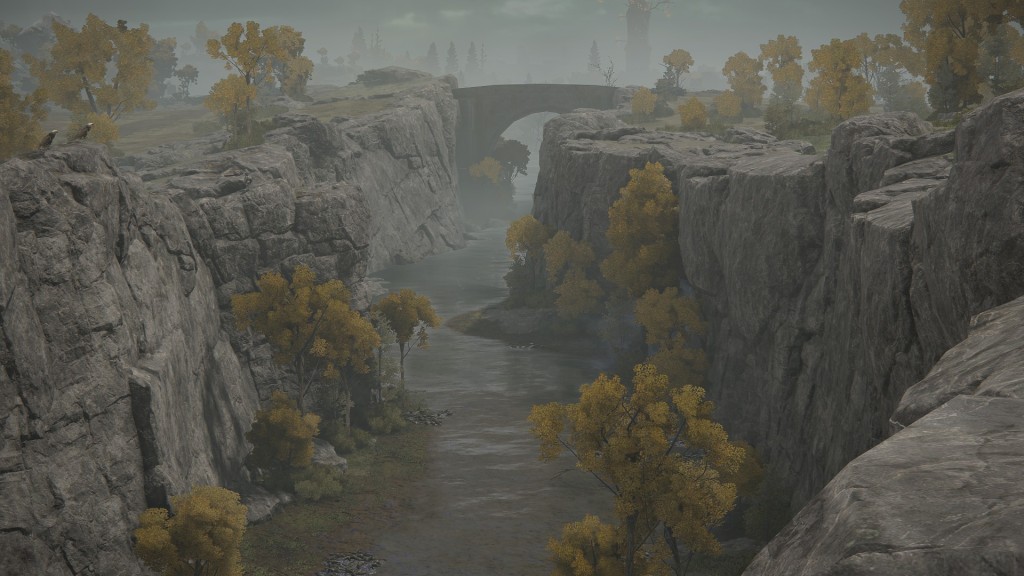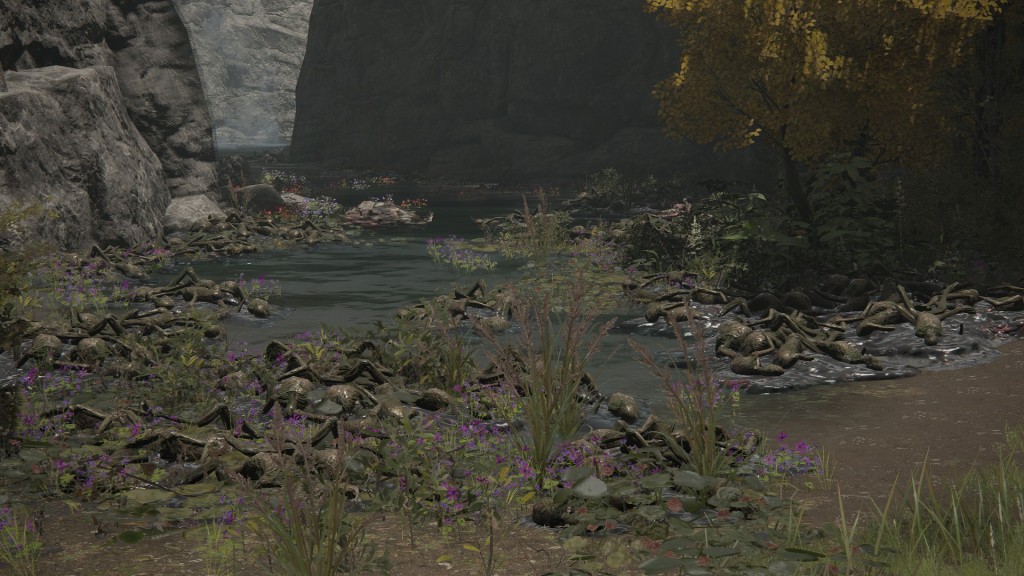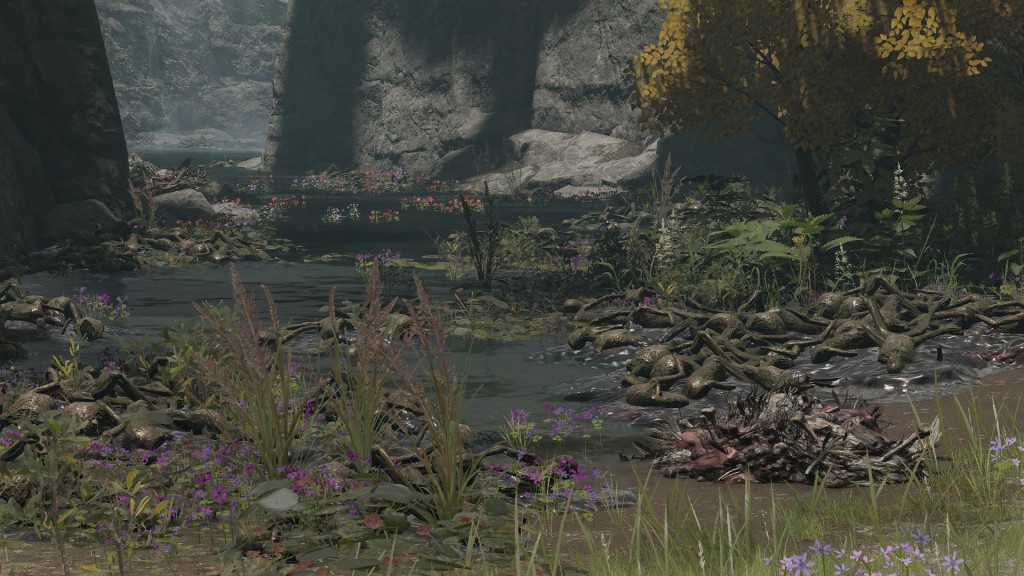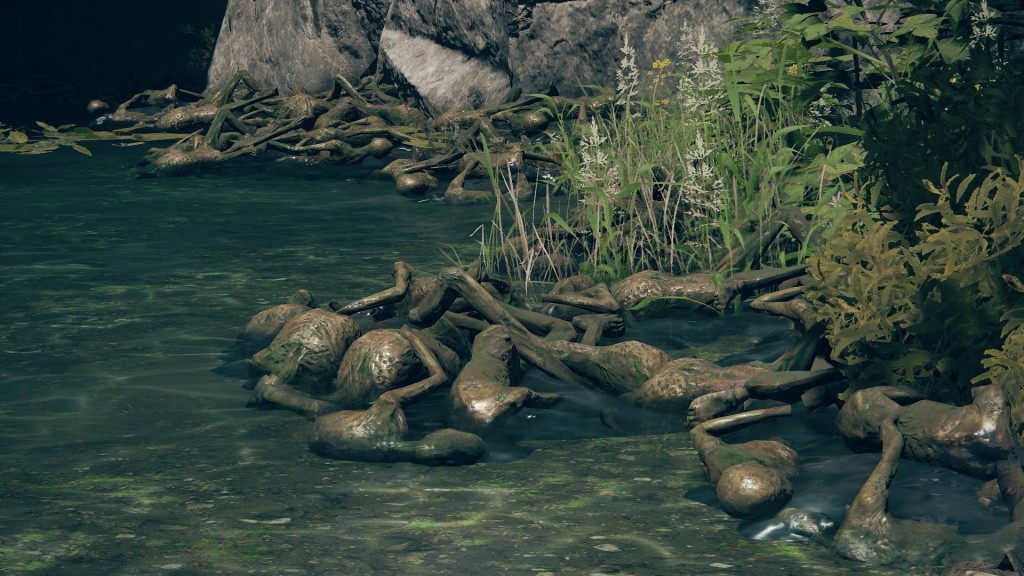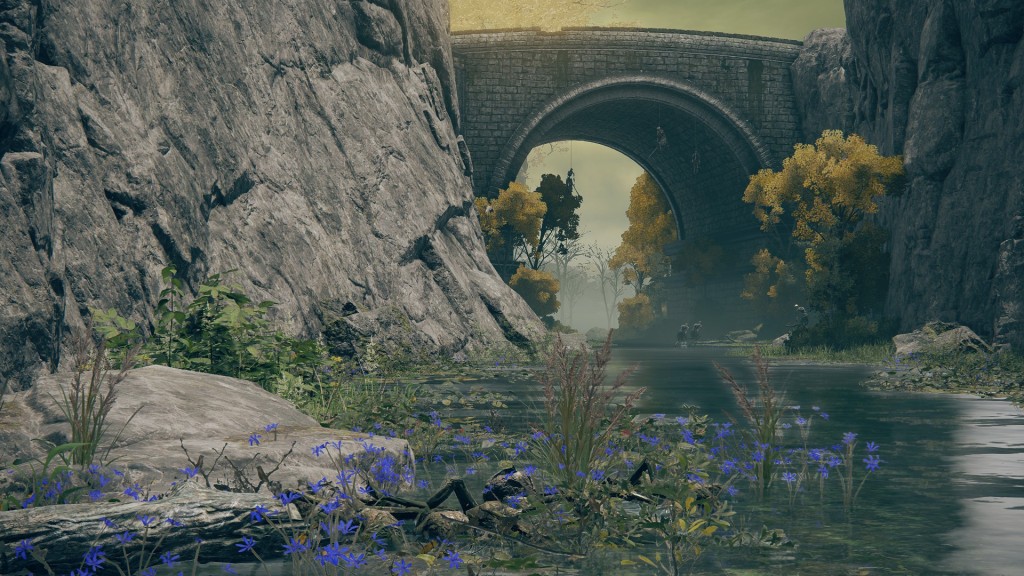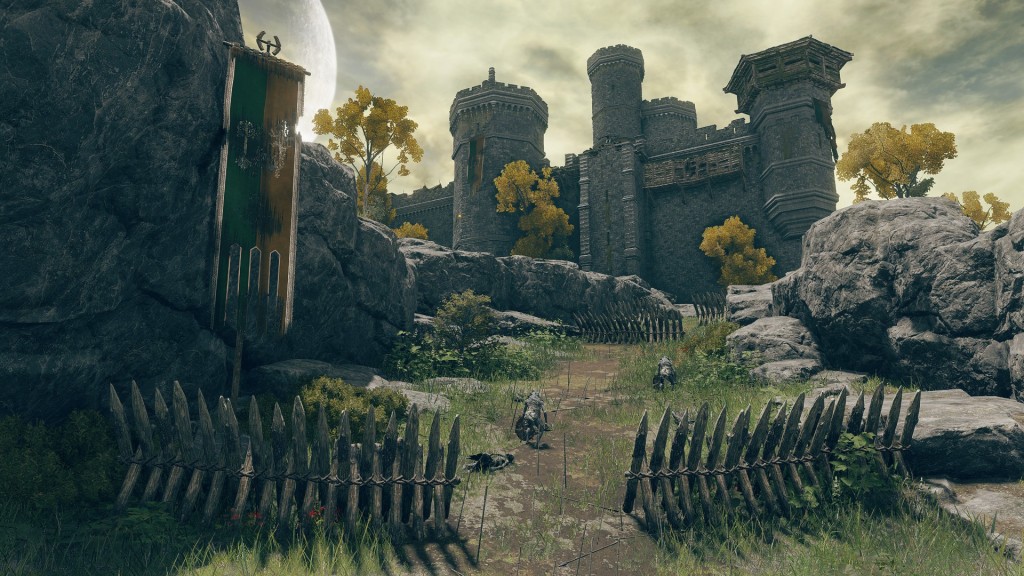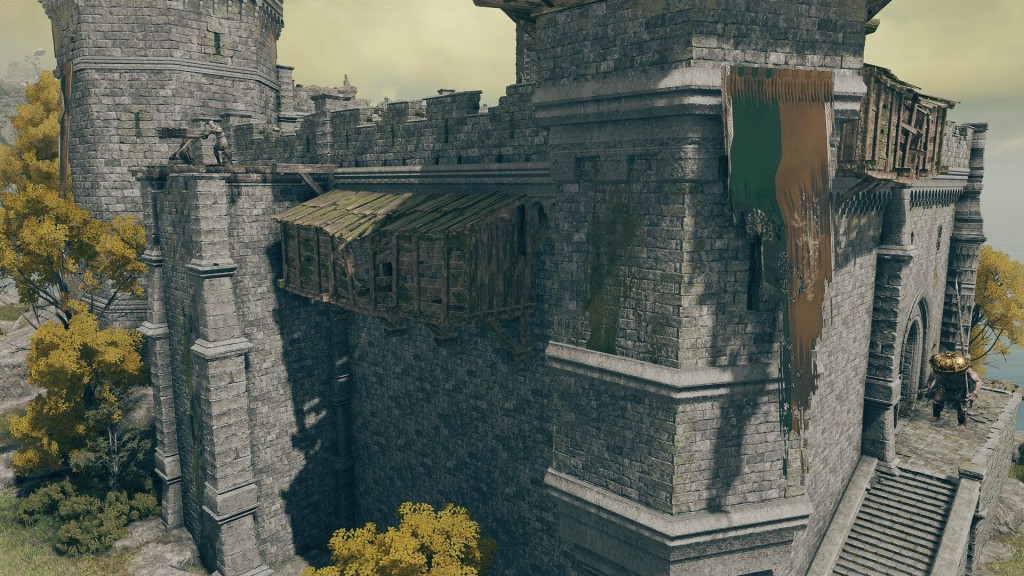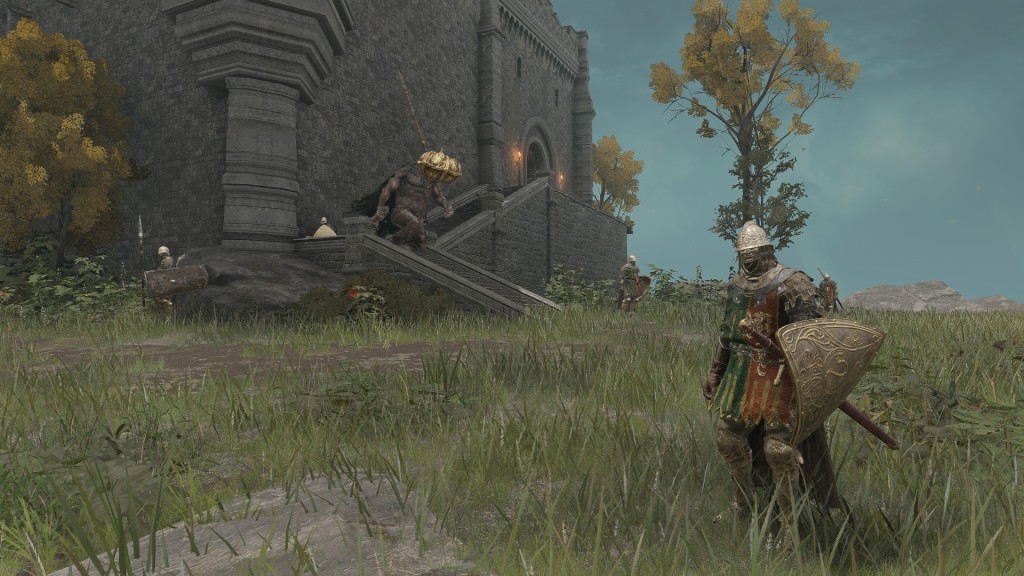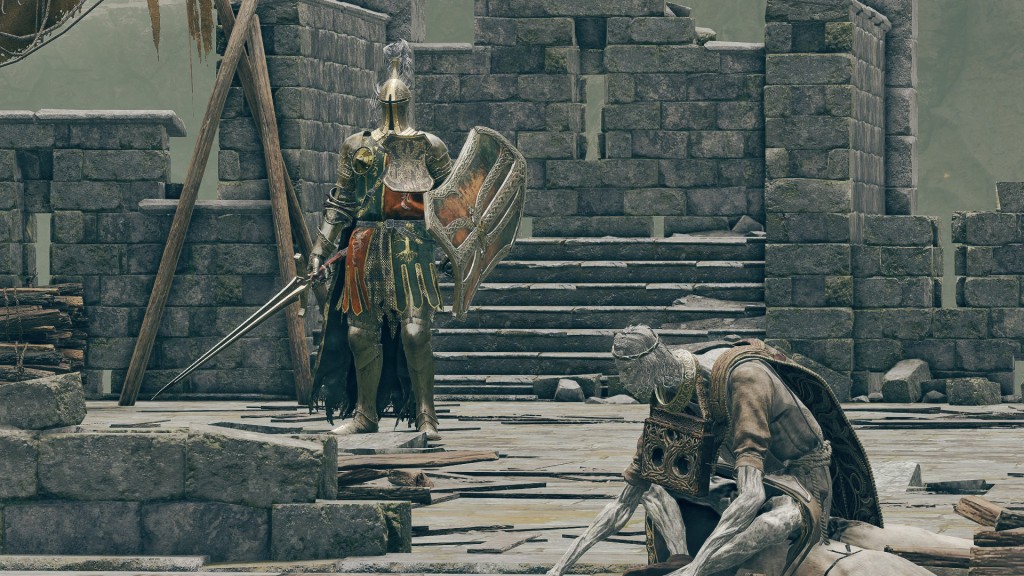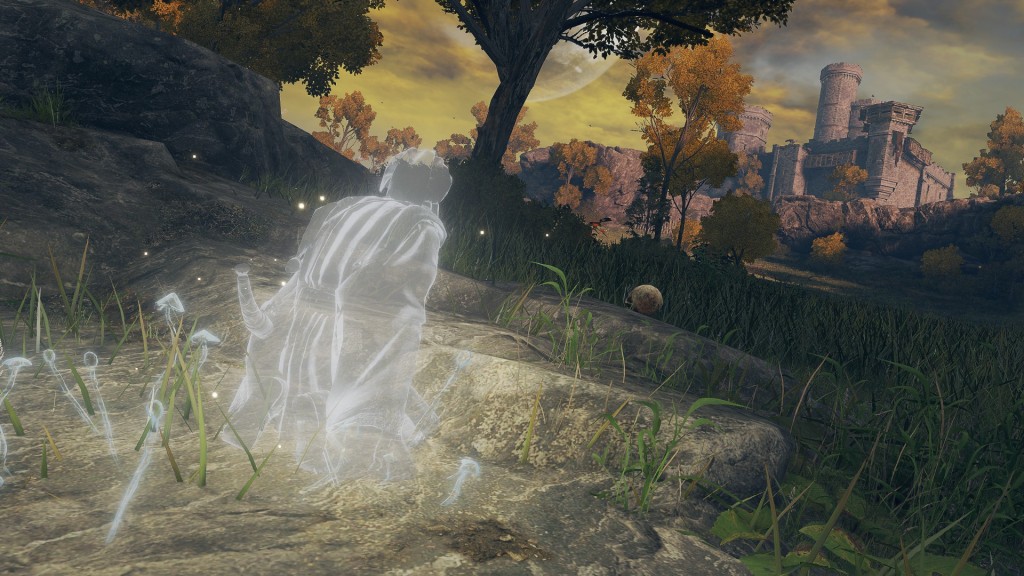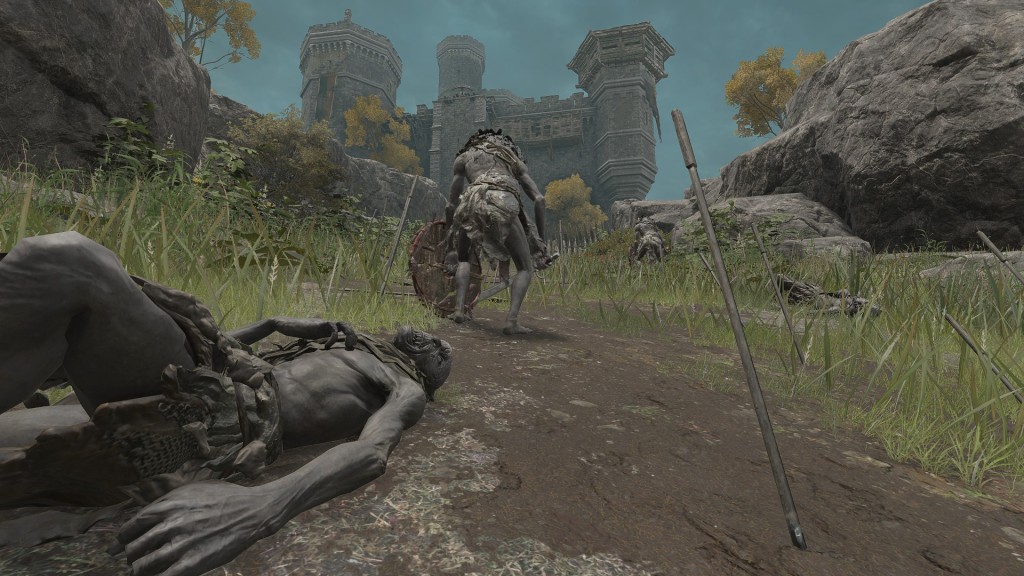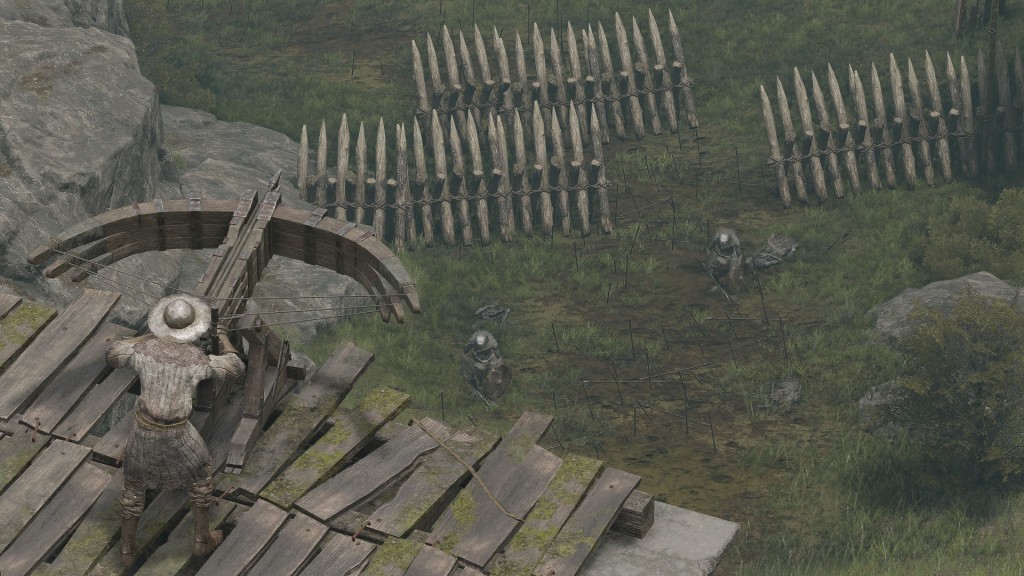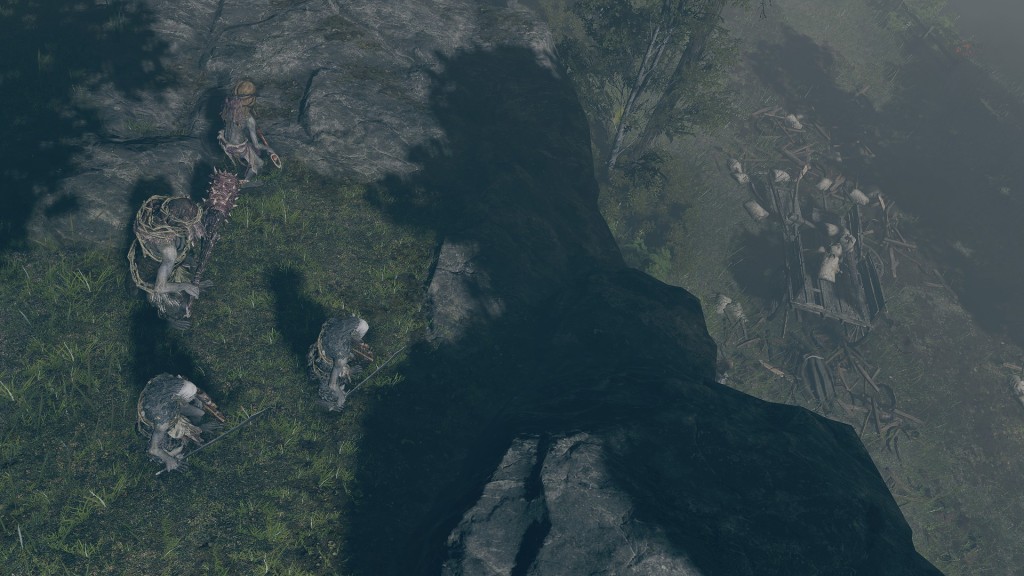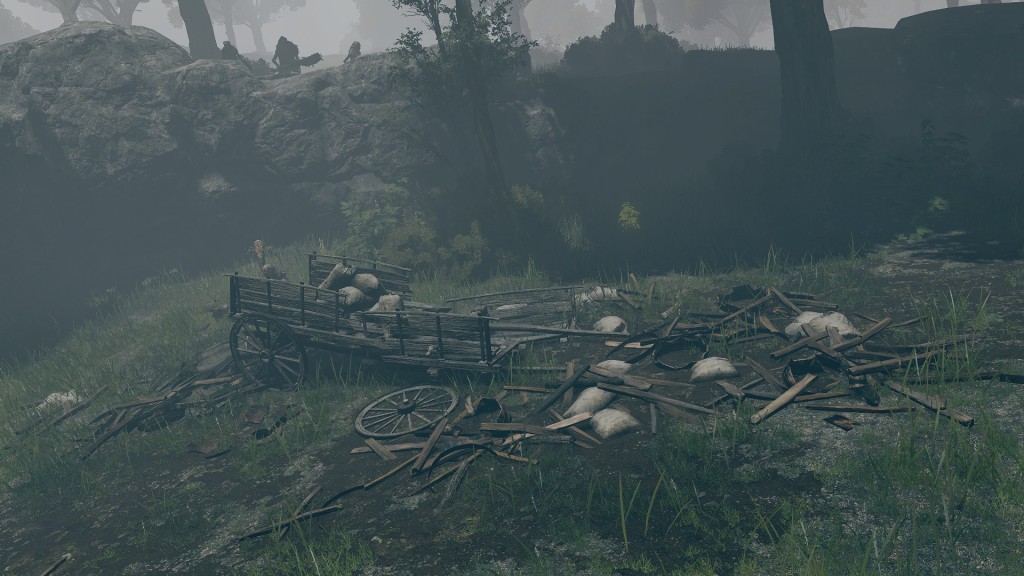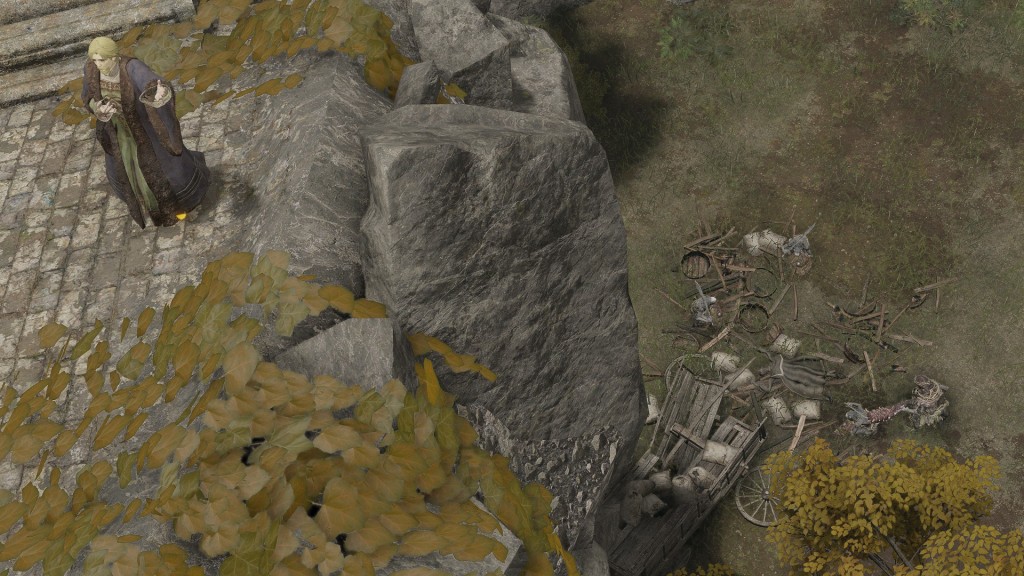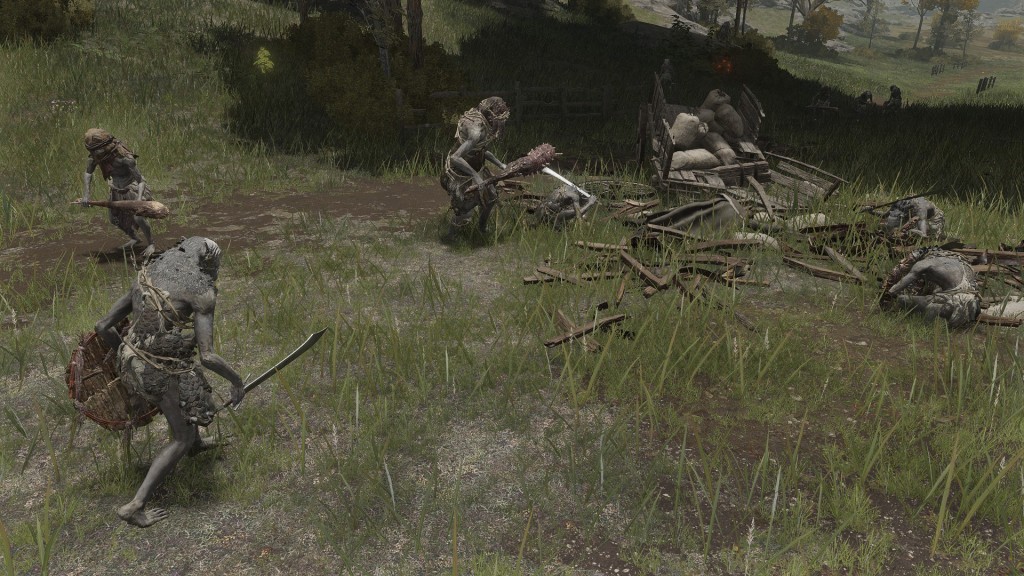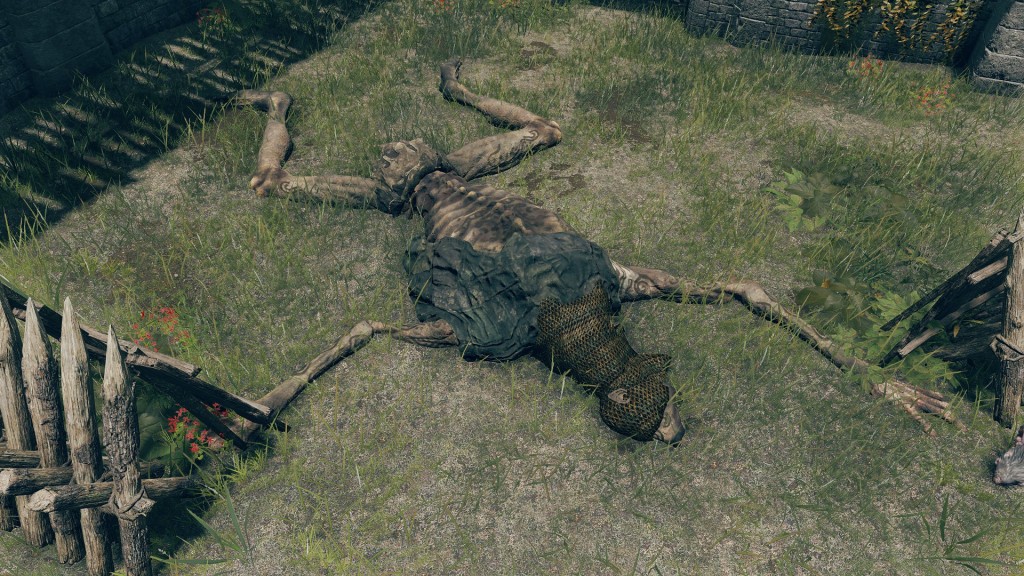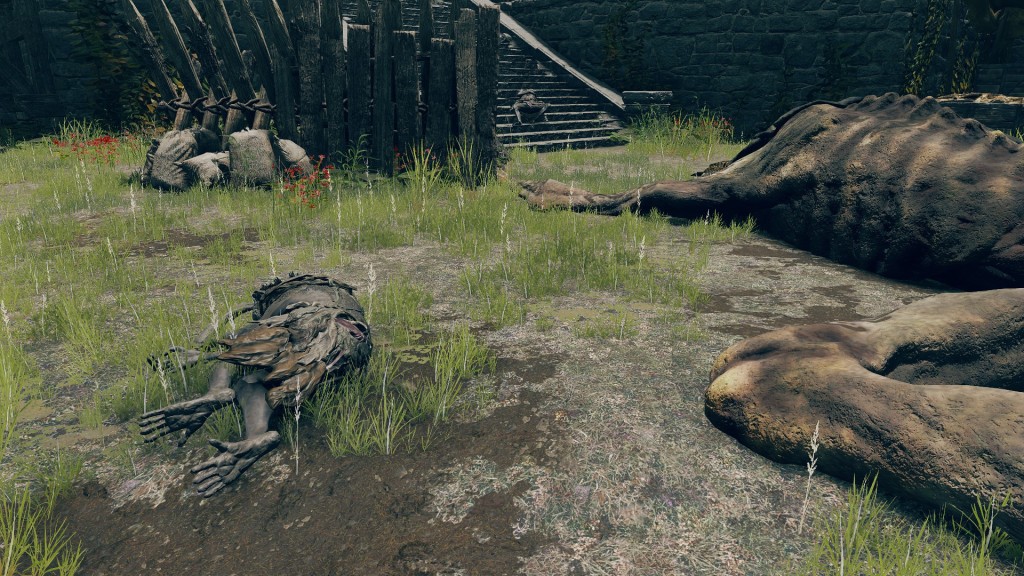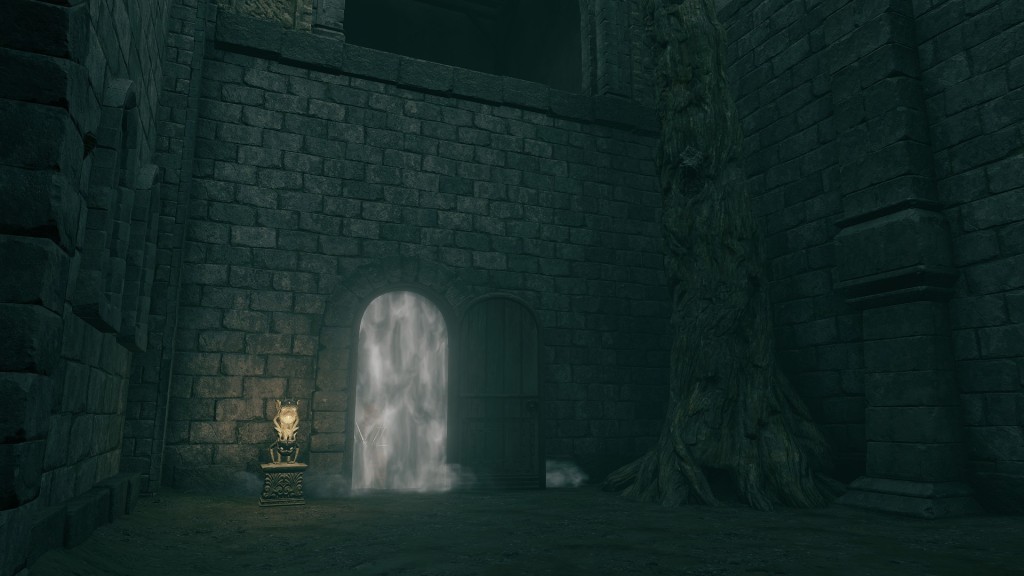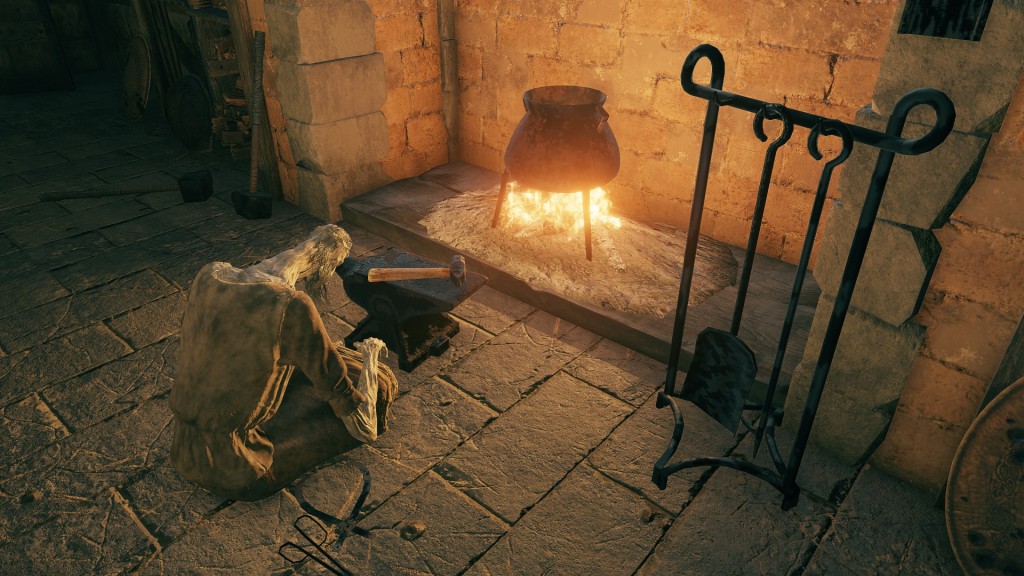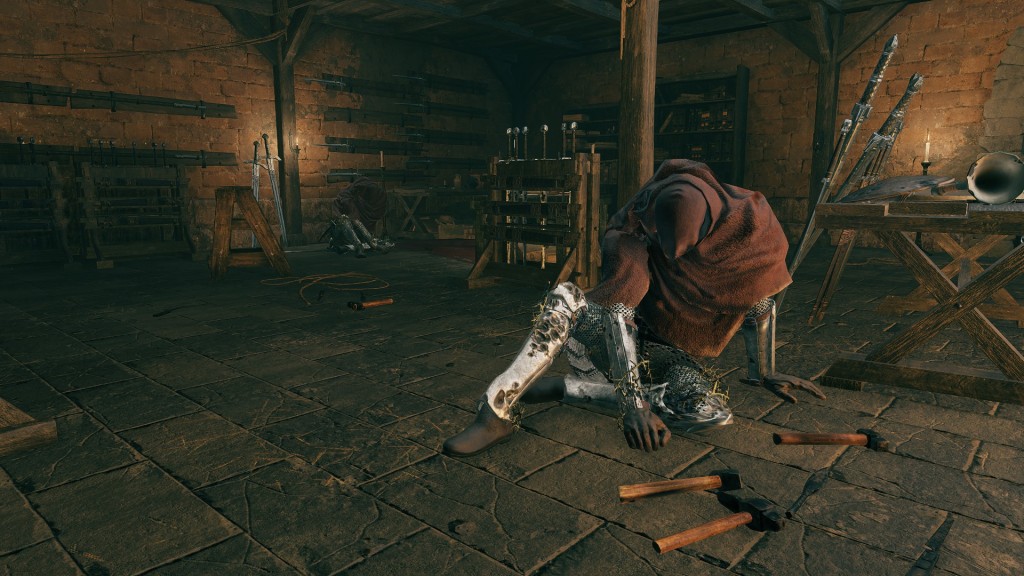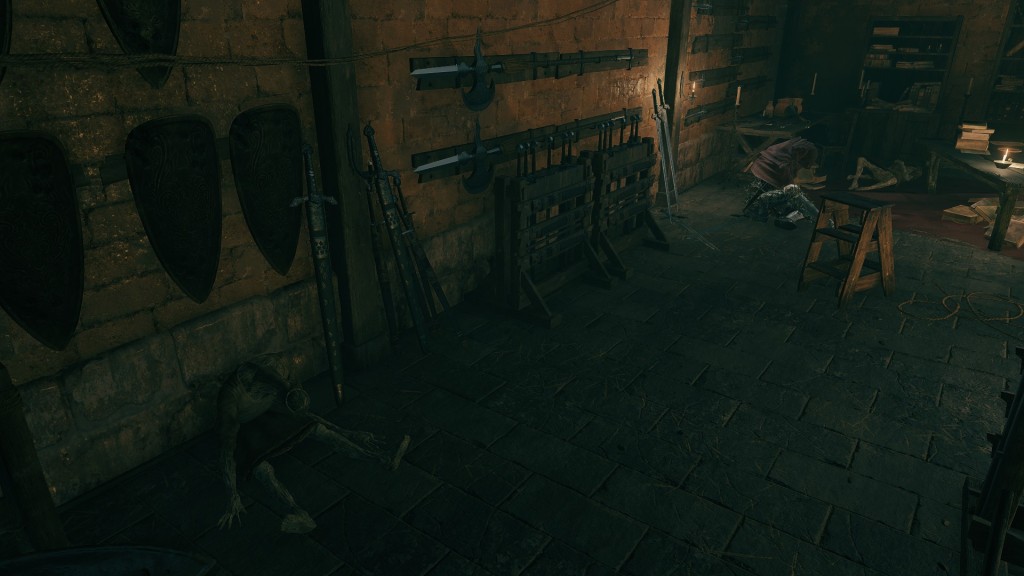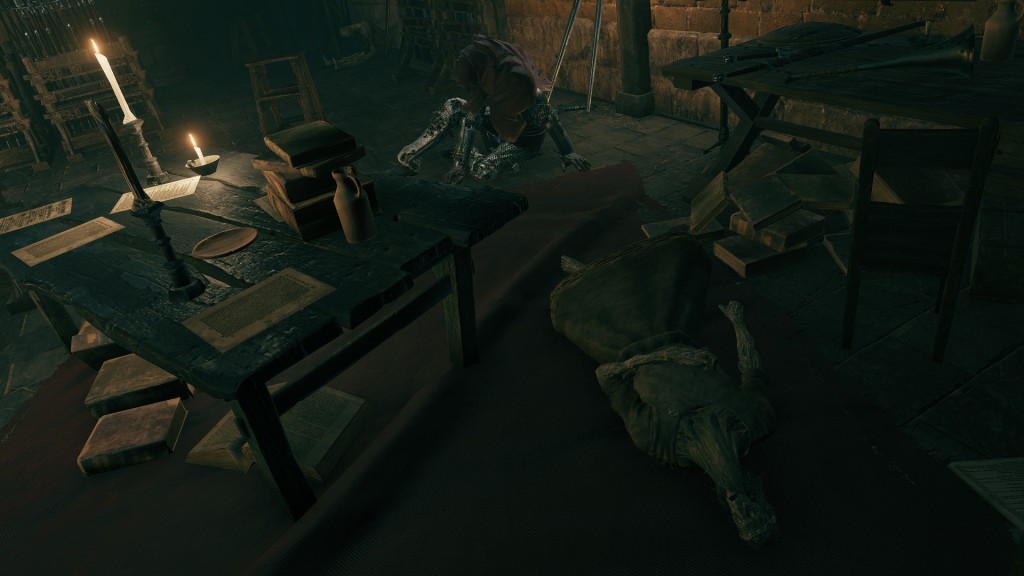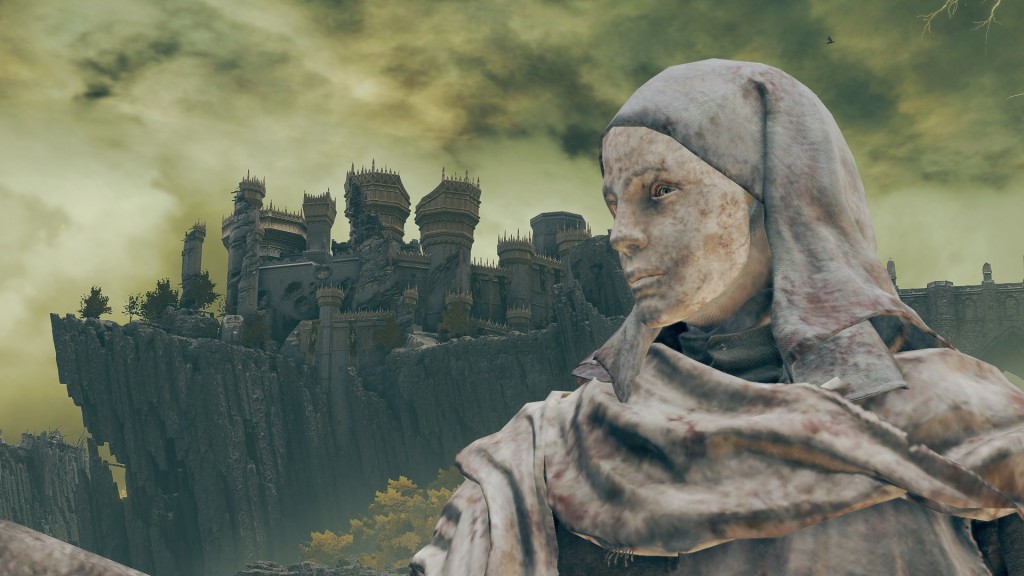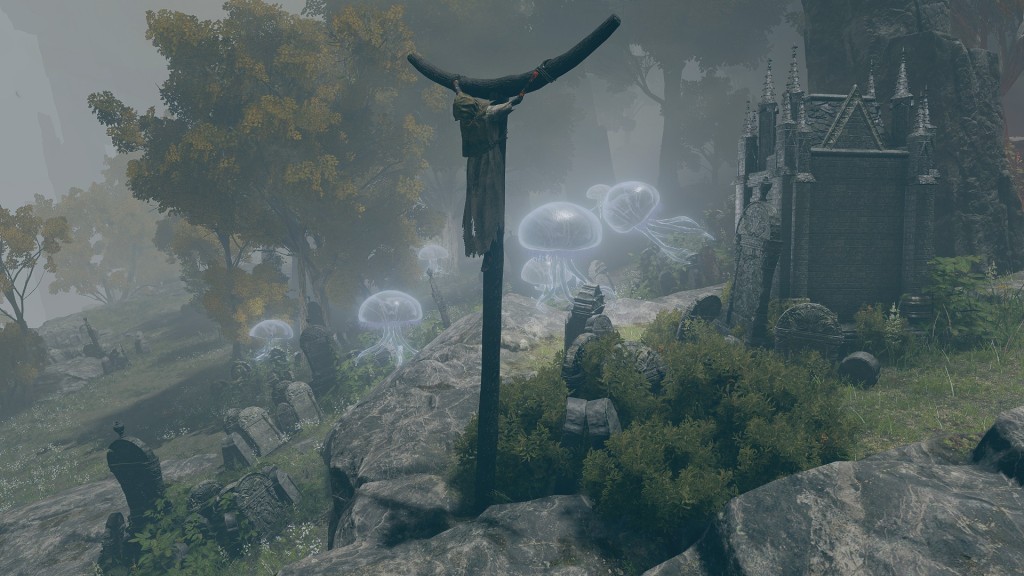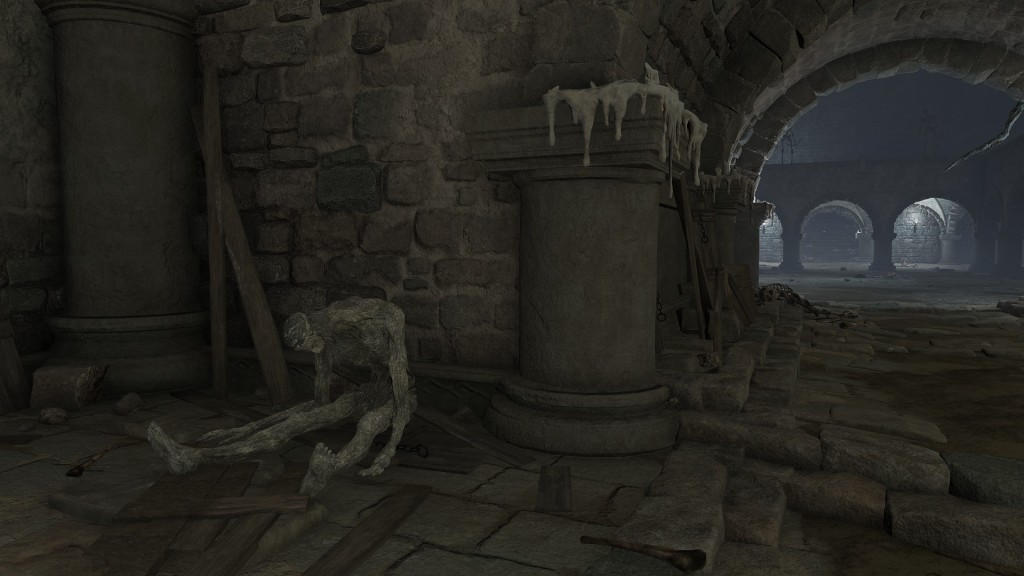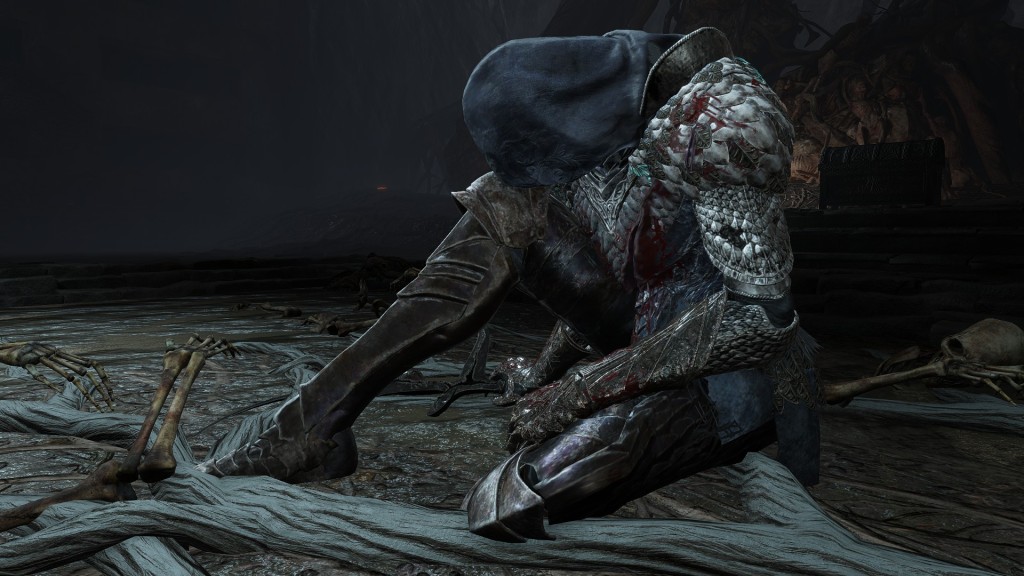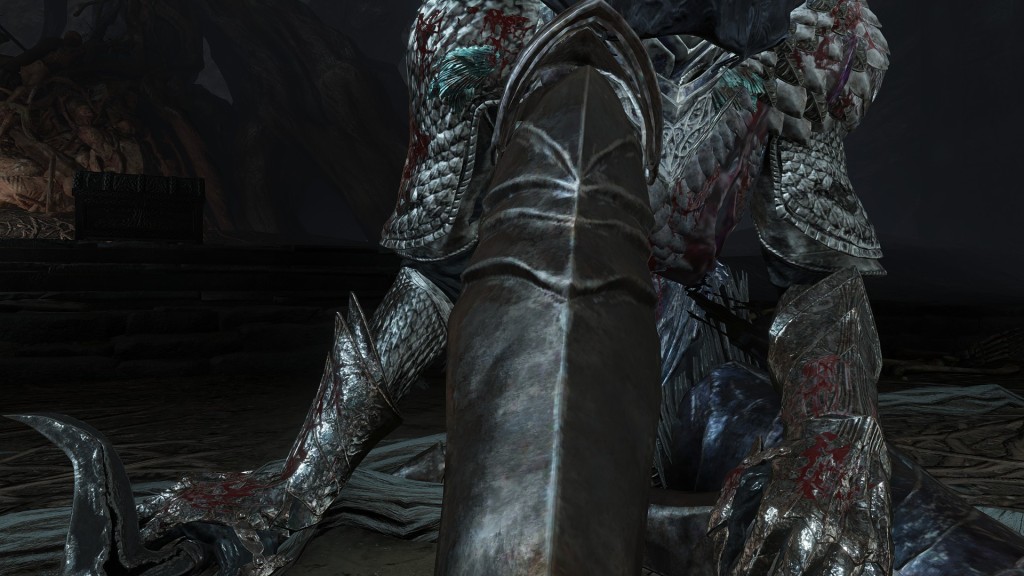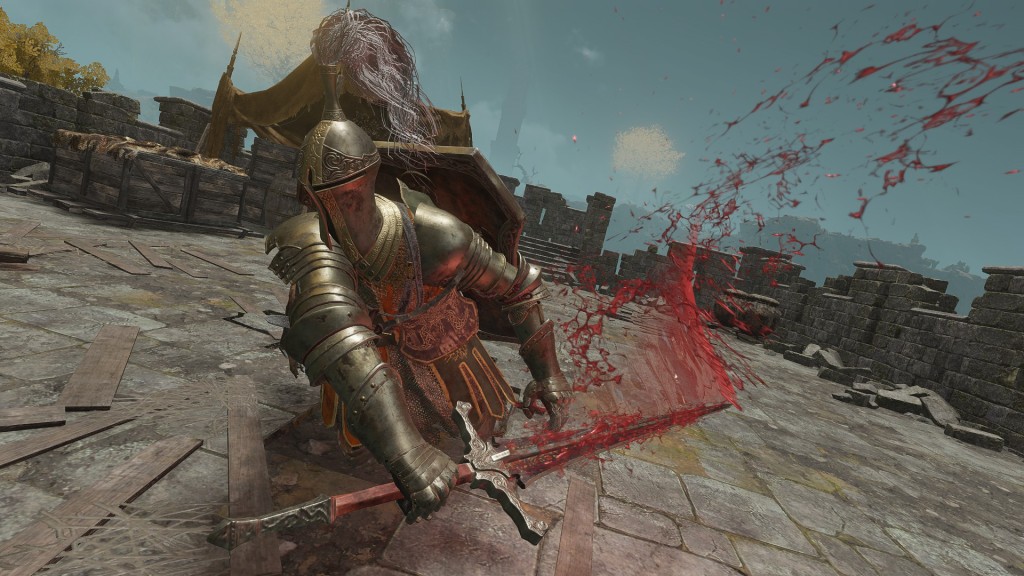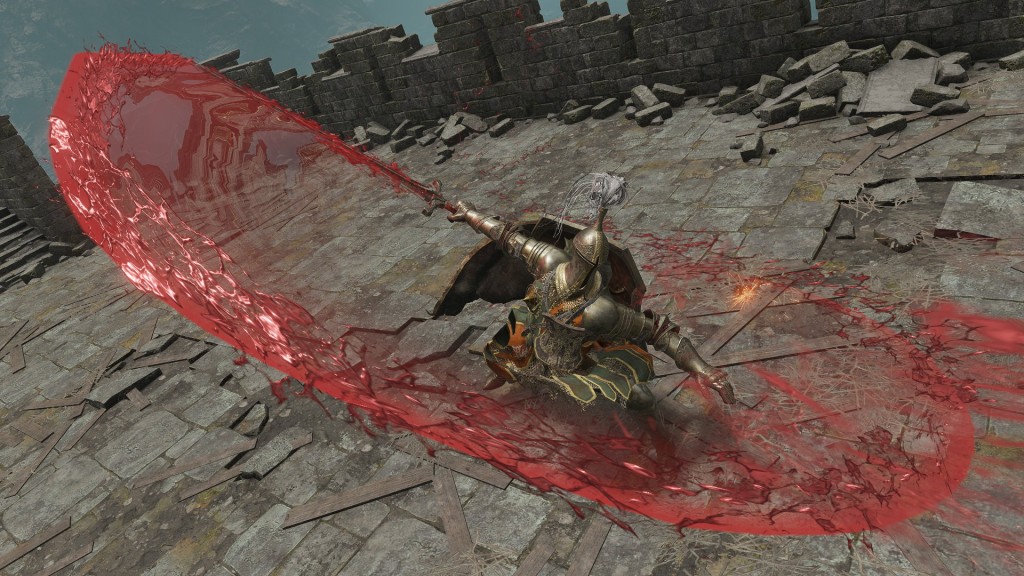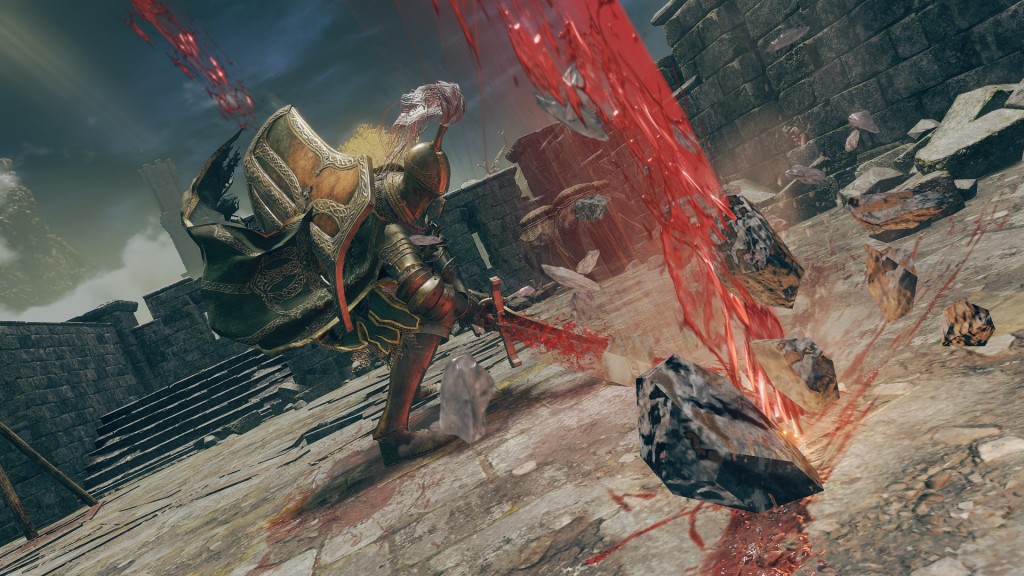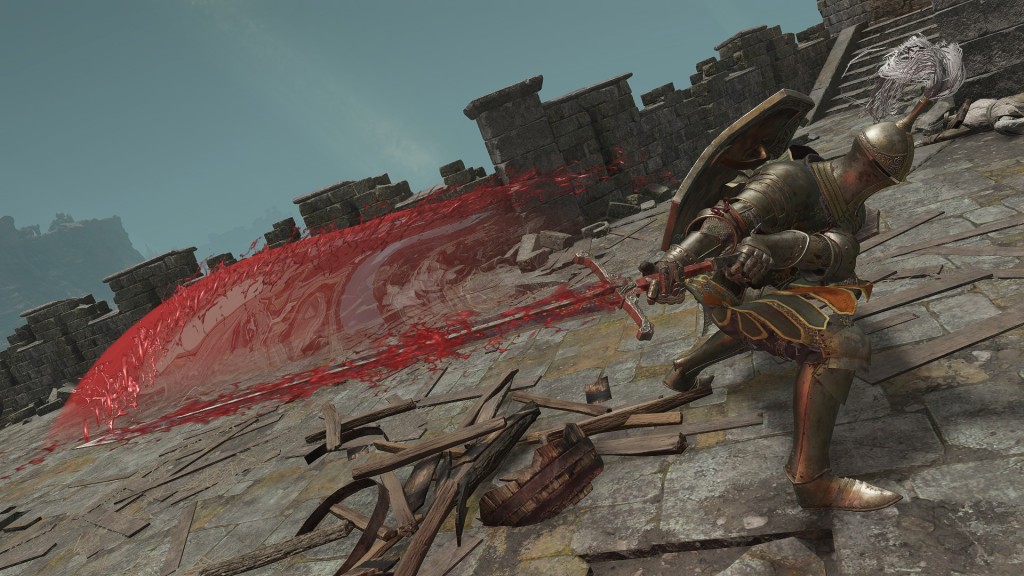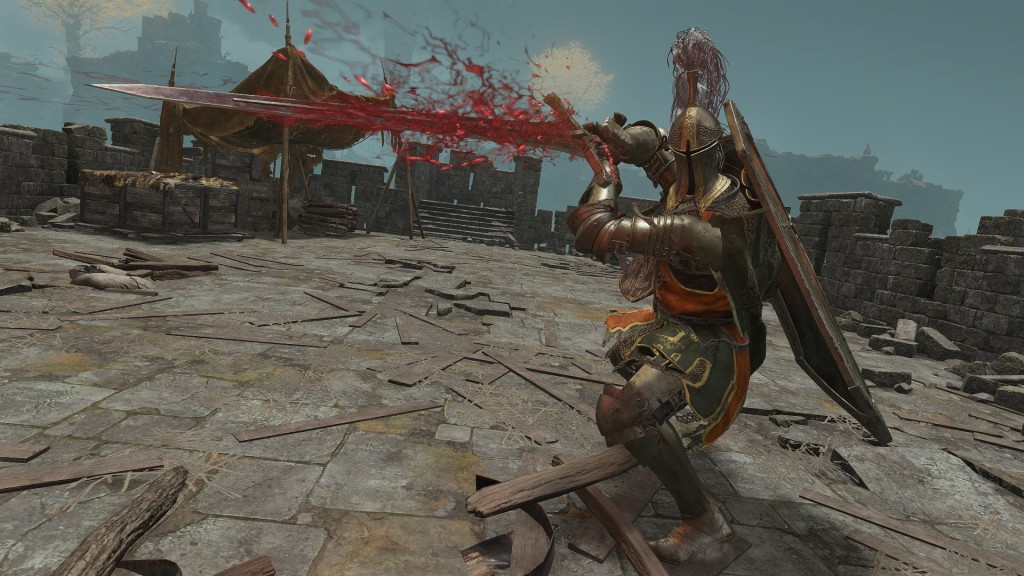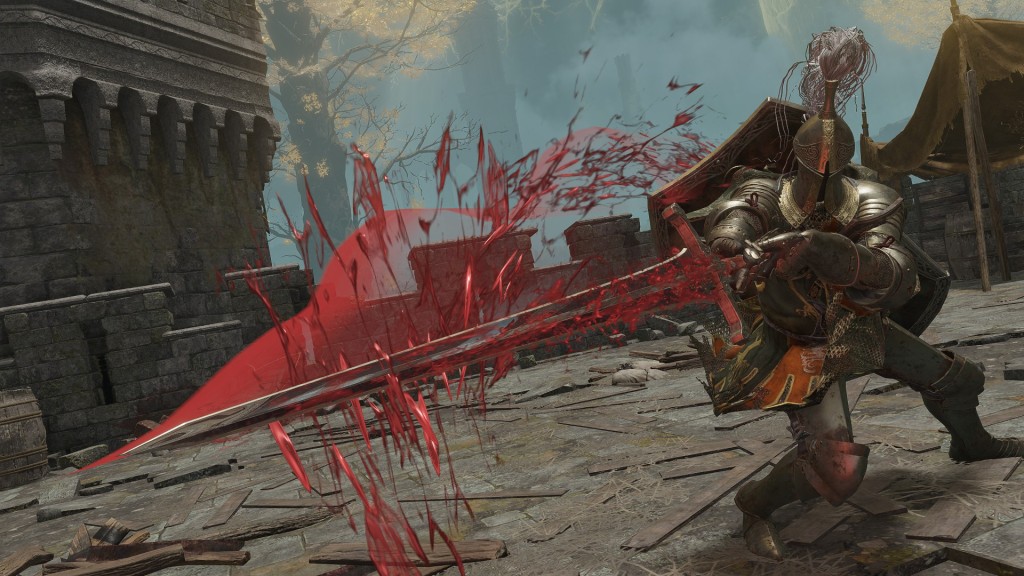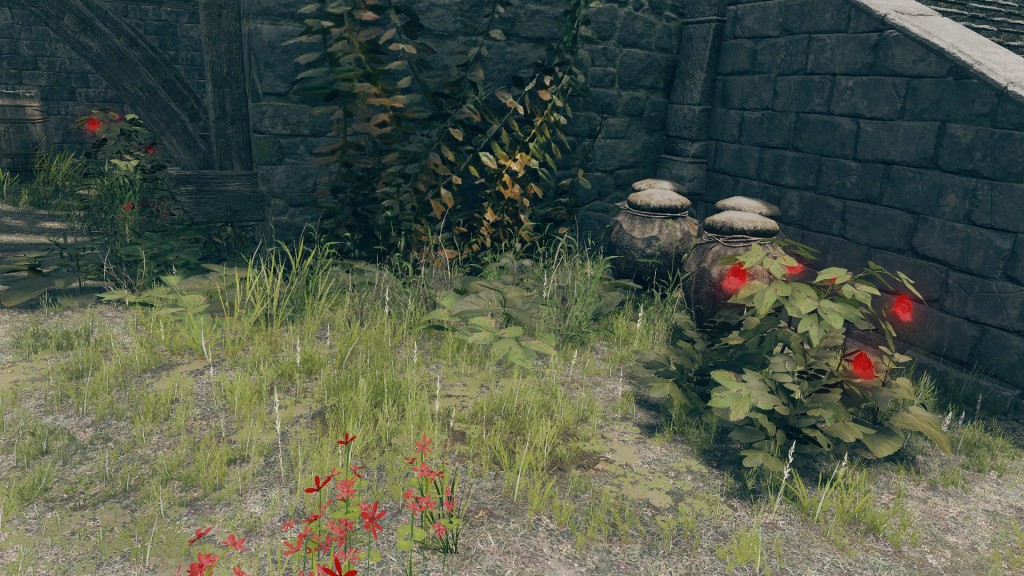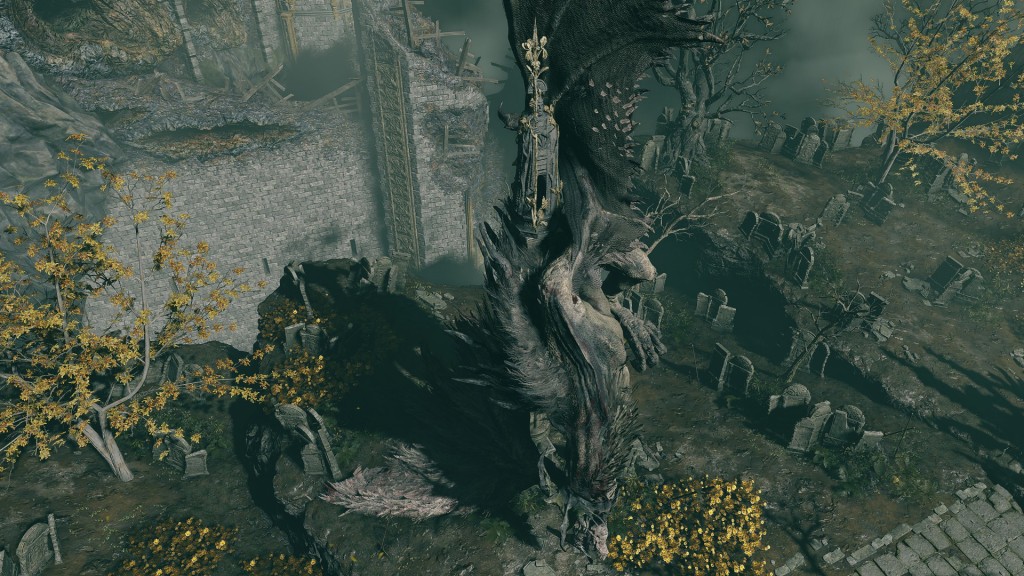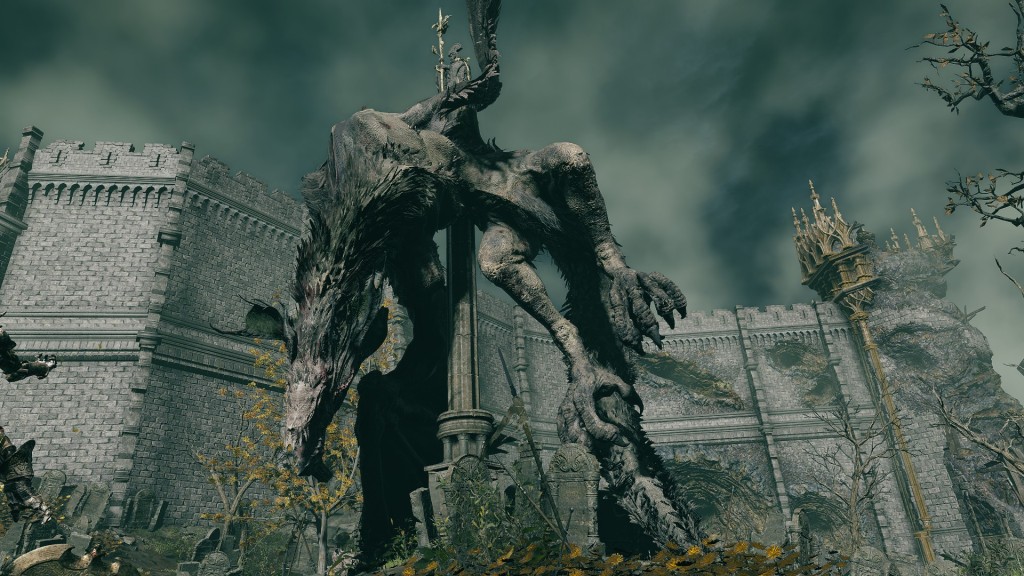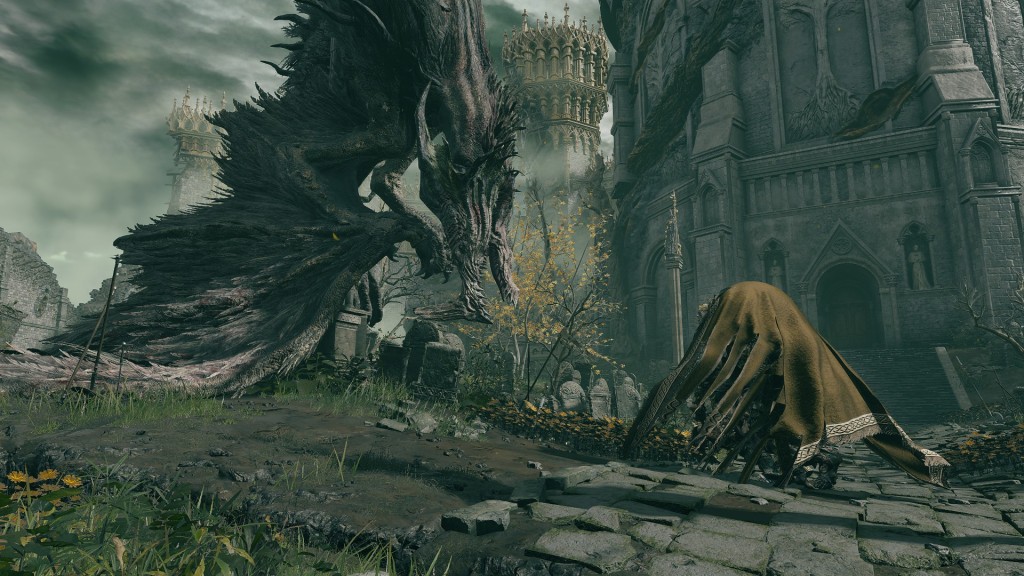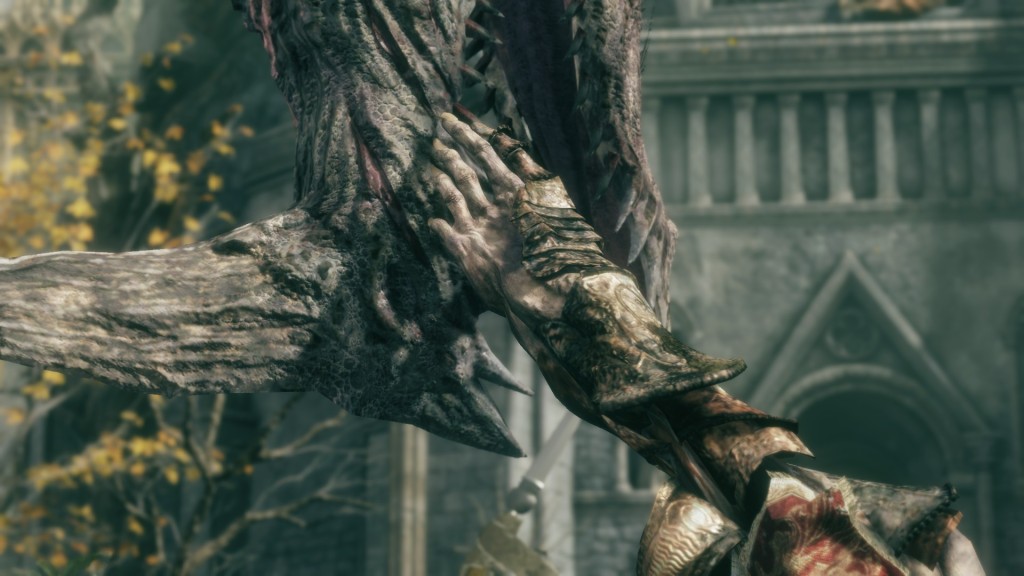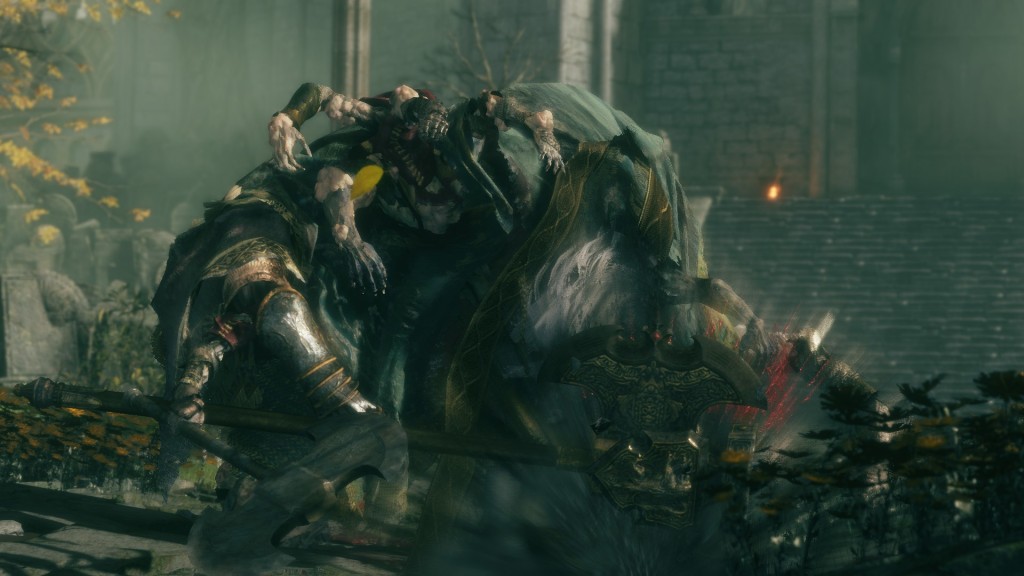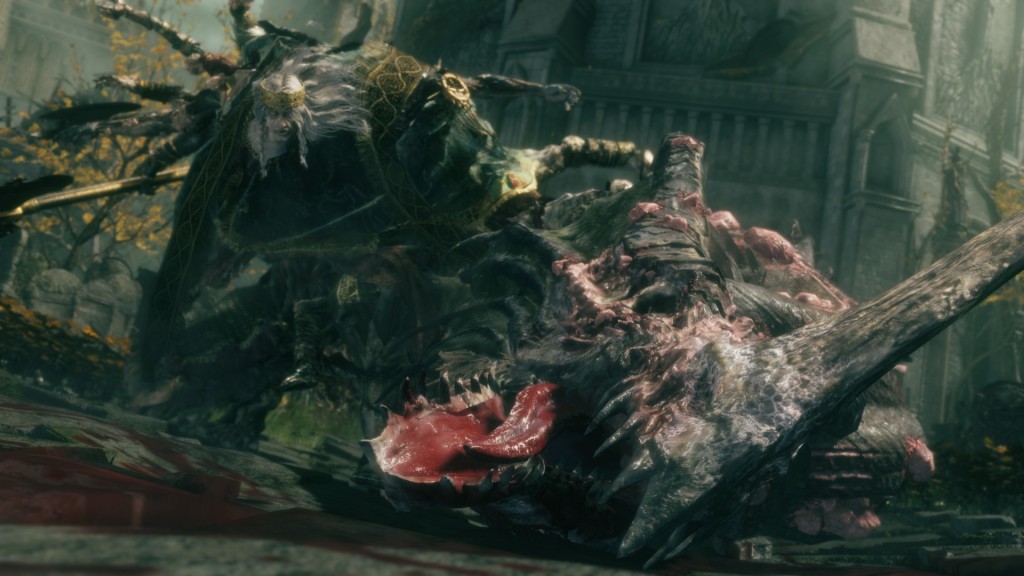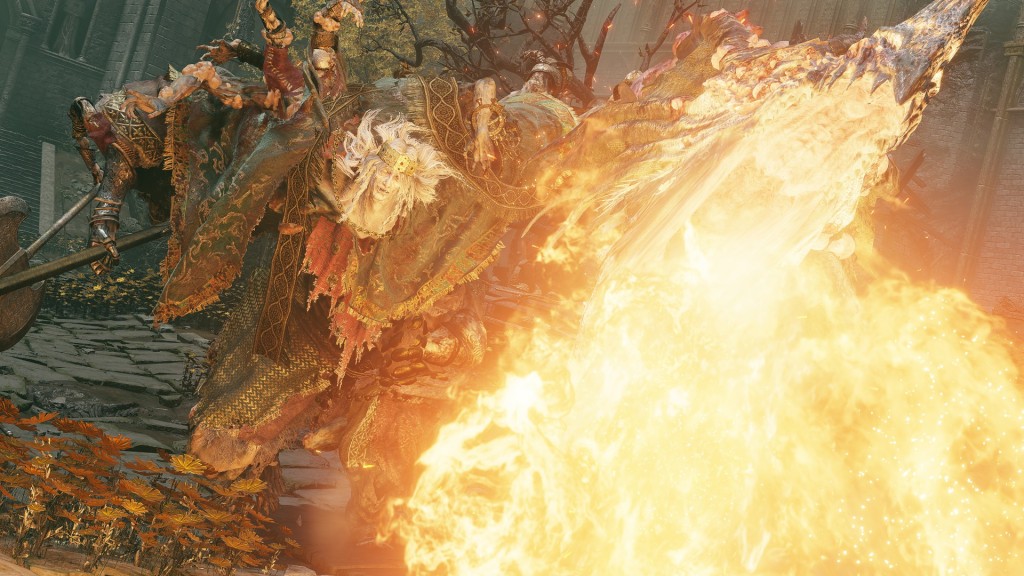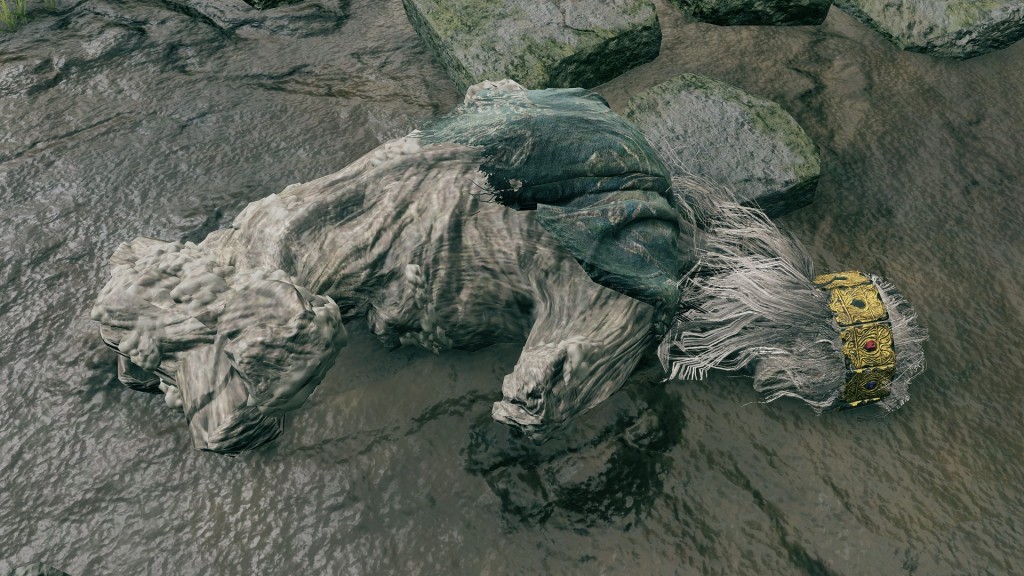Preface
Of all the demigods, Godrick is easily my favorite. Although I hold no particular love for incompetent villains, the Grafted oozes so much personality worthy of his most memorable design. It is a certain awfulness that I don’t think I will ever tire of. You almost want to cheer for this underdog, single-mindedly fighting against a hopeless fate. But what really seals the deal for me is his surprisingly large role in the narrative. Godrick’s story ties together so many elements of Elden Ring, yet you would be forgiven for forgetting about him after leaving Limgrave. But it is that silent legacy which makes this boss one of the game’s standout characters.
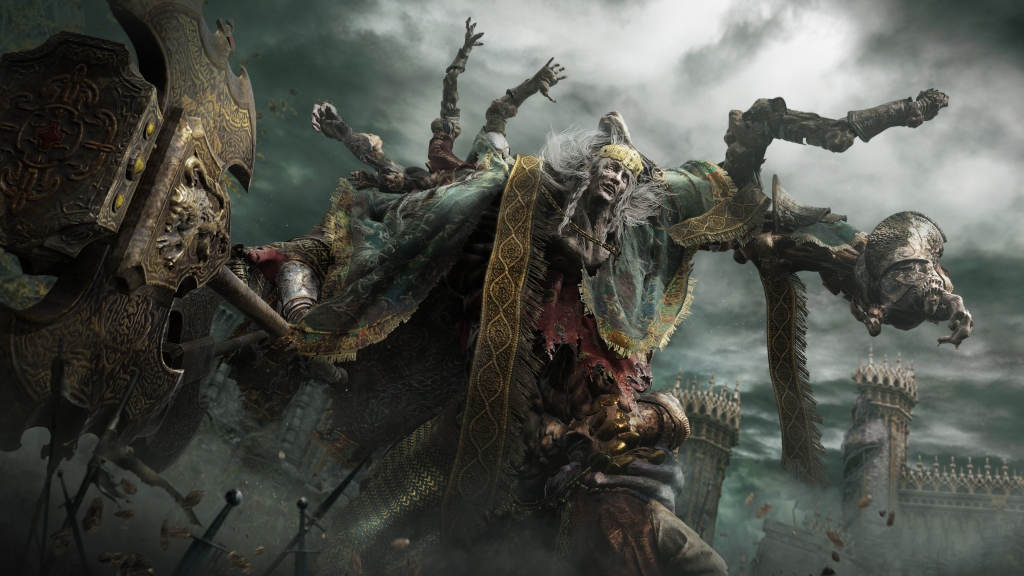
Tragedy in the Making
It is impossible to discuss Godrick without first looking at Godefroy. The identical man’s imprisonment in the Golden Lineage Evergaol confirms that he is clan, and the demigod was captured in the First Defense of Leyndell by Kristoff, whose Scandinavian name humorously means “bearing Christ” — the son of God in Christianity. Moreover, the sword monument for the First Defense cites the internal collapse of the “ruler” alliance, referencing the shard “rulers” once seated around the Elden Throne as highlighted by Morgott. If Godefroy was captured by a knight of Leyndell in the battle, then he must be the shardbearer collapsing the alliance. Indeed, the opening narration claims that the demigods who claimed Great Runes for themselves were Marika’s children, yet Godrick is the noted exception. But if Godefroy was previously part of the alliance, then his lookalike was more than likely his replacement. In short, the narration need no qualification. Godefroy was the original bearer of Godrick’s Great Rune, his name — the French form of Godfrey — perhaps the fanciest way of saying “Jr.” ever.
In the First Defense of Lowdayl, the ruler alliance collapses from within and results in a defeated army. There be traces of the bloody conspiracy.
Godrick’s doppelgänger may well be the first of the Goldens the king brought into this world. The reason to believe him Leyndell’s first prince specifically is his age. Godrick is repeatedly called an old man, with his wrinkly head of grey hair. Godefroy shares Godrick’s boss model, so the same applies to him. This stands in stark contrast to the other named golden clansman, Godwyn, with his youthful, robust physique and golden head of hair. Therefore, the son of Marika must be younger than both Godefroy and Godrick, even though the latter is mere distant kin to Godfrey. Considering the apparent resemblance, Godrick is most likely a descendant of Godefroy’s bloodline in particular, a grandnephew or some such relation. The clan was thus already stretching multiple generations when Godwyn, a hero of the Ancient Dragon War, was born. Godefroy would need to be exceptionally old among Marika’s children for his bloodline to span multiple generations, possibly her very first.
If so, then there are questions concerning his birth. Godrick, and by extension, Godefroy, is a feeble man relying on grafting others’ limbs to himself for power, his true body haggard and unhealthily pale. Perhaps such a development is inevitable for one of his many descendants, but why would any child of Marika and Godfrey be born so weak and sickly? Godefroy’s line certainly wasn’t denied the same vitality of gold as their subsequent children; both he and Godrick possess the same resistance to holiness as other demigods, including the first Elden Lord. Rather, they fail to inherit the robustness of the forefather. And yet, Enia claims that Godrick’s “god” blood is weak. Perhaps when Godefroy was born was a contributing factor. If conceived while Marika was still Empyrean, he might not receive more than the minimum holiness for a demigod, leaving him and his forebears no guarantee of anything but that holy resistance. In that case, Godefroy’s frail form isn’t beyond the pale even for Godfrey’s firstborn.
The timing might even explain his ultimate embrace of grafting. Godefroy possesses the epithet of the Grafted for the numerous limbs attached to himself. The peculiar art takes the severed arm or leg of a fresh corpse and reattaches it to the flesh of the grafter. By sticking the two together, the living flesh seems to latch onto the dead and begin integrating it into the main body. New flesh rapidly grows to fill in the gaps, and life energy begins to flow into the limb with the blood. In the end, the grafted part acts as a perfectly new limb, whether adding another or replacing one, with all of its associated powers. This means that Godefroy could replace large parts of his ailing body to make up for his shortcomings. But when did this begin? Grafting traditionally relates to horticulture, with the Japanese terminology more literally meaning “tree adjoining”. (接ぎ木) For sure, in cut dialogue, Godrick analogizes himself as a tree trunk, with the arms to be grafted on as his branches. And with the practice not seen outside of Godefroy and his descendant, it is liable to stem from Erdtree culture.
Perhaps Marika was the one to first push for her feeble child to have new limbs grafted, wanting to empower him in the same way that the golden tree empowered her. With her personal involvement in the construction of graveyards, she had plenty of opportunity to search for fresh limbs to graft. This would also explain her cooperation with her husband’s peace agreement with Commander Niall. Castle Sol was offering a powerful leg in pristine condition in exchange for their lives and respect for the dead. As we can see during our boss battle, Godefroy has grafted the limbs of Banished Knights, which he uses to perform their same storm skills. Even Marika could bite back her prejudice against the giants if it was for her firstborn. Godfrey likewise wouldn’t want the first of his Golden Lineage to be such a weakling, so the warrior king had just as much incentive to accept that rare opportunity. Put another way, Godefroy’s entire existence from the beginning was defined by the gap between himself and his namesake.
One can only imagine the burden this placed on the child, who would persist with grafting well into adulthood. How else was the young prince expected to react when he received tutelage from a Finger Reader? His childhood was a constant reminder that he was unworthy of being called the Golden in spite of his position in the family. He bore the name of the great king and the clan’s founding father Godfrey, a father he idolized. The Grafted performs a skill akin to the Earthshaker of the Elden Lord’s past, likely recreated to emulate his father. Similarly, defeating Godefroy rewards us with the Godfrey Icon. But looking at that talisman would only highlight the gap between the two. The feeble demigod was never going to be his mighty patriarch. Perhaps he heeded the message of the talisman to hold back and wait to achieve maximum strength. But the old man’s lifetime shows that he was always waiting to no avail.
Growing up with pride in his heritage yet shame for failing to live up to it, the young Godefroy probably felt pressure to meet everyone’s expectations for a position that was already rightfully his. It wouldn’t be surprising if this stirred bitterness within him, especially as he saw himself “replaced” by new child after child; all far more impressive than he. Indeed, it was not Godefroy who distinguished himself among the demigods in the Ancient Dragon War, but Godwyn, his opposite in almost every way. The eldest simply survived, assuming that he ever took to the field. What could be more humiliating for the Golden than to be outshone by his younger brother? It was enough to twist the man with jealousy, loathing, and resentment. And so, he had to keep pace as the Grafted, no matter how grotesque his form became.
The fact that Godefroy has grafted numerous limbs of Banished Knights affirms his continued interaction with them. Most likely, this was because he lived alongside the pagan warriors. Kenneth does make a point that Godrick is an outsider unworthy of his place at Stormveil. That being so, how come he was able to take residence in the castle and become king over Limgrave? Because the former alliance member had inherited it from his predecessor. With Godfrey’s departure from the Lands Between, Stormveil Castle was in need of a new steward. And who better than the eldest of his clan? Godefroy was the natural pick to take control of the Elden Lord’s last residence of note, especially now that Radagon had risen to the throne and needed to organize the newly conquered territories. As king of Limgrave, the Grafted could take the limbs of vassals as he pleased, including the Banished Knights.
I am Kenneth Haight. The feudal lord’s heir, rightful ruler of Limgrave. The likes of Godrick is an outsider who doesn’t deserve the name of ruler to begin with.
And yet, Godefroy was probably not too happy with this arrangement. Even assuming Marika and Radagon’s best intentions, they were still consigning the old man to the distant frontier — to be governor of the boonies. It is to be expected that he felt snubbed, kicked out of his home in the capital with a change in administration — much like his father. Rather than recognition of his importance as a clansman, Godefroy likely saw his entire lineage being sidelined to make way for Golden Order Fundamentalism. Certainly, the description to the Ornamental Straight Sword speaks to the Golden Lineage’s downfall, so any demigod in Godefroy’s position might see their relevance slipping in the new era. They were suddenly expected to accept Radagon as their new father, his children with the enemy queen as their new siblings? The dubious circumstances alone would be enough to create tension among Godfrey’s descendants. In that scenario, Godefroy’s cruelty toward his own subjects can be viewed as the manifestation of a sour old man’s frustrations as he wasted away in the countryside.
Slender straight sword modeled on an old ceremonial weapon. The excellent swordfighter uses this with two blades.
For descendants of the Golden Clan sought power and relations in the old after their downfall.
Because of this, we see Godefroy and his successor Godrick come to lead a particular movement among Erdtree kingdom society. With the clan’s decline, many of the descendants began looking to the old for solidarity. The prime example is the Ornamental Straight Sword, a recreation of the old ceremonial blade down to its Crucible skill. The gaudy golden design was the perfect showcase of the Erdtree kingdom’s power and splendor when receiving diplomatic delegations from other countries. However, some of the Golden Lineage would make it a real weapon, adding some bite to the reminder of holy supremacy in Godfrey’s day. The same can be said for the Golden Beast Crest Shield emblazoned with the crest of Serosh and thereby Godfrey and his lineage by extension. The Beast Crest and Gilded Iron Shields also reflects a similar principle, the latter’s peeling gold coating still retaining simple holiness. Then there is the Gilded Greatshield whose gold coating is tinged reddish in nostalgia for the Crucible.
Metal greatshield applied with a gold coating. Choice weapon of knights serving Godrick.
That coating emulates the origin of the Golden Tree and is tinged reddish. It is the color of nostalgia.
All of these armaments we find in association with Godefroy and Godrick’s armies, both seizing on the sentiment they shared. The Axe of Godrick, evidently first wielded by his ancestor, evokes the Axe of Godfrey except forged in gold and engraved with the Elden Lord’s beast symbol. Both men also feature the beast crest on their cloaks. Their soldiers’ surcoat heraldry splits half-and-half, juxtaposing the Erdtree with the chancellor beast. Their knights additionally display that doubled-headed war axe on their breastplate, cloak, shield, horses, and banners. Everything in this movement revolved around the glory days of the Golden Lineage, emphasizing style over substance — much like its champions. But for a clan in decline, it caught on. Those who ornamented their helms with the grey hair representative of their withered lord had boasted about their power once upon a time. There was plenty of untapped potential with those nostalgic for better days under Godfrey.
With later generations only able to appeal to royal ancestry rather than status, a renewed focus on that ancestry was their best hope for success in this modern era. This is why we see the number of nobles in Godrick’s territory surpassed only by those still living the motherland, with no other faction in the Shattering coming close. Huge swathes of aristocrats, young and old, flock to this appeal to tradition, wishing Godfrey’s clan to return to its pedestal. Even if not all bore some relation to Godfrey, they surely remember the triumphs their ancestors achieved as knights and courtly officials to earn them their nobility. Should the work of the founding to their great nation not be celebrated? It is only proper that the Golden Lineage rule, with all of its historical supporters properly rewarded for their fealty. These supporters include a large number of trolls, the most of any faction in the Shattering. Giants don’t tangibly benefit from traditionalist policies, so they are probably just sentimental for Golden Lineage days under the Crucible, preferring to see their old masters in charge.
Of course, much like with Godefroy, this hope to reclaim their position of prominence before Fundamentalism took root in the capital was due, in large part, to personal inadequacies. The grafted scions are the definition of a “young nobleman” (貴公子) with their youthful features and princely headband, yet still they have resorted to the Grafted’s depraved art for power. To project dignity, they have grafted the parts from not just humans and trolls but even colorful birds. Add the feathers on their cloaks evocative of peacocks, and it becomes obvious that these twisted aristocrats wish to still be seen as majestic, hence their ostentatious wielding of the Ornamental Straight Sword and Golden Beast Crest Shield. But in the end, a peacock is all flash, no threat. For all their efforts to appear intimidating, the noble scions encountered mainly in and around Limgrave are the worst the Golden Lineage has to offer. The traditionalists were, essentially, pathetic has-beens clinging to past glories, often not their own. They were as much a sorry excuse as their eventual leader, Godefroy.
But while this new social movement was gaining momentum in the background of courtly politics, there was no opportunity for it to take root as a serious political force. Radagon’s reign was strong and brought stability to Marika’s empire. There is little room for effective criticism in an age of peace and prosperity, thus that burgeoning desire for a return to tradition remained untapped potential. And now far from the courtly life, Godefroy simply stewed in mediocrity, venting his insecurities lashing out at slave and vassal alike. There was no for future for him, in family or politics, no matter how much he graft. Until there was some major shakeup, his house’s prestige would continue to dwindle, and the head would always be upstaged by the likes of Godwyn. It must have been infuriating for the bitter old man. Then, in his hour of need, came a surprising offer, as well as that upheaval he had so been longing for.
Pride to Fall
The First Defense of Leyndell monument ends with noting traces of a “bloody conspiracy” which Godefroy was evidently a part of. There is only one other “conspiracy” in the Japanese script, the Night of the Black Knives “conspiracy”. (陰謀) In other words, it wasn’t just Ranni and Rykard, but also Godefroy who plotted against their fellow demigods. This makes sense given the locations of the assassinations. The only lands with demigods in Between where the Black Knives didn’t strike are Caelid, Gelmir, and Limgrave — all residences of proposed conspirators. To outsiders, the targets might look to have been chosen at random. But with knowledge of the parties responsible, it is obvious that the assassins deliberately avoided areas which might bring inquiries to the actual plotters; you don’t investigate where there isn’t a crime scene. The only exception is Ranni, who was herself a “victim” of the mysterious killers and so already ruled out as a suspect. Accordingly, the lord of Stormveil was undoubtedly brought into the conspiracy.
Whether or not the grafted Golden knew the identities of his fellow conspirators, there was ample reason to extend him a shadowy hand. On the one hand, it would behoove the plotters to have someone with lifelong experience with the heartland, especially the royal capital; especially the royal housing. If they were to plan a successful assassination at the heart of Marika’s kingdom, Godefroy’s knowledge in that regard would be invaluable. Conversely, Godefroy was promised a chance to finally channel all that envy toward his siblings he had been quietly building up, Godwyn in particular. In one night, he could be rid of a bunch of nuisances and make way for his ascendance in the family — Mother couldn’t keep ignoring him forever when all her other favorites were good and gone. This is the exact social and political shakeup he needed to maneuver himself into the limelight. In short, both sides had much to gain by joining hands for this one wintry night.
And things were going smoothly. The assassins slew their targets, and the kingdom was in chaos as planned. The death of his kin gave poor surviving Godefroy reason to return to the royal capital for mourning. There, he had his chance to rally support, tapping into that bubbling resentment among the nobility. They may well have been on the cusp of something. But then the unexpected happened: Marika shattered the Elden Ring. Like other demigods, the Golden seized his opportunity to claim a Great Rune; naturally, the lineage-obsessed firstborn latched onto the central rune from which all the others stemmed. With its power within his grasp, old Godefroy saw his prospects shoot up higher than ever. No longer was it a matter of becoming the god queen’s favorite son — he could become her nominal consort. No longer did he have to settle for that pale imitation back in Stormveil — he could sit on the genuine Elden Throne! All the demigods may have been warped by the power shards of the Ring brought, but the Grafted was perhaps the most twisted. Hence, he became the start of the madness.
Things, of course, took another unexpected turn when Morgott interceded to mediate between the different shardbearers. As ruler to a shard his own, Godefroy joined the new king’s alliance, if only as a formality. Being the only member of the Golden Lineage on this council, he obviously saw himself as the one viable pick. There was no point in considering his mother’s stepchildren or defective twins. Only Godfrey’s blood could lead. But the talks dragged on, nonetheless, with no foreseeable resolution. The Grafted’s frustrations were sure to mount once again. And based on the monument to his future assault on Leyndell, the conspiracy had begun pushing for the power-hungry lord to settle the matter by force. It wouldn’t take much prodding to make him break from the alliance. The demigod had gathered his supporters and could covertly raise an army from his territory back on the frontier. There was no need to continue playing along with an Omen stealing his rightful place as king. He would lead his troops and march on the capital, liberating the citizens of the false monarch and his farce of a council.
However, Godefroy’s assault on Leyndell went disastrously. The sword monument is erected on a cliff overlooking the Second Church of Marika, specifically its extensive cemetery. Few churchyards come close to matching this one in headstone count, most in the flower-top variety indicative of burying the faithful. And with the church itself not possessing a history to justify the death toll, it is more likely that these graves inter the victims of the First Defense. Indeed, for his capture of Godefroy, Kristoff was honored with an Erdtree Burial in the Sainted Hero’s Grave seated upon the cliff next to the church. This, combined with the monument’s location, suggests that the fighting for that battle mainly centered around that area, far and away from even the first rampart. After bringing his troops all the way up to the plateau, Godefroy didn’t even make it halfway down the highway before he was halted by Leyndell’s garrison. In the end, the shardbearer’s army was decimated with the old man himself captured by a simple knight, his grafting all for nothing. The spark which begat the Shattering was a humiliating first showing.
Some may have turned tail and ran to escape the bloodbath, leaving their lord to his fate. But Godefroy survived. Having committed brazen treason against the crown, the demigod prince had no hope for clemency. Morgott would interrogate him for what he was worth. The Grace King did learn that he had some involvement with the Black Knives conspiracy, but Godefroy refused to divulge any useful information, assuming he had any. As our boss fight with the man demonstrates, he isn’t interested in discussion. Perhaps he believed that his fellow conspirators would bail him out, having supported his ascendancy behind the scenes. Whatever the case, it was ultimately decided to seal him in an Evergaol, his Great Rune confiscated. Maybe the arrogant old fool believed that he had heeded the message of his father’s icon. But as should have become evident as he was being imprisoned, Godefroy ought to have waited longer.
Clearing the Stage
Although Godefroy was dealt with, Morgott’s troubles were hardly over. No man leads a rebellion alone, and the traces of the conspiracy demanded his full attention. There were undeniably still traitors whom might carry on the Grafted’s banner, part of a larger plot whose actors would continue to undermine the stability of the realm so long as the king of Leyndell failed to uncover them. The entire point of the alliance was to avoid a civil war, so the Grace-veiled Monarch needed to quickly purge the cracks in this tenuous peace. For that, he couldn’t simply sit back and allow court official to delegate the tasks. This situation required a personal touch. As a result, Morgott personally traveled to Stormveil Castle.
His influence can be felt in the Twin Wings of the Storm Lord. As knights with no land to call their own, they were subject to the whims of their Erdtree masters. But the descriptions of both’s spirit ashes detail interactions with the Grace King on the frontier, not Godefroy or Godrick. Moreover, Morgott is able to project his form as Margit at Stormveil, evidently having left his mark on another conscripted civilian stationed on the ramparts. Taken together, the king of Leyndell was present at Godefroy’s castle for a time, working with its resident garrison. This isn’t too surprising, given that many were inevitably only complicit with Godefroy so far as they were forced to answer to him as lord. Now that the head had been removed, the body was free to go in its own direction. In this case, the choice was either to stand down and cooperate with Leyndell’s investigation or be punished as another traitor. For pagans without a stake in the political situation, the answer was obvious.
Moreover, Morgott understood the incentives behind these former rebels’ aid in their master’s treachery. Engvall had apparently refused the Omen’s invitation, choosing instead to stay protecting the castle even without its Storm Lord. Invitation for what? This couldn’t be the offer to stand down since, rather than be executed, he continued protecting the kingless castle “for a long time” as hero to the frontier. Therefore, Morgott’s only offer could be to enter his service and thereby return with him to Altus. Such a prospect would be enticing to these Farum colonists in exile, even if the plateau did remain lost land. We can also confirm that there were takers. Despite seeing only Leyndell’s soldiers alive in the assault on Gelmir, it is Stormveil armaments strewn about their camps and stocking their siege towers, a surviving grafted scion still at the front lines. Cut content further reveals plans for the Farum warriors to be the ones safeguarding the royal capital; their armor is still in the city’s stores. Without a doubt, King Morgott allowed some of Godefroy’s faction to return home if they became his retainers.
Ashen remains harboring a spirit. Summons spirit of Engvall, Lost Land Knight.
One of the pair once known as the Twin Wings of the Storm King. Engvall, who became a Lost Land Knight, refused the Grace King’s invitation and continued to protect the kingless castle for a long time. And so, he became a hero of the frontier.
As part of that, they needed to do more than simply agree not to resist the Grace King’s recapture of the castle for Leyndell. Unlike Engvall, the Omen’s agents had to prove their loyalty by helping purge the unrepentant traitors. Oleg is the prime example, having hunted one hundred such betrayers after meeting Morgott. Although he apparently ended up buried before he could lay eye that golden vale once more, his burial at the Fringefolk Hero’s Grave shows how the Omen appreciated his services; contrast to Engvall, who ended up buried in the Murkwater Catacombs despite being no less a hero. Still, Oleg’s sacrifice enabled many more of his deprived kin the chance to return home, even if it would end with them dying a dog’s death in the demigods’ wars. Thus, the king of Leyndell successfully recruited an entire army to help him root out the last hangers-on in Godefroy’s faction. And once the last bit of resistance was purged, the time came to fill the void they left.
Ashen remains harboring a spirit. Summons spirit of Oleg, Lost Land Knight.
One of the pair once known as the Twin Wings of the Storm King. Oleg, who became a Lost Land Knight, was discovered by the Grace King, hunted a hundred traitors, and was given a Tree Return as a hero.
In the end, Morgott refused to claim Godefroy’s titles and properties for himself, leaving it in the hands of his house. Instead, he seems to have simply hand-picked the new head of that house, ultimately selecting Godrick to replace the Grafted as both lord of Limgrave and shardbearer on the alliance. His motivations are obvious. From the beginning, Morgott’s first concern had been keeping the peace. Godefroy’s rebellion forced his hand, but he couldn’t be away from the royal capital for too long, not with the other demigods all waiting to take power for themselves. Even if he wanted to just wipe out Godefroy’s house entirely, he had neither the time nor energy for such an initiative. In that case, his priority was separating the wheat from the chaff, granting clemency to those who refused to go down with the traitorous demigod. Add to that the sizable number of the aristocracy pushing for a Golden reformer to take the throne, and the king had to work out a compromise with the firstborn’s house.
Morgott’s choice, Godrick, was an excellent answer to the political situation, at least on the surface. As a citizen of Leyndell with no connection to Limgrave, the new bearer of a Great Rune had been far and removed from the machinations of Godefroy. This is especially true given his political irrelevance. As Varre acknowledges, Godrick is barely a demigod with his distant relation to Godfrey through tertiary relation to Godefroy. Despite his lofty Anglo-Saxon name meaning “god ruler”, he was at best a minor noble in Leyndell with little prospects for advancement. That is because Godrick was a feeble old man, like Godefroy, with an obsequious personality, ready to bow his head whenever convenient. He didn’t even yet supplement his weakness with grafting, since the old man was able to hide among women during his later flight of the royal capital — and Morgott knows him by his Golden epithet. At this point, Godrick was simply a nobody desperate to please.
Put simply, there is no way such a pathetic individual with seemingly no pride in his heritage had any connection to Godefroy or the conspiracy. Since Morgott had evidently made no significant progress in unmasking said conspiracy during his time at Stormveil, Godrick was the perfect person to trust with managing Limgrave in the Grace King’s absence. He gave Godefroy’s house a place on the alliance and the Golden Lineage a chance at returning to the Elden Throne — at the same time installing a seemingly harmless body he could easily keep in line. And if there were still traitors hiding on the frontier, he could reasonably expect the slimy demigod to side with his benefactor. No one had good reason to complain about this arrangement, least of all the person directly uplifted. And so, the shard of the Elden Ring was bestowed to Godrick, and he received his own seat beneath the Erdtree. The crack in the peace was filled, and business in the capital went on as usual.
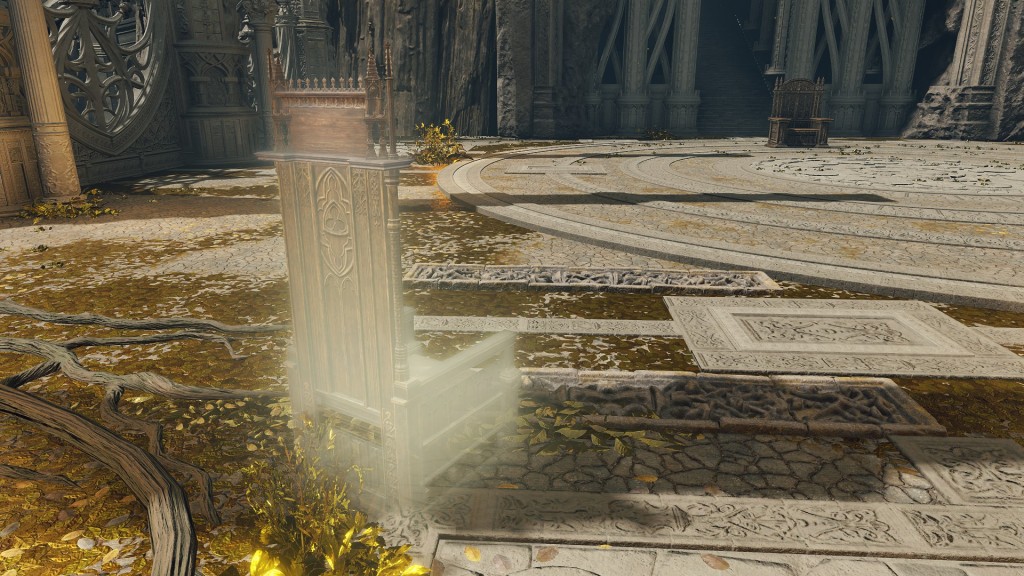
However, this is where Morgott’s life in the sewers shows the limits to his political savvy. He apparently didn’t consider Godrick’s background, at least so far as it paralleled Godefroy’s life story. As Gideon puts succinctly, the ugly old man seeks the strength he lacks as the first Elden Lord’s descendant. Godrick acted servile because it was necessary for him to survive as a powerless lordling in a robust aristocracy. He expresses no less veneration for Godfrey and was bound to suffer the same bitterness over how little the founding father’s blood is manifest in him. Without his ancestor’s grafting, the infirm ne’er-do-well was basically forced to rely on conniving rather than brute force. But Godrick still possesses Godefroy’s inflated sense of self-worth as one of the Golden and ideological bent toward the traditionalists. And the king suddenly thrust that person with relatively nothing into a position of incredible power and influence. If the Great Rune was corrupting for Godefroy, it must have been all-consuming for Godrick. He finally tasted power, and he had no intention of being an Omen’s puppet.
Indeed, how the old man must have loathed bowing his head to the likes of Morgott. When explaining why he has more right to rule upon Altus in cut dialogue, Godrick specifically singles out Morgott’s abandoned Omen status. In the Golden’s world, Omen were slaves, not kings. The entire truth behind the Grace-veiled Monarch was absurd, horrifying, even. But to advance his prospects, he placed himself in Godefroy’s same position. There he was, the one proper descendant of Godfrey on this council. Yet leading their hollow alliance was the cursed monster thrown away by the forefather. Having to keep his silence on this utter disgrace to the kingdom must have been absolutely infuriating. But the wily old man knew how to bide his time. He could reveal the citizens their so-called king’s true face later, when he paraded the Omen’s head on a spike following his glorious ascension.
Different From the Last
As the new lord of Stormveil and frequent visitor to Leyndell, Godrick the Golden soon began rebuilding his predecessor’s army. There were evidently still those not wholly loyal to Morgott and willing to fight for the rival demigod with enough convincing. Like before, he probably made many of the same promises — the clansmen would reclaim relevance, the nobles would return to status, the penal colonists would regain land lost. And after enough discreet diplomacy, he managed to cobble together a fighting force on the frontier, shielded from Morgott’s sight. Even without the aid of grafting, Godrick was apparently confident that he could succeed where Godefroy had failed. Perhaps the unassuming old man had been that certain of his wiliness. His strategy certainly proved to be crafty. This time, a surprise attack from within the alliance would go all the way to the front gates of the Erdtree capital.
The site of the Second Defense of Leyndell is littered with Stormveil equipment, weapons strewn about and Banished Knight armor half-buried in the dirt; tattered banners fluttering the hawk crest. The story trailer features soldiers of Godrick marching down their same path, though the cinematic erroneously flips the dual crests on their surcoat. The nomadic merchant in the shack overlooking the battlefield sells the Distinguished Greatshield. According to the description, this gaudy shield is used by sons of distinguished families who are nonetheless derided as cowards for hiding behind something so ridiculously large — in other words, someone of style over substance, the kind who choose to serve Godrick. Opposite end of the battlefield lies a camp with a coffin carriage. Although we see a few of Leyndell’s rank-and-file using the campsite, they look to simply be finishing the post-battle cleanup of its previous occupants. The carriage keeps Giant-Crusher, whose description implies that the legendary weapon of yore’s latest wielder of the modern war failed to live up to the forefathers — again, the kind who serve Godrick.
Greatshield applied with extravagant ornaments. Sons of distinguished families use it.
But it is especially too big, and it is said to have invited a coward’s vilification.
Factored together, Godrick’s army led the second assault on Leyndell during the Shattering. Based on the trail of Stormveil equipment, the battle properly began about midway down the highway between Dominula and the first rampart. Rather than take the straightforward path from Dectus like Godefroy, his successor chose to slither around across the Forest-Spanning Bridge and strike the northern end of the wall. This unconventional route of attack appears to have worked in throwing off the defenders. Before they could intercept along the Dectus highway, the Leyndell army was forced to quickly mobilize at the other highway, to no avail. From the trebuchets knocked over off to the side of the road, the offending army managed to barrage the gates until they finally fell, establishing a foothold beyond the walls with various camps. Once they were entrenched and moved up their artillery, they slowly pushed toward the capital gates while barraging the second rampart, as seen in the story trailer.
Such historic success justifies Godrick’s arrogance in this endeavor. His strategy was excellent, even if he wasn’t the one executing it. In fact, the feeble old man wasn’t even giving commands on the battlefield. The Mimic Veil ’s description confirms that the demigod took out many hidden treasures when fleeing the capital, meaning that he must have had access to the royal treasury. And yet, there are no signs of him breaching the second rampart. Therefore, the shardbearer had to be within Leyndell, presumably attending another alliance meeting, when his forces struck. Godrick wouldn’t repeat Godefroy’s mistake of leading the army when he lacked the strength to follow through. Instead, he and his followers would watch the show from behind the enemy lines, doing what they can to undermine Leyndell’s defense from the inside. If there was a crisis of confidence in Morgott’s reign during this increasingly dire scenario, the reformers would be sure to seize upon it.
Golden brown veil applied with an intricate design.
Consumes FP to mimic various objects.
It is one of the many secret treasures taken out when Godrick was driven out of the royal capital of Lowdayl and is also known as “Marika’s Prank”.
Some might find this tactic odd when it arguably places Godrick at more risk than the alternative. Wouldn’t it be easier for Morgott to capture the traitor and use him to force the enemy’s surrender? Yes, but only if pinned as a traitor. Close inspection of the battlefield reveals that the encampments employ generic grey tent cloth, not the luxurious green cloth bearing the golden beast crest seen with Godrick’s cloak and his soldiers’ camps across Limgrave. Moreover, no banner with his army’s beast-and-tree crest is raised anywhere in the field, only the hawk flags associating the attackers with Stormveil. Basically, the wily demigod had his forces avoid showing any flagrant allegiance to him and the traditionalists, putting as much distance between them and himself as possible. In short, Godrick gave himself plausible deniability. It did appear that a great number of subjects under the Golden’s jurisdiction had struck out on their own in open rebellion. But not Godrick! He was ever the loyal vassal to the Grace King. This was simply holdovers from past insurgences, completely outside his control.
In light of these circumstances, Morgott couldn’t arrest him with any certainty that he was involved or would sway the enemy. The veiled monarch wasn’t in a position to be sowing discord among allies when the obvious enemy lay at their doorstep. He needed every bit of support during this crisis. Thus, he had to trust that the sycophant he installed was merely another victim, exactly as Godrick wanted. With cover to act freely, the decrepit demigod probably positioned himself for his inevitable takeover. Once the opportunity arose, the deceitful Omen would be deposed and disgraced for all to see, and the rightful ruler of the Golden Lineage would finally sit on the throne. The old man must have been giddy with delight seeing the royal government’s increasingly desperate attempts to stop the invasion. Soon enough, his army would flood the streets, and by the day’s end, all his competitors for Elden Lord would be dead or gone. Absolute power was within his grasp.
Then Morgott entered the fray and made a mountain of his best troops. This unexpected development completely derailed Godrick’s plans. With so many heroes dying to this Fell Omen calling himself “Margit”, the demigod realized the new trajectory. The attackers were going to lose the battle, and Godrick was going to be outed as the mastermind. The traitor couldn’t remain in the capital waiting to be taken into custody. With the likely help from his followers, Godrick raided the treasury and escaped, using women as cover. Although disgraceful, it was the safest way for the cowardly demigod to link back up with his army; no one gives a second thought to women or children fleeing in the chaos, especially with a very real chance of the fighting spilling over into the city. The traditionalists took their spoils, so there was no explaining if they got caught at this point. More than anything, Godrick put his survival first. And after him and any hangers-on reunited with the soldiers in the field, he ordered a pullout, and the defeated army was driven from the capital.
Ashen remains harboring spirits. Summons 2 spirits of Godrick soldiers.
The soldiers who combine a warhammer vanguard that excels in charge attacks with a crossbow rearguard and serve Godrick the Grafted are the defeated army who fled from the royal capital of the Golden Tree.
Intermission
In the end, Godrick’s army ran with its tail between its legs all the way off the plateau. This humiliating failure was compounded by many’s refusal to leave. We can find another camp with Stormveil equipment just off the highway east of Dectus as well as another trail of equipment leading to a collection of Leyndell camps from the north. This suggests that at least penal colonists ultimately broke away from Godrick and had continued harassing the capital forces out in the rural west while the rest fled down the lift. Recall that this is the second time one of Godfrey’s descendants has failed to deliver them their old home as promised, and in shameful fashion. It is understandable that a percentage think this their last chance of ever returning to the familiar highlands. In that case, it wasn’t the time to back down but dig in. Let the cowards run; they would stand and fight, even if it was a hopeless battle. This sort of dissent among the ranks proves the pullout disastrous for Godrick, his army gradually falling apart in the chaos of their sudden retreat all the way back to Stormveil.
That isn’t to say that the deserters were wise in their decision, as their forces only continued to deteriorate after abandoning their lord. The encampment is the most straightforward example. Their accompanying misbegotten slaves look to have taken advantage of the main force heading out to fight to rebel. From the layout of the bodies, the troops left guarding the camp were slaughtered, leaving a probably exhausted assault party forced to try reclaiming their own defenses upon their return — evidently, they failed. The area has since been completely taken over by the oppressed hybrids, no doubt seeing the breakaway from Godrick as their opportunity to acquire their freedom along with a place in their homeland. Outside some lingering trauma from Godefroy, they have thrown off the shackles holding them down and become liberated men. Their masters, meanwhile, are now food for the worms, their dreams dashed along with any sense that they could handle things on their own; the losers’ resentment toward this betrayal is encapsulated by the vengeful spirits summoned by the lone wraith caller at the bottom of the ravine beneath the encampment.
The northern force learned the same hard lesson. Since we don’t find even traces of their camp in the area, they most likely found sanctuary in Wyndham further up the valley path. The village’s history was sure to stir up sympathy for the Banished Knights and exile soldiers. The Pearldrake Talisman there is stored behind an imp statue seal, hiding the villagers’ lingering allegiances to the old Farum colonies. The same is true for the corpse with the Lightning Scorpion Charm in the Wyndham Catacombs — based on the statues with open books in the chamber and the talisman’s links to assassins, the owner was advancing his art whilst hiding his killing intent from the Erdtree faithful. And among the skeletons inhabiting the ruins, a good portion are swordsmen with the Sun Realm Shield. Everything suggest that this settlement became a staging ground for the returning colonists’ resistance against Leyndell. And from observation, these deserters were having more success, initially.
Among Leyndell’s collection of camps in the region, the first closest to Wyndham harbors two coffin carriages. The Troll’s Golden Sword and Greatshield Talisman inside them indicate that the capital’s soldiers, man and giant alike, were being decimated. As a result, the campsite appears to have been up and abandoned, remaining forces falling back to other encampments set up on higher ground. This sudden retreat might have appeared promising for the invaders at first glance, providing them a new camp to simply walk in and take over. But leaving the site with their dead behind was only a ruse, as the trail of bodies at the entrance well demonstrates. Any attempt to enter the camp will be met by explosive barrages of heavy ballista from the others at higher ground. Looking at the hawk emblem on the equipment, these were presumably requisitioned by Leyndell after Godrick’s soldiers left them behind in their hasty retreat. And they used these new toys to lay a trap for their old owners from Stormveil.
The penal colonists thought the camp left for the taking by a desperately reeling enemy, only for their advance to be halted before it stepped one foot inside. This may not have been a total wipeout, but there is a reason that soldiers now patrol the dirt path between the village and camp while nobles scrounge through the Lux Ruins off the side of the road. Whoever survived likely returned to Wyndham to restrategize. But the village was subsequently destroyed by Deathroot, the forces from Stormveil included. Leyndell’s soldiers may remain at the ready, but their enemy has long been wiped out. Such losses left more hypothetical slaves out on their own. The misbegotten needed to find new shelter, hence we see a large nu mber taking refuge in the Unsightly Catacombs nearby; their leonine leader cooperating directly with Tricia in her work to bring the corrupted back in harmony with the Erdtree. The surviving slaves from Wyndham, now masterless, thus seem to have all come under the perfumers’ wing.
More misbegotten can be found terrorizing the countryside of Dominula, though the faraway location and noble dress of their cowering targets begs alternatives. More likely, these are just slaves to some aristocrats who abandoned Godrick and were hiding out in the Village Windmill Pasture. Exploring a bit deeper, we can see strays feasting on the cattle as their former commoner owners lie dead in the stables. Perhaps the bluebloods wanted to avoid the womens’ festivities, so took up position in a neighboring farmstead instead, killing the men. But the abused hybrids still rebelled after long seeing how hopeless their pathetic masters have acted since the battle — at least the penal colonists were putting up a noticeable fight. In the end, however, neither knight nor noble thought this through, their resentful slaves reaping the most rewards.
Even Omens have taken the opportunity to break away from under the frontier’s thumb. Besides the one encountered with the misbegotten in the Unsightly Catacombs, three more have set up camp east of Leyndell’s collection of camps. We can determine that the brutish slaves didn’t simply move into someone else’s campsite thanks to the ramshackle defenses. Although sloppy walls of planks are common to all military encampments in the Lands Between, these in particular are almost never backed by cheval-de-frise. This betrays a certain amateurishness to the builder, befitting the base Omen. Evidently, this group threw off their oppressors like the misbegotten, whether by force or flight. Out on their own, the three have set up a personal camp with their limited numbers and understanding of the construction. If the sacked human camp site nearby is any indication, they are sensitive to any and all possible threats.
These three runaways aren’t alone, as it is an Omen leading the Death cult in the Capital Outskirts, another such acolyte of demise lurking in the Auriza Hero’s Grave. Both had probably escaped the battle on the other side of the hill, only to discover Godwyn’s power from the corrupted Minor Erdtree. Whether or out of pure curiosity or some hope for relief from the spirits haunting their dreams, the two studied the corruption to derive new magic. Now one gathers a flock of similar deserters while the other deepens his understanding of Deathblight in the tombs where it proliferates. Even if this cult they created isn’t providing all the answers, they are likely still happy to be free of their masters.
To sum it up, Godrick’s pullout was as disastrous as the battle. The demigod’s leadership collapsed in his hasty retreat, with large parts of his army not following him back to Limgrave. By the time the lord returned to his castle, his army was severely depleted from death and desertion. He may have reignited the Shattering, but the Golden was in no position to fight. After his flight from the capital, Godrick simply hid behind Stormveil’s sturdy walls in fear of Radahn, according to Kenneth. The man must have loathed suffering twice the humiliation because he bounced back with renewed resolve. The nomadic merchant in Mistwood sells the Blue-Gold Kite Shield depicting the Erdtree seen towering in the sky, reflecting the sentiment Godrick’s soldiers share with their master. Cut dialogue has him highlight how the sorry tree is still in sight, and both cut and uncut dialogue relate his intention or them to return to its base on Altus. The goal may be more distant, but the demigod still believes it to be within their grasp. They are the rightful rulers of gold, after all. That alone keeps them together.
Ohh, us golden people. Rightful-ruling people. Even if it is now an aged land, probably under an ashen cloud, we can see the Golden Tree when looking up at the sky. Someday, we will return again together. To our homeland at the golden base. Grace will surely guide us. To our homeland at the golden base.
… I am the Golden Ruler…… Someday, we will return again together…… to our homeland at the golden base…
So History Repeats
It was at this point that Godrick resorted to his predecessors’ art of grafting. The description to his remembrance juxtaposes the weak man’s quest for power through new limbs with his declaration to return home. From this, we can infer that becoming the Grafted was his answer to how they will succeed the next time. Cut dialogue reinforces the impression, Godrick giving a speech where he repeats his plans for them to return before making an analogy — if the proper Elden Lord is a trunk, then he just needs “branches” to be worthy of standing on that golden foundation like the Erdtree. For that reason, his scrapped lines also include ordering his knights to hunt for those branches. On that note, Godrick has been offered a great number of arms to supplement his strength, their combined power allowing him to wield the same axes as Godefroy. It is not just strong arms, but also legs, which he uses to great effect rolling around and stomping about during battle. The demigod wasn’t alone either, given the number of grafted scions still operating in his territory. Grafting became an entire operation.
Someday, we will return again together. To our homeland at the golden base. The rightful ruler is the trunk, and if I become a trunk that gathers branches, a golden base undoubtedly suits me. More so than the abandoned child Omen King or the premature or deformed siblings.
Not all offerings were necessarily willing, of course. Godrick still has plenty of Banished Knight limbs grafted to his body, and these were unlikely to be taken from the dead. While the troll hanging outside the kitchen might be excused as a member to an enemy faction, Gostoc is decidedly a citizen pressed into Godrick’s army, and he too is missing an arm. Stormveil’s gatekeeper expresses his bitterness toward his lord for pushing everyone around with contempt for his grafting, him especially. This plus his search for a replacement arm from the castle’s deceased suggests that Godrick has forcibly robbed limbs from Gostoc and likely others in the garrison. With no concern for their well-being or continued fighting capability, the demigod cannibalizes his own troops; hardly a rational approach to rebuilding an army, but one very much in line with Godrick’s self-serving ego. Indeed, where else would the man find powerful limbs in this idyllic countryside? From the start, the shardbearer intended to collect his “branches” from those around him.
Clearly, Godrick believed that his individual strength superseded the collective strength of his grunts. What did the bulk of them matter in the grand scheme of things? Outside the few true heroes, their worth was purely in numbers, an offset to the enemy. The true battle is decided by the strategists, and the events in the Capital Outskirts proved that Godrick’s forces were woefully inadequate to executing his flawless designs. Had he only the strength to lead the vanguard and contend with Morgott himself, he would be sitting on the Elden Throne now. His one misstep was trusting that his brains alone could outmatch the enemy’s brawn. He needs the brawn to tip the scales in his favor. Once that error was rectified, the demigod will be unstoppable — these were the kinds of rationalizations likely swirling through Godrick’s mind as he committed to this madness. It wasn’t really his fault; it was everyone else’s fault for forcing him to pull their weight. Anyone can tell at a glance that grafting was grotesque, but so be it as far as Godrick was concerned. Thusly did he follow Godefroy in becoming a hulking abomination.
Still, Godrick did concern himself with broader matters. They were now undoubtedly in a protracted civil war, so it was important that the traditionalists secure territory. This includes not just Limgrave, but also the Weeping Peninsula. Edgar confirms that Godrick entrusted him with Castle Morne, the Banished Knight commanding the demigod’s soldiers from atop its walls. The Grafted’s forces have similarly set up defenses at the Bridge of Sacrifice and the two ruined lookout towers in the area. In other words, Godrick saw an easy opportunity to expand his land and resources and took it. The warp chest at the Tower of Return alone opens up plenty of possibilities for his next assault on Leyndell, and his army could always use more smithing stone from the Morne Tunnel currently in operation. The only thing the demigod doesn’t appear to be too concerned about is manpower.
The state of the Demi-Human Forest Ruins is curious. The town was unlikely to be destroyed by the demi-humans now squatting in the remains — why would the sorcerers’ longtime neighbors suddenly turn on them? Moreover, we can see that there are two distinct collections of graves on the cliffs behind the village, opening the possibility of a second major mass burial event. If true, then the only other major event since the days of Godfrey would be the village’s destruction, meaning that the destroyers must be the type to perform Erdtree Burial. That all but guarantees the perpetrators came from Godrick’s ranks. Perhaps the villagers were resistant to another occupation, or perhaps the army wasn’t keen on their sinner’s arts. Whatever the motive, the soldiers razed their home with them, the loss of future conscripts of no consequence.
This also came at the cost of angering the resident demi-humans, not that the Golden’s forces seem to care. The Forest Lookout Tower readily fires upon a few demi-humans minding their own business beneath the clifftop. Conversely, some more demi-humans between the Minor Erdtree and Tower of Return higher up meander a burning field while oddly in possession of firebombs. It appears that the barbarians have gotten their hands on some of the soldiers’ explosives, with predictable results. The most likely scenario is stealing them from their camps, or corpses. Altogether, it is obvious that there has been a back-and-forth between the natives and colonizers, with neither making a concerted effort. Godrick’s control over the region was secure, so it was only a matter of making himself battle ready.
Finally, an opportunity arose to test out his new limbs. After bemoaning the demigod’s cowardice in the face of Radahn, Kenneth just as quickly condemns the old man’s contempt for Malenia. The woman’s pursuit of Radahn to Caelid inevitably took her through Godrick’s territory, where a sword monument affirms the Blade of Miquella and Grafted did clash. This would be the lord of Stormveil’s first foray onto the battlefield, and his fellow demigod made for a tempting target. After all, as far as he was aware, Malenia was just as untried in real battle, and his grafting augmented his physicality far beyond ordinary men’s abilities — what safer prey could have arrived at his doorstep? Of course, never one to put brawn before brain, Godrick made sure to stack all the odds in his favor. For rather than engage her straight into battle, the Golden appears to have first welcomed her trespass.
Godrick the Golden, thoroughly defeated by the Blade of Miquella in a humiliating battle, prostrates himself begging for forgiveness.
The aforementioned sword monument is specifically located before the Gatefront Ruins, (Site G) at the bottom of Stormhill. This is odd considering the logical path for Malenia’s forces to follow. After crossing the bridge between Liurnia and Limgrave, their natural route would be to head directly east toward Summonwater Village. Instead, they look to have taken the longer route south, descending the hill via the highway before still diverting east past Mistwood. Why such a major detour? Moreover, if the two armies were hostile, why wasn’t the monument set up anywhere earlier along the path, such as the bridge where Malenia first infringed? It is almost as if hostilities didn’t begin until after her army passed out of Stormgate — and with that, the answer is obvious: it was all part of a trap.
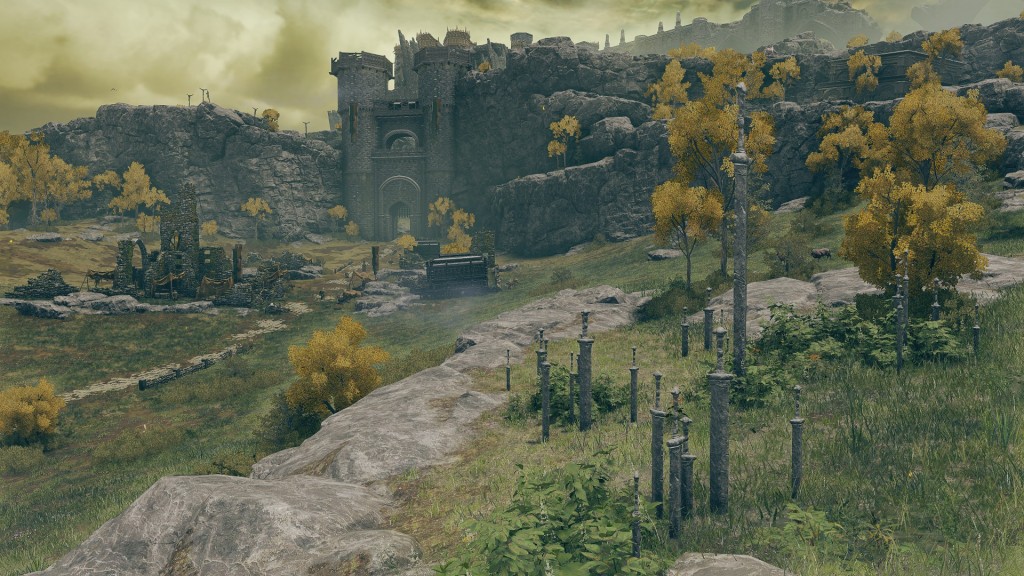
In all likelihood, Godrick agreed to grant the Cleanrot Knights passage through his land so long as they agreed to follow his chosen route down the hill. On the surface, this offer sounds sensible. Bringing an entire army suddenly to a lord’s doorstep, any commander should expect apprehension about their intentions. What if “just passing through” was a ploy to freely cross the bridge and embed themselves in the wooded crags of Stormhill, where they would be difficult to upend? That would be a disaster for the Golden. If they were truly sincere, they should have no problem heading straight down the hill before proceeding while Godrick’s army cautiously watched from atop their natural wall. Put in that way, Malenia must have conceded that this request was reasonable. And after fighting her way through Liurnia, she was disinclined to waste more time doing the same in Limgrave. Thus was her army directed past the gates, free to set out for Caelid from Site G.
Of course, Godrick never intended to let them off the hook. He used Malenia’s good faith to make her give up her leverage. Now, with every tactical advantage, the Grafted could launch his surprise assault without fear. What soldiers tailed the “invaders” to ensure they behaved as they were escorted out would be quickly reorganized to ambush them from the rear. And leading the charge was the Golden in all his grotesque glory. If his new body proved too cumbersome during this trial run, he could swiftly retreat behind the safety of Stormgate and his castle, leaving the Cleanrot Knights in the unenviable position of a quite literally uphill battle. To Godrick’s mind, this was an unlosable situation. The arrogant old man was probably itching to showcase his newfound power to the world, seeing Malenia as a steppingstone to his eventual return home. There was only one problem: he had underestimated his foe.
The sword monument details a “humiliating” battle for the Grafted, which is reflected in the ruined state of Site G. The mortuary town’s garrison was overrun, Godrick never even getting the chance to fall back before finding himself at the Blade of Miquella’s mercy. And as always when he found himself in a corner, Godrick did what he did best: grovel. Although Kenneth might be exaggerating the specifics, both he and the sword monument do agree that the “noble” golden clansman prostrated his head to the ground, essentially kissing her feet begging for his life. Such a pathetic display in front of his surviving men only further eroded his reputation if word ultimately reached the lord of Mistwood’s ears. But life before honor, Godrick was willing to lower his head again to salvage this disaster. Perhaps because she was pressed for time, or perhaps because she was so put-off by his sniveling, Malenia did spare him, the Cleanrot Knights marching off with seemingly no further issue. The Golden could live to fight another day, not that he wanted to in the current circumstances.
He fled from the royal capital under the cover of the women, shut himself in the castle in fear of Radahn, scorned Malenia, lost, and licked her toes swearing submission.
This humiliation proved one thing: Godrick’s grafted body was utterly inadequate — even with all his augmentations, he couldn’t match his rivals for the throne. This was no doubt frustrating to the irritable old man, so desperate to fashion himself as the new Godfrey. His first proper battle ended with a village in ruins, his standing in tatters, and morale in decline; hardly the glory he imagined. Worse, he couldn’t fault anyone else for failing to execute his brilliant strategies; Malenia proved that to him, viscerally and decisively. This failure belonged solely to Godrick. Still, the entire point of a test run is to see what works and what doesn’t. The Golden was now aware of where he was lacking and could rectify this for the future. So, what was his answer after reflecting on his current predicament? To double down.
Madness Culminates
After returning to his castle, Godrick threw himself into grafting, continuing to toil away at new improvements to this day. The demigod evidently determined that his failure was not adding enough limbs. He needed to engineer the perfect body. Of course, he couldn’t just continue cannibalizing his own forces. But with the arrival of the Tarnished to his shores, Godrick gained a treasure trove of “branches” to pillage. As Kenneth warns, the Grafted’s men are hunting Tarnished, which we witness throughout our travels. Numerous have been crucified across his territory, some incredibly recently if the soldiers resting beneath them are any indication. And while the condemned seem no different from corpses during the day, their moans of agony haunt every night. They may be broken, battered, and exhausted, but these sinners yet live, because they are Tarnished. Most likely, the crucifixions are intended to keep the immortals in limbo until grace finally abandons them, leaving their limbs ripe for harvest. Regardless, Godrick has clearly ramped up operations, earning “limb-grave” its name.
Beware of Godrick’s Tarnished hunters. They think of you Tarnished as nothing more than offerings for repulsive grafting…
This single-minded obsession with grafting extends to beyond himself. Besides the lesser scions, someone has modified all the stormhawks in Stormveil Castle, lopping off their feet and grafting on thin blades in their place. The intention was to make them warhawks, enhancing the birds’ reach while simultaneously imposing minimal burden on their flight capabilities. Some were additionally muzzled with a device for sparking explosions. This was all done against the raptors’ will, based on the chains restraining, and marring, their wings. The hawks on the far side of the bridge to Limgrave’s Divine Tower, outside vicinity of the castle, conversely remain untouched. In short, the humans systematically rounded up and converted those within the castle walls into warhawks, and likely fairly recently too. Indeed, it is hard to imagine such horrors performed during Godfrey’s stay at the castle, given his respect for their old king. That leaves Godrick, who already shows little concern for his own troops — why show any more for their pet birds? And with his army already so depleted, outfitting the hawks for war isn’t a surprise.
Godrick’s desperation to make up the difference between him and the other demigods couldn’t be more apparent. At the back of Stormveil’s rat-infested food stores hide two chests containing the Godskin Prayerbook and Godslayer’s Seal. Recall that the power of the black flame is highly effective against demigods and similarly holy persons. This includes Godrick, hence their placement in such a random location, locked behind an imp statue seal. Even so, the castle’s continued possession of such dangerous items reveals the intent to utilize them in the future. However he managed to acquire them, Godrick sees the black flame’s potential as a trump card against his rivals despite the risks to himself. And once secure from the hands of any possible traitors, it functions as simply his secret weapon. Clearly, the Grafted will resort to anything to win, even heresy.
He isn’t the only one scrounging for anything to get an edge in this competition. Nobles across Limgrave are digging up graves or crumbling ruins in search of more power — with even those willing to indulge in Godrick’s method searching the Fringefolk Hero’s Grave. Circumstances certainly aren’t inspiring bravery. Only with the help of the soldiers have the weaklings organized search parties around Stormhill or along the highway where they are safest. Even then, they are still easily cowed, and for good reason. One encampment on Stormhill is notable for the number of nobles’ dogs yet distinct lack of nobles. There are two of their corpses, but the ratio of noble-to-canine is typically about 2:1. So where are their masters? Simply follow the dirt roads. Head east to Saintsbridge, and we witness the aftermath of a pumpkin head gone berserk, his noble party littered among the wreckage. En route west to Stormveil, we come across a wooden cart pillaged by raiders, one aristocrat dead on the spot and another hiding in the bushes nearby. They can’t even make a short trip back to the castle without an escort. They need some form of strength to not be dead weight.
Power is certainly necessary, considering the army’s general incompetence. For despite his loss to Malenia, Godrick never stopped warring. Even if he himself would no longer take the field until perfecting his body, the Grafted wasn’t going to leave his military idle. Rather, with the other demigods at a standstill, now was the time to act. Simply look at Godrick’s war room. The chamber is designed to seat eight army officers at a long table as well as another three superior officers at a smaller table on a stage above them. Godrick definitely sat at the center thanks to the nearby chest storing the Mimic’s Veil he stole, not to mention the Erdtree relief in the backdrop. The books and papers scattered across the tables likewise affirm the assembly’s purpose to report and discuss logistical and strategic planning, the Banished Knight on guard highlighting their importance. This is where all decisions concerning the Golden’s territory and military have been made, including a disastrous campaign into Liurnia.
We can see the aftermath of this failed invasion everywhere. First, marionettes have been deployed to the “front line” along the highway linking Stormhill to the Academy Gate Town. Behind this tireless bulwark, Cuckoo foot soldiers rest amongst the crumbling ruins blocking the road, with them a corpse carrying stormhawk feathers. Beyond is the chokepoint beneath the Highway Lookout Tower, Stormveil weaponry littering the battlefield. Past that, another corpse sits on the cliff overlooking Raya Lucaria from behind the Church of Vows — too late to regret breaking that harmonious bond with the sorcerers. Looking to the west, the Cuckoos have set up a camp to intercept any traffic from Stormveil. The reason why is evident in the preceding lake. There, a disguised silver tear will transform into a grafted scion when provoked. The estoc associated with the noble elite is also purchased from both the nomadic merchant and Patches in Liurnia, relatively close to the castle. Each of these examples demonstrate the Limgrave army’s past presence in the area, with some still lingering around.
Exploring Cliffbottom Catacombs, behind the front line, we will inevitably come across a number of enslaved Omens. One in particular is giving respects to a noble’s page, whose ashes are enshrined on an altar. Defeating the boss of the catacombs also rewards us with the ashes of a Kaiden sellsword, who are overwhelmingly in Godrick’s employ. Taken together, it is obvious that these are a remnant of the Grafted’s forces, gone into hiding after a rout. Trapped in the middle of enemy territory with no avenue for escape, there was no better option than to find shelter. Perhaps they hoped to wait until the army returned and pushed back the Cuckoos. But whether due to prior injuries in battle or the catacombs’ automated defenses, none but the Omen slaves have ultimately survived.
We witness something similar at the Lakeside Crystal Cave on the opposite end. Inside are signs of an army encampment, though a collapse in the cave has demolished or buried much of it — the rockslide dragging numerous bodies down to the bottom of the chasm. Whoever didn’t die from the fall did perish to the local serpent snails or other threats, such as the demi-humans who most recently moved in to make the place their den. As to who these fallen soldiers were, a chest in the camp stores the Spear Talisman featuring a standard soldier of the Shattering. Since the figure lacks any distinctive features like the Cuckoos’ iconic feather ornament, it is presumably a soldier of Godrick specifically. We do find Stormveil weaponry stored in another part of the camp, and one of the fallen corpses carries a Cerulean Amber Medallion. In fact, as soon as we enter the cave, we are met with a chest containing an arteria leaf, betraying the owner’s interest in even the smallest things related to the Crucible and Godfrey’s reign. In short, this is another remnant of Godrick’s defeated army hiding out from deep into enemy territory.
Things haven’t gone smoothly with the actual pullout either. Heading to the bridge to Stormhill from Liurnia, we pass a detachment of Cuckoos exhausted on the side of the road. Continuing down the narrow causeway, we follow a trail of their bodies to a troll, the coffin carriage he was chained to precariously teetering over the edge of a collapsed bridge. The giant belongs to Godrick’s army based on the Treespear stored in the carriage. Recall that the spear is employed by Leyndell’s royal guard, someone who might feasibly sympathize with the Golden’s cause enough to abandon his duty to Morgott and join the traitor in his flight from the capital. Indeed, this royal guardsman wouldn’t be alone, as there is an Erdtree Sentinel taking part in the Tarnished hunts; the tree guard proudly parades through a “forest” of his apparently many victims in front of the Church of Elleh. Meanwhile, one of Godrick’s knights uses Golden Vow, implying that he too originates from Leyndell. With them in consideration, the Cuckoos must have been chasing after one of the Golden’s carriages.
To summarize, Godrick recently launched an incursion north in the likely hopes of securing his path back to Altus. This campaign went so poorly that they couldn’t even secure a foothold in southern Liurnia, east or west. Instead, the Grafted’s forces simply scattered in the chaos. Those who weren’t stranded in remote corners of the lowlands made their way back while cleaning up the aftermath. But while trying to bring their dead back from the battlefield, Godrick’s forces found themselves hounded by the Cuckoos. Their harassment ended in a fateful encounter on the bridge. Perhaps due to the tethered trolls stomping about, the infrastructure collapsed, sending who-knows-how-many into the ocean below; almost along with the carriage. One of the oversized mules managed to escape this fate and, cornered, has been staving off the Cuckoos ever since — the soldiers momentarily letting up. Still, with the loss of a bridge, any chances of rescue have been cut off for the foreseeable future.
In all fairness, much of the blame for this catastrophe can be laid at the feet of the war room. Even without a demigod to face, Godrick authorizing a campaign when he was still unsatisfied with his physical state is a questionable choice, to say the least. The decision becomes all the more baffling when you factor in the army’s struggle to maintain its current holdings. Some of these losses are outside their control. The Waypoint Ruins are such due to the unfortunate crumbling ruins of Farum Azula falling upon the location, forcing residents to abandon the town. The same might be said of Summonwater Village, a victim of the sudden and unexpected takeover by Deathroot. However, in the vast majority of cases, Godrick’s army has simply proved itself incapable of handling a given situation.
Traveling down the highway from Stormgate, we cross paths with a convoy escorting a coffin carriage in the opposite direction near the Waypoint. The greataxe collected from the carriage affirms that these nobles and soldiers accompany their fellows fascinated with Godfrey. But what is behind so many deaths to transport? Heading only slightly further along, we have our answer. For a little off the side of the road, a noble lies dead along with a handful of demi-humans, his small camp set ablaze — just beyond that, a number of soldiers battle more of the barbarians. In other words, Godrick’s forces have been trying to cull the monsters wreaking havoc in the southern countryside, and evidently failing. This struggle is all the more humiliating when you consider where the convoy is headed. Their path ultimately leads back to Site G, which the army continues to use as a camp. Already the ruins park two coffin carriages storing a generic flail and a Lordsworn Greatsword, meaning that the convoy isn’t the first to bring Godrick’s men back in metaphorical body bags.
The situation is even worse on the Weeping Peninsula, where the slaves have coordinated rebellion. Weary from all the abuse, the misbegotten are rising up, proud of the racking body count. They string up bodies, throw them on pyres, and torment the last survivors. In the latter case, we see that some misbegotten have decided to give their abusers a taste of their own medicine, locking them in the Morne dungeon for torture. If the spirit of one terrified noble is to be believed, this may end with the “monsters” devouring them — we do come across a hefty amount of crawling carrion in the vicinity. For the lion hybrid among them, this uprising is an opportunity to take the castle’s legendary sword, seeming to slaughter every troop protecting the hero’s grave to get his hands on the buried treasure. However, the revolt isn’t restricted to just Castle Morne but extends to as far as Morne Tunnel, showing thorough planning. Their ire is mainly aimed at the nobles and soldiers. Persons who were in similar positions of subservience and never lorded over them, like miners or dogs, go ignored.
… Ahh, help me. I am a noble. Once I am eaten by them, those lowly hybrids, I will also be eternally… Ahh, anything but that, don’t corrupt me!
While a fine outlet for their long-simmering resentment, it has compromised Godrick’s foothold in the region. Edgar is woefully unprepared for this conspiracy that brewed right under his nose, futilely choosing to stay and hold down the fort while smuggling out his daughter. Irina seemed to be tasked with joining a coffin carriage convoy back to the mainland, where she could appeal for reinforcements with proof of the necessity. But while passing through the valley, they were beset by a rebel ambush, Irina only surviving thanks to some loyal soldiers dragging her out of the scene on a supply cart before their deaths. Few others were so lucky. Aside from the new strays who haven’t ran off for a puddle of water, only a troll and single soldier remain on site, exhausted and demoralized. If not for our timely arrival, blind Irina would have no one to turn to, though our assistance doesn’t stop the hybrids from inevitably coming for her.
This embarrassment might have been prevented if they were better equipped to the task, but what meager smithing stone is available from the region is no longer flowing into their smithies either. Although the Limgrave Tunnel continues to operate, the adjoining mining town has been destroyed, the name Dragon-burnt Ruins betraying the perpetrator. Indeed, Agheel has made the surrounding area its territory, with trees and bushes alike all burnt to a crisp. The dragon’s presence has likewise left the outflow from Murkwater unattended, causing the field to flood into a broad lake that waterlogs even the ruins. Such obstructions should make hunting down the invader raining fire from above a priority. Instead, we see the surviving nobles loiter about their ruined town with their dogs, praying the wyvern finishes them off with its flames. Some have headed into the lake, but only to dangle a few of their own on a pyre in the hopes of garnering the beast’s attention — it works. No one there has the will to actually defeat the dragon, and soldiers elsewhere are too busy as is to try.
For example, there is a search party — presumably sent from Site G — currently investigating the neighboring grove. Apparently, many soldier and supply convoys have mysteriously gone missing as of late. The party is examining the trail of wreckage from a derailed cart leading off the beaten path to Groveside Cave. Following it inside, we see that another detachment of troops had taken refuge in the cavern. Whether a previous search party or simply scouts on patrol, the man evidently decided to set up camp for the day. What they realized too late is that the place is already someone’s lair. The soldiers have been slaughtered by a wolf pack led by a stray beastman, soon to become the beasts’ next meal. From the sheer number of human and animal bones in the pack leader’s boss room, this isn’t the first time that the hunters have preyed on intruders or dragged fresh meat back to their den, hence the debris trail. This makes them likely responsible for all the disappearances.
All of this doesn’t even account for the perversions of life and death turning the golden-eyed residents into mindless Hollows. Godrick’s grip over his territory is slipping, meanwhile he is engrossed in grafting. Of course, the Golden has had bigger concerns. Just outside Godrick’s boss room lie two storage rooms. Stuffed in the back corner of the larger one is a collection of jar men, no doubt containing the meat leftover from the grafting process. But more importantly, the chamber is in severe ruin, several floors collapsed. Remains of a battle by the one-time penal colonists also litter the debris. Curiously, these same Stormveil weapons can be spotted in the aforementioned boss room, as well as the length from the castle gates to a little ways past them. In between, we encounter similar destruction. The straight path from Stormgate to Godrick is blocked by lines of defenses virtually every step of the way. How then are there battles occurring so deep behind these setups? The obvious answer is mutiny. As he has continued grafting, Godrick has been forced to contend with dissenters within his own ranks.
There are no shortage of folk at the castle who might be after his life. Gostoc is the perfect example, the conscripted citizen happy to stomp his defeated lord’s face into the pavement as payback for all the abuse he has suffered. The gatekeeper represents a myriad made miserable under the Grafted and his ilk, even as they have brought piles of body bags to peruse for new parts. Despite a grafted scion reviewing countless limbs hanging in the dining hall, the facilitators have no guarantee that theirs won’t be what gets added. The fact that an eating area is being used in this way demonstrates how little the army takes priority. Not a single luxury working at this dangerous castle. Godrick’s depraved art has become the objective at the expense of everything else. Circumstances are so bad that the corruption from Godwyn permeating the castle is rumored to be a “curse” of the nonstop grafting. No one believes that the lord is somehow making the situation better.
Resources are also an issue. We can spy a knight and his stormhawk compatriot giving their respects to the bird’s kin, apparently after dealing with the murderer caught in the act. The person in question seems to be a commoner, desperate for a few scraps of meat. Assuming the fowl in the kitchen isn’t rancid, there is no excuse for a conscript taking such extreme measures — unless, of course, his officers aren’t sharing. In all likelihood, Godrick has kept his nobles and knights loyal through this madness with substantial privileges, leaving non-key staff with even less to ration. It does appear that the soldiers subsist on meager mushrooms, so one can only imagine how starved the conscripted commoners are for a decent meal. One must question then what a few conscripts are cooking up in the kitchen, especially with the bodies out of their bags near at hand; those certainly aren’t ready for transfer to Godrick, like their counterparts in the opposite chamber linked to the dining hall. Needs must, as they say.
Needless to say, many feel trapped in Godrick’s madhouse. People can only fear for their safety for so long; at some point, enough is enough. That is why the Claw Talisman is obtained from a corpse seated atop the tall towers — a Ravenmount assassin hired to take out a high-profile individual, namely Godrick. And if the subtler approaches fail, then that just leaves open confrontation. The more measured example was probably the Crucible Knight now sealed in the Stormhill Evergaol. If he had witnessed the disgrace of both Godefroy and Godrick, the old retainer would feel compelled to speak up against this madness. He knew their beloved Godfrey’s perspective, and his fealty bought them enough silence. For his principles, he was locked away. A full-blown coup is thereby the only answer. Clearly, none outside the castle were able to get very far after breaching the gates, those already inside proving just as incapable with slaying the Grafted. Still, Godrick’s position has never been more precarious. Even now, we see Banished Knights putting down a bunch of exile soldiers. More just keep revolting.
The discontent is widespread. Foot soldiers have been strung up at the Bridge of Sacrifice, presumably for insubordination. They wouldn’t be alone, as there are a bunch more deserters hiding out in Murkwater Cave. Even if their old uniforms are filthy and tattered, they prefer getting by as highwaymen. Nowhere else do we encounter such enemies, though perhaps that is because of their ingenious hiding spot. Outside the cave, the water is tainted with rotting corpses haphazardly dumped into the ravine, hence the “murky river” (曇り川) descriptor. Moreover, a number of skeletons hang from the bridge at the rivers’ mouth, including a knight. These are soldiers belonging to Godrick’s army, not even given the decency of a proper burial. Why? The perceived injustice of their deaths is obvious from their resentment, the cursed cadavers commonly coalescing into crawling carrion. The answer must thus be the same as the aforesaid foot soldiers: insubordination — and who would look for living rebels among the dead? The Golden’s faction has desperately tried to stem a plague of desertion.
Very dirty tattered cloth hood. Equipment of foot soldier has-beens, of highwaymen.
The castle’s apparent panic might explain the location of Engvall. Recall that the knight is remembered as a hero on the frontier for his decision to stay behind and continue his duties at Stormveil. And yet, for that, he is granted an unremarkable interment at a seemingly random, remote catacomb — or is it so random, in the Murkwater valley? Indeed, if Engvall simply died on guard duty, he would be buried much closer to home. Instead, the hero was placed in the same area as countless traitors. Was it because he was a traitor himself? Unlikely; Godrick’s men respected Engvall enough to provide him a real Erdtree Burial. In that case, perhaps he was sent out to lead the hunt for deserters and other turncoats, where he fell in the line of duty. They buried him nearby, along with possibly other faithful retainers, but couldn’t be bothered with more than a half-hearted effort for the treacherous. The handful of skeletons rising in the valley prove that the river is close enough to the Erdtree roots; what more did the filthy traitors expect? Their time was needed to look out for the next sign of rebellion.
Godrick’s army is again falling apart. Perhaps that is why we see Stormveil take such proactive measures against disloyalty. The most recent example is the incident at Fort Haight. According to Kenneth, a knight was dispatched from the castle, bringing with him an entire company. However, this wasn’t to reinforce the garrison. The fort hangs Godrick’s banner from the walls and pitches golden tents with the beast crest. While this isn’t unusual for the army’s camps, it is for a castle or fort, which tend to hang no banners and use generic grey tenting. Why go the extra mile to highlight this one’s allegiance to Godrick? Because it was previously in doubt. Kenneth makes no effort to hide his disdain for Godrick, believing himself the more worthy ruler of Limgrave — even after seeing the ruined state of his fort, he is still dedicated to find someone better suited to take over from the Grafted. The knight commander was therefore probably sent to ensure that rumors of Kenneth’s treason were squelched.
…Ah, you, is it? You have seen it, yes? The state of my fort… A kingless land really is so awful, isn’t it? I will have to search for one. For a proper and strong king I can entrust as rightful ruler of Limgrave, not the likes of Godrick.
As we hear from the man himself, Kenneth requires someone to defeat the invaders. Looking at the state of the Mistwood Ruins, Godrick’s knight is indifferent to the people’s lives if not outright responsible for their destruction. Once inside the fort, he was sure to condemn Lord Haight and all his supporters to death for sedition. But Kenneth seems to have slipped out of the fort before his capture and fled on a supply cart, leaving the spirit of a noble ally wondering where he has gone. In truth, he was only able to get so far beyond the Mistwood. After all, the resident demi-humans in the Haights’ employ have begun to rampage due to the knight taking their mother into custody during the lord’s escape. And so, they are blindly attacking humans, whether it be in their failed assaults on the fort or successful raids against passersby. This includes Kenneth, now left stranded crying for help atop a ruin while his means of escape is ransacked.
… They are raging. The demi-humans whose mother was abducted. Where are you, Lord Kenneth? That knight is mad with blood…
If we help the man take back the fort by slaying its commander, Kenneth promises us knighthood among other lavish reward upon his return. Undoubtedly, the lord holds lofty plans of glorious crusade against the pretender king in Stormveil, with us by his side when he takes the throne. However, dreams are dreams; even after going to the trouble to rally the demi-humans back to his cause, Kenneth’s plans are short-lived. By the time we arrive at the scene, the demi-humans’ mother is already dead, slain by the knight’s forces along with her children who stayed behind defending the fort. When Kenneth and his reconstituted army inevitably discover this fact, everything comes crashing down. The furious demi-humans again become hostile, leaving the proud Haight standing there — lord of a fort devoid of retainers. Forget making us his knight, the aristocrat’s chances of challenging Godrick went up in smoke.
The whole affair proves that Castle Stormveil is sensitive to any report of treachery. And while they might have been able to nip the problem in the bud in this case, the numerous other incidents all across the realm show that they lack any actual handle on the situation. From the moment we first set foot in Limgrave, we are watching the destruction of the traditionalist faction in real time. Godrick has allowed morale to rot from within for too long. With no accomplishments to his name and no obvious path forward back to Leyndell, who is surprised to see many try to replace the Grafted or abandon the cause altogether? Godrick’s only excuse is that he was dealt a bad hand, forced to work with a lack of resources and small pool of talent. But even if the soldiers are to blame for their most recent military defeats, who is the fool that keeps misjudging their aptitude to the task? At the end of the day, it is the demigod sacrificing his existing talent to augment himself, creating a culture of abuse furthering that rot.
Of course, it hasn’t helped that they were being undermined from within. Behind another imp statue seal at Stormveil Castle hides an armory, countless weapons surrounding a lone smith huddled over his anvil at the fireplace with the Iron Whetblade. With his corpse sits two exile soldiers, resting. From what? Apparently their most recent kills, two other corpses in the corners of the room behind them. One carries the Hawk Crest Wooden Shield indicative of a warrior who yet remembers Stormveil’s old allegiances; the other, the Miséricorde employed by the military doctors in service to Mohg. It is easy to imagine both parties working together to undermine Godrick by murdering the blacksmith, only for the Golden’s loyal retainers to rush over and catch them in the act. And after immediately dispatching the traitors, the area was sealed off from any more unsanctioned trespassers, allowing them to catch their breath. But that still leaves the question: how did a servant of Mohg manage to enter the castle, and why?
In truth, the doctor likely signals a more pervasive threat. The Lord of Blood’s following is felt throughout Limgrave. Besides the presence of another military doctor like Varre or the Bloody Finger Nerijus, signs of his minions are found all over Stormhill. For example, we can loot bloodroses from beneath a poor soul crucified at the graveyard south of the castle, implying this hunted Tarnished to be one such acolyte. More of the roses lie eastward on a corpse inside the Death-touched Catacombs, near the lever to open the tombs’ core. Hanging over a ledge in the preceding chamber lays another body with the Uchigatana, an otherwise anomalous Eastern weapon known for its bloody slashes. In all likelihood, these two were more acolytes, pursuing the injured Black Knife assassin hiding in the core. She does possess the Assassin’s Crimson Dagger, the talisman resembling a bloody blade that restores bloody vitality with each bloody lethal strike — a perfect complement to their Lord’s arsenal. Unfortunately for them, skeletons have no blood, and they were unable to finish off their quarry.
Without a doubt, Mohg’s cult is running amok on the frontier. And with that in mind, the doctor probably used his public persona to infiltrate Stormveil on the others’ behalf. After all, Varre has somehow acquired inside information about Godrick, intel a fellow Bloody Finger on the inside could easily have fed to him. At the same time, a medic must be in high demand at the castle. With how often the garrison is losing limbs to their lord, they would be desperate to have a proper doctor to treat them. Even if Godrick’s faction was aware of the Bloody Fingers, it is unlikely that the doctors in white are categorically identifiable. This makes it easy for the one doctor to slip in as a spy. While tending to the soldiers’ wounds, he could pass on key information for his fellows, as well as add to their number.
Indeed, the knight sent to Fort Haight is repeatedly described as blood-crazed, performing various blood skills. This includes the Bloody Slash normally granted by Mohg. An ostensible soldier of Godrick has fallen down the proverbial rabbit hole, enthralled with powers from an enemy faction. And it might not just be the commander, as others there also possess bloodroses on their corpses — though that may just be due to the flowers now growing there. Regardless, what was his gateway to this previously unknown world? Perhaps the good doctor tending to everyone’s wounds back home. Surely his familiarity with blood is nothing suspect, and some innocent advice couldn’t steer anyone wrong! The doctor was slowly converting the army to the ways of Mohg, whether they knew it or not. He just needed them to get a taste, and they would fall on their own. After that, it was just a matter of playing on their disillusionment with Godrick. Perhaps that was his motive for collaborating with another, nostalgic for the days before the Golden Lineage took over. In the end, both overplayed their hands.
Regardless, the fact remains that the resident demigod is the cause of his own self-destruction. Godrick’s resilience in the face of this deteriorating situation is commendable, but it may just be that he sees the end in sight. As Varre alludes, the old man has been offered a whole wyvern to graft. However his men managed to hunt such a creature, it is now impaled in his courtyard and ready to be dissected for parts. A massive dragon is sure to provide excellent enhancements, as proven during Godrick’s boss battle. The Golden is just as enthused about the prospects. He resonates with the creature — a descendant of a greater ancestor, forever living in the shadow that forefather. But with so many weak parts, he hopes to become a greater whole. And then, the rightful king will sit upon his proper throne. The delusional fool still clings to their shared dream of a glorious homecoming. Glory and victory would be there at hand — if not for the insolent intruder interrupting his initiative.
… Dragon who is a descendent like me, thine power will surely… boost mine…
Godrick’s opinion of us couldn’t be lower. A Tarnished who arrogantly challenges him, the Golden Ruler? We should be prostrating ourselves in the face of his majesty. We are unworthy even of becoming his branch. The Grafted was punished before for making light of his opponent, but with the Tarnished it is different. He looks down on us as worms, yet it is he who has been feverishly hunting for our power. Godrick cannot be ignorant of the meaning behind the Tarnished’s arrival. The Greater Will has forsaken the demigods, him included. Instead, it has chosen some upstarts with no roots in these Lands Between as the heirs apparent. All the toadying, the scheming, the grafting; everything the Golden has done was for nothing. That reality is the greatest insult, one proud Godrick has nevertheless internalized; no matter his denial, the jealousy bleeds through. Maybe that is why he uncharacteristically refuses to back down when placed on the back foot. We are the one person he will never bow his head to, the final humiliation he cannot allow.
If we fail to finish him off first, Godrick lops off his own monstrosity of an arm mid-battle, hurriedly grafting the dragon’s head in its place. The sudden surge in power turns the unhinged senior downright maniacal, laughing as he tries to burn us to ash. This is his moment to prove to Godfrey that he is the true successor. Nothing else matters in the heat of this battle. The man is so lost in delusion that he sputters off about their eventual return to Altus with his dying breath. The reality is that, at full strength, he is roughly on par with Godefroy. But torn apart limb from limb, Godrick is left with nothing but his original, small torso. His Great Rune empowers its owner in various ways, but never substantially in any; a centerpiece uniting all others, but only a shadow of their individual strength — truly, there could be no better rune for Godefroy to claim and Godrick to inherit. They borrowed power that was never their own, a poor substitute for their personal weakness. Their place on high was never to be. And so, King Godfrey’s sorry excuse for a legacy dies as he lived: a feeble old man, face planted in the dirt.



